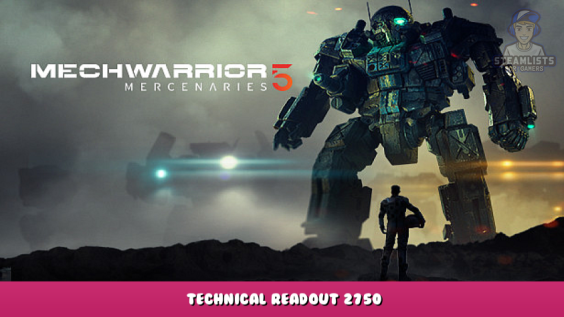
“The most complete equipment reference book published to date.”
—July 15, 3025
New Avalon Herald
This Technical Readout lists the capabilities and history of the most common pieces of military hardware used by the major houses of the Successor States in the year 3025. Focusing on BattleMechs and Aerospace Fighters, this volume also discusses important combat and support vehicles as well as the rare Land-Air-Mechs. In all, 55 ‘Mechs, 15 fighters, 3 LAMs, 4 DropShips, and 12 Vehicles are described and illustrated, making this volume a must for all, from historians to MechWarriors.
Credits
Illustrations:
Duane Loose
David R. Deitrick
Writing:
Blaine L. Pardoe
Boy F. Peterson, Jr.
Anthony Pryor
Dale L. Kemper
Shaun Duncan
BattleTech Statistics:
L.R. Butch Leeper
L. Ross Babcock III
Jordan Weisman
Forest Brown
Kevin Stein
Editorial Staff:
Editor-in-Chief
L. Ross Babcock III
Senior Editor
Donna Ippolito
Editor
Todd Huettel
Production Staff:
Production Managers
Jordan Weisman
Karen Vander May
Art Director
Dana Knutson
Graphic Design
Jordan Weisman
Cover Art
Dana Knutson
Typesetting
Tara Gallagher
Layout and Pasteup
Tara Gallagher
Dana Knutson
Todd F. Marsh
John Tylk
Additional Help:
Dave Wylie
Butch Leeper
Clare Hess
Publisher:
FASA
Product Code:
8603
Published:
1986
ISBN-10:
93178784X
ISBN-13:
978-0931787843
Introduction
The latest in a series of reference books describing the equipment and material of war in the Inner Sphere, this volume focuses on the BattleMech, the principal weapon of the Succession Wars. Included are 55 different ‘Mech classes, with a brief overview and capsulized battle history for each. In addition, the feats and foibles of some of the more notable MechWarriors who have piloted each model are mentioned.
LAMs, AeroSpace Fighters, DropShips, and a few vehicles are also covered in the same detail. While it is beyond the scope of this book to include every known war machine, it does cover all the major classes and models in use today. Both historians and students of history will find this compilation a handy and invaluable reference work.
The Technical Readout is not meant to be read from cover to cover in one sitting, however, but rather to be consulted as the need arises. The entries are divided into chapters according to their class, which allows for quick reference as well as for comparing and contrasting the types of ‘Mechs, aircraft, and vehicles. Also included for each entry are the names of the main component manufacturers and the combat statistics.
Though the editors of this book have made every effort to provide complete and accurate data, not all information is verifiable in this age of near constant warfare and deteriorating technology. Moreover, the Successor Lords often do their utmost to gain a military advantage by maintaining their secrets. These realities, combined with the fact that much of this information has been gathered from all across civilized space and from sources that are often biased, may at times produce contradictory statements. Though the editors have done their best to weed out outright lies and fabrications, some of this material may perhaps always remain ambiguous.
Light ‘Mechs
Light ‘Mechs range in weight from 20 tons up to but not including 40 tons. Rumors abound of ‘Mechs weighing in at less than 20 tons, but no hard data on such models was available at the time of this printing.
The most inexpensive BattleMechs, lights are the second most common type on the battlefield today. Even the lowliest unit and garrison usually sports at least one light ‘Mech, and the class can be found on every known world.
On the battlefield, light ‘Mechs are used mostly in reconnaissance. Their above-average speed and jump capability usually allows them to skirt heavy fighting to get a look at enemy formations. Some innovative commanders use light ‘Mechs as deep penetration units for getting behind enemy lines to disrupt supply and communications in rear areas. Special laser rangefinders on some lights also allow them to act as forward observers for artillery and even for other ‘Mechs.
Whatever their assets, light ‘Mechs must still stay out of the way of their larger brothers. Even in numbers, they are no match for heavier ‘Mechs.
LCT-1V Locust
Mass: 20 tons
Chassis: Bergan VII
Power Plant: 160 LTV
Cruising Speed: 86.4 kph
Maximum Speed: 129.6 kph
Jump Jets: None
Armor: 1/Star Slab
Armament:
- 1 Martell Medium Laser
- 2 SperryBrowning Machine Guns
Manufacturer: Bergan Industries
Communications System: Garret T10 B
Targeting and Tracking System: O/P 911
Overview:
The Locust was one of the most produced and common BattleMechs of the fallen Star League. Bergan Industries began production of the ‘Mech at eight of their facilities in 2499, and was still in peak production when the Star League fell several years later.
Several variants of the ‘Mech have been produced and modified over the years, creating quite distinct versions. All modifications involve upgrading the Locust‘s firepower.
Capabilities:
The Locust was originally designed as a light and fast recon vehicle, a role it has fulfilled well for both the old Star League and the later Successor States. Lightly armed and very mobile, it offers fast recon ability as well as quick strike capability. The Locust of 3025 retains these features, but in many cases also acts as a frontline ‘Mech.
The ‘Mech’s weakness is its size. Though it often packs a great deal of firepower, many Locusts do not have enough heat sinks to be able to use all their weapons effectively.
As speed is one of its major assets, the LCT-1V is often placed where the front is fluid, as it is quick enough to respond to a possible enemy breakthrough. More often, however, the Locust must fight a holding action until larger, better-equipped ‘Mechs can arrive.
It is the rare MechWarrior who enjoys piloting a Locust for any length of time. It is currently the smallest of all ‘Mechs used and thus is outclassed by just about every other ‘Mech on the field. Lacking the jump jets and hands of other smaller ‘Mechs, the Locust is limited in close firefights or in ‘Mech -to-‘Mech combat.
As a direct hit by almost any weapon on the battlefield can destroy or quickly cripple a Locust, it is usually deployed in groups of three, which then have the ability to encircle opposing ‘Mechs. Many large ‘Mechs that wander off in battle have fallen to such an attack.
Battle History:
During the First Succession War, many commanders of the day were still using the tactics of warfare developed over the past 200 years of the Star League and the Reunification War. As House Kurita forces drove onto the Davion world of New Avalon, the Davion generals saw that the time had come for bolder tactics.
General Kessem of House Davion found his forces dug into a stalemate confrontation with Kurita forces on the world of Ludwig. In a desperate gamble, he quickly reorganized his troops to form five lances made up almost totally of Locusts and other fast-moving units. In a bold attempt, he ordered these ‘Mechs to attack the weakened front of the Kurita border. Davion losses were staggering, but once the ‘Mechs had penetrated the Kurita lines, they moved quickly to the rear area.
The Locusts themselves did not pose a threat, but they did manage to pull several crack Kurita units off the front line to search them down. This allowed General Kessem to mount a strong counter-attack that slowed the fall of Ludwig by several months.
In more current battles, House Steiner engaged House Marik on the world Callison in 3020. Elements of Marik Militia’s 10th Regiment were supporting several recon lances composed of Locusts and their variants. In the city-fighting at Rolso on Callison, these units more than proved their worth by their ability to navigate narrow streets and play havoc with the infantry in the nearby buildings.
During the Davion-Kurita battle over Royal, House Davion saw Locusts at their best and worst. On the good side, several all Locust detachments from the 8th Regiment of the Deneb Light Cavalry managed to flank Kurita lines and caused considerable destruction and confusion in Kurita rear areas. But this disruption did not prevent the almost complete annihilation of the 3 companies of 10th Deneb Locusts who blundered into an ambush of Kurita Heavy and Assault Lances.
Another notable engagement involving Locusts was an attack by Helmar Valasek against a small Kurita garrison on Porthos in 3024. In that engagement, a bandit Union Class DropShip slid past the fighter cover and disembarked several fast combat lances consisting of Locusts, Wasps, and Stingers. In a lightning attack on an arsenal, the bandits seized the supplies they had come for and escaped offworld. Though the Kurita garrison was well-defended, its ‘Mechs were too slow to pursue the attacking Locusts.
Variants:
The prototype Locust LCT-1V, with its medium laser and machine gun armament, is the most common of the class, accounting for more than 75 percent of the still-functioning Locusts on Successor State battlefields. Several short-run production prototypes were later introduced, and several modifications also appeared after the start of the First Succession War.
Model 1S supports less armor and carries two SRM two-packs, as well as 50 rounds of ammunition and a Martell medium laser.
The Model 1M Locust reduces its armor and carries two LRM 5-packs, 24 rounds of ammunition, and the popular Martell medium laser. This version is used mainly by House Davion’s Ceti Hussars.
Model 1E is the Locust variant least produced and least resembling the others. Reducing its armor in favor of more weaponry, the 1E carries two arm-mounted medium lasers as well as two small lasers.
Notable ‘Mechs and MechWarriors:
Lieutenant Martha Maveries
Lieutenant Maveries is currently assigned to the recon lance of the 32nd Lyran Guard’s support regiment. Maveries is a tall, thin woman whose cheeks are scarred heavily from a childhood accident. She pilots a Locust named The Stomper after her actions in a battle in the city of Shull on the planet Alexandria. In that engagement, Maveries became famous for stepping on small hovercraft and other vehicles defending the city.
MechWarrior George McPhearson
Attached to House Davion’s Capellan March Militia, McPhearson commands a light recon unit in the regiment. He has turned down several opportunities to pilot larger ‘Mechs in favor of his Locust, Wanda’s Wonder, which is named after his sister, a MechWarrior lost in the battle for Hoan. He never refers to his ‘Mech as a Locust but rather as “a garbage can with firepower.” McPhearson is respected and well-known throughout the Free Worlds League for his fighting skill in the small ‘Mech.
WSP-1A Wasp
Mass: 20 Tons
Chassis: 1A Type 3
Power Plant: GM 120
Cruising Speed: 66.5 kph
Maximum Speed: 95.1 kph
Jump Jets: Rawlings 52
Jump Capacity: 180 m
Armor: Durallex Light
Armament:
- 1 Diverse Optics Type 2 Medium Laser
- 1 Bical SRM Twin-Rack
Manufacturer: General Mechanics, Incorporated
Communications System: Duoteck 65
Targeting and Tracking System: Radcom TXX
Overview:
The WSP-1A Wasp was the first recon ‘Mech to be mass-produced for the Terran military. Since its initial production in 2471, the ‘Mech has spread to all parts of Human-occupied space. Old Star League records show that thousands of Wasps were constructed in the four centuries preceding the Succession Wars. Though many of these have worn out or been destroyed, estimates show that more than half this total is in operation. Further, some Wasp designs are still being constructed in some areas of the Successor States. The large number of Wasps available for use should ensure that it remains among the main light recon ‘Mechs of the Successor States for centuries to come.
The Wasp design has always been used for general scouting and reconnaissance duty. Far too lightly armed and armored for battle, its speed and maneuverability can generally keep it out of major confrontations.
Capabilities:
The WSP-1A Wasp is well-fitted out for its scouting role. With a maximum speed of over 95 kph on open terrain, the ‘Mech can usually flee from most harm. With its sophisticated Rawlings 52 jump jets, it can also bypass natural or unnatural obstacles with ease. Unless the jump jets are used extensively, heat buildup is rarely a problem for the Wasp. It can, in fact, fire its entire weapons complement continuously with little or no heat problems.
The Wasp‘s armor is average for light ‘Mechs, which means it cannot stand up to much punishment. Usually two hits in the same area are enough damage to cause the ‘Mech major problems. The Wasp is armed with a Diverse Optics Type 2 medium laser placed in its right arm. A Bical SRM twin-Rack is also mounted for close-in fighting.
A major design flaw of the ‘Mech was discovered during the Reunification War (2575-2597). During the Battle of Imbros III in March 2580, the tactic of jump-kicking gained popularity. With this maneuver, jump-capable light and medium ‘Mechs could jump and smash their leg components into the head and upper torso of opposing units, hoping to cause more damage than they inflicted upon themselves. This tactic was very popular among Wasp warriors, as it improved their offensive potential somewhat. Practitioners of the tactic soon learned that most Wasps were only able to use the jump-kick once, even if the leg damage was repaired before another close combat. After performing the first or second jump-kick, the lower leg assemblies on the Wasp would actually rip away from the body at the instant of impact, leaving the ‘Mech totally immobile in the field. The problem was finally traced to the stress bars along the actuator paths in the lower leg components. The designers had never dreamed that a tactic such as jump-kicking would be developed for lighter ‘Mechs, and so had not given them the monomolecular stress-resistant material used on newer and heavier ‘Mech types. By 2610, nearly all Wasps and other light ‘Mechs were rebuilt with MMSR actuator bars, alleviating the amputation problem.
Battle History:
During the Civil War brought on by Stefan the Usurper, loyal Star League forces launched an assault at the planet Cylene IV in March 2772. Massed recon lances composed mostly of Wasps and other light ‘Mechs screened the assault. Not waiting for the major forces of the Loyalists to drop onto the planet, the rebel defenders launched a counter-offensive against the scout units. Many of the light ‘Mechs simply fell back in good order and awaited reinforcements. Some, however, were caught in front of impassible terrain, allowing the rebels’ medium and heavy ‘Mechs to decimate the units before any support could arrive. By sacrificing these Wasps and other light ‘Mechs, the main Loyalist assault force was able to drop on-planet unopposed, for the Usurper forces were scattered from their many skirmishes with the first wave of Loyalist scout ‘Mechs. The Loyalists made short work of the rebels, and the planet fell to them within four days.
In April 2796, the infamous Kentares Massacre occurred after Minoru Kurita’s assassination. Oshita’s Recon Lance of the First Sword of Light Regiment gained the ignominious honor of exacting the most civilian casualties on the population in that month-long killing spree. The Wasps of Oshita’s lance are particularly infamous for their systematic butchery in well-inhabited, hard-to-evacuate areas such as hospitals and high-rise apartment buildings. When word of the atrocities reached House Davion, its leaders placed a high price on the heads of the MechWarriors in Oshita’s recon lance. By 2801, all four MechWarriors, along with their Techs and support personnel, had been killed in combat or by bounty hunters.
Variants:
There have been five major variations on the basic Wasp design. The Davion variant simply replaces the SRM twin-rack with two small lasers and a flamer. This increases heat output somewhat, but not to serious levels. The House Kurita version increases the Wasp‘s armor at the expense of some close-range hitting power. House Liao has dropped all standard weaponry, and added one SRM quad-rack to its Wasp variant. Finally, many Wasps of the mercenary regiment Wolf’s Dragoons are equipped with six small lasers for heavy-hitting close-in fire, at the expense of any medium- or long-range capability.
Notable ‘Mechs and MechWarriors:
MechWarrior Ross Malone
Part of Cushing’s Scout Lance of McGee’s Cutthroats currently in the service of House Kurita, Ross Malone is noted as one of the best trackers in the Successor States. His mission is usually that of shadowing enemy ‘Mech forces before battle, trying to ascertain their strength and intentions. An expert in ‘Mech camouflage, Malone personally repaints his Wasp, the Nightshroud, after every campaign. As a member of the Cutthroats, he has masterminded a number of effective ambushes. Not interested in promotion, Malone intends to continue his career as one of the Succession Wars’ best scouts.
MechWarrior Jody Okigama
A member of Smithson’s Chinese Bandits, Jody Okigama is well-known for her tactic of “backwalking”, at which she has become quite adept. During combat, Okigama walks or runs her Wasp, the Dobber III, backward while continuing to fire her weapons at pursuing targets. This dexterous use of her ‘Mech has pulled her out of a number of tight situations, and helped her to tally up a score of eleven kills. That is quite an achievement for the pilot of a light ‘Mech.
STG-3R Stinger
Mass: 20 Tons
Chassis: Earthwerks STG
Power Plant: GM 120
Cruising Speed: 63.4 kph
Maximum Speed: 91.6 kph
Jump Jets: Chilton 360
Jump Capacity: 180 m
Armor: Riese-100
Armament:
- 1 Omicron 3000 Medium Laser
- 2 LFN Linblad Machine Guns
Manufacturer: Earthwerks, Incorporated
Communications System: Datacom 26
Targeting and Tracking System: Dynatec 990
Overview:
The STG-3R Stinger was the second mass-produced scout and recon ‘Mech to be completed. First designed after Earthwerks won the bid against General Mechanics, Incorporated (the designers of the WSP-1A Wasp), the Stinger was put into production along with the Wasp because of the great need for light scouts and also because of the similarities in the design of the two ‘Mechs.
In 2479, the first Stingers came off the assembly line. In the next four centuries, nearly 200,000 more units would be constructed. Estimates place the number of operational Stingers currently used by the Successor States at 5,000 or more. Indeed, the ‘Mech is still being produced in a number of facilities both in and out of the Inner Sphere.
The Stinger was designed as a scout and reconnaissance ‘Mech, although it is also used as a training ‘Mech in some MechWarrior academies, replacing the TRC-4B Chameleon. The Stinger is lightly armored and mounts limited weapons. Its speed and maneuverability, however, make it a difficult target and a tough ‘Mech to pin down.
Capabilities:
If used as its designers intended, the STG-3R Stinger is an efficient and dependable ‘Mech. It mounts an Omicron 3000 medium laser in its right arm, and two LFN Linblad machine guns on the right and left forearm. Though the Stinger‘s armor is minimal, it is considered average for light ‘Mechs. Its real defensive strength lies in its speed and maneuverability. With maximum speeds surpassing 90 kph and the powerful jump capability of its Chilton 360 jump jets, the Stinger can get itself out of most tight spots.
Overheating is almost never a problem with the Stinger design. The coolant jackets of the Linblad machine guns effectively block all heat emissions from those weapons, and the heat buildup from the Omicron 3000 medium laser is minor. Even with its jump jets firing continuously, the Stinger rarely develops heat problems.
One of the biggest complaints of Stinger pilots is the cramped cockpit space. Many times, a pilot must literally squeeze himself into the control seat, and then often cannot get out again without help from his Tech. Stinger pilots are the reverse of the knights of feudal Earth who could not mount their steeds without help from their squires because of the weight of their armor.
Battle History:
During a raid on Fallon II by elements of the Seventh Crucis Lancer in 3019, Captain Mercer Ravannion led a unit of six Stingers and Wasps in the famous “Charge of the Horde” during the Battle of Markerson. Attacking the recon lance of the elite McKinnon’s Raiders, Captain Ravannion’s horde of lighter ‘Mechs was torn to bits by the heavier enemy units. None of the damaged Stingers or Wasps were recovered, although Ravannion escaped after ejecting from his disabled Wasp. Returning to the Kurita defense area, Ravannion insisted his tactics would work on anybody other than elite MechWarriors. After the Battle of Markerson, however, no House was willing to risk more ‘Mechs on his theories.
Elements of Wolf’s Dragoons raided the Davion planet of Doneval II in 3021. During the raid, a party of cadets of the Meistmore MechWarrior Academy were training on Stingers in a deserted area of the planet, where they were ambushed by a lance of the elite Black Widow Company of Wolf’s Dragoons. Almost immediately, the cadet’s instructor was put out of action. Meanwhile, the cadets ran for cover, with only the Wasp of the Black Widow Company keeping up. It happened that the first cadet disabled was a woman to whom each of the other four cadets was attracted. Though she ejected successfully, the Black Widow Wasp was quickly upon her. As one, the other four cadets turned around to engage the Wasp, knocking it out before it could get to the girl. The cadets then picked her up, and ran into the wilderness before the heavy enemy ‘Mechs could come into range. It was said that the pilot of the Black Widow Wasp nearly died of shame to be taken by “a bunch of kids.”
Variants:
Unlike its near-sister Wasp, the Stinger has undergone relatively few variations in its career. Some MechWarriors have altered their Stingers with the help of their Techs, however, dropping items such as the twin machine guns in favor of additional armor and an additional medium laser (usually in the left arm). This variation does cause the normal heat problems suffered by many other ‘Mechs, but makes the Stinger a more potent scout.
Notable ‘Mechs and Mechwarriors:
Captain Scope Kinugau
Once well known throughout the Successor States, Kinugau foreswore his allegiance to House Kurita by joining the ‘Mech regiments of the Magistracy of Canopus beyond the Periphery. It was said he had fallen in love with the bewitching Magistrix Kyalla, leader of the Magistracy and herself a former BattleMech leader. Since then, Kinugau and his Stinger, newly renamed the Centrellan Hope (after Kyalla’s House name), have become important additions to the Canopan forces.
A veteran of nearly 50 engagements in service to Kurita, Scope Kinugau is now in charge of MechWarrior scout training in the Magistracy of Canopus. Kyalla is rumored to be negotiating an alliance with House Liao, which would make her a combatant in the Succession Wars.
MechWarrior Bors Sillader
A member of House Davion’s First Ceti Hussars, Bors Sillader has the dubious distinction of having had more Stingers shot out from under him than any other MechWarrior, alive or dead. With a record-breaking total of nine Stingers either destroyed or disabled with him at the controls, Sillader seems to be one of the luckiest warriors ever to step into battle. Regardless of his past history, Bors has no intention of giving up his MechWarrior status, and always manages to find a new Stinger to replace one lost. Now piloting the Lots-O-Luck XII, Bors Sillader plans to keep this Stinger longer than his last.
COM-2D Commando
Mass: 25 Tons
Chassis: Coventry Metal Works
Power Plant: Omin 150
Cruising Speed: 64.8 kph
Maximum Speed: 97.2 kph
Jump Jets: None
Armor: Lexington Limited
Armament:
- 1 Shannon Six-Shooter Missile Pack
- 1 Coventry 4-Tube Missile System
- 1 Hesperus-B3M Medium Laser
Manufacturer: Coventry Defense Conglomerate
Communications System: TharHes Crystal Flower RG-2
Targeting and Tracking System: TharHes Star Shark
Overview:
The Commando COM-2D was designed as an alternative to the more numerous Wasps and Stingers as a reconnaissance ‘Mech. While not jump-capable, the Commando has far stronger weapons than either of the more famous scout ‘Mechs.
Conceived by engineers at Coventry Defense during the last days of the Protectorate of Donegal, the first prototype Commando was tested in 2463 and carried a large laser on the right arm. Because the sudden heat generated by the laser was breaking down the lubricants in the ‘Mech’s wrist and hand, the weapon was later replaced with an SRM four-rack.
The Commando was commissioned by the Protectorate of Donegal in 2466, then adopted by the entire Lyran Commonwealth after the Protectorate became part of it. Though the Star League made many attempts to draft the Commando model into its own forces, the Commonwealth managed, through clever stalling and subtle lying, to keep the design to themselves. That has proved a prudent move on the part of the Commonwealth.
Capabilities:
Despite the lightness of its armor, the Commando‘s ten SRMs allow the ‘Mech to fulfill a secondary role as an emergency barrage vehicle. Though it is unusual to combine two missile systems in one ‘Mech, it prevents a lucky enemy hit from knocking out all the missile tubes, thus rendering the Commando ineffective. The idea works well. The Commando can lay down a heavy pattern of missile fire directed at one target or split his fire and shoot at two separate targets.
This design feature also has its drawbacks. The two different missile systems require two different command systems. The medium laser requires a third command system, all of which requires a much larger computer than originally planned. This is one of the reasons that the Commando‘s weight went up from the original 20 to 25 tons. Despite the difficulties, the various Lyran ‘Mech plants, especially the one at Coventry, were producing many Commandos annually.
The Commando keeps a good supply of ammo for its missile systems, carrying 25 rounds for its right-arm launchers in its right torso and carrying 15 rounds in its left torso for the chest’s six launchers.
Just because the Commando packs firepower comparable to some heavier ‘Mechs does not mean it can go toe-to-toe with them. Indeed, because of the Commando‘s thin armor, pilots must take special care to avoid exposure to enemy fire. The MechWarrior may instead use the Commando‘s firepower to let loose with a barrage at a heavier ‘Mech, and then run. He has to hope that the enemy will be too busy dealing with the damage suffered by his ‘Mech to follow too closely.
With its two articulated hands, the Commando can pick up and carry its share of cargo. It can also brawl with a slight edge against light to medium ‘Mechs that have no hands, such as the Locust and Ostscout.
If 25 tons of moving metal can ever be called stealthy, it is that for which the Commando was designed. Commandos are often dispatched alone or in pairs, assigned either to scout ahead for the enemy, or as the eyes of the retreat, gauging the proximity of pursuers. The ‘Mech excels at both.
Battle History:
Unlike other Successor States, the Lyran Commonwealth awards special commendations to scouts who perform beyond the call of duty. In the lengthy dedications of these commendations are many stories of Commandos on the battlefield.
One impressive account tells of Lewan and Cynth Tulmani, a brother-and-sister scout team in what was once Winfield’s Guards. In 3011, the unit was two regiments strong and stationed on Sevren. Poor intelligence reports suckered them into believing that the thrust of Kurita’s attack would bypass them. Many ‘Mechs, including Lewan and Cynth’s, were trapped in a mountain pass when they were attacked and mowed down by bombardment.
Upon regaining consciousness, the Tulmanis found their ‘Mechs damaged and themselves hurt and alone. Lewan’s ‘Mech was minus its left arm, and Cynth was riding a headless machine. Looking east, they could see that the capital city, their original destination, was burning. They decided to travel west toward a more distant and perhaps still intact city to link up with reinforcements or any other stragglers.
Travelling by night to avoid the numerous Kurita patrols, at last they arrived at a city still held by the Lyran Commonwealth. They arrived just in time to see DropShips of the 2nd Donegal Guards landing and mustering for a counterattack. Unfortunately, very few of the arriving offices were familiar with the surrounding countryside, and so Cynth and Lewan immediately volunteered their services. With very little repair to either themselves or their ‘Mechs, the two scouted the advance of the 2nd Donegal Guards.
Since that time, the scouts of Winfield’s Brigade wear on their lapels the green tartan stripe of the Donegal Guards, in honor of the Tulmanis’ courage.
Variants:
Being such an old design, the Commando has seen many variants. Some attempts, such as reviving the use of a large laser on the right arm or using an autocannon, have led to only mixed results.
Only one variant is taken seriously by Lyran Commonwealth commanders. Designated COM-3A, the ‘Mech carries a six-tube missile system on its right hand and a flamer added to its right arm. Extensive testing of the variant has been done of late, raising the possibility that current Commandos might be so refitted.
Notable ‘Mechs and MechWarriors:
Captain Bono Duganmare
Commander of a company in the 22nd Skye Rangers, Duganmare has the unenviable task of training inexperienced warriors. Quiet yet demanding in his silver Commando, The Death’s Knell, the captain moves about the training field, cajoling his men to work harder. If that approach does not produce results, he resorts to a trainee ‘Mech’s backside instead.
Though concerned about his men’s welfare in battle, Duganmare knows enough to let them do their jobs with great tactical expertise. Not a flashy hero with many kills to his name, he nevertheless has earned the respect of both his men and of his superiors, who treat him like a valuable resource. Some recent rumors suggest that he will head up the first Commonwealth Military Academy on Tharkad.
MechWarrior Seychelle Miladue
A member of the 14th Lyran Guards, Seychelle was born and raised near the sea of her home planet, which gives her a special understanding of the possibilities of using water as cover for a ‘Mech. She submerges her sea-green ‘Mech as though water were its natural home. This often allows her to obtain enemy information that her less aquatic fellow scouts might miss.
JVN-10N Javelin
Mass: 30 Tons
Chassis: Duralyte 246
Power Plant: GM 180
Cruising Speed: 67.3 kph
Maximum Speed: 95.9 kph
Jump Jets: Rawlings 95
Jump Capacity: 180 m
Armor: Star Guard I
Armament:
- 2 Arrowlite SRM 6 Racks
Manufacturer: Stormvanger Assemblies, Light Division
Communications System: Garret T10B
Targeting and Tracking System: Dynatec 128C
Overview:
The JVN-10N Javelin is one of the newer recon vehicles used by the armies of the Successor States. First produced in 2751, the light ‘Mech still had not been entirely integrated into many ‘Mech regiments by the beginning of the First Succession War in 2786. Because of this, many combatants were caught off guard when it appeared on the battlefield. House Davion took a particular interest in the Javelin‘s development, introducing them into many recon lances. Today, after centuries of Succession Wars, the Javelin has come to be known as a reliable scout ‘Mech.
The Javelin‘s main function is reconnaissance, though it is also used extensively in ambushes. In that regard, the term “sneaky as a Javelin” has become widespread among MechWarriors throughout the Inner Sphere.
Capabilities:
The Javelin is fast and maneuverable, its Rawlings 95 jump jets providing it with enough thrust to leap as high as 180 meters at one time. With these movement capabilities, the Javelin can avoid having to engage heavier ‘Mechs.
The Javelin has several disadvantages common to the design of a recon ‘Mech. For example, as its armament is designed only for short and medium ranges, a Javelin pilot cannot reply to long-ranged fire, and so must try to avoid being caught by it. The ‘Mech’s two racks of Arrowlite SRMs are devastating at short range, however. Having come unexpectedly under concentrated missile fire from a lance of Javelins, many light and medium enemy ‘Mechs have paid a heavy price for poor scouting.
With its ample missile ammunition supply, the Javelin does not run out of ammo as quickly as other ‘Mechs, making it useful in rear-guard or holding actions. Once its missiles are spent, however, commanders usually try to pull a Javelin out of action because its light armor makes it a poor hand-to-hand fighter.
The Javelin design has one other, less-known problem. With its torso-mounted missile racks and ammunition supply, the ‘Mech’s center of gravity is too far forward when it is at full-load displacement. This tends to make the machine somewhat top-heavy and prone to falls while moving at high speeds in difficult terrain. (Treat this as a +1 die roll modifier for falling whenever a Javelin is running through woods, rough terrain, or rubble.)
Battle History:
During the bloody Battle of Kentares IV in March of 2796, Bunk’s Recon Lance of Rejold’s Battalion, Davion’s Second Crucis Lancers, awaited the arrival of Kurita forces, with orders to send immediate warning of their approach. As the enemy advanced, the three Javelins and one Wasp of Bunk’s lance signaled to the Davion headquarters, then waited in covered positions.
After the enemy had passed by, Bunk’s Lance rose up and bombarded the rear units of the Kurita ‘Mechs, destroying one Phoenix Hawk and heavily damaging two others. Bunk’s Lance then jumped out of position, pursued by more than a company of the enemy. Using leapfrogging tactics, the Javelins kept up a harassing missile fire until they were in support range of heavier friendly units.
Javelins also played a major role in the famous battle of Waterhole Number Nine during the Second Battle of Cylene II in December, 3002. In that battle, the recon lances of House Davion’s Fourth Deneb Light Cavalry were hidden in a moderately sized recreational lake known as Waterhole Number Nine. Composed mostly of Javelins, these recon lances were put in standby mode while they waited under 30 meters of water for the rest of the Davion forces to pull back from the advancing Kurita army. With their heat signatures hidden by the deep water, the Davion recon lances went undetected until the heavy ‘Mechs of Kurita’s assault regiments entered the lake to begin attacking the Davion defense line, some 400 meters away. Suddenly, Kurita ‘Mechs started collapsing into the water amid huge explosions as the Javelins‘ missiles hit them at point-blank range. At the same moment, the Davion land forces counter attacked, routing the enemy, who took many losses. Shortly after this encounter, Kurita forces evacuated Cylene II.
Variants:
One Javelin has gained some acceptance in the Successor States. Known as the Fire Javelin, it mounts two Diverse Optics Type 20 medium lasers in place of the SRM racks. The extra tonnage saved by dropping the heavy missile launchers enables the Fire Javelin to mount the armor of a medium ‘Mech on its light-‘Mech chassis (usually upgraded to a Duralyte 446 for this variant). This ‘Mech’s only disadvantage is the heat buildup that occurs if the pilot attempts to use the Javelin‘s jump jets at the same time he is firing the medium lasers.
Notable ‘Mechs and MechWarriors:
Lieutenant “Wildman” Bill Wilkes
Commander of Wilkes’ Recon Lance of Macintyre’s Battalion, Fourth Deneb Light Cavalry, “Wildman” Bill (as he insists on being called) has cheated death hundreds of times during the famous ambushes he leads in his Javelin named the Hi, There! Although grudgingly admired because of his successful battle tactics, most MechWarriors also dislike Wilkes for being a swaggering egotist. Davion MechWarriors nevertheless compete to join his recon lance, because they know that if there is any action around, “Wildman” Bill will find it.
MechWarrior Sir Androch Meister of New Sharon
Meister is an unusual MechWarrior to be sitting in the control chair of a Javelin. Born into the House Steiner hierarchy, he forced himself into the Second Battalion of Winfield’s Brigade, choosing recon work as his specialty. Since his acceptance, he has proven himself an excellent ‘Mech Pilot and scout, with three kills already to his credit. There is talk that he will soon be promoted to the head of his own recon lance in Winfield’s Brigade.
SDR-5V Spider
Mass: 30 Tons
Chassis: Newhart 1200
Power Plant: Pitban 240
Cruising Speed: 86.4 kph
Maximum Speed: 130 kph
Jump Jets: Pitban LFT-10
Jump Capacity: 240 m
Armor: Durallex Light
Armament:
- 2 Aberdovey Mk III Medium Lasers
Manufacturer: Newhart Interstellar Industries Ltd.
Communications System: O/P 500A
Targeting and Tracking System: O/P TA1240
Overview:
The SDR-5V Spider is the crowning triumph of Newhart Interstellar Industry’s long history of armament manufacture. Though the firm produced mostly AeroSpace Fighters, the Spider was their first and only entry into the BattleTech market.
In 2650, Star League requisitioned a special ‘Mech for its elite commando forces. Newhart responded so quickly that most of the other ‘Mech manufacturing firms were left sitting in the dust. Newhart had, in fact, already designed the SDR series, which more than met the minimum standards for a lightweight recon/attack ‘Mech. They were also ready for production, and so Star League awarded them the contract.
The Spider got its name from the fact that the frontal armor alignment resembles a spiderweb pattern. The seams between the armor plates are filled with a fiber glass sealant that is bright red, making the pattern stand out even more.
Capabilities:
The SDR-5V was conceived as a fast-moving ‘Mech with ample firepower and the ability to operate for an extended period of time without support. To fulfill the latter requirement, very reliable parts were used on the Spider, which keeps maintenance cycles to a minimum. The ‘Mech’s firepower consists of two center torso-mounted Aberdovey Mk III medium lasers. Though more expensive than the common Martell lasers, they are considered the top quality available.
Jump capacity set this ‘Mech above and beyond modified versions of the Locust and other recon ‘Mechs. The jump jet system was designed to make standard leaps as well as to vary the leap by pivoting the jets in flight. Such actions tended to play havoc with even the most sophisticated targeting systems.
The Spider‘s only real flaw is that its particular configuration of armor and sensors leave no room for installation of a pilot escape system. Thus, in case of emergency, the Spider pilot must make his way manually to the lower hatch to exit the ‘Mech.
Battle History:
Very few SDR-5V Spiders were left in the Successor States after the fall of Star League. When House Marik discovered a supply bunker with several functional Spiders on the planet Keystone in their sphere, they quickly absorbed the ‘Mechs into their forces.
In the battle for Styk within Davion space in 2934, units from Marik’s Militia attacked units of Davion’s Deneb Light Cavalry’s old 7th regiment. While defending the ruins of the city of Devonshire, the Deneb Light Cavalry found itself under attack by the Militia forces’ several Spiders. Using a series of close-combat attacks such as jumping, the Spiders cut through Davion’s outer defenses, making it possible for Marik forces to take the city for several hours, looting it of supplies.
In 2970, House Steiner made use of several Spiders in a fast raid on the Kurita-held world of LaBlon. As part of the 12th Star Guards, the Spiders moved in on the rear area of a Kurita supply dump. As they hit one area, the other raiders struck in force from another location. This tactic allowed Steiner to cut down the spread-out Kurita troops, which could not rally in time to stop their attackers from taking the supplies to their waiting DropShip.
House Davion was desperate to gain control of several Spiders to supplement its own forces, as they had had to scrap theirs for parts during the First Succession War. In 3000, House Davion’s elite First Guards staged a commando-style raid on a ‘Mech repair facility on the House Marik world SIrus. Far from their own territory, the attacking forces dropped just outside of the facility and took what they came for, five Spiders that had been brought in for research and preventive maintenance. Despite heavy damage given by Marik’s support, the Guards took few losses and succeeded in getting the Spider ‘Mechs they had come for.
Another military unit reported to have possession of Spiders is the equally elite Wolf’s Dragoons. Reports from various battlefields state that the Dragoons make use of an entire lance of Spiders, though these reports are not easily confirmed.
Variants:
Two experimental versions of the SDR-5V have been discovered within the Successor States. One version supports only a single Aberdovey medium laser and two Arkum flamers mounted on each of the arms. This version is used primarily in Davion-controlled space. The other version, which is used mainly by House Kurita troops, also has one medium laser and two machine gun systems mounted in the arms. It is designed primarily as an anti-infantry attack ‘Mech.
Notable ‘Mechs and MechWarriors:
MechWarrior Jeremy L. Loois
As a member of the advanced recon lance of Wolf’s Dragoons, Loois is one of the few pilots honored to pilot a Spider. He comes from the ranks of the Dispossessed and has never discussed his past with anyone but his commanding officer. Jaime Wolf assigned him the ‘Mech for personal reasons, and thus far is pleased with that decision.
MechWarrior Rhoda Stillston
At present, Rhoda is assigned to the Draconis March Militia in command of a strike lance. Her unmodified Spider is painted a bright red to make it stand out. Coming from a long and distinguished line of MechWarriors, she shows neither mercy nor remorse on the battlefield.
MechWarrior Andrew J. Silverstein II
No one knows what Andrew did before being employed by the mercenary unit known as Narhal’s Raiders. He has never told anyone where he got his ‘Mech or his training, and none of the official records show him to have been attached to any Successor House. Silverstein’s Spider is battered, and at times he has difficulty with its targeting system. Though his superiors see Silverstein’s potential, they also consider him too reckless with his life, his ‘Mech, and the lives of the men around him.
UM-R60 UrbanMech
Mass: 30 Tons
Chassis: Republic-R
Power Plant: Leenex 60
Cruising Speed: 21.6 kph
Maximum Speed: 32.4 kph
Jump Jets: Pitban 6000
Jump Capacity: 60 m
Armor: Durallex Medium
Armament:
- 1 Imperator-B Autocannon
- 1 Harmon Light Laser
Manufacturer: Orguss Industries
Communications System: Dalban Interact
Targeting and Tracking System: Dalban Urban
Overview:
Called upon to produce an effective light ‘Mech for city-fighting, Orguss Industries replied with the UrbanMech. Cheap to produce, but potent in its assigned duties, the ‘Mech was manufactured in large numbers, many of which have survived into the present era. Now common in city garrisons and defense units, the UrbanMech continues as an effective battle weapon.
Capabilities:
At 30 tons, the UrbanMech is only slightly heavier than Wasp and Stinger scout ‘Mechs, and so its slow speed seemed a distinct liability. It was designed for city combat, however, an environment that severely limits most other ‘Mechs. The ‘Mech’s heavy Durallex armor provides considerable protection, and its low, stocky profile makes it a difficult target.
On some models, Orguss Industries followed an unorthodox, armless design. While this further streamlined the machine’s profile, it handicapped the UrbanMech in other ways. The ‘Mech was obviously unable to defend itself in hand-to-hand combat, and damage that would normally have struck the ‘Mech’s arms was transferred directly to the torso. Thus, armless UrbanMechs were usually deployed where the likelihood of meeting enemy ‘Mechs was small.
The Imperator-B Class 10 autocannon is the UrbanMech‘s primary weapon. With its low heat buildup and reliable design, the weapon suited the UrbanMech‘s hit-and-run fighting style. The light laser that supports the Imperator is only marginally effective, but is useful in persuading hostile infantry to keep their heads down.
Battle History:
The UrbanMech was used by the Star League to suppress urban guerrillas and hostile light ‘Mechs in heavily populated areas. With its comparatively heavy armor, the ‘Mech could withstand combat with others of similar or higher tonnage. Though not intended to engage in slugging matches with Marauders or Crusaders, the UrbanMech often found itself up against such vastly superior opponents in the thick of city fighting.
Standard tactics consisted of a UM lance splitting up into individual units that used buildings as cover for sniping at enemy vehicles. Then the units would fall back to regroup along the next line of defense.
Though the UM’s low speed handicapped it, the confining spaces of Star League cities also reduced the mobility of heavier ‘Mechs. On the other hand, the ‘Mech’s low profile helped protect it from enemy fire.
UrbanMechs were, in fact, among the last defenders of the Star League, fighting for control of vital urban centers as civil authority collapsed around them. Many were destroyed in the carnage, which is why the ‘Mech is rarely seen outside Liao space.
In the present era, House Liao maintains a relatively large number of UrbanMechs, deploying them in the fortified cities along its frontiers, where they have encountered both Davion and Marik forces.
During a recent border clash, several regiments of the Marik’s Regulan Hussars were sent on a parts raid against Liao storehouses on Carver IV. There, the city of Fort Lyons held a sizeable stock of ‘Mech components, defended by the urban defense regiments of the Chesterton Reserves, including several UrbanMechs. Commanding Fort Lyons’ defense, Colonel Teresa Keed deployed her UrbanMechs as the city’s first line of defense. The UMs confronted a Marik Marauder company as it moved into the city.
Supported by smaller armored vehicles and infantry, the Liao UMs used classic tactics, engaging the Marauders with pop-up fire, then vanishing among the buildings. The Marik Marauders would up with a major fight on their hands, and the assault bogged down as they stopped to engage the Liao defenders.
The Marik attackers eventually pushed the Liao forces back, but sustained losses that greatly lessened their effectiveness. When Liao reserves finally arrived, the Marik Marauders were forced to withdraw with only a fraction of the booty they had anticipated.
Another recent example illustrates the UrbanMech‘s weaknesses. When a Bandit raid on Angell II caught Marik defenders by surprise, garrison commander Major Alan Roberts was forced to deploy the Marik Militia’s UrbanMechs in open country to stave off the Bandits’ attacks.
Although the Marik pilots fought bravely, the Bandit ‘Mechs blasted them to pieces with concentrated long-range missile fire. Roberts took a severe reprimand for this misuse of his UMs, but he did not have many other options as commander of an urban defense unit lacking heavy ‘Mech support. The defense may have been doomed to failure, but Colonel Roberts was able to buy enough time so that civilians and key Marik officials were able to escape before the Bandits could take them.
The UrbanMech is at its best when battling infantry and armor in the heart of the city. In another recent encounter, Davion forces made effective use of an UrbanMech lance to destroy a Kurita commando/terrorist squad.
Variants:
As noted above, the major variant of the UrbanMech is the armless version. The disadvantages of this design proved fatal, and so very few have survived to the present. House Liao has a few UMs with Imperator-Zeta Class 20 autocannon, but the weapon’s heat and mass have kept the ‘Mech from gaining any great popularity.
Notable ‘Mechs and MechWarriors:
MechWarrior Gordon Stuart
The Chesterton Reserves are often called upon to defend the vulnerable Liao border, and few have seen more intense city combat than MechWarrior Stuart. He has twice refused promotion in favor of remaining with his urban defense lance and his battered but serviceable UrbanMech, the Gallant.
Although a loyal Liao soldier, Colonel Stuart has made no secret of his contempt for Liao’s allies, House Kurita. Consequently, Stuart has lately been assigned to hot spots along the Marik border, where his superiors secretly hope he will meet with an unfortunate accident. Stuart, however, continues to win fame, and those who fight alongside him echo his anti-Kurita sentiments.
Lt. Patricia Wellseley
This able officer commands an urban defense lance of Kurita’s St. Ives Armored Cavalry. Although considered by many to be something of an eccentric (she collects teapots with passionate enthusiasm, and tends toward bizarre reading habits), her command of Wellseley’s lance has been flawless, and her actions in defense of New Kolis on Lapida II against a Davionist raiding party have been used as examples of textbook tactics at Kuritist military schools and academies. As with many MechWarriors, Wellseley’s quirks are tolerated, even encouraged by superiors eager to find a competent commander.
VLK-QA Valkyrie
Mass: 30 Tons
Chassis: Corean Model 1AA
Power Plant: 150 Omni
Cruising Speed: 54.0 kph
Maximum Speed: 86.4 kph
Jump Jets: Norse Industries 3S
Jump Capacity: 150 m
Armor: Riese-470
Armament:
- 1 Sutel IX Medium Laser
- 1 Devastator Series-07 LRM-10
Manufacturer: Corean Enterprises
Communications System: Lynx-shur
Targeting and Tracking System: Sync Tracker (39-42071)
Overview:
The Valkyrie is a ‘Mech design unique to the Federated Suns. Although commissioned by the Star League’s Regular Army, it did not enter production until 2787, after the start of the First Succession War. Because the Corean facilities were all within the Federated Suns, all Valkyries produced became the exclusive property of House Davion. Despite the chaos of the Succession Wars, the Corean plants on New Avalon are still functional, a large industrial complex still capable of manufacturing up to 130 Valkyries per year.
The continued operation of Corean Enterprises depends upon several other key industries. Components such as fusion reactors and sensor helmets are still produced by completely automated plants, using technology that is no longer understood. These old and worn plants often break down, which means the day may come when it is no longer possible to repair malfunctioning equipment. When the supply of ultra-high technological parts needed by each ‘Mech runs out, Corean Enterprises will be forced to end production.
Future concerns aside, the Valkyrie has become an important part of the Davion forces. It generally replaces the lighter Stingers and Wasps in the Federated Sun’s crack combat regiments, giving their units improved firepower. Because the VLK carries twice the armor of either a WSP or a STG, it can last longer under fire.
Capabilities:
The Valkyrie is a highly regarded light ‘Mech. Its six tons of armor, top speed of 86.4 kilometers per hour, and 150-meter jump capacity allow it to outmaneuver heavier units on the battlefield and to absorb a fair amount of damage. At the same time, the VLK’s eleven heat sinks allow a high rate of activity without overheating. Its relatively flat potential damage curve illustrates that it is equally at ease fighting at extended range or at close quarters.
The Devastator LRM system is an unusual but welcome addition to a light ‘Mech. Though it carries only twelve reloads, the LRM-10 makes the Valkyrie a potentially tough opponent even at long range. At close range, the combination of medium laser and jump capacity makes the Valkyrie just as dangerous. Although it is no match for a medium or heavy ‘Mech by itself, as part of a lance, the Valkyrie is effective. More than one MechWarrior has suddenly found to his horror that he has a Valkyrie behind him and the rest of the lance in front.
The Valkyrie‘s eleven heat sinks allow it to jump as often and as far as desired without decreasing its rate of fire. This has given the ‘Mech a reputation for tenacity. It has been said that once a Valkyrie attacks, “it stays with you until either it drops or you do.” As experienced pilots are more likely than most other MechWarriors to be assigned to a new Valkyrie, this reputation may be well-earned.
Because this light ‘Mech is so well-armored, it is often assigned to scouting missions. They are also much less likely to fall victim to scout-hunters such as the Scorpion. In fact, the Valkyrie‘s LRM-10 can inflict respectable damage on hunter units lacking long-range weaponry.
To date, the Valkyrie has not developed any chronic maintenance problems. Although there have been instances of shorts in the leg actuators and a number of bugs in the sync-tracking systems, these have been rectified. Despite these difficulties, the Valkyrie has become an important part of the Davion military machine. It is now found in virtually every regular regiment of the Federated Suns.
Battle History:
The Valkyrie has made its greatest contribution as a lance member. It often supports its lance leader in an attack on a much heavier opponent. In such operations, many Stingers and Wasps have been crippled before they could make any contribution on the battlefield. The Valkyrie is not an easy kill, even for a heavy ‘Mech.
In the First Battle for Galtor, elements of Davion’s Syrtis Fusiliers held the planet despite an intense, three-month offensive by Kurita’s Proserpina Hussars. The battle was significant because the Syrtis Fusiliers had recently replaced all ‘Mechs in its light units and fire lances with Valkyries. Although badly outnumbered, the defenders managed to stem the invasion and push the attackers back. Much of the operation’s success was credited to the low attrition rate of light ‘Mechs, which allowed lance structures to remain intact throughout the defensive operation.
On Dobson, where House Davion and Kurita clashed less than a year later, Valkyrie scouts managed to pinpoint the location of the attacker’s major supply deposit. Spotted while leaving the area, the Valkyries were forced to fight their way back through enemy lines. Although the ‘Mechs were barely operational when they returned to friendly soil, the fact that they survived at all is a testament to the durability of the VLK.
During the Siege of Sarna, Valkyries were used successfully as scout hunters. Their long-range missiles allowed them to cripple their opponents from a safe distance before moving in for the kill. Not one VLK was lost in these operations.
Variants:
At present, there are few variants of the basic Valkyrie. The only other common version uses a flamer in place of the medium laser. This model is not intended for combat, but as an incendiary ‘Mech.
Notable ‘Mechs and MechWarriors:
MechWarrior Karl Krugar
Krugar earned his reputation as a first-class scout on Dobson, where he participated in a deep-penetration scouting mission behind enemy lines. Since then, he has been assigned a number of near-impossible missions and successfully completed each one. Although he has lost three Valkyries in his last dozen missions, his superiors recognize that he is too valuable to be left without a ‘Mech.
MechWarrior Anne Simpson
This pilot is fanatically loyal to House Davion. Once a member of the Dispossessed, Simpson was given a ‘Mech in recognition of 20 years’ service as a Tech. She spends much time keeping her Valkyrie, the Victory, in mint condition. Simpson vows that she will never again be without a ‘Mech.
FS9-H Firestarter
Mass: 35 Tons
Chassis: Argile H/09
Power Plant: 210 GM
Cruising Speed: 64.8 kph
Maximum Speed: 97.2 kph
Jump Jets: Firestone Radial 6s
Jump Capacity: 180 m
Armor: Livingston Ceramics
Armament:
- 2 Magna II Medium Lasers
- 2 Deprus RF Machine Guns
- 4 Purity L-series Flamers
Manufacturer: Argile Technologies of Skye
Communications System: Tansech Omni-7
Targeting and Tracking System: Tansech C30-97
Overview:
The Firestarter was conceived primarily as an indirect assault unit. Constructed by Argile Technologies of Skye from 2550 to the beginning of the Civil War in early 2776, it was successfully marketed as a highly mobile incendiary ‘Mech. Nearly 3,000 Firestarters saw active service. Most ‘Mech regiments contained a number of FS9s, and spare parts were usually stocked at all repair depots. Though many Firestarters have been gutted beyond repair, those that survive are usually in good condition. Because the FS9-H was a popular ‘Mech, a good supply of spare parts is still available.
Capabilities:
The Firestarter was rarely attached to a lance, but rather was assigned to a company or regiment. The commander would deploy the ‘Mech to support an attack group or to scout wooded terrain.
Though a real threat to light ‘Mechs, a Firestarter can do little against the formidable armor and weaponry of medium and heavy opponents. It was the ability to set fires that made the FS9 so valuable. Skillfully placed blazes could rout enemy forces, break lines, and corner ‘Mechs. A whole series of tactics was developed around creating and spreading wildfires. Firestarter pilots are particularly fond of setting dense woods afire while enemy ‘Mechs are advancing through them and of igniting buildings that are sheltering enemy units. If an engagement is lost, a Firestarter could create fire and smoke to cover a retreat and to hamper pursuit.
The Firestarter also works well as a scout. Its speed and armor give it good protection in the field. Not only could it map terrain as it traveled, but it could also clear away wooded areas that the enemy might use as defensive positions or for an ambush.
The Firestarter also carried out scorched earth missions in the early days of the Succession Wars. In recent decades, as armies attempt to capture and hold targets intact, scorched earth has become an extremely rare policy. It is only used when even long-term victory is impossible or when the target is too valuable to fall into enemy hands.
Battle History:
Since Firestarters were common in all ‘Mech forces before the Succession Wars, none of the five Successor States has a shortage of these ‘Mechs. However, more and more Firestarters are being assigned to lances to replace light and medium ‘Mechs lost in action.
In the earliest days of the First Succession War, the Second Lyran Guard was assigned to garrison the planet of Port Moseby. In addition to the regular units of her regiment, Colonel Alexandra Waters was also assigned three Firestarters. Port Moseby was a vitally important trade center, and Waters was ordered to hold it at all costs.
In August 2789, House Kurita attacked. Elements of McGavin’s and Johiro’s Regiments landed near the capital city, despite the best efforts of Walker’s AeroSpace Fighter wing. To escape the constant fighter attacks, the invaders advanced on the capital through heavily wooded country. Seeing her chance, Colonel Waters sent her Firestarters into action.
An intense drought had left the forests tinder-dry, and the Firestarters quickly ringed the Kurita forces in flames. While the enemy ‘Mechs struggled through the burning forest, moving slowly to avoid overheating, Waters brought her forces to the edge of the fire, engaging the enemy as it stumbled from the inferno. After only a few hours of combat, the Kurita forces were forced to retreat offworld. While the Second Lyran Guard had suffered only light damage, fewer than half of the attackers escaped.
This was the first major battle in which incendiary ‘Mechs were used. Their importance was emphasized when Kurita forces again assaulted Port Moseby later that year. Because the forests had been completely destroyed in the first battle, Colonel Waters could not repeat her fire-starting tactics. The superior Kurita forces obliterated the Second Lyran Guard.
The first battle for Moseby enhanced the prestige of the Firestarter, and commanders began experimenting with various methods of deploying the FS9. One popular idea concerned grouping the Firestarters into igniter lances, which allowed better coordination of incendiary activities. While this concept worked well during major assault operations, the members of these lances were usually reassigned once the campaign was over.
Firestarters were often placed in command of Wasps or Stingers. These fast, light raiding groups usually attacked lightly defended targets or worked as deep penetration scouts.
Variants:
Although a number of variants were built, the FS9-H series was the most widely used. This type was produced almost exclusively from 2703 on, and it became the de facto standard for incendiary ‘Mechs. One successful scout variant replaced the flamers with two Ompec-J small lasers and three additional tons of armor. Designated the FS9-M, it was renamed the Mirage. Only a few were built before the catastrophic Night of Rage transformed Argile Technologies and most of Skye’s capital city into desert waste. Some FS9-M variants are still in service with the Skye Rangers.
Notable ‘Mechs and MechWarriors:
Many light raiding parties have distinguished themselves throughout the Succession Wars. Some of the most famous are Hecate’s Light Lance and Sanderson’s Raider Lance.
MechWarrior Jenny Umbra
This MechWarrior is called Hecate by those who know her. She captured her Firestarter while fighting with Hendrik’s Twelfth Red Claw infantry. She scorns her past as a foot soldier, and hates everything about infantry. She is aggressive, insubordinate, and spiteful, but a talented pilot. Her superiors are satisfied with sending her on the deep-penetration scouting missions for which she is so famous.
Her gray and black ‘Mech took a direct hit from a PPC during a raid on Imbros. Since then, the actuators on the ‘Mech’s left arm have been erratic, making aiming difficult. Despite this, Hecate continues her career as the mistress of flames in the service of Hendrik III of Oberon.
Lieutenant William Sanderson
Sanderson made his name as an expert city fighter with Hansen’s Roughriders. When his beloved Warhammer was destroyed, his regimental commander offered him a captured Firestarter. Grateful that he did not join the ranks of the Dispossessed, but determined to capture a heavy ‘Mech, Sanderson is a very aggressive fighter. His Firestarter bears the scars of several near-disastrous encounters.
JR7-D Jenner
Mass: 35 Tons
Chassis: Diplan Scout-A
Power Plant: 245 Magna
Cruising Speed: 75.6 kph
Maximum Speed: 118.8 kph
Jump Jets: Smithson Lifters
Jump Capacity: 150 m
Armor: Starshield
Armament:
- 4 Argra 3L Medium Lasers
- 1 Thunderstroke SRM-4
Manufacturer: Diplan Mechyards
Communications System: Dawson III
Targeting and Tracking System: Bk-309
Overview:
The Jenner is a relatively modern design, first constructed in 2784 by Diplan Mechyards of Ozawa under contract to House Kurita. It was designed as a last, hit-and-run guerrilla fighter. With a maximum speed of 118.8 kilometers per hour and a jump capacity of 150 meters, it was hoped that this ‘Mech would form the foundation for a new, highly mobile lance.
The original Jenners mounted two Argra 27C medium lasers and a Diplan HD large laser on a central turret, but this configuration could easily be disarmed by a direct hit to the turret. The medium lasers’ targeting system was also plagued with problems. However, because the chassis and mobility sub-systems performed well in trials, designers decided to refit the weapons systems instead of scrapping the whole design. The standard ten heat sinks allowed the ‘Mech to move swiftly and fire without overheating.
The Jenner was then modified to its current configuration, mounting four Argra 3L medium lasers, two per side, on directionally variable mountings. The Argra 3L replaced the older 27C because it had a better spectral purity and a more rugged focal system.
The Thunderstroke SRM-4 was installed after additional testing showed the need for increased short-range firepower. The resulting ‘Mech was the pride of Kurita forces. Designed and built at home, it was the optimum mix of speed, jump capacity, and firepower.
Capabilities:
Among the fastest ‘Mechs around, the Jenner packs good firepower at close range. Its optimum range is 30 to 90 meters, and its speed and jump capability make it hard to hit. The Jenner can move in quickly, make its attack, and retreat before it can be seriously damaged.
Because the Argra 3L medium lasers are the Jenner‘s main armament, the ‘Mech can operate for long periods without running out of ammunition. During long engagements or on deep raids, the 25 reloads available to the Thunderstroke SRM-4 could run out, and so this missile launcher is mostly used for the coup de grace or to add extra hitting power in a difficult moment.
Although the Jenner was designed as a close-range tighter, it lacks arms for punching and other physical attacks. The Jenner‘s designers felt that because of the ‘Mech’s low tonnage, it would not be able to make efficient physical attacks. The Jenner has done well without them, except in grab-and-run raids made on enemy supply depots. During these, it lays down covering fire to allow ‘Mechs with hands to gather what they can.
Battle History:
When Diplan Mechyards was completing the first Jenners in September 2784, tensions were running high. War seemed inevitable, more a question of when than of if. Minoru Kurita took a personal interest in the Jenner, calling it the “first of a new line”, and he ordered further design and development on heavier ‘Mechs with the Jenner‘s mobility.
It was only fitting that Minoru Kurita’s favored ‘Mech should avenge his assassination. Waves of Jenners and other fast ‘Mechs entered the cities to carry out Jinjiro Kurita’s directive to “bathe accursed Kentares in blood.” The Jenner earned itself a place as the standard light warhorse of the Draconis Combine.
Despite the outbreak of the First Succession War, construction continued at Diplan until 2815, when a shortage of raw materials brought the assembly lines to a halt. However, Diplan continued to produce its ‘Mech chassis.
In 2823, production of Jenners resumed on Ozawa, and some 3,000 chassis were shipped to a Diplan subsidiary on Luthien for final fittings and assembly. Although heavily damaged by naval bombardment, the Diplon Luthien Corporation retooled its remaining plants for Jenner assembly. By 2830, Diplan of Ozawa and Diplan Luthien had a combined annual output of 1350 Jenners.
Throughout the Second Succession War, the Jenner continues the infamous tradition begun during the Kentares Massacre. Used singly or in groups, the Jenner is often sent behind enemy lines to create confusion and havoc. It was during these terror raids that the other Houses first captured Jenners.
By 2840, the Federated Suns and the Lyran Commonwealth both had a number of operational Jenners. By 2845, the Jenner was used by all of the Successor States, although it continues to be primarily a Kurita ‘Mech.
In 2847, elements of the Davion Heavy Guards, supplied with Jenners painted in Draconis Combine colors, led a lightning strike against Ozawa, gutting the DipIan Mechyards. One year later, an unexplained explosion destroyed the remaining assembly plant on Luthien, and Jenner production ceased.
Realizing that manufacture of the Jenner was now impossible and yet critically short of ‘Mechs, Jinjiro Kurita ordered the Jenners to replace light ‘Mechs lost in battle. The Jenner‘s infamy faded as its individuality was absorbed among its various lancemates.
Despite its fall in status, the Jenner is still a favorite ‘Mech of Combine forces, and it is the most popular ‘Mech in Kurita recon and light attack lances. Occasionally, it is still used as a raider, though this is becoming more and more rare.
Variants:
None of the original prototype Jenners remain, but some without the Thunderstroke SRM-4 still survive. These are identical to the standard Jenner, but are more heavily armored.
Notable ‘Mechs and MechWarriors:
Sergeant James Green
Green was famous as the man who led the death squads into the capitol city of Kentares. Little is known about him except that he was fanatically loyal to Kurita. In memory of the Kentares Massacre, he painted his Jenner black and red. His ‘Mech is still in service today, piloted by his direct descendant, Hugo Green.
MechWarrior Karl Trochenski
Karl captured the first operational Jenner for the Federated Suns in 2837. The duel left Trochenski’s Ostsol a smoldering wreck, and he claimed the less-damaged Jenner as a war prize. Both he and his new ‘Mech were lost soon after in a skirmish on Benet III.
MechWarrior Grace Shiro
A member of the Rasalhague Regulars, Grace is the youngest of five siblings in the service of House Kurita. She is known as a daring and skilled MechWarrior, fond of hunting larger ‘Mechs. Both she and her ‘Mech have been seriously wounded several times, but miraculously, both have survived. This has earned her the nickname “Cat”, though few would bet on how many lives she has left.
OTT-7J Ostscout
Mass: 35 Tons
Chassis: Kell/S
Power Plant: 280 VOX
Cruising Speed: 86.4 kph
Maximum Speed: 129.6 kph
Jump Jets: Ostmann Sct-A
Jump Capacity: 240 m
Armor: Durallex Light
Armament:
- 1 Tronel II Medium Laser
Manufacturer: Kong Interstellar Corp.
Communications System: Barret 4000
Targeting and Tracking System: TRSS.2L3
Overview:
The Ostscout was designed for one purpose: scouting. Its maneuverability, high speed, and jump capacity allow it to avoid trouble easily. Poorly gunned and armored, it can only engage the lightest of ‘Mechs with a reasonable assurance of victory.
Enhanced sensor arrays and a high-resolution targeting and tracking system supply the OTT with a constant stream of data about its surroundings. Powerful narrow-band communications equipment allows the Ostscout to report from deep inside enemy territory.
Capabilities:
With a maximum speed of 129.6 kilometers per hour, the Ostscout can cover ground quickly. Specialized equipment allows it to map as it goes, recording environmental, hydrological, and geological information. Unusual features are automatically noted and brought to the pilot’s attention by the onboard systems.
To avoid interference from the magnetohydrodynamic systems, the sensor arrays were installed outside the main chassis. The OTT uses its actuator systems to aim its sensor arrays.
The Ostscout often travels slowly through interesting areas, waving the arrays in seemingly random patterns. During these periods of maximum-intensity scanning, the OTT is vulnerable to attack because it is accumulating data faster than it can process it. The approach of enemy units often goes unnoticed until they open lire. However, if the first salvo does not cripple the Ostscout, it will very likely escape.
Not only is the Ostscout equipped with a jump capability of 240 meters, but it also has sufficient heat sink capacity to dissipate all the heat that such maneuvers generate. If it jumps only 210 meters, the Ostscout can also fire its laser without overheating. The OTT’s ability to jump and fight allows it to escape from trouble quickly. Although technicians have developed a variety of plausible strategies to trap ‘Mechs such as the OTT, there seems to be a substantial gap between theory and practice.
Because the Ostscout has a history of avoiding firefights whenever possible, many are in mint condition and still possess their original League sensor arrays and data evaluation systems. Because these systems are nearly unique today, commanders have consistently attempted to keep the Ostscout out of battle.
Battle History:
The Ostscout often contributes invaluable information. A successful scouting mission can eliminate most guesswork required for any offensive. Exact information about topography and enemy disposition are vital. The history of the Ostscout is a list of daring missions deep behind enemy lines accumulating such information. During the Rebellion of 3010, Janos Marik used Ostscouts extensively to gain information on rebel movements and strengths. In 2950, OTTs were used on Thule to hunt down the last members of one of Valasek’s raiding parties. All through the winter of 3001, Ostscouts scoured the surface of Kasai IV, looking for a League parts deposit, and finding only empty bunkers.
In early September of 3021, four Ostscouts were dropped over New Ivaarsen by Draconis Combine DropShips. Their mission was to scout possible landing sites for a Kurita invasion force. Throughout the following five weeks, the OTTs were on the run from Davion patrols and search parties. Despite this near-constant pursuit, the Ostscouts managed to accumulate all necessary information and signal the invasion fleet. Of the four scouts, only one was slightly damaged.
The Thousand Kilometer Chase took place in 3024. Due to a computer error, an Ostscout was dropped nearly a thousand kilometers behind enemy lines. MechWarrior Mary Finn of the Chesterton Reserves earned her nickname of “Hopscotch” because of her incredible success in avoiding the three regiments of Smithson’s Chinese Bandits massing there for an offensive. During the ten-hour ordeal, Finn managed to accumulate enough information to allow the Capellan Confederation to launch an effective counter-attack.
Variants:
Because of its valuable nature as a scout, all Ostscouts still in service retain their original configuration.
Notable ‘Mechs and MechWarriors:
MechWarrior Mary “Hopscotch” Finn
This daring pilot enjoys long scouting missions and seems to thrive on the danger involved. Although her ‘Mech has never been seriously damaged, she has come close to disaster twice: once during the Thousand Kilometer Chase and once during a recon mission on Demeter. In addition to her skills as a pilot, she is also a top Tech who insists on doing her own maintenance. She is particularly protective of her Ostscout‘s valuable and irreplaceable sensor arrays. Without them, her ‘Mech would be assigned to regular duty, and she has no delusions about her chances in battle.
MechWarrior Igor Minski
Since his desertion from the Davion Guards in 2994, Minski has been in the employ of Hendrik III, earning a high salary for his services. Ostscouts are rarely available to the Bandit Kings, and so Minski has been appointed to Hendrik’s personal guard as insurance against surprise attacks.
MechWarrior Steven Graham
As a member of Wolf’s Special Recon Group, Steven has scouted all types of terrain but finds cities most to his liking. He will usually jump in his Ostscout from roof to roof, coming down to street level only when absolutely necessary. This practice nearly killed him on Hesperus II when a building collapsed under his ‘Mech. Only quick action by a nearby lance of Dragoons saved the ‘Mech from being crushed. Despite this. Graham continues his roof-hopping habits. He maintains that it is the best way to see the town.
PNT-9R Panther
Mass: 35 Tons
Chassis: Alshain 56-Carrier
Power Plant: Hermes 140
Cruising Speed: 43.2 kph
Maximum Speed: 64.8 kph
Jump Jets: Lexington Lifters
Jump Capacity: 120 m
Armor: Maxmillian 42
Armament:
- 1 Telos Four-Shot SRM Missile System
- 1 Lord’s Light Particle Beam Weapon
Manufacturer: Alshain Weapons
Communications System: Sipher CommCon CSU-4
Targeting and Tracking System: Cat’s Eyes 5
Overview:
Designed as a fire support vehicle for reconnaissance units, the prototype Panther was first built for Star League during the closing years of the Cameron dynasty. After being commissioned in 2739 to produce the ‘Mech, Alshain Weapons began immediate delivery of Panthers to League ground troops fighting renegade bandits along the Periphery.
The ‘Mech’s poor performance at the Battle of St. John in 2759 pointed out both a flaw and a strength in it. The flaw was that the large laser carried in the ‘Mech’s right hand lacked effective range and power. The strength was the ‘Mech’s basic hardiness. To improve this battleworthy machine’s firepower, Star League engineers replaced the large laser with a PPC.
The Draconis Combine is the only Successor State that today uses the Panther in any significant numbers. The current model, the 9R, is a compromise developed by Combine engineers. Though lacking the original Panther‘s sophistication, its systems are more adaptable to present-day factories.
Capabilities:
The Panther‘s main function is as fire support for light and fast-moving ‘Mech units. It has played this role for almost 300 years, providing covering fire for more mobile ‘Mechs who are in mid-maneuver, whether toward or away from the enemy.
Its PPC is unusual for a ‘Mech of its size. An extraordinary weapon, the Lord’s Light PPC combines the firepower of a standard PPC with the lightness and flexibility of an arm-carried weapon. The weapon’s designers only partially solved the problem of reducing the number of coolant tubes needed to pass from the ‘Mech through access navels of the right hand and elbow into the weapon, however. Many MechWarriors report that rugged use, such as hand-to-hand combat or bashing buildings, often pinches off the coolant tubes at the navel. This creates overheating, which in turn causes the weapon to shut down. To meet this problem, three of the Panther‘s 13 heat sinks are mounted directly on its right arm. Though these do provide extra cooling for the PPC, the original problem remains.
For close-in work, the Panther carries four SRM tubes with enough ammunition for 25 shots. The reliable Telos system is placed in the ‘Mech’s chest area, which ensures it good protection.
It was discovered early in the Panther‘s career that it is well-suited to the dirty tactics of city fighting. The nimble ‘Mech easily moves through the restricted spaces of a city, while its PPC gives it the chance of disabling all but the heaviest ‘Mechs with a few aimed shots. From rooftop ambushes to muggings on dark streets, the Panther has gained quite a reputation. For its city-fighting prowess, Lyran Commonwealth MechWarriors have nicknamed it “the Alley Cat.”
What it cannot do, even in a city, is face a heavy ‘Mech such as the Warhammer or Zeus in a head-on engagement. Finding himself in that situation, the Panther pilot must rely on good shooting and the ‘Mech’s superior mobility to leave the field in one piece.
Battle History:
As noted above, the Draconis Combine is the only Successor State employing the Panther in large numbers. This is because the Combine controls the only working Panther factory, located on the temperate world of Alshain. Other Successor States do still have a few Panthers, usually 8Zs, but their numbers are fast dwindling due to lack of parts.
Though there have been many attempts to knock out the factory at Alshain, the fact that it is housed in the bowels of a mountain makes it a tough target. The factory is churning out Panthers for Kurita as fast as possible, slowed down only by the delay in getting target computers delivered from clear across the Combine.
Kurita first used Panthers in a large-scale offensive action on the planet Quentin during the First Succession War, and the action remains a model for how the Combine employs the ‘Mech. Once the Second Legion of Vega was reorganized with Panthers as the mainstay of its light units, it was ordered to assault the agricultural planet Quentin, owned by Duke Davion. Catching Davion’s 42nd Avalon Hussars off guard, the Second Legion mauled them severely. Though the Hussars’ ‘Mechs were generally heavier and had more firepower, they could not react fast enough to the fleet-footed Panthers firing heavy hits with their PPCs. The Hussars retreated, giving up the only major city and spaceport on Quentin.
The victory on Quentin paled in significance, however, when Minoru Kurita was assassinated on Kentares IV at about the same time. To support his rage against the people of Kentares, Jinjiro Kurita took troops and supplies away from the Second Legion of Vega, and had them sent as reinforcements to the Kentares front. In the meantime, the 42nd Avalon Hussars had been reinforced by units of the 4th Deneb Light Cavalry.
Suddenly on the defensive, the Panthers of Kurita’s Second Legion bore the brunt of the Hussars’ counterattack. From prepared positions in and around the city, the Panthers held off an onslaught by Davion Warhammers and Marauders. This delaying action, led by Captain Ted “Red Beard” Henry, created enormous confusion in the Davion advance. His troops’ action allowed the safe withdrawal of the Second Legion when it became apparent that there was no hope of reinforcements.
Variants:
The PNT-8Z, the last of the Star League Panther designs, differs from the 9R only in its more advanced communications equipment and smaller fire-control computer.
Notable ‘Mechs and MechWarriors:
MechWarrior Melinda Carlyle
As a member of Hansen’s Roughriders, Carlyle’s Panther is one of the few seen outside the Combine. Painted a dull green with bright yellow stripes, her ‘Mech, the Tooth-Puller, is a well-known terror to the enemy.
Melinda Carlyle is a loner whose one joy is deflating the large egos of Combine MechWarriors who believe they are the only ones able to handle a Panther. Upon sighting an enemy Panther, Carlyle will seek out and hunt him down, even if it means leaving her post. Having reached the ripe age of 47 years, she has proved who is the better Panther pilot more than a few times.
Colonel Richard Ahrmram
As commander of the 3rd Proserpina Hussars, Colonel Ahrmram is entitled to a heavier ‘Mech more befitting his high rank. As the colonel is a tradition-bound man whose blue and gold Panther, the Lord Yama, belonged to his father, he sees no reason to give it up.
If anyone ever worried whether Ahrmram would be able to keep up with the flow of battle in such a small ‘Mech, they don’t any longer. It is the colonel’s command group that has to keep up with him as he jumps from front to front keeping personal tabs on the battle and participating, if necessary. More than once, Ahrmram’s gunnery skill has helped turn the tide of battle.
Medium ‘Mechs
Medium ‘Mechs are the real workhorses of the armies of the Inner Sphere. They range in weight from 40 tons up to but not including 60 tons. By far the most common ‘Mech, they also provide the widest variety in design. Found in all units and on most worlds, medium ‘Mechs usually end up doing the real dirty work.
On the battlefield, medium ‘Mechs form the bulk of every unit. With light units off trying to figure out what is going on, heavy units waiting for the big assault, and assault units sometimes considered too valuable or rare to commit to battle at all, medium ‘Mechs are left to slug it out.
ASN-21 Assassin
Mass: 40 Tons
Chassis: Maltax 40
Power Plant: 280 VOX
Cruising Speed: 75.6 kph
Maximum Speed: 118.8 kph
Jump Jets: Lox Lift Series 1
Jump Capacity: 210 m
Armor: 100AFVTA
Armament:
- 1 Martell Medium Laser
- 1 Holly Long-Range Missile Rack
- 1 Holly Short-Range Missile Rack
Manufacturer: Maltex Corporation
Communications System: Garret T15 B
Targeting and Tracking System: Garret 500S
Overview:
Many of the purchasing agents for the Star League’s military branch seem to have overstepped their authority in the case of the Assassin BattleMech. Although a new light ‘Mech was not required in great numbers, lobbyists for Maltex Corporation managed to gain several key contracts for the production of this ‘Mech. Despite all the politics involved, the Assassin turned out to be a successful ‘Mech in combat. Its ample firepower, good armor protection, and speed have made it a popular model. Its mobility especially seems to be the key to its success in battle.
Capabilities:
This ‘Mech was originally marketed to compete against the Wasp and Stinger ‘Mechs. Though heavier than the light ‘Mechs, it is still a fast vehicle with full jump capabilities. A rousing success, the Assassin nonetheless failed to replace the Stingers and Wasps, which were less expensive and to which the military felt loyal.
The Assassin‘s weaponry consists primarily of three systems: the long-range missile rack, the short-range rack, and the arm-mounted Martell medium laser. Most of these systems require constant ammunition. As it can carry only a total of 74 combat rounds, the Assassin limits its pilots. It also has one of the most cramped cockpits in use in the Inner Sphere. In the past 200 years, the cockpit’s cooling system has been overhauled several times, but none have been totally successful. The net result is an uncomfortable, sometimes deadly place to sit for any amount of time.
The only other problem with the Assassin is that the ammunition feed system for the short-range missile rack sometimes jams. To correct the problem, the whole mechanism must be disassembled, which is nearly impossible in a battlefield situation. This can cause major problems in battle, as the short-range rack is the Assassin‘s primary weapon system.
Battle History:
Only several hundred Assassins were created. Due to their modular design and access systems, most of these are still functional. Once repairs have been made on its ammunition feed system, these ‘Mechs are very popular for their long-range capabilities.
While Houses Marik and Steiner were battling for Rochelle in 2980, the Assassin Class ‘Mech made its first appearance. The fighting on Rochelle was muddy and bloody at best, yet tacticians agreed that the Assassin fared well where other ‘Mechs failed.
After the Assassin‘s impressive display on Rochelle, House Marik reassigned many of these ‘Mechs to garrison duty along their borders. Several Marik lances of crack recon troops consist of nothing but Assassins, though these units are only used in rear area raiding parties.
The mercenary unit called the Amphigean Light Assault Group encountered some difficulties with their Assassins at the battle for Sevren while fighting for House Kurita. In 2990, Assassins from the mercenary unit ducked behind Steiner lines and raided enemy supply bases and rear area cities for several weeks. Eventually, however, they ran low on ammunition. This left them with only their medium lasers to face the fury of Steiner’s 15th Lyran Guard. The Assassins tried to sneak back to Kurita lines, but only two of them made it.
In battles on Saffell, Cylene, and Wheel, there are records of Assassins running low on ammunition and falling prey to rear guard units. In 3021, realizing that the ‘Mech needed a means of defense other than its laser, House Davion designed a variant with three lasers. At present, only House Liao does not have any working Assassins.
Variants:
The only known variant of the ASN-21 was designed by House Davion. By reducing the jump jets and armor weight, three small Maxum 50 lasers were installed, two of which are leg-mounted and one head-mounted. The only three working models of this variant (termed the ASN-101) are stationed with elements of the Capellan March Militia.
Notable ‘Mechs and MechWarrlors:
MechWarrior Kryloon Hyperten
Kryloon serves in House Kurita’s Galedon Regulars. He received a commendation for his actions in the battle of Wheel. With virtually no ammunition or supplies, Kryloon spent nearly eight months dodging Steiner units. His ‘Mech is barely functional and shows signs of impending breakdown. Both leg actuators are shot, and he has replaced his Martell laser with an inferior Forge medium laser.
MechWarrior Dale Sandstrom
Dale was assigned to House Marik’s Fifth Regulan Hussars when his Archer was destroyed, relegating him to the ranks of the Dispossessed. For several years, he worked in the infantry until he came across the fresh remains of an Assassin. It took his entire life savings to get it working again. Sandstrom has since become a bounty hunter working free-lance for any state that will hire him. His ‘Mech, DarkDeath, is painted gray with black stripes. To date, he has killed an estimated 30 MechWarriors, some in fair combat, and some not. While his family does not consider his work to be honorable, the job does manage to keep him busy.
CDA-2A Cicada
Mass: 40 Tons
Chassis: Hartford 300
Power Plant: 320 Pitban
Cruising Speed: 86.4 kph
Maximum Speed: 129.6 kph
Jump Jets: None
Armor: 3/Star Slab
Armament:
- 2 Magna Medium Lasers
- 1 Magna 200 Small Laser
Manufacturer: HartfordCo
Communications System: Hartford J15 B
Targeting and Tracking System: Hartford S1000
Overview:
Many small manufacturers entered the BattleMech industry as tensions mounted near the time of the fall of the Star League. In this period, HardfordCo, a known manufacturer of fine communications and targeting systems, began constructing ‘Mechs from their home planet of Bryant near Terra. Their single contribution to battlefield technology was the Cicada, which went into limited production in 2840.
With Bergan Industries holding almost a total monopoly on the contracts for small recon ‘Mechs, HartfordCo proposed a ‘Mech heavier than the Locust made by Bergan. It would be armed with the well-proven Magna laser systems, and be as fast as the Locust but weighing twice as much. Most important, the price was right. Star League took a limited contract for the Cicada, shipping it to replace many of the Locusts lost in border areas.
Capabilities:
The Cicada‘s speed is one of its major assets. As a light recon ‘Mech, it can cover great distances in a short time. Moreover, the ‘Mech’s armor and weaponry make it a serious foe in circumstances where a Locust might fail. The reliability of the weapons and their tracking systems is also well established.
The HartfordCo heat sinks proved to be of an inferior design, however, tending to wear out and fail to perform to full capacity after extended use. If not repaired, the sinks will vent only 60 percent of the heat transferred to them, which could lead to serious overheating in a combat situation. Though many Cicadas currently in use have replaced the original heat sinks with modular sinks, a number of defective HartfordCo sinks are still in use.
Battle History:
The number of Cicadas produced was limited, due to the size of the manufacturer’s facilities on Bryant. With the fall of the Star League, the proximity of the facilities to all of the warring Houses made the planet the target of many raids. That is how many of the Cicadas stored on Bryant found their way into the arsenals of all five Successor Houses.
One of the Cicada‘s most outstanding combat performances occurred in 2930 when House Kurita’s Galedon Regulars engaged House Davion on the planet Xhosa. Reinforced with several Cicadas, one Kurita light recon lance managed to hold the city of Tar for several days before the Davion forces took control. Historians have compared the engagement to the Battle of the Alamo on Terra or the Battle for Kervil during the Reunification War. A small band of lightly armed defenders held off several lances of crack troops for several days.
As the Cicada‘s reputation grew throughout the Successor States, it also brought too high expectations. In one of a long series of battles on the planet Oriente, crack troops of Liao’s Northwind Highlanders tried to take the planet from House Marik. Attached to Marik’s Fusiliers of Oriente’s 5th Brigade were several lances of Cicada ‘Mechs defending a lake area. Unfortunately for the defenders, most of their Cicadas were equipped with the inferior HartfordCo heat sinks. While the Cicadas fought a prolonged battle on the shores of Lake Mirrorshade, their heat sinks began to give way, and several ‘Mechs overheated at critical moments. When it was over, many Marik troops lay dead.
In 3000, two Cicadas attached to House Steiner’s 32nd Regiment of the Lyran Guard more than proved their worth at a series of battles on Kobe, however. As a raiding force, the two Cicada pilots managed to penetrate a border defense line, rushed to the rear area, and then made their way to the Kurita command bunker some 58 kilometers behind enemy lines. Finding the bunker only lightly defended, MechWarriors Jason and Thurd were able to capture the commanding officers. This led to a victory for the Steiner forces and commendations for the two Cicada pilots.
Variants:
Only a few experimental models were built during the first production run of the Cicada. Of these, one was not equipped with the small laser system but carried two Hotseat flamers. Another version mounted a Donal PPC on the center torso and two Sperry/Browning machine guns on the legs. Both variants saw very limited production, yet some still appear on the Successor State battlefields, especially of House Liao, which has both variants in their training academy as test models.
Notable ‘Mechs and MechWarriors:
Lieutenant Alcatraz Jason
Alcatraz currently commands the Fusiliers of Oriente’s 5th Brigade advance recon lance. A small man with sandy hair and a loud laugh, he earned his reputation during the battles for Oriente when he and another MechWarrior piloted their Cicadas behind enemy lines. Since that day, House Marik makes sure that Jason’s ‘Mech receives only the best in repair parts.
MechWarrior Arnold J. Thurd II
After his service in the battles for Oriente, Thurd was transferred to the Defenders of Andurien’s 4th Regiment light assault lance. As Thurd is a drinker, he was transferred for his heroism on Oriente rather than promoted. Though known for his carousing, his reputation as a fast-thinking combat pilot is unsullied.
MechWarrior John David John
Currently assigned to the attack lance of House Davion’s Crucis Lancers, 7th Regiment, young John John comes from a long line of service to House Davion, including several of his brothers. He earned distinction in a series of battles on the planet Kasai against crack units from House Kurita. Despite his ‘Mech’s overheating problems, John was able to pin down several Kurita units after his company commander was killed. For taking the command that led to several tactical victories, he was given command of a light attack lance and his defective heat sinks replaced.
CLNT-2-3T Clint
Mass: 40 Tons
Chassis: Andoran Model III
Power Plant: Pitban 240
Cruising Speed: 64.8 kph
Maximum Speed: 97.2 kph
Jump Jets: Andoran Model JJII
Jump Capacity: 180 m
Armor: Durallex Medium
Armament:
- 1 Armstrong Autocannon/5
- 2 Martell Medium Lasers
Manufacturer: Andoran Industries Ltd.
Communications System: Raldon R1
Targeting and Tracking System: Sloane 220 Lockover System
Overview:
Andoran Industries began construction of the CLNT-2-3T under the Star League Armaments Act of 2507, which by law provided border areas with the latest in battlefield technology. The Andoran Industries project resulted in the construction of over 200 of this class. The original Clint prototypes mounted a heavier autocannon (Armstrong Buster class) and carried more ammunition. However, the chassis of these models developed stress problems, and the armament was downgraded to its current configuration.
This ‘Mech functioned as a recon ‘Mech as well as a well-armed, lower-end medium ‘Mech. Its history and combat performance show that it served those purposes well.
Capabilities:
To secure their bid on the project, Andoran Industries cut costs in the Clint design. Unfortunately, these design flaws are not easily repaired. Many modular parts that can be exchanged between different types of BattleMechs simply cannot be used on the Clint without a great deal of modification. This is particularly true of the gyro systems. Thus, the Clint can be a technician’s nightmare at times, taking much longer to repair than other ‘Mechs. The Clint‘s only other problem is the lack of ammunition for the Armstrong autocannon. In a prolonged combat situation, the ‘Mech can quickly be forced to rely totally on its lasers for attack and defense.
The Sloane 220 Lockover targeting system tends to make up for the Clint‘s repair difficulties and its lack of ammunition. This simple-to-use system is one of the most advanced designs available in the Successor States, as it allows for many battlefield variables that are not taken into account by most systems. While the Clint does have a limited amount of ammunition, it does hit what it shoots at.
Finally, the jump capability of this ‘Mech offers some advantage in a combat situation. In urban combat, its jump ability coupled with its Death from Above tactic can mean the difference between victory and defeat. Though many MechWarriors consider this tactic reckless, it still is a strong advantage that many larger ‘Mechs do not have.
Battle History:
Most of the factories that built the Clint were destroyed during fighting between House Davion and House Liao. Both sides shipped the captured Clints to remote locations for defense purposes. Thus, there are no strong concentrations of this ‘Mech in any one area, though some units of House Liao still maintain several Clints in front-line units.
During the First Succession War, Davion and Liao forces clashed on the world of Bell. Several bombing attacks soon reduced the cities of that world to rubble. The planet’s only remaining resource was water, and the Liao forces wanted it. They deployed ten Clint Class ‘Mechs in the urban centers, where they proved their worth and overall quality.
House Liao sent several of these ‘Mechs to its Marik front, where they participated in the battles on Teng and Ingersol. During these battles, Marik’s Pesht Regulars engaged units of the St. Ives Armored Cavalry, and several of Liao’s Clints fell on these worlds. Thus, this ‘Mech managed to work its way into yet another Successor State, the Free Worlds League.
Few of House Marik’s Clints have seen battle since that time. It is believed that the difficulty in securing repair parts for the ‘Mechs has led technicians to s*rip the Clints for their parts.
Still unexplained is how Clint ‘Mechs ended up at the far end of the old Star League. The Arcturan Guard of House Steiner used a Clint in the battles of Alexandria and Ryde, where it performed efficiently in urban attacks. Even more odd is the rumor that King Redjack Ryan has several Clints.
Variants:
Only 20 prototypes of the Clint, which carried an Armstrong Buster autocannon, were produced. General Kerensky took some of these ‘Mechs with him when he departed prior to the fall of the Star League. To date, none of these earlier variants have surfaced. However, there have been reports that a ‘Mech of a similar configuration mounting a twin Armstrong autocannon appeared during the battle for Ronel along the Kurita-Davion border.
As all of the records of Andoran Industries were destroyed during the First Succession War, there is no way to confirm the construction of any other variants of the Clint.
Notable ‘Mechs and MechWarriors:
MechWarrior Janos Arthur Denton II
Assigned to the Arcturan Guard of House Steiner, Janos Denton II has had a Clint for some time. His family is well-known throughout the Lyran Commonwealth, but has never revealed how it came to possess the rare Clint. Janos more than proved his and the Clint‘s capabilities during the battles of Alexandria against House Kurita. To date, he has had little difficulty in getting repair parts for his ‘Mech, though his gyro has never been damaged in combat. He is considered the urban combat specialist for his recon lance.
Lieutenant James Wallace
The commander for a heavy recon lance of House Liao’s St. Ives Armored Cavalry, James inherited his ‘Mech from the family armaments upon the natural death of his father. The Clint has seen action dating back to the late days of the First Succession War, and has recently been engaged in and around the planet Ward against House Davion. At one time, Wallace lost his gyro in combat, and it took him over three months to find a proper replacement. Since then, he has used some of his family’s influence to gain a back-up gyro.
MechWarrior Fletcher Raymond
Fletcher is currently assigned to the Fifth Regiment, Crucis Lancers, House Davion. During the battle for Bell of the First Succession War, Fletcher’s great uncle happened to capture a Clint. It still works well, but only one of the medium lasers still works, due to damage received during the battle for Bell. Fletcher’s performance during the battle for Tarusan on Suul against House Kurita has earned both himself and his ‘Mech a great deal of respect.
HER-2S Hermes II
Mass: 40 Tons
Chassis: Irian Chassis Class 40
Power Plant: Hermes 240
Cruising Speed: 64.8 kph
Maximum Speed: 97.2 kph
Jump Jets: None
Armor: Riese-456
Armament:
- 1 Oriente Autocannon
- 1 I.W.W. Medium Laser
- 1 Olympian Flamer
Manufacturer: Irian BattleMechs Unlimited
Communications System: Irian E.A.R.
Targeting and Tracking System: Wasat Aggressor
Overview:
One of the few ‘Mechs conceived and created in the post-Star League era, the Hermes II serves the armed forces of the Free Worlds League as a heavy scout. A relatively new design, the ‘Mech first came off the production lines in 2798. Early versions bore their autocannon in the center torso, with the various controls and wiring spread out into the right and left torso. The idea failed miserably, however, as even the lightest chest hit would knock out the autocannon. The current design uses a more conservative arrangement, with the autocannon built into the left arm.
Named after an ancient Greek god, the Hermes II carries its heat sinks on its heels, which makes it resemble the winged feet of its namesake, who was the messenger of the gods.
Capabilities:
Designed to be a heavy scout, the Hermes II is most at home in two terrains: city and forest. When faced with a superior number of enemy ‘Mechs in either of these seemingly different environments, the ‘Mech is famous for its unusual escape tactic. Instead of trying to fight its way out, the Hermes II starts a fire with its large flamer. The pilot knows that most MechWarriors try to steer clear of flames and that flames usually ruin the effectiveness of enemy infrared devices. The Hermes II pilot will thus usually law low, waiting until the fire begins to burn brightly, then try to quietly slip away from his pursuers.
The Hermes II carries a very effective flamer, the Olympian flamer. Far safer than most other liquid-fuel flamer designs, the Olympian uses a flammable gel that is pre-vaporized before contact with the heating elements. The weapon’s drawbacks are that the gel is difficult to manufacture and requires more space than conventional fuel flamers.
The Hermes II communication system, the Irian E.A.R., is an extremely powerful and advanced device. Not only can it talk with distant ‘Mechs, it can also uplink with communications satellites or nearby Free Worlds ships using extremely fast data bursts on tight communications bands. This capability makes the Hermes II very inconspicuous to an enemy monitoring communications frequencies, and then hard to track down even if discovered. The E.A.R.’s considerable bulk is its one disadvantage. It also requires a ‘Mech with a fair amount of body surface to serve as a mount for the myriad thread-thin wires that form the system’s sending/receiving surface.
The Irian Weapon Works’ autocannon is a reliable, if uninspired, design capable of good, long-range hitting power. The Hermes II can only carry 20 rounds of ammunition, however. That would be insufficient for a front-line ‘Mech, especially one dependent upon an autocannon as its main weapon, but it is enough to allow a scout to hit and run until help arrives.
Though the Hermes‘ distinctive, wing-like heat sinks look unnecessarily fragile, as if a backward fall would snap them off, that is not the case. The two heat sinks are designed to swing away when the Hermes II is prone and face up, then to spring back into place once the ‘Mech stands upright again.
Currently, production of the reliable Hermes II has ceased, due to the destruction of the BattleMech factories at Irian. House Marik hopes to resume production within the next three years.
Battle History:
Scouts receive little, if any, recognition for their exploits, as their duty is not to draw attention to themselves. The Hermes II has nevertheless won much praise for its nimbleness.
One instance came in 3011, when intelligence reports to the Duke of Marik pointed to a buildup of Lyran troops for an offensive against the Free Worlds League. What was unknown was which of the planets in a cluster of five border worlds would be the launching point. The duke’s strategists decided to secretly land a single Hermes II on each of the five worlds. Once on-planet, the scouts were to remain hidden until one or another suddenly found itself in the midst of the Lyran buildup.
Denebola V is a thickly forested world with only one spaceport and city large enough to handle the heavy traffic of a military build-up. Onto this planet dropped Captain Margarita Luhenson, commander of the Dark Shadows, a scout battalion attached to Free Worlds Intelligence. She hiked to a vantage point on a wooded mountainside, then settled down to watch the city below.
When ship after ship of supplies and troops began using the Denebolan spaceport, Captain Luhenson began transmitting reports to her superiors via micro-satellite. Her transmissions went unnoticed by the enemy, until a Lyran junior grade communications officer stumbled upon her communications. House Steiner then began extensive efforts to trace her down.
Captain Margarita Luhenson lasted for three weeks after her initial transmission. Often reporting on the run, she evaded patrols, eluded infrared teams, and in general made herself invisible to her pursuers. Several times, she even ventured down the mountain and into the city itself, setting fire to supplies or mugging unsuspecting Steiner ‘Mechs. She was finally caught trying to blow up an ammunition dump.
Fortunately for Luhenson, the commander of the Lyran forces was so impressed with her skill and sheer audacity, that he did not have her killed. She was in fact treated like an honored guest, then later traded in a prisoner swap. Needless to say, the Marik captain’s actions went a long way in blunting the Lyran offensive.
Variants:
Members of the Dark Shadows have been given the choice of using the basic Hermes II or a variant first devised by Marik battalion commanders. Dubbed the Mercury, the variant replaces the ‘Mech’s autocannon with two medium lasers and two machine guns. Two extra heat sinks were also added to the insides of the ‘Mech’s feet to help with the extra heat. The Mercury is lighter by three tons and is slightly more nimble than the standard Hermes II, while the new weapons array seems to suit some warriors better. There is talk of making this variant available to other owners in the Free Worlds League.
Notable ‘Mechs and MechWarriors:
Captain Janos DeVille
A member of the Fusiliers of Oriente, Janos DeVille was a loyalist in the bitter fighting following Duke Anton Marik’s revolt against his brother Janos. DeVille’s continued actions as a scout, despite his ‘Mech’s damaged condition and his own wounds, earned him the respect of both his comrades and his enemies. Later given many commendations for his service, Captain DeVille went on to become one of the founders of the Dark Shadows scout battalion.
MechWarrior Zahn “The Dreamer” Vinge
A member of the 4th Defenders of Andurien, Vinge is always full of mystic thoughts and odd beliefs, yet manages to remain an excellent scout pilot. Painted a light brown, his ‘Mech Plato is inscribed up and down its sides with quotes from philosophers.
VL-2T Vulcan
Mass: 40 Tons
Chassis: Mather Tech 500
Power Plant: 240 Pitban
Cruising Speed: 64.8 kph
Maximum Speed: 97.2 kph
Jump Jets: Model 9 Pitban
Jump Capacity: 180 m
Armor: StarGuard I
Armament:
- 1 Armstrong Autocannon
- 1 Randell Medium Laser
- 1 Firestorm Flamer
- 1 SperryBrowning Machine Gun
Manufacturer: MatherTechno Incorporated
Communications System: Hartford 200S
Targeting and Tracking System: Hartford TA10
Overview:
The need for a strong anti-infantry ‘Mech with offensive capabilities was realized during the battles against Stefan the Usurper. In many conflicts, especially urban combat, infantry can render smaller ‘Mechs inoperative. To solve this problem, MatherTechno Inc. introduced the VL-2T Vulcan.
This BattleMech reached the front line during General Kerensky’s landings on Terra, where it earned a reputation as a tough urban fighting machine. Its flamer system, machine gun, and heavy armor performed effectively against infantry. The autocannon system was originally designed as an anti-‘Mech system, but served well in city fighting.
Capabilities:
The Vulcan is fully equipped with jump jets, making it unique in urban warfare and threatening to larger BattleMechs. Also, its rear-mounted jets are specially vented to reduce heat in its rear areas.
The Vulcan‘s weaponry systems include the reliable Armstrong autocannon. Though introduced as an anti-‘Mech measure, it was used more as an anti-building measure when more and more Vulcans found themselves stationed in city areas.
The Vulcan‘s armor is not very strong, but does provide more than ample protection against most smaller weapons. This ‘Mech is rarely assigned without some larger BattleMech support in an all-out fight. As the actual alignment of the ‘Mech is narrow and difficult to target, it is difficult to hit in combat. Many MechWarriors have commented that the Vulcan looks like a scarecrow’s clothes hung out to dry.
The absence of manipulative hands is the ‘Mech’s only drawback. Though not a major hindrance, it does limit its close combat capabilities against other ‘Mechs.
Battle History:
At the start of the First Succession War, every major House had control of a sizable number of Vulcan Class BattleMechs. MatherTechno’s facilities on Northwind fell in the first few months of bombing, leaving several supply dumps of Vulcan parts within the Federated Suns’ control.
House Liao maintained a large number of these ‘Mechs along the Marik border during the First Succession War. The largest concentration was on the planet Sappho, which fell to House Marik at the outbreak of the Second Succession War. As a result, House Liao has the fewest number of Vulcans in service.
House Davion used this ‘Mech extensively to regain control of Kentares IV from Kurita. Vulcans led the Davion counterattack in the cities of Amishton and Davisbury to flush out the Kurita infantry. Though the ‘Mechs’ flamers devastated most of these large metropolises, the Kurita garrisons in both cities were captured or killed during the sieges.
House Kurita’s raid on Dobson in 3020 used most of the Vulcans within the Draconis Combine. The raid decimated several key Davion AeroSpace Fighter bases, thus setting the stage for future advances into the area, especially to the world of Galtor.
Variants:
As the Successor Houses lack the research facilities necessary to modify the armor and chassis of this complex ‘Mech, MatherTechno built most of the variants several hundred years ago.
The most common variant is the VL-5T, which replaces the Armstrong autocannon with slightly more armor and several Maxum medium lasers. This ‘Mech design is used mostly by the Federated Suns.
Notable ‘Mechs and MechWarriors:
MechWarrior Richard Timms
Richard Timms is the last heir of the Timms family, and he has sold all the remaining family lands to support his ‘Mech. Wounded and unable to produce future heirs to serve for the Federated Suns, he has used his money to maintain his good times and to keep his Vulcan in perfect working condition. Most of his commanding officers see little or no use for Timms. They realize that he is not well and will die within the next three years from an incurable disease. Richard has made quite a name for himself under the flag of House Davion.
Lieutenant Sondra Stoverston
Sondra is assigned to House Steiner’s Arcturan Guards as commander of one of the lead battle lances. Her Vulcan is painted a brownish-red and named the Bloodlust after her attitude toward combat. Sondra is a major threat to any infantry unit, with a reputation for killing platoons to the last person. Her skill at the controls of her Vulcan are well-documented. While her commanding officers do not condone some of her tactics, they also realize that she is one of the best MechWarriors in the regiment.
MechWarrior Wormmel Hide
Wormmel was assigned to the Fusiliers of Oriente before being drummed out for unknown reasons. He managed to work his way to Redjack Ryan, who currently employs him. Although he cannot brag about his ‘Mech’s condition, Hide is a competent pilot who has honed his skills to fight against House Marik.
WTH-1 Whitworth
Mass: 40 Tons
Chassis: Whitworth Type I
Power Plant: LTV 160
Cruising Speed: 43.2 kph
Maximum Speed: 64.8 kph
Jump Jets: Whitworth Jetlift
Jump Capacity: 120 m
Armor: Durallex Light
Armament:
- 2 Longbow-10 LRM Launchers
- 3 Intek Medium Lasers
Manufacturer: Whitworth Company
Communications System: Garret T14
Targeting and Tracking System: Garret D2j
Overview:
The Whitworth was first built in 2610 as a scout ‘Mech intended to fill the gap between the light Wasp and the medium Phoenix Hawk. Whitworth’s development program soon produced a well-armed, versatile vehicle. Although slower than other scout ‘Mechs, the Whitworth made up for it with the protection given by its excellent Durallex Light armor.
The Whitworth was initially armed with Harpoon-6 SRM launchers. Star League defense planners replaced these with Longbow-10 LRMs on most models in an effort to discourage MechWarriors from engaging the Whitworth in close-range combat. Known to critics and admirers alike as the “Tin Woodsman”, the Whitworth served throughout the Age of War and then in Star League scout units thereafter.
The Star League’s death throes also brought the destruction of many Whitworths, serving as they did in heavy combat zones. Survivors were quickly recruited into the forces of the noble houses that replaced the Star League, however. In the present Successor States era, Whitworths continue to serve their units well.
Capabilities:
Though the Whitworth is somewhat handicapped at closer ranges, its longbow missile launchers give it excellent long-range capabilities. Its mass enables it to stand up in combat with ‘Mechs of 20 to 40 tons, and its armor allows the ‘Mech to take considerable punishment.
The Whitworth lacks speed, however, and must often be supported by lighter, faster ‘Mechs to carry out its mission. On the other hand, the Whitworth‘s jump jet design is a good one, requiring little maintenance and expanding the ‘Mech’s mobility considerably. Pilots may complain at times about the Whitworth‘s sluggishness, but its armor often makes up for the deficiency.
The Whitworth‘s legs are unusually slender, creating vulnerable points in the leg actuators and causing its legs to tear loose occasionally during strenuous maneuvers. The Houses sometimes replace the legs with those of other ‘Mechs, a bizarre-looking, but effective solution.
Battle History:
During the Age of War, the original, SRM-armed Whitworths were often drawn into close-range combat with larger ‘Mechs that invariably destroyed or badly damaged them. This led to the replacement of the SRM by the Longbow LRM to encourage fighting at less devastating ranges. The leg-actuator problem also existed during the same period, but no major design changes were made because of the ready availability of repair facilities. Few people dreamed of the Dark Age so soon to come.
Today, Whitworths are found mostly in House Davion and House Kurita forces, where the ‘Mechs are well-respected and their pilots are invariably skilled veterans. Whitworths are most commonly used for reconnaissance in force or for raids on well-defended areas, and are usually deployed in association with Wolverines and Phoenix Hawks. They also serve alongside ‘Mechs such as Riflemen and Warhammers to provide fire support for heavy attack forces. City defense and garrison duty are other common assignments for the Whitworth.
The two most prominent Whitworth pilots are rival MechWarriors on opposite sides of the Kurita-Davion conflict. Indeed, the battles between Gavro Kent of Davion’s 5th Regiment, Syrtis Fusiliers, and Marco Halman, of Kurita’s 2nd Regiment, Dieron Regulars, have become as legendary as they are bitter.
Facing each other across the frontier, units of the two Houses have clashed repeatedly on the oft-contested Bergman’s Planet. Recon forces of both sides have been used heavily there, constantly probing enemy defenses, and the Dieron Regulars and Syrtis Fusiliers were both assigned to a sector where a massive engagement took place.
Providing missile fire for a long-range duel with Davion forces, Halman spotted his former friend’s jungle-camouflaged Whitworth on a nearby ridge. Disobeying orders, Halman advanced against Kent, leaving the rest of his lance strung out behind him. The two ‘Mechs approached one another through a field of missile fire followed by laser fire. Though the Kurita commander was angry at his scout ‘Mech for moving out of line, he realized that his own position was in danger of collapse unless he supported Halman’s advance. He therefore issued the order for his Warhammers and Riflemen to move out.
Meanwhile, Halman and Kent were engaging in a furious melee, blasting away with lasers and pounding with fists. Just when it seemed as though Kent had gained the upper hand, having crippled one of Halman’s arms and badly damaged his head, a supporting wave of Kurita ‘Mechs swept over the combatants. Kent was forced to retreat, leaving his hated rival alive.
Although the Halman-Kent rivalry has drawn a great deal of attention, other Whitworth MechWarriors are as skilled and as noteworthy, if not as famous.
Variants:
Besides the old SRM 6-armed Whitworths, which are extremely rare, no significant variations on the basic design exist. Any other modifications have been made by individual MechWarriors or by small-unit commanders.
Notable ‘Mechs and MechWarriors:
MechWarriors Gavro Kent and Marco Halman
Gavro Kent was a promising young cadet at the Sun Zhang Military Academy when he became acquainted with Marco Halman, another novice warrior. The two became fast friends, competing good-naturedly to become the School’s top cadets. Upon graduation, the pair served in Kurita’s Rasalhague Regulars, piloting a pair of Whitworths that were to become famous. They participated honorably in numerous skirmishes against Davion and the Bandits of Obadiah.
Then, during a Kurita raid on the Davion-held world of Elidore IV in 3026, Halman and Kent were ordered to participate in an attack on the village of Morik, which the Kurita commander suspected of harboring Davion agents. When ordered to raze the village and kill every living thing in it as a punitive measure, Kent refused to participate in the massacre. Shocked at his friend’s behavior, Halman reported him to their commander, who filed charges of insubordination against Kent. In a subsequent violent confrontation between Kent and Halman, Kent nearly killed his former friend, then defected with his Whitworth to the Davion side.
Since then, the two MechWarriors have become sworn enemies, battling with savage fury every time they meet on the field. Serving in regiments that regularly come in contact, their rivalry continues to this day, with neither gaining the upper hand.
BJ-1 Blackjack
Mass: 45 Tons
Chassis: GM BJ-I
Power Plant: GM 180
Cruising Speed: 43.2 kph
Maximum Speed: 64.8 kph
Jump Jets: Whitworth Jetlift
Jump Capacity: 120 m
Armor: StarGard II
Armament:
- 2 Whirlwind-L Autocannons
- 4 Intek Medium Lasers
Manufacturer: General Motors
Communications System: Dalban Micronics
Targeting and Tracking System: Dalban AQ
Overview:
General Motors’ original contract called for the production of “a medium BattleMech with insurgency-suppression and fire-support capabilities.” The result was the Blackjack, a 45-ton ‘Mech armed with lasers and autocannon.
The production model differed from early prototypes in replacing the twin, arm-mounted GM Flashpoint flamers with heavier but more reliable Class 2 Whirlwind-L autocannon. This also required replacing the original Vox 225 power plant with the lighter GM 180, which reduced the Blackjack‘s speed and endurance. Whitworth jump jets were added to increase the ‘Mech’s mobility.
Despite the fact that the Blackjack fulfilled all its production requirements and is a good medium ‘Mech, GM was not prepared for the reaction to it. Having somehow developed a bad reputation, the Blackjack was rejected by both the Star League and its MechWarriors, and so production was cancelled after only a few years.
Capabilities:
The Blackjack‘s main function was to suppress/destroy non-‘Mech insurgent forces that began to appear as the Star League’s authority was eroding. The ‘Mech fulfilled its secondary role of fire support with only moderate success, as its twin light autocannon were not up to the task of blasting away at armored ‘Mechs. The medium lasers provided more firepower, however. When used en masse by an entire lance or company of Blackjacks, they proved quite effective.
Despite its poor reception, records of the Blackjack‘s performance show it to have been a reliable ‘Mech. The one problem was that its joints had a tendency to attract shells, much as did the autocannon linkage on GM’s other major ‘Mech, the Marauder.
The Blackjack‘s only real drawback was its bad press, which claimed that the entire project was a boondoggle because the ‘Mech’s basic design was flawed and unstable. It was said that the ‘Mech’s narrow footpads led to falls and reduced its mobility, or that the Stargard II armor was brittle and tended to fall off. Though none of these claims were ever substantiated, the Blackjack nevertheless soon fell into disfavor.
Battle History:
Used effectively but only sparingly by the Star League, the Blackjack continues in use among the Successor States. It functions generally as fire support or against infantry and small armored vehicles. Houses Liao and Davion have most of the Blackjacks now in existence, but use them only rarely. The Blackjack‘s bad reputation obscures the fact that it can hold its own against comparable ‘Mechs and is fully capable of winning a one-on-one combat.
The myth of the Blackjack‘s inferiority received a blow in 3022, however, when the infamous Kurita Captain Mercer Ravannion attempted to use his ‘horde’ tactics against an under-strength Davion garrison on the ice world of Xhosha VII. Ravannion theorized that ‘Mech warfare should be carried out by swarms of ultra-light Stingers and Wasps to attack and overwhelm the heavier, but numerically inferior defending ‘Mechs. Ravannion’s attempts to prove his theories were uniformly disastrous, but his confidence in them was unshakeable. The tiny garrison on Xhosha would suffer for his obsession.
The Xhosha defense unit consisted of two companies of the Draconis March Militia, equipped mostly with Locusts and Blackjacks. When hordes of Stingers and Wasps burst from DropShips in what Ravannion hoped was an irresistible wave, they caught the Militia by surprise. Freezing temperatures affected the performance of ‘Mech equipment on both sides, particularly the defenders’ Locusts.
In the end, Cadet Captain Michael Ubodo’s ‘outmoded’ and ‘inferior’ but heavier Blackjacks took the brunt of the Kurita attack on the icy Plain of Swords. The fighting was fierce. Driven by fanaticism, Ravannion threw his ‘Mechs into battle without regard for men or material.
Ubodo, a recent NAIS Training Cadre graduate breveted to command of the Xhosha garrison, was beset on all sides by the light, swift Kurita ‘Mechs. Remaining calm, he utilized what little terrain existed on the windswept plain, and met each Kurita thrust with a counter-thrust from his outnumbered Blackjacks, then personally led the counter-attack that broke the back of Ravannion’s assault.
Ravannion withdrew his forces in disorder, and returned home “to further refine” his theories. He was killed a year later in a fight with McKinnon’s Raiders on Fallon II.
Hanse Davion personally decorated young Ubodo. The sight of the much-maligned Blackjack standing in line for Davion honors alongside Marauders and Crusaders has forced some critics to reconsider their opinion of the ‘Mech.
Variants:
Liao commanders are just short of contemptuous of the Blackjacks in their regiments, and so no modifications have been attempted, much less the assignment of Blackjacks to combat units.
Hanse Davion, on the other hand, was so impressed by the Blackjack‘s showing on Xhosha that he has begun experimenting with new versions. One of the Davion engineers’ first discoveries was that the Blackjack‘s instability is a myth. One Davion variant replaces the dual autocannon with heavy lasers and also radically increases the number of heat sinks. This necessitated the removal of two medium lasers and some armor. Another Davion Blackjack has replaced the jump jets with increased weapons and heat sinks. Though many still scoff at the Blackjack, it may someday have a chance to redeem itself in House Davion’s battle force.
Notable ‘Mechs and MechWarriors:
Lieutenant Michael Ubodo
Ubodo is an intelligent, promising young officer, already awarded a permanent commission and the Davion Star of Bravery for his actions in defense of Xhosha. He now commands a recon lance of the Deneb Light Cavalry. Though his men were initially skeptical of his youth and his Blackjack, The Arrow, Ubodo’s easy-going but efficient style of command has won their respect.
Lieutenant Ubodo is a great proponent of the maligned Blackjack, and will challenge anyone who criticizes it. He is just as fiercely loyal to his men and to House Davion.
HCT-3F Hatchetman
Mass: 45 Tons
Chassis: Chariot Type II
Power Plant: GM 180
Cruising Speed: 43.2 kph
Maximum Speed: 64.8 kph
Jump Jets: Luxor 2/Q
Jump Capacity: 120 m
Armor: Durallex Medium
Armament:
- 1 Defiance Killer Autocannon
- 2 Defiance B3M Medium Lasers
Manufacturer: Defiance Industries of Hesperus II
Communications System: TharHes Thalia HM-22
Targeting and Tracking System: TharHes Ares-8a
Overview:
The HCT-3F Hatchetman is a very unusual ‘Mech. Built to provide covering fire, the ‘Mech possesses a Class 10 autocannon that provides accurate and deadly fire at a distance. The Hatchetman‘s ‘hatchet’ is a deadly tool when used in city fighting.
The ‘Mech’s origins are uncertain. Currently, the Lyran Commonwealth is the only Successor State to product the ‘Mech. Nevertheless, rumors say that it was designed by none other than the enigmatic Dr. B. Banzai and Team Banzai of the Federated Suns.
Commissioned into the Commonwealth forces in 3023, the Hatchetman is presently used to supplement units garrisoning larger cities.
Capabilities:
The Hatchetman suffers severe disadvantages if employed in a front-line unit in open terrain. Its light armor and thin legs make it very susceptible to well-placed shots. Though it has average speed, sometimes it is not fast enough to elude pursuers in open country.
The Hatchetman was designed to cover the retreat of friendly forces out of a city. Once its allies have deserted the city, the Hatchetman blends into the city streets and plays a deadly game of cat and mouse with enemy ‘Mechs. The ‘Mech’s killer autocannon is well-suited to this task. Reliable and efficient, the weapon is placed in the ‘Mech’s right torso to protect its workings. The Hatchetman carries 20 rounds in two ten-shot clips, much like the Federated Suns’ Enforcer, which lends credence to the rumors about Dr. Banzai.
The Hatchetman‘s hatchet is actually a hand held club. The club makes the ‘Mech a slightly more powerful fighter in hand to hand combat. This still does not overcome the light armor and general frailness of the Hatchetman.
The Hatchetman‘s versatile Ares-8a battle computer can track approaching AeroSpace Fighters and advise its own MechWarrior how to direct fire at them. The system’s sensors are mounted in the globe attached to the left side of the ‘Mech’s head. As it is heavily armored, the ‘Mech is less vulnerable than it might appear.
The most unusual feature of the Hatchetman is its ejection system. Leery of leaving their ‘Mechs to scavengers, many MechWarriors choose to remain and die with their incapacitated machines, doubling their unit’s loss. The Hatchetman‘s revolutionary ejection system was designed so that the ejecting pilot could save at least a portion of his ‘Mech. If compelled to leave his damaged ‘Mech, the pilot tilts his ‘Mech’s head backward, then ignites rocket motors mounted under the head, which disconnect the entire head assembly from the damaged ‘Mech. Having dumped its original program, the battle computer controls the two vanes at the back of the head, which can direct the head’s flight. The computer also works with the communications system to find a command center or other safe point near friendly units.
The rockets last only 30 seconds, but should lift the head enough so that the computer or MechWarrior can guide the descent. As the descent resembles that of a falling rock, many MechWarriors leave control to the computer. Once over its destination, the vanes slow the head enough to allow parachutes to be released. Upon landing, the head is ready to be mounted on another machine body or back on the original, if salvaged. The only drawback to this ejection system is that the wounded ‘Mech must be either standing, kneeling, or sitting with its head upright, and the flight path must be free of obstructions.
Battle History:
The Hatchetman has faced enemy forces in only one battle thus far. To test the Commonwealth forces, elements of Kurita’s Fourth Proserpina Hussars raided a minor city on the Lyran planet of Sevren. Defending that city was Colonel Kester’s battalion from the 26th Lyran Guards.
Using his Hatchetman as a diversion, Colonel Kester managed to evacuate a hospital and university complex that was in the enemy’s path. Then the battalion, many of which were Hatchetmen, lured the attacking forces into a huge industrial park filled with towers, alleys, and dark hiding places. For fear of damaging the factories, the Hussars hesitated again and again whenever one of Kester’s ‘Mechs presented itself as a target.
It was then that the Hatchetman earned their name. As enemy ‘Mech units sought to flush out the Lyran Guards, a Hatchetman would appear from hiding and either shoot at point-blank range or cleave a ‘Mech in two.
Variants:
Rumors abound of a Draconis Hatchetman prototype being tested on Luthien. Whether the Draconis Techs can reproduce the unique ejection system remains to be seen, however. To prevent other Houses from learning the ‘Mech’s secrets, all new Lyran Hatchetmen are equipped with a destruct system timed to explode if its gyros tilt or if any of its actuators are moved beyond a certain point.
Certain ComStar officials have secretly confirmed that huge, empty transports from the Federated Suns have passed Sol on their way to the Lyran Commonwealth. They speculate that the ships will return with a full load of Hatchetmen. Perhaps the Lyran Commonwealth is building them for House Davion as part of the new pact between them. Davion’s own ‘Mech factories are already operating to full capacity.
Notable ‘Mechs and MechWarriors:
Lieutenant Hellmar Senton
A member of Colonel Kester’s battalion, Lieutenant Senton is the first MechWarrior to get a confirmed kill in a Hatchetman. As his victim was an officer and because the ‘Mech’s gruesome cleaving was captured on camera by a local news team, Senton became a local hero.
MechWarrior Malgathwan Selfrana
Another member of Colonel Kester’s battalion, Malgathwan got three confirmed kills in the confines of the industrial park on Sevren. She accomplished two by well-placed shots with her autocannon and the third with the hatchet. Unfortunately, a laser immobilized her Hatchetman, and she ejected. The Draconis Combine presently has her ‘Mech’s body.
PXH-1 Phoenix Hawk
Mass: 45 Tons
Chassis: Orguss Stinger
Power Plant: GM 270
Cruising Speed: 64.8 kph
Maximum Speed: 97.2 kph
Jump Jets: Pitban 9000
Jump Capacity: 180 m
Armor: Durallex Light
Armament:
- 1 Harmon Heavy Laser
- 2 Harmon Medium Lasers
- 2 M100 Machine Guns
Manufacturer: Orguss Industries
Communications System: Tek BattleCom
Targeting and Tracking System: Tek Tru-Trak
Overview:
The Phoenix Hawk is a common ‘Mech, a versatile model produced in the tens of thousands during the Star League era. Orguss Industries, a manufacturer of the similar Stinger and Wasp, created the Phoenix Hawk by strengthening the internal structure of its basic Stinger chassis, which enabled the new ‘Mech to support heavier armor and expanded weaponry.
Capabilities:
Clearly superior to its lighter cousins, the Phoenix Hawk also functions as a scout. Its armor permits it to sustain combat situations, and its array of one heavy and two medium lasers will give other medium ‘Mechs like the Griffin and Wolverine a run for their money.
The Phoenix Hawk quickly became a staple of Star League recon forces. Pilots liked its ease of handling, and its speed made it well-suited to raiding and scouting. The Land-Air ‘Mech version, constructed first in 2832, further expanded the Phoenix Hawk‘s mobility by allowing it to also perform aerial reconnaissance and combat.
The Tek Tru-Trak targeting computer system was a highly advanced piece of equipment, giving the Phoenix Hawk‘s ranged fire a deadly accuracy. Since the destruction of the Star League’s major computer industries, maintenance and repair of Tru-Traks has declined considerably, as very few Techs have the specialized knowledge to service them. In many cases, the complex circuitry has simply been removed and replaced with simple line-of-sight magnification systems.
The multi-channel Tek BattleCom communications gear, which is heavily shielded to protect against battlefield interference, makes the Phoenix Hawk well-suited to a command/forward operations role. The swift ‘Mech may also be outfitted with jamming and ECM gear.
The PXH often serves in light regiments and scout lances, and the LAM convertible Phoenix Hawk often plays a dual role in air and land ‘Mech units.
Battle History:
The most powerful of the medium scout ‘Mechs, the Phoenix Hawk is often used to command recon lances. Lances led by Phoenix Hawks are kept busy probing enemy defenses and manning advance bases. Though attrition in these units is high, Phoenix Hawk pilots are among the most experienced and skillful MechWarriors.
Early Successor State recon units often consisted of three or four Phoenix Hawks, plus one or two Stingers, Wasps, or Locusts. Once the Phoenix Hawk‘s value as a command vehicle was recognized, it was reassigned to key leadership positions.
Phoenix Hawk-led recon lances proved invaluable to both sides in one of the many minor Kurita-Davion clashes. The encounter took place in the Blackrock Badlands of the mineral-rich planet Ronel V. The terrain of this battle was so harsh and convoluted that video and tracking gear of more conventional ‘Mechs were rendered useless. When the reconnaissance elements of Davion’s Avalon Hussars met their opposite number, a scouting force from Kurita’s Galedon Regulars, a fierce battle ensued. Where other ‘Mechs would have been helpless, the Phoenix Hawks and Wasps darted nimbly, using their jump jets to leap from ridgetop to ridgetop. The shielded BattleCom units also served the combatants well, cutting through the heavy background radiation of the area, allowing commanders to keep control of their swiftly moving ‘Mechs.
With the Davion force threatening to envelop the Kurita forces, the Kurita LAM Phoenix Hawks were able to save their embattled scouts, swooping in low, then appearing behind Davion lines in BattleMech mode. The Kurita ‘Mechs surged forward, catching Davion in a vice, and forcing the Hussars to retreat with heavy losses.
The Phoenix Hawk is usually no match for heavy BattleMechs such as the Crusader or Thunderbolt, but a recent clash between Houses Liao and Davion on Lee II proved the exception. Conditions were similar to those on Ronel, with high rock ridges blocking the advance of the Liao Crusaders and high radiation rates crippling their communications. Noting the difficult conditions for the enemy, Davion commander Colonel Gunnar Wilson sent in his Phoenix Hawks.
The PXHs fought a hit-and-run battle, using their jump jets to clear the ridges, and striking the Crusaders from above and behind before they could react. Whenever a Crusader did manage to fire its missiles, it often crippled an attacking Phoenix Hawk, and so Davion casualties ran high. Nevertheless, this inspired use of medium ‘Mechs against heavies blunted the Liao attack, and helped the eventual Davion counter-strike to drive Liao from Lee II altogether.
Variants:
As a scout ‘Mech, the Phoenix Hawk has several notable variants, including the previously mentioned ECM-equipped and convertible LAM versions. Houses Davion and Kurita have also developed their own variations on the basic Phoenix Hawk-A.
The Davion PXH-D replaces the basic model’s twin M100 machine guns with extra heat sinks. These increase the ‘Mech’s ability to dissipate heat, giving it greater endurance. Kurita’s Phoenix Hawk-K is an up-armored version of the basic model, replacing the M100s with a single light laser, eliminating the jump jets, and increasing the number of heat sinks. Though the -K functions well in combat, it is not a popular model because many consider its lack of jump jets a major drawback vitally restricting the ‘Mech’s mobility.
Notable ‘Mechs and MechWarriors:
MechWarrior Abrahim Ibn Faud
Ibn Faud and his LAM Phoenix Hawk, the Moon Rising, are prominent members of the Eridani Light Horse mercenary unit. The unit commander frequently assigns the Moon Rising (decorated with the Islamic star-and-crescent) for overflights aerial reconnaissance, then orders it into battle alongside the main Eridani raiding forces.
Ibn Faud accepts this rough treatment philosophically. A devoted Muslim, he spends much of his time studying the Koran, whose teachings he follows to the letter. He will halt even in the midst of battle to face far-off Mecca (as it is on Terra, he must turn his face toward the sky). An able leader, Faud has several times been breveted to lieutenant in order to command an important mission. Though the rank has not yet become permanent, Abrahim Ibn Faud remains a loyal MechWarrior and a faithful servant of Allah.
Lieutenant David Kellam
The mission of Kurita’s elite Night Stalker Regiment is reconnaissance, raiding, and terror, and Lieutenant Kellam’s lance is proficient in all three. Commanding from his Phoenix Hawk, The Knife, he almost never speaks save in combat, and is known to have killed at least two men in duels. Not much else is known about Kellam, except that he has neither family nor friends, nor does he mind.
Ruthless in combat, Kellam and The Knife have often been the last sight seen by many an unwary MechWarrior.
VND-1R Vindicator
Mass: 45 Tons
Chassis: Ceresplex IV
Power Plant: GM 180
Cruising Speed: 43.2 kph
Maximum Speed: 64.8 kph
Jump Jets: Anderson Propulsion 30
Jump Capacity: 121 m
Armor: Starshield
Armament:
- 1 CeresArms Smasher PPC
- 1 Sian/Ceres Jaguar LRM Missile System
- 1 CeresArms Medium Laser
- 1 Hessen Small Laser
Manufacturer: Ceres Metal Industries
Communications System: CeresCom Model 21-Rs
Targeting and Tracking System: C-Apple Churchill
Overview:
Much like the old joke about the camel, the VND-1R Vindicator is the product of compromise and not inspiration. As Capellan Confederation designers created this ‘Mech to fit as many roles as possible, it is capable of fire support, point defense, and offense, though only in lackluster fashion.
The First Succession War had proved disastrous for the Confederation, who lost all but one of its ‘Mech-producing facilities. The remaining ‘Mech plant, on the heavily industrialized planet of Capella, was limited to the production of ‘Mechs of less than 60 tons. Also, because the Confederation had few materials to build ‘Mechs, its engineers decided to build a ‘Mech that was capable of several roles, yet could be built with meager resources.
The Vindicator was designed and built in 2826, during the lull between the First and Second Succession Wars. The first Vindicators had machine guns mounted on their left arms instead of the small laser seen on current models.
Capabilities:
Despite its mediocre performance, the Vindicator does have one great strength—Ceres Metals. Because this conglomerate wields such great industrial might, it can produce Vindicators quickly. Except for the Hessen small laser, all ‘Mech systems are produced on Capella. Also, as new resources are rediscovered in the Confederation, the industriplexes can churn out tons of spare parts. Thus, the Vindicator is one of the few ‘Mechs that can claim to have enough replacement parts.
The Smasher PPC is a standard weapon, but the cooling jacket that surrounds it deserves note. The jacket possesses water intakes mounted around the forward end. By dipping the end of the barrel in a lake, river, or pool, the intakes draw up the water to cool the hot innards of the PPC. The resulting steam exists via a nozzle at the other end. However, it is often dangerous for the ‘Mech to kneel motionless for ten seconds while drawing water. Therefore, engineers placed three additional heat sinks on the Vindicator.
The engineers decided not to mount a PPC on the Vindicator‘s other arm, which would make the ‘Mech into another Warhammer. It was not only that the additional PPC would have been a heat burden to the ‘Mech, but that the Vindicator also had to be able to pick up and carry things.
The Jaguar missile system is a five-tube, long range missile system. Created in a joint Sian-Ceres venture, the system is named after the predator cat found on the tropical planet of Sian. It carries enough ammunition for 24 shots and is mounted asymmetrically on the Vindicator‘s left torso behind an armored door. The missile system is extremely reliable and capable of a fair amount of abuse before it can be forced to shut down.
The medium laser is mounted on the left side of the Vindicator‘s head, and is protected by a thick cooling jacket. Its more sensitive components are mounted inside the head, which creates a bulge in the cockpit that makes tall MechWarriors rather cramped.
The protuberance in the cockpit has been implicated in the deaths of several MechWarriors. All were attempting to eject from their damaged Vindicators, only to explode as they emerged from the ‘Mechs’ heads. It is thought that the ejecting chair hits the bump on its way out, causing the chair’s propulsion system to explode. Engineers are presently attempting to redesign the laser and cockpit roof. Though not fast, the Vindicator is jump-capable and has 16 heat sinks to handle the heat burden produced by jumping. The Vindicator‘s armor arrangement also received special attention. Carrying more armor than a Phoenix Hawk, the Vindicator has good overall protection, especially on the rear torso and legs.
Battle History:
The Vindicator has become a common sight in the Capellan Confederation. Only Locusts, Stingers, and Wasps are more plentiful. Replacing ‘Mechs of equal or greater weight, the Vindicator allows ‘Mechs to be reassigned to other units.
The planet Tikonov is perhaps the worst assignment a Confederation MechWarrior can pull. It is a dry and arid world, whose nights are pitch-black. It was here that Vindicators tasted battle for the first time. In 2832, the Second Succession War between the Capellan Confederation and the Federated Suns was two years old. So far, Tikonov had seen little action, as most of it was occurring along the border nearer the Periphery.
As its first assignment, the 23rd Chesterton Reserves, a newly formed regiment, drew the unpleasant task of garrison duty on Tikonov. They shared the duty with the 2nd Kearny Highlanders. Much of the Chesterton Reserves was outfitted with Vindicators, with only a few light and heavy ‘Mechs organized into separate lances.
When the Federated Suns’ 2nd Ceti Hussars attacked Tikonov, the defending units fell back easily into their defensive positions. The majority of the Chesterton Reserves were employed in defense of the vital hydroelectric plants at the city of New Hoover. The Ceti Hussars attempted to destroy the power plants to disrupt the supply of electricity to the major cities. Using heavy air support, night assaults, and artillery bombardment, the Ceti Hussars tried five times to crack the defensive ring. Each time, defenders threw them back. The Hussar officers were at a loss. They knew that the Vindicator was a mediocre ‘Mech, but saw that in a group, the ‘Mechs proved to be remarkably stubborn. It was during this siege that the Vindicator earned its nickname of “Badger”, after the squat, stubborn mammal native to Tikonov.
Eventually, the Vindicators‘ tenacious defense wore down the attacking Hussars. They withdrew, looking for easier targets. For their actions, the members of the 23rd Chesterton Reserves were later decorated and awarded land grants.
Variants:
Vindicators have changed little during their 200 years of service. Attempts were made to make the ‘Mech more mobile by sacrificing some armor for additional jump jets. However, the trade-off was disappointing as the lost armor made the ‘Mech too vulnerable and the added heat decreased its fighting ability.
Some of these altered Vindicators, dubbed “Avenging Angels”, are still used in Confederation reserve and training units. It is expected that they will be sent to the scrap heap or sold to ‘Mech families in the next ten years.
Notable ‘Mechs and MechWarriors:
MechWarrior Michael Jones
Jones inherited his Vindicator from his father, who was assassinated in a political squabble. After suitable revenge, Jones joined the 14th St. Ives Armored Cavalry. His Vindicator, dubbed the St. Ives’ Blues, can be recognized by the large silver trumpet painted on its chest.
CN9-A Centurion
Mass: 50 Tons
Chassis: Corean Model K7
Power Plant: 200 Nisson
Cruising Speed: 43.2 kph
Maximum Speed: 64.8 kph
Jump Jets: None
Armor: StarGuard III
Armament:
- 1 Luxor D-Series Autocannon
- 1 Luxor 3R LRM-10
- 2 Photech 806c Medium Lasers
Manufacturer: Corean Enterprises
Communications System: Corean Transband-J9
Targeting and Tracking System: Corean B-Tech
Overview:
The Centurion was designed and built by Corean Enterprises as an operational partner for the highly successful Trebuchet. Produced from 2801 until the Corean plant on Ramen II was destroyed in 2845, it boasts a powerful Luxor medium-heavy autocannon and two Photech 806c medium lasers, one of which fires to the rear. For long-range hitting power, it has a chassis-mounted Luxor 3R LRM-10. This cross-section of weaponry gives the Centurion a potential damage curve that increases steadily as it nears its target.
Unfortunately, many CN9-As have developed defects in their autocannon loading mechanisms. In many cases, it has been necessary to replace the entire loader. As replacement parts for the Luxor autocannon become increasingly rare, Techs often replace the entire autocannon with another make or decide to mount a different type of weapons system in its stead. No matter which alternative is chosen, it is an extremely complicated and time-consuming operation, as the Luxor system was custom-fit into the Centurion‘s chassis with no room left for modifications.
Although the CN9 is a fine ‘Mech when in good condition, the defective autocannons make its future uncertain. In the future, Centurions may adopt a variety of roles, depending on which refits they receive.
Capabilities:
The Centurion is best known for making slow, steady advances. Because of its autocannon and medium lasers, the CN9 prefers to attack at close range, where it can do the most damage. With 8.5 tons of armor, the Centurion is tough enough to absorb a considerable amount of damage. Moreover, its heat sinks allow it to keep up a vigorous assault without danger of overheating.
The 20 autocannon reloads and 24 LRM reloads make it possible for the CN9-A to operate away from a supply base for short periods. Because of this and its ability to move quickly and fire without overheating, the Centurion is often used as part of a raiding lance.
The CN9 can also lay covering fire at long ranges. However, it is rarely used in this capacity during major engagements because the launch rate of its LRM-10 is too slow to be effective against multiple opponents. In smaller encounters, the LRMs are very effective, and the 24 reloads allow the Centurion to keep up the pressure.
Battle History:
The formidable appearance of the Centurion‘s Luxor autocannon tends to elevate the pilot’s confidence and give him the feeling that he can blast his way through anything. This fighting spirit can often be a valuable psychological advantage to a lance or company facing stiff opposition. During the Battle for Hoff, it was MechWarrior Fadre Sing, not the company commander, who is credited with leading the decisive assault on the Eridani forces at Azure Stone Mesa. According to official reports, the young pilot became restless while his commanding officer debated the rationality of a frontal assault. Sing announced that he was “going over there to pound a few Eridani ‘Mechs into spare parts” with or without help from the rest of the lance. He set off across the mesa and after a moment’s hesitation, the rest of the company followed, leaving the commander with mouth gaping. Under Sing’s command, the company smashed through the enemy line and destroyed a vital supply depot. The spectacular success of the raid made it politically dangerous to court-martial Sing. Instead, he and his Centurion were assigned to ‘an important post’ in a frontier world.
In the Battle for New Mendham, Lieutenant Ian Grimm distinguished himself and his Centurion by attacking and destroying a Marauder single-handedly. The MAD had been punching its way through an office tower when the building caught fire. The pilot panicked and started firing his PPCs wildly to blast his way out. By the time the Marauder cleared the fire, it was badly overheated and close to shut-down. Grimm saw it coming out and moved in to attack at close-range.
Grimm’s Centurion was too close to be easily hit with a PPC, and the Marauder was too hot to make wild shots, so the MAD began kicking and punching, trying to pound its attacker into scrap. The CN9 managed to move out to about 60 meters and started hammering away at the MAD with its autocannon and medium laser. The only weapons that the Marauder could effectively fire were its two medium lasers, but with its targeting system malfunctioning due to high temperatures, even those were little use. In the end, the Centurion managed to blast through the left-torso armor and hit the autocannon’s magazine. The explosion gutted the Marauder.
Variants:
The chronic difficulties suffered by the Luxor autocannon have resulted in a wide range of variants.
The most radical variant replaces the medium-heavy autocannon with a full-feature Luxor DDX-5 heavy autocannon. To accommodate the additional two tons of weight, the medium lasers have been removed. The resulting ‘Mech, the CN9-AH, has a substantially higher potential damage curve at close range. This variant suffers from two serious problems. It can only carry a maximum of ten rounds for its heavy autocannon and it must close to within 90 meters of its target to be fully effective. As a result, this variant is usually assigned to guard duty around important installations, supply bases, and DropShips, where it has an ample supply of ammunition. It functions as a major component of storming parties, where close combat is the norm.
Another common variant replaces the autocannon with one heavy and one light Angst L-type laser and adds four heat sinks to dissipate the additional heat generated. Four extra tons of armor are also added. The Lyran Commonwealth uses this model quite often as a guerrilla fighter.
Innumerable other variants exist in small numbers. MechWarriors should be aware that when they meet a Centurion on the battlefield, there is a very good chance that it will not have standard weaponry.
Notable ‘Mechs and MechWarriors:
MechWarrior Fadre Sing
This member of Wolf’s Dragoons achieved prominence only briefly, but his charge on Hoff epitomizes the spirit of many Centurion pilots. By leading the assault himself, he displayed faith in his own indestructibility. Although his ‘Mech was heavily damaged by short-range missile fire, he managed to push through enemy lines and set fire to an enemy supply depot.
Sing’s current whereabouts are unknown. After being reassigned to a frontier world garrison, he left his unit and disappeared.
Lieutenant Ian Grimm
Grimm, a member of the Illician Lancers, is a hunter who is fond of stalking heavy ‘Mechs. In general, he has been successful, though deep scars in his ‘Mech armor suggest that victory has not always been easily won. Already a hero within the Lancers, his reputation grows with each new kill.
ENF-4R Enforcer
Mass: 50 Tons
Chassis: Dorwinion Standard
Power Plant: Nissan 200
Cruising Speed: 43.2 kph
Maximum Speed: 64.8 kph
Jump Jets: McCloud Specials
Jump Capacity: 123 m
Armor: Starshield
Armament:
- 1 Federated Autocannon
- 1 ChrisComp 43 Special Large Laser
- 1 ChrisComp 32 Small Laser
Manufacturer: Achernar BattleMechs
Communications System: Achernar Electronics HICS-11
Targeting and Tracking System: Federated Hunter
Overview:
Created as a result of Duke Davion’s interest in autocannons, the ENF-4R Enforcer performs as a mobile barrage vehicle. In this key combat role, it will lay down a fast and withering pattern of fire with its autocannon and lasers, either as a prelude to an offensive or to blunt an approaching enemy’s attack.
The Enforcer is based on ideas gleaned from detailed plans of an unbuilt ‘Mech design that Davion forces discovered in an engineering library at Achernar. Though those plans called for two medium lasers on the left arm, Davion engineers discovered that the ‘Mech was structurally strong enough to handle a heavy laser instead. This proved a better weapon because the heavy laser’s range matches that of a Class 10 autocannon. The Enforcer was commissioned by House Davion in 2777.
Capabilities:
Besides being a barrage vehicle, the Enforcer can also serve passibly as a trooper ‘Mech. Though it has no hands, the ‘Mech is a good brawler with good jump capability. Its front torso armor allows it to stand exposed to attack for short periods, while pounding out its own punishment. What the Enforcer cannot take are attacks to its rear torso, where its armor is weaker than that of even some light ‘Mechs.
The autocannon, built by government weapon works, is an excellent large-caliber model. The weapon is packed within a cooling jacket, which doubles as protection for its sensitive innards when the ‘Mech is in a brawl. The autocannon’s massive recoil is also efficiently controlled, which reduces the amount of ‘Mech shudder and permits the pilot to fire his other weapons simultaneously without worrying about his aim.
The only real problem with the mating of autocannon and ‘Mech was, predictably, the feed system. Many an Enforcer prototype has its weapon jam. In some cases, the jamming round exploded, blowing off the ‘Mech’s entire arm and injuring the MechWarrior.
As good as the autocannon is, the Enforcer‘s one major flaw is that it can carry only ten rounds for it. Attempts to boost the number of rounds carried have proved either unreliable or have slowed the ‘Mech down.
To meet this problem, Enforcers use big, ten-round clips that are easily slipped into and out of the ‘Mech’s back. If possible, a truck and crane system are parked close to Enforcers during battle to allow quick reloading of the ‘Mech’s autocannon. If the battle is too mobile and the Enforcer has no opportunities to reload, its pilot has no option but to mother his ten shots.
In the hands of a good MechWarrior, the Enforcer can stand up well against almost all other ‘Mechs in one-on-one combat. Only those ‘Mechs whose armor can withstand more than two or three autocannon or laser-fire hits are too tough for the Enforcer to handle alone.
The Enforcer is also an excellent city sniper. If its pilot is familiar with the city, he can hit and run many times, returning to base to be reloaded while the enemy force flounders about looking for him.
Battle History:
Used throughout the history of the Federated Suns, the Enforcer has participated honorably in countless battles.
In the defense of New Avalon, unattached Enforcers were assembled into a sniper troop whose purpose was to harass the enemy as it marched through the deserted city of Selby. Though all these Enforcers were eventually hunted down and destroyed, it was only after they had inflicted much damage, buying the Davion forces enough time to regroup.
At the offense on Capra in the First Succession War, the Enforcers of the 2nd Crucis Lancers are credited with laying down such a concentrated barrage of autocannon fire that the opposing forces withdrew before the Enforcers had even finished. A minor legend grew up around that engagement. Lieutenant Cyril Sombelbime, commander of an all-Enforcer lance, was heard exhorting his group to fire “until your cannon glows. If need be, until it explodes!” According to the story, the lieutenant’s autocannon did indeed start to glow, and its eventual explosion killed the prophetic officer.
In the assault on Tannil in the Second Succession War, Enforcers were doubly important. As part of the initial group of ‘Mechs to drop onto the planet, they were responsible for setting up a secure perimeter within which the remainder of the assault forces could safely land. After all the troops were down and assembled, Enforcers then participated in the move toward the city objective.
Variants:
In an effort to alleviate the Enforcer‘s worst flaws, engineers have been attempting to up the number of shells the ‘Mech can carry. Removing the small laser and implanting another ton of ammo seemed the obvious route. The problem is that the linkages and mechanics of sending a shell from the left torso to the right arm is extremely complicated. Even worse, the only way to bypass the ‘Mech’s engine is to route the ammo feed toward the back. Such routing would mean that even a minor hit to the ‘Mech’s back would totally jam its autocannon.
Efforts are therefore now underway to rebuild the Enforcer‘s entire torso, using a newer and more compact engine. Whether this will result in a new Enforcer model or a completely new ‘Mech design remains to be seen.
Notable ‘Mechs and MechWarriors:
MechWarrior Colin McBurnham
Of proud Scottish descent, Colin is well known for cursing in Scotch Gaelic during the heat of battle. His ‘Mech, the Bannockburn, is painted in his family’s dark green, brown, and blue kilt colors. Its unmistakable appearance sometimes so intimidates McBurnham’s foes that he can make an easy kill.
Colin’s specialty is city fighting. He loves the tense anticipation of waiting for an opponent to blunder into his gunsight. One tactic for which he is famous has him hiding in a dark alley while a column of enemy ‘Mechs passes by. Just as the last in line moves past, Colin reaches out to grab and kill it, without so much as a shout or scrape of metal. After the first such score, Colin’s regimental commander found it almost impossible to believe the man could kill so silently. In the next battle, he tagged along with Colin, waiting for a demonstration of this extraordinary skill. Colin complied, impressing as well as terrifying even his commander.
MechWarrior Sarah Nealson
Tall and beautiful, Sarah has earned a reputation as a fearless fighter who will stand up and face withering enemy fire without the least hesitation. In turn, her aim is deadly. As a member of the Davion Heavy Guards, she has had plenty of chances to demonstrate her devil’s eye.
HBK-4G Hunchback
Mass: 50 Tons
Chassis: Komiyaba Type VIII
Power Plant: Nissan 200
Cruising Speed: 43.9 kph
Maximum Speed: 63.5 kph
Jump Jets: None
Armor: Starshield
Armament:
- 1 Tomodzuru Auto cannon Mount Type 20
- 2 Ichiba 2000 Medium Lasers
- 1 Diverse Optics Type 10 Small Laser
Manufacturer: Komiyaba/Nissan General Industries
Communications System: Sony MST-15
Targeting and Tracking System: Tacticon Tracer 300
Overview:
The HBK-4G Hunchback is a heavy-hitting fighting vehicle. Serving in medium and assault lances of many regiments of the Successor States, it has earned a distinguished fighting record. Designed in early 2572, the Hunchback continues as a popular vehicle both in House Liao and House Kurita regiments. It is also used extensively by House Marik armed forces.
The Hunchback is widely known for its streetfighting abilities in the confined spaces of urban battles. With its massive firepower at close range and its two heavy battle fists, it is more than a match for many heavier ‘Mechs.
Capabilities:
The Hunchback is armed for short- to medium-range combat. At medium ranges, its combined armament of two Ichiba 2000 medium lasers and its massive Tomodzuru Type 20 autocannon mount can rip through even the heaviest armor. At close ranges, the powerful autocannon and the Diverse Optics Type 10 small laser make it very dangerous to attack the Hunchback.
From a defensive point of view, the Hunchback‘s armor fits its tonnage class. The medium amount of armor carried plus the immense close-in firepower ensure that it will overcome many other medium ‘Mechs. Too many MechWarriors, however, consider the Hunchback a match for heavy ‘Mechs, only to find that its armor just does not have the staying power for extended combat with the behemoth heavy models.
The ‘Mech’s maneuverability and heat dispersion are also average for a medium machine. Unfortunately, its large Tomodzuru Type 20 autocannon creates so much heat when fired that a pilot must take great care to avoid buildup.
Battle History:
During the Battle of Pike IV in 3012, Right’s Medium Lance of Pasquesi’s Battalion led the assault on the city of Paramus. The two Hunchbacks of the unit were first into the city, and began to tear apart the light ‘Mechs left as a screen by the 42nd Armored Lightning Regiment. As Pasquesi’s assault lances came charging into the central business district, they saw the two Hunchbacks of Right’s Lance in a fistfight with two Crusaders. A third Crusader leaned drunkenly against a skyscraper, its center torso shot through. Before Pasquesi’s heavy ‘Mechs could come to the aid of the Hunchbacks, the ‘Mechs had eliminated both their adversaries. One Crusader had a punched-in head section, and the right leg of the other had been ripped off with a point-blank autocannon shot.
During the attack on New Ivaarsen in October 3021, House Kurita’s Fifth Galedon Regulars charged their assault and medium lances against the Davion defense position outside the fortified city of Twin Peaks. Organized as city-busters for this campaign, the Fifth Galedon unfortunately lacked enough ‘Mechs with long-range projectile weapons, as the Kurita commander never expected that House Davion could set up an effective defense outside the city.
The Hunchbacks and other ‘Mechs of the Kurita assault lances were ordered to force their way into Twin Peaks, but the charge was short-lived. Peppered with Davion’s long-range missile and autocannon fire, many Galedon ‘Mechs were disabled before getting halfway to the city gates. Unable to return effective fire, first one, then many MechWarriors turned their ‘Mechs around, and charged for the nearest cover. The defenders held Twin Peaks until substantial Davion reinforcements arrived, then forced the Fifth Galedon Regulars to retreat.
Variants:
Because of the serious heat buildup associated with use of the Type 20 autocannon, most variations of the Hunchback design have dropped this weapon in favor of smaller weapons systems. Some of these include SRM six-racks, LRM five- and ten-racks, increased numbers of medium lasers, and smaller autocannon. Indeed, a variety of weapons variations exist throughout the Successor States. Eliminating the Type 20 autocannon from the Hunchback makes it almost an entirely new ‘Mech. Because of this, many warriors refer to a Hunchback with no AC-20 as a “Swayback”, as removal of the massive weapon totally alters the ‘Mech’s torso.
Notable ‘Mechs and MechWarriors:
Commandant Isoroku Kurita
Commander of the First Regiment, Sun Zhang Academy Cadre, Isoroku Kurita swears by the Hunchback and would not consider piloting any other. An expert in urban ‘Mech combat, he is Takashi Kurita’s nephew. He is presently more of an instructor than a front-line MechWarrior, however. Isoroku has taken part in over 30 engagements and destroyed 22 ‘Mechs while commanding his Hunchback, the Murakumi (Cloud-Gatherer). For example, he spearheaded the assault on the city of Barnstable in the Fourth Battle of Harrow’s Sun. In that foray, he suffered head injuries when his Hunchback was knocked down by the rubble from a building collapsing nearby. While recuperating from this injury, he was given command of a cadre regiment.
Captain Shawn Phillips
Commander of House Liao’s Phillips’ Company of Ling’s Battalion, 15th Dracon Regiment, Shawn Phillips is a serious and deadly MechWarrior in his Hunchback, the Retribution. Orphaned at a young age by a Davion counterattack on his home planet of Lincoln V, he was adopted by a sergeant in the repair section of the 15th Dracon Regiment, which was then stationed on Lincoln V for R & R.
Phillips learned BattleMech combat from the ground up, first helping to repair damaged ‘Mechs, then rebuilding those destroyed but shipped back from the front. Phillips built his own Hunchback from spares and cannibalized parts, and so the design is unusual. The Type 20 autocannon has been replaced with two SRM six-racks (15 shots each) and two arm-mounted medium lasers. This mixed bag of weaponry has caught many opponents by surprise over the years.
TBT-5N Trebuchet
Mass: 50 Tons
Chassis: Corean Model 9C
Power Plant: 250 Magna
Cruising Speed: 54.0 kph
Maximum Speed: 86.4 kph
Jump Jets: None
Armor: Starshield
Armament:
- 2 Zeus LRM-15
- 3 Magna Mk II Medium Lasers
Manufacturer: Corean Enterprises
Communications System: Corean TransBand-J9
Targeting and Tracking System: Corean B-Tech
Overview:
Corean Enterprises constructed the Trebuchet (or Trenchbucket) from 2780 to 2845 as a main-line medium ‘Mech. With the long-range punch of its twin Zeus LRM-15s and the short-range power of its three Magna Mk II medium lasers, the Trebuchet is a dangerous opponent at any range.
As it was never intended to operate far from its supply lines, the Trebuchet received only eight reloads for each of its missile racks. This limited ammunition supply can become a serious problem if the Trebuchet is trapped behind enemy lines.
Capabilities:
The Trebuchet was designed first and foremost to be a member of a lance. It was expected to perform two functions: long-range bombardment and close-range fire support. While it was not possible to maximize both functions in a single ‘Mech, the Trebuchet is a fine blend of both.
The key to this ‘Mech’s success lies in its ability to hit an enemy ‘Mech before he can return fire. Although it does not carry enough ammunition to cripple an opponent at long range, it can ‘soften up’ the enemy. This is useful against heavy ‘Mechs, such as the Marauder and the BattleMaster, that lack LRM racks of their own. To compensate for their lack of long-range firepower, Trebuchets are often assigned to serve in lances with heavy ‘Mechs.
The Trebuchet is equally ready to support the lance in close-range combat. Its three medium lasers inflict the most damage at ranges of 90 meters or less. Most importantly, the Trebuchet‘s ten heat sinks allow it to fire its three lasers continuously while traveling at cruising speed. This ‘Mech can launch a formidable physical attack against most opponents. Although lacking the weight of a Warhammer, its punch or kick can be crippling, particularly to lighter ‘Mechs.
Battle History:
Throughout the Succession Wars, the Trebuchet has fought with distinction. They have been involved in nearly all major offensives.
The Battle for Saffell in 2787 was one of the first major campaigns fought between the Federated Suns and the Draconis Combine during the first Succession War. Trebuchets bombarded Kurita fortifications, shattering most resistance even before the main Davion column began to reach the walls.
House Marik favors using Trebuchets with Archers to produce crippling long-range bombardments. They are also used to complement Archers in close combat because they have similar short-range weaponry. This combination allows the lance to keep a tight formation throughout the battle and prevents one ‘Mech from being isolated and attacked separately. This type of heavy-fire lance most often contains an Archer, two Trebuchets, and a Centurion. It is used extensively for siege operations, and is a common lance configuration with the Regulan Hussars.
Trebuchets also play an important part in defensive operations. During the defense of Suk II against a Steiner attack in 2880, these ‘Mechs helped Kurita forces hold their positions, despite being outnumbered nearly two to one. Well-protected by the rolling terrain, the Kurita commander refused to be provoked into leaving his defensive position to attack the invaders. After four weeks of skirmishes and isolated fighting, the Steiner forces attacked in earnest to overrun the defensive line. Kurita Trebuchets fired volley after volley of long-range missiles that destroyed many of the lighter Commonwealth ‘Mechs before they could close with the defenders. Those that did engage Kurita troops received a blistering hail of PPC bolts and laser fire. Losses were heavy on both sides, but the Steiner force had lost too many ‘Mechs during its initial charge, and was forced to withdraw.
Variants:
The Trebuchet has several alternate configurations. The most common is the TBT-5S, which replaces the Zeus LRMs with two Thunderstroke SRM-6s and eight additional heat sinks. This ‘Mech is an extremely effective close-range fighter against heavy opponents, but it requires covering fire while closing with its target.
Another variant, the TBT-5J, replaces the LRM rack on the left arm with a 150-meter jump capacity and two additional heat sinks. Developed by the Free Worlds League in 2850, this version produced mass confusion in the ranks of Liao’s Chesterton Reserves when it first appeared.
Several other minor variants exist, consisting only of one or two experimental conversions.
Notable ‘Mechs and MechWarriors:
Lieutenant Raj Sing
Sing is renowned as a survivor. Commander of a light fire lance in the 12th Star Guard, he has seen 35 years of intense warfare and has served under four of the Successor Lords. He is a stoic individual who looks on war as neither good nor evil, but the natural state of mankind.
Sing’s ancient Trebuchet is nearing its end. Over two centuries of abuse have made it prone to breakdown, and one of its lasers has been damaged beyond repair. Every battle it enters may be its last.
Lieutenant Peter Chandler
Peter is the youngest member of the famous Chandlers of Tiber to gain a commission in the Regulan Hussars. His mint-condition Trebuchet was a gift from his father and family patriarch, Gregory Chandler. Young Chandler is determined to uphold the family honor.
During a battle on Tellman IV, he distinguished himself by pounding a raiding Thunderbolt into scrap after it broke through a defensive perimeter and began looting. He was heard to comment afterward that “it was only what one should expect of a Chandler.”
Captain Wendy Chan
Chan has served for five years with Richards’ Panzer Brigade. She is a reclusive individual, avoiding contact with her fellow MechWarriors. Though she talks little and smiles less, she fights well, which is how the Panzers measure a warrior.
Her steel-gray Trebuchet appears battle-worn and shabby, but it is in perfect condition, as many opponents have discovered all too late.
DV-6M Dervish
Mass: 55 Tons
Chassis: Dorwinion Standard 55T
Power Plant: Core Tek 275
Cruising Speed: 54.0 kph
Maximum Speed: 86.4 kph
Jump Jets: Swingline X-1000
Jump Capacity: 150 m
Armor: Maxmillian 105
Armament:
- 2 Federated 10-Shot LRM Missile Systems
- 2 ChrisComp 39 Medium Lasers
- 2 Federated 2-Shot SRM Missile Systems
Manufacturer: Achernar BattleMechs
Communications System: Achernar Electronics HID-21
Targeting and Tracking System: Federated Hunter Mk. II
Overview:
Long the plodding workhorse of Successor States ground forces, the DV-6M Dervish has become the focus of a great deal of attention. As the last ‘Mech designed to serve the Star League in large numbers, its role on the battlefield is as a poor-man’s Archer. With its LRM-10 and SRM-2, it can give quick fire support where needed, freeing larger ‘Mechs for other duties. The Dervish‘s jump jets make up in mobility what it lacks in armor.
Commissioned in 2520, the Dervish received only one major change over the years, the replacement of the 270 GM engine with the present-day 275 Core Tek to boost its maneuverability. Most Dervishes were made before the dissolution of the Star League and so have served in all corners of the universe.
Capabilities:
Though the Dervish is primarily a fire-support ‘Mech, it can hold its own in a physical fight against lighter ‘Mechs. Much maligned as a dull fighting vehicle, the Dervish does possess several noteworthy features.
The two sets of LRM-10s are deeply embedded in the ‘Mech’s torso (rather than exposed as on the Archer or Crusader), which ensures good protection for the missile systems and controls. The Dervish can carry twelve rounds for each LRM missile system, which is adequate for all but the most protracted battles.
The small two-shot SRMs are completely self-contained, along with their 50 rounds of ammunition, within the ‘Mech’s paddle-like hands. This placement allows the SRM to be aimed quickly without having to move the entire ‘Mech. In the event that the pilot does run out of ammo for his missiles, the Dervish‘s two medium lasers ensure that he will always have something to fight with.
The jump jets, originally an afterthought, have also proved their worth time and again, giving the Dervish the mobility to exploit the surrounding terrain and the opportunity of closing quickly with an opponent. The jump jets also allow the Dervish pilot a chance to hit the panic button and jump his way out of a tight situation.
The Dervish‘s major drawback is its mediocre armor. It is well-armored enough to handle the attacks of small to medium weapons, but cannot cope with the increasingly lethal weapons found on today’s battlefield. There have been many attempts to upgrade the armor, but they have all compromised the ‘Mech’s simple design.
Battle History:
With its long history, even this ‘dullest’ of ‘Mechs has had its share of glory and fame. Among these moments, none can compare with the story of the Whirling Dervishes of New Rhodes. In 2796, the Draconis invasion forces had made their way deep into the Federated Suns domain. The offensive had come so quickly that some of the defenders were swept aside to be dealt with later. It was New Avalon, the capital of the Federated Suns, that Lord Kurita was after.
New Rhodes was one of the planets in Kurita’s path toward New Avalon. While the Combine forces approached the planet, the officers of the 17th Avalon Hussars had to make the difficult decision to send most of the planet’s troops to the defense of New Avalon. Only a small guerrilla force led by Captain Conrad Warrent was left behind on New Rhodes.
Taking to the thick forests surrounding the planet’s capital, the guerrilla force of Dervishes and Enforcers concealed themselves and waited. When elements of Kurita’s 2nd Sword of Light dropped onto New Rhodes, they were surprised and angry to discover no armed resistance. In a week-long binge, the Kurita troops roughed up the population and destroyed the city as a substitute thrill.
Captain Warrent kept in touch with the city and learned of a huge buildup of lightly guarded arms and ammunition.
Three days after the Sword of Light’s arrival, Captain Warrent and his men slipped from the forest into the large river bordering the airport. Unknown to him, his opponents were at that moment parading their awesome strength before the gathered but sullen populace. Just as Captain Warrent’s Dervish crested the water, he was immediately spotted and fired upon by a guard.
Realizing his own plans were now awry, the Captain made a quick decision. Explaining the odds, he gave each man the chance to save himself by retreating. In reply, all his men punched their jump buttons, setting the river water to violent churning. Breaking clear of the river, the ‘Mechs charged in among the piles of supplies.
The Dervishes went wild. Firing salvo after salvo, they aimed at piles of ammunition, choosing to ignore the approaching enemy for the moment. As one ammunition pile after another blew sky-high, the population sent up a cheer. Time and again, a Dervish would emerge from the flames, fire a group of missiles at an enemy ‘Mech, then disappear back into the smoke and heat. It took Lord Kurita’s force ten hours to finally track down and kill the four Dervishes and two Enforcers.
What it cost the Sword of Light, however, was the loss of over a thousand tons of ammunition, and thousands of spare parts. Though many believe the gallant action might have delayed the invasion of New Avalon, the vast resources that Kurita has at his disposal make it unlikely. The one undeniable effect of the attack of the Whirling Dervishes, however, was that it boosted the morale on both New Rhodes and on New Avalon, where smuggled tapes of the event were broadcast.
Variants:
The number of Dervishes has been steadily decreasing, due to battle losses or lack of parts. Only House Davion, with its BattleMech factory at Dorwinion, has the know-how and materials to build new Dervishes. Indeed, this technical readout is based on the Federated Suns’ version of the ‘Mech.
The prospect of losing the Dervish altogether is regrettable but not devastating to the Kurita, Marik, and Liao forces. Nor does Davion’s ability to produce faze them much. What does concern Davion’s enemies are the recent reports of brand-new Dervishes fighting under the flag of the Lyran Commonwealth, which raises the possibility of an enlarged alliance between the Commonwealth and the Federated Suns. The three are closely studying Lyran forces during any contact with them, and have made capture of a Lyran Dervish a top priority.
Notable ‘Mechs and MechWarriors:
MechWarrior Hap “Madman” Carsburg
Something of a con man, Carsburg has seen his share of jails. At times when the success of his elaborate cons has made him rich, he plays the benevolent fool, sporting ridiculous hats and carrying a sword. When he inevitably loses the money, he becomes dark and moody, waiting for the inspiration to create a new scheme.
Carsburg fights according to his moods. When happy, he is a team player using his considerable skill with weapons to further the team’s objectives. When depressed and moody, he is a loner, at times endangering his fellow warriors in the pursuit of some personal obsession. Hap Carsburg has been court-martialled and he has been awarded medals for bravery. His erratic behavior has placed him on probation, but with counselling for his wild mood swings.
GRF-1N Griffin
Mass: 55 Tons
Chassis: Earthwerk GRF
Power Plant: CoreTek 275
Cruising Speed: 57.1 kph
Maximum Speed: 81.5 kph
Jump Jets: Rawlings 55
Jump Capacity: 150 m
Armor: Starshield A
Armament:
- 1 Fusigon Particle Projection Cannon
- 1 Delta Dart Long Range Missile Ten-Rack
Manufacturer: Earthwerks, Incorporated
Communications System: Neil 6000
Targeting and Tracking System: Octagon Tartrac, System C
Overview:
The GRF-1N Griffin was first put into production in 2492. Considered a heavy ‘Mech early in its career, the Griffin was superseded by heavier and better-armored vehicles within a century. The design was popular, however, and so the Griffin was kept in production but downgraded to medium status. This ‘Mech may currently be found in almost every unit of the Successor States.
Though the Griffin was initially designed as an assault ‘Mech, its capacity was soon surpassed by more advanced weapons technology. For this reason, the Griffin was given a new specialty, that of long-range support in medium lances, a role for which it is well-suited.
Capabilities:
The Griffin‘s armament is limited yet powerful. Its hand-held Fusigon PPC can inflict heavy damage at long ranges. This, combined with the drum-mounted Delta Dart LRM ten-rack, allows the Griffin to hit hard at long or medium ranges. Unfortunately, the Griffin is not equipped for close combat and must rely on other ‘Mechs of its unit to provide most of the effective short-range fire. It is equipped with two massive battle fists in case hand-to-hand combat is necessary, however.
One of the Griffin‘s special advantages is its high maneuverability relative to its tonnage. With a maximum speed of more than 80 kph and the use of its Rawlings 55 jump jets, the Griffin can outdistance any heavier ‘Mechs that might do it harm. It is the CoreTek 275 fusion engine that allows the ‘Mech to achieve such speeds. More massive and efficient than many heavier ‘Mech engines, the CoreTek 275 is the real reason for the Griffin‘s long and successful career.
By medium ‘Mech standards, the Griffin‘s defensive armor is substantial. However, it must often confront heavier ‘Mechs (in support of other medium vehicles). Because of this, two false armor baffles have been added to the shoulder assemblies of each arm on most Griffins. These baffles give additional, yet limited, protection to the long-range missile drum and the head/cockpit area. Two other small armor baffles are located on the legs, protecting the knee joint actuator assembly areas.
As with many other early ‘Mechs, the Griffin has a serious problem with overheating. Because the ‘Mech is fitted with too few heat sinks for its large-caliber armament, a Griffin pilot is usually faced with the choice of either firing or fleeing. In most cases, he cannot do both without risking dangerous levels of heat build-up.
Battle History:
During the Ninth Battle of Holt in 2967, medium lances of House Liao’s Marion’s Highlanders engaged elements of House Marik’s Second Regulan Hussars. Outnumbered and outgunned, Marion’s Highlanders nevertheless attacked the Hussars’ fortified positions, taking heavy losses. The defenders singled out the attackers’ Griffins for quick destruction, as their long-range fire support had permitted some initial success to the other medium ‘Mechs of the assault force. When the attack was over, both sides had taken heavy losses, but the Marik defense line remained intact. The Liao forces withdrew from the planet soon after.
In 3012, an interesting Griffin-to-Griffin battle took place in the ruins of Shimgata, capital city of Shiro III, between elements of Wolf’s Dragoons and House Marik’s defense forces. Two medium lances of Wolf’s Dragoons, composed mostly of Griffins, encountered a similar force of enemy units. As both sides called in reinforcements, the Griffins went at each other in close combat amid the confining, debris-strewn streets. Body punches and jump-kicks took the place of weapons fire when no one could identify enemy targets in the melee. Finally, both sides disengaged, more through mutual exhaustion than defeat. Three Griffins had been lost on both sides, but these six damaged ‘Mechs were taken by Wolf’s Dragoons when the regiment finally occupied Shimgata in force.
Variants:
The House Steiner modification is the only major variant on the basic Griffin design. Steiner has replaced the Fusigon PPC with one large laser and two medium lasers, and replaced the standard LRM ten-rack with a five-rack. This new arrangement does not help the Griffin‘s inherent heat problems, but it does provide for less random damage because laser damage is more constant than missile spreads.
Notable ‘Mechs and MechWarriors:
MechWarrior “Dropkick” Darvin
A member of O’Hara’s medium lance in House Steiner’s Winfield’s Brigade, “Dropkick” Darvin Webster is famous for his often foolhardy close assaults in his Griffin, the Hopalong. Webster is skilled in the jump-kick tactic of smashing his ‘Mech into the upper torso and head of an opponent, which is how he earned his nickname. Though the maneuver causes damage to both ‘Mechs, “Dropkick” Darvin has come out of most of these confrontations fairly intact. His Griffin does have the most patched up lower torso of any in Winfield’s Brigade, however.
MechWarrior Pers Stromsky
A member of Bandit King Redjack Ryan’s motley ‘Mech force, Pers Stromsky is known for his merciless combat style. There are many stories of his sadistic practice of kicking in the cockpits of disabled enemy ‘Mechs to ensure the death of the MechWarrior still inside. Redjack Ryan and his men excuse Stromsky’s inhuman behavior, saying that he has become more than half machine himself, with both legs, one arm, and the right side of his face now encased in bionic material.
Stromsky survived one of the greatest horrors a MechWarrior has to face, that of a cockpit burnthrough in an overheated ‘Mech. Some warriors who know Stromsky say that he tries to destroy disabled MechWarriors out of mercy, so that they will not have to burn as he did, trapped in a disabled ‘Mech. Whatever the truth, both House Kurita and House Davion have placed a high price on his head.
SHD-2H Shadow Hawk
Mass: 55 Tons
Chassis: Lang T1
Power Plant: 275 CoreTek
Cruising Speed: 54.0 kph
Maximum Speed: 86.4 kph
Jump Jets: Pitban LFT-50
Jump Capacity: 90 m
Armor: Maxmillian 43
Armament:
- 1 Armstrong J11 Autocannon
- 1 Holly Long Range Missile Pack (5)
- 1 Holly Short Range Missile Pack (2)
- 1 Martell Model 5 Medium Laser
Manufacturer: Lang Industries Inc.
Communications System: O/P 300 COMSET
Targeting and Tracking System: O/P 2000A
Overview:
When originally produced for the Star League, the SHD-2H Shadow Hawk was considered a multi-function ‘Mech. The contract specifically called for a medium ‘Mech with both long- and short-range weapons and with jump capability. The SHD-2H filled a number of roles in the military forces, from recon to attack. Its diverse armaments made it able to fit into almost any situation where a ‘Mech might be needed.
Due to pressure plate difficulties, the armor plating system on the SHD series underwent a major overhaul in 2550. The armor plates internally damaged the myomers that controlled the ‘Mech’s movement, especially in the lower leg areas. The general replacement affected most of the Shadow Hawks and their variants in the field, though some remain unmodified to this day.
Capabilities:
The Shadow Hawk is equipped with a number of long-range weapons, including the Holly LRM and the Armstrong autocannon. Its short-range weapons are the Holly SRM and Martell medium laser. This combination means the standard SHD can support long- and short-range combat activities.
The Shadow Hawk‘s jump jet system provides it with limited jump capability. As it is rare for a larger ‘Mech to support such a system, the jump jets do give the Shadow Hawk an advantage in close combat situations.
The Sparrow 300J life support system is considered one of the most advanced, as it allows the MechWarrior to operate his system in comfort for an average 30 percent longer than other ‘Mechs of the same weight class. For long battles or campaigns, this means a sharper, more relaxed pilot.
Finally, the Shadow Hawk is equipped with fully manipulative hands that allow it to grasp in close combat. The Lang hand actuator system was one of the most powerful available up to the time of the fall of the Star League.
Battle History:
The Shadow Hawk has maintained one of the best battlefield records of any ‘Mech in its weight class. Even at the peak of the Star League era, it was recognized as a well-balanced fighting machine.
An example of the ‘Mech’s durability came at the battle for Hoan. In 2920, forces of House Kurita’s Legion of Vega were dug in on the planet, trying to force out the defending House Davion troops. The Legion had several lances made up mainly of the SHD-2K variant so common in Kurita-held space. These forces attacked several key Davion supply bases, taking heavy losses but inflicting far more damage. The supply problems caused by these raids plagued the Davion troops throughout the rest of their campaigns on Hoan.
The Shadow Hawk‘s frontal armor difficulties cost House Steiner one battle against House Marik on the planet Loric in 2971. Marik’s crack Regulan Hussars were attempting to gain control of this water-rich world defended by Steiner’s 12th Star Guards. Several messengers guarded by a lance with two Shadow Hawks set off to relay a special series of command orders. When they were intercepted, the Shadow Hawks dug in for a long battle. The armor pressure plates on the two ‘Mechs severed several of their key support systems, leaving the two ‘Mechs unable to move. This eventually cost the lives of the Shadow Hawk pilots and the messenger, and in turn lost Steiner the battle of Diggers Pass.
House Davion supports by far the largest number of Shadow Hawks, mostly of the 2D configuration. Several units composed mainly of these units are assigned to the Capellan March Militia and to the 42nd Avalon Hussars. Elements of Davion’s elite 7th Crucis Lancers also make extensive use of Shadow Hawks, as seen in the battles for Lincoln and Moore in 3001 and 3010, respectively.
House Kurita uses the Shadow Hawk 2K variant extensively in its 7th Sword of Light regiment, Sun Zhang Academy cadres, and in the Galedon Regulars. The Galedon Regulars sent their Shadow Hawk units against House Steiner in the running battles for Alexandria and Baxter.
Variants:
The two most common Shadow Hawk variants are those of Davion and Kurita. Both Houses managed to obtain stockpiles from the Lang Industries facilities after the fall of the Star League.
The 2D variant in use by House Davion reduces its armor to add another Holly SRM and a medium laser. Also added are an additional two heat sinks.
The Kurita 2K variant replaces the Armstrong autocannon with a Donel PPC system. The ‘Mech also carries a total of 17 heat sinks, making it a deadly opponent on the battlefield.
Notable ‘Mechs and MechWarriors:
Major Sergei Vang (The Death’s Head)
Currently assigned as a training instructor at Davion’s Meistmorn Academy on Doneval II, Major Vang has proved himself many times as a competent leader and MechWarrior. Though he bears several scars and a total loss of hair due to encounters with The Black Widow, he is one of the few to have survived fighting the Widow twice.
MechWarrior Celeste Rio
Celeste is assigned to the fire lance of Hansen’s Roughriders. In a battle during a drop onto the planet Shiloh, she took out two AeroSpace Fighters before a rough landing on the planet’s surface. This has earned her a great deal of respect among several of the Houses. The encounter left her with a bionic replacement arm and an even colder, uncaring edge to her personality.
SCP-1N Scorpion
Mass: 55 Tons
Chassis: Brigadier 800F
Power Plant: Vox 330
Cruising Speed: 60.9 kph
Maximum Speed: 97.2 kph
Jump Jets: None
Armor: 4 Star Slab
Armament:
- 1 Anderson Armaments Particle Cannon PPC 12
- 1 Marvel Six-Load Short-Range Missile Rack
Manufacturer: Brigadier Corporation
Communications System: Garret 500A
Targeting and Tracking System: Garret GRNDTRK 9
Overview:
When Brigadier introduced the Scorpion Class, the ‘Mech received mixed reviews. As the first of the four-legged ‘Mechs, it was called the “white elephant” of the military corps. Troops dropped that nickname soon after they fought in close quarters with the ‘Mech, however.
The Scorpion was the dreamchild of Dr. David Harrison, who projected that a four-legged ‘Mech would offer greater movement flexibility in combat. Because it can raise and lower its weapons, it gets extended range from them. Unfortunately, the Scorpion proved to be more of a target than a fire platform against BattleMechs of the same weight class. As an infantry support vehicle, however, it proved to be effective because it could move faster than most common tanks and carry much more firepower.
Capabilities:
As the saying goes, “Piloting a Scorpion is like strapping yourself to a raging bull.” It is true that the SCP-1N does not move as smoothly as a two-legged ‘Mech. A ride will often toss the pilot about violently.
The Scorpion does not carry a great deal of firepower because much of its space is allocated to control devices and to the special gyros that keep the ‘Mech functional. These gyros are so advanced that the ‘Mech can move as long as two of its four legs are still functioning. However, this also depends on the skill of the pilot.
The ‘Mech’s crab-like stance makes it stand out in a battlefield. It moves like a spider and can pivot much faster than other ‘Mechs. The Scorpion‘s specially constructed heat sinks are distributed in all four legs, allowing the ‘Mech to vent nearly twice as much heat, even when standing in shallow water.
The Anderson Armaments PPC proved to be the Scorpion‘s stinger. Many consider the sturdy design to be the best weapon produced by the firm. Linked to the Garret GRNDTRK 9 targeting and tracking system, the system was particularly deadly.
When used against infantry, the ‘Mech seems to have only one weak area, which is its underside. If enemy troops can get a clear shot at the underside of a Scorpion, the battle is soon over. The armor there is rather thin and does not protect many crucial areas, including the cockpit.
Battle History:
The Scorpion‘s history is tainted with stories of how the middleweight ‘Mech falls so easily in fighting. Though some of these stories are true, they do not provide an accurate picture of this ‘Mech’s true capabilities.
Brigadier had two facilities still functioning at the end of the First Succession War: one in the Free Worlds League and one in the Draconis Combine. Neither lasted very long in the Second Succession War, but the Scorpions produced before the destruction of the facilities are officially classified as Star League BattleMechs.
The Fusiliers of Oriente’s Fourth Brigade used Scorpions during the battle for Hassad against House Liao. Throughout the summer months of 2925, the Scorpions of the Fourth Brigade plowed through the swamps of Hassad’s lowlands, driving the Liao infantry along before them. Their unique heat sinks performed well in the cool waters of the swamp, turning this average ‘Mech into a very dangerous foe. Their advances tied down nearly two fully companies of Liao Guards, eventually forcing the defenders to give way to a Marik onslaught.
In 2944, the Federated Suns felt the sting of the Scorpion on the planet Styx. House Kurita used several lances of Scorpions to draw the defenders of Lake Wio into the open. Thinking the Scorpions to be easy targets, the Davion boats moved in closely, as did several shore-based ‘Mechs. The battle lasted several days. In the end, the Scorpions won the day, though control of the world did not hinge on that single battle.
House Davion tried the same tactic against Kurita forces on Royal. However, missile-armed infantry dove under the Scorpions, tearing up their undersides and destroying the ‘Mechs at very close range. Though this tactic can cost many lives, it was very effective here.
By 3018, no House had a single unit composed entirely of Scorpion Class ‘Mechs. Most of these ‘Mechs had been shifted to a support role, and even some of those have not received needed replacement parts. Most Scorpion MechWarriors fear that their ‘Mechs may be scrapped entirely. House Steiner is already beginning to scrap most of its Scorpions for needed repair parts. The program is estimated to be completed by 3026, and it is expected that other Houses will follow suit.
Variants:
There are several variants of the SCP-1N Class ‘Mech. Most are house modifications that add several plates of armor under the cockpit and other delicate parts.
Notable ‘Mechs and MechWarriors:
MechWarrior Wendall Puritan II
Wendell was assigned to House Steiner’s Lyran Guard when he was told that his family ‘Mech, a Scorpion, was going to be scrapped for parts. He was offered a replacement ‘Mech, but he turned it down in favor of becoming a mercenary. Currently, he is employed with Smithson’s Chinese Bandits, which are working for House Marik. His Scorpion is in perfect condition.
MechWarrior Regent Ryal
Regent is currently a fire-support MechWarrior with House Kurita’s Pesht Regulars. She has been in many fights, and her Scorpion shows it. The right front leg has been replaced four times, and her commanding officers have told her that she will get no more replacements. Regent is an average pilot who is the laughingstock of her company because of her ‘Mech’s condition.
WVR-6R Wolverine
Mass: 55 Tons
Chassis: Crucis-A
Power Plant: Core Tek 275
Cruising Speed: 54.0 kph
Maximum Speed: 86.4 kph
Jump Jets: Northrup 12000
Jump Capacity: 150 m
Armor: Maxmillian 60
Armament:
- 1 Whirlwind Autocannon
- 1 Harpoon-6 SRM Launcher
- 1 Magna Mk II Medium Laser
Manufacturer: Kallon Industries
Communications System: Tek BattleCom
Targeting and Tracking System: Garret T11b
Overview:
The Kallon Industries’ Wolverine represents a relatively successful attempt to marry speed with striking power. A comparatively fast ‘Mech capable of taking considerable damage while remaining operational, the Wolverine now serves in Successor State medium and recon lances. Its long and impressive history spans both the Star League and the era of the Succession Wars.
Capabilities:
The Wolverine‘s Crucis-A chassis is both light and durable, and the ‘Mech is also equipped with medium Maxmillian-60 armor. Early Wolverines were armed with only the Whirlwind autocannon and a single medium laser. The Harpoon 6-rack SRM launcher was later added to increase the ‘Mech’s firepower at close range.
Originally intended to provide a full 360-degree firing arc, the ball-turret mounting of the Magna medium laser cannon is noteworthy. The weapon’s traverse became restricted, however, when the shoulder-mounted Harpoon and the Tek BattleCom electronics blister were later added on. A fire-interrupt circuit also had to be added to prevent MechWarriors from damaging their own vehicles.
The Wolverine is one of the heaviest ‘Mechs to carry jump jets, and the Northrup 12000 engines must labor considerably to lift the 55-ton vehicle into the air. The jump jets are thus prone to breakdown, forcing House Kurita, for example, to scrap the jets altogether.
The Wolverine’s value as a command vehicle is enhanced by its Tek BattleCom system, a unit also used to good effect by the Orguss Phoenix Hawk. Well-shielded and with a multi-channel transmitter and receiver, the Tek comgear is an important facet of the Wolverine‘s success as a recon ‘Mech.
As a fast, medium recon vehicle, the Wolverine does not have impressive armor, which is as it should be. In combination with the medium laser and SRM launcher, the Whirlwind autocannon provides firepower adequate to allow the Wolverine to cover its own retreat or to support the advance or retreat of other ‘Mechs. Despite its originally limited role, the Wolverine has proved to be a versatile BattleMech, suited to many different tasks.
Battle History:
Wolverines are often deployed in recon lances to perform hazardous scouting missions into heavily defended areas, where lighter Wasps or Locusts would be at a disadvantage. Along with other medium recon vehicles such as the Charger and the Griffin, the Wolverine has seen constant service since the start of the Successor States era.
Wolverines have served House Kurita with distinction during many battles with Davion on Bergman’s Planet. There, in 2986, Wolverines of Kurita’s Legion of Vega clashed with the Phoenix Hawk and Stinger lances of Davion’s Deneb Light Cavalry.
Captain Dale Smith of the Vegan Legion won special recognition while leading a raiding party of Wolverines deep into Davion territory. Beset by the Deneb’s more numerous ‘Mechs, he conducted a series of skillful fighting withdrawals, using his Wolverine‘s superior mass and firepower to defeat the faster and more agile enemy. After more than a week out of communications with the main Kurita base, not only did Smith’s company return without a single casualty, but was loaded down with loot and spare parts.
Perhaps the best known incident involving a Wolverine took place in 2932, during a hard-fought campaign between Kurita and Steiner on Kimball II, a planet that had already changed hands a dozen times. Steiner’s Wolverine-led medium and heavy recon forces were pushed to the limit, having to engage in raiding and commando actions in addition to their normal scouting duties. During one such raid, the remains of three recon lances of Steiner’s Lyran Guard, under the command of Captain Lisa Morgan, were sent on a hazardous night mission to destroy a key Kurita com center. The unit consisted of six Wolverines and three Phoenix Hawks.
Unfortunately, Morgan found the objective heavily guarded, and her unit was soon under attack by two full Kurita heavy assault companies. She ordered a retreat, but found the escape route blocked by a pair of Marauder lances. Leading the Kurita ‘Mechs was Captain Yuri Karlevski, pilot of nothing less than a BattleMaster, the most dreaded of all ‘Mechs.
Refusing to consider retreat, Morgan threw her company against the Marauders, desperately hoping for a breakthrough. Though they fought savagely, Morgan’s Wolverines were clearly outmatched. As the pursuing heavy ‘Mechs moved in and Morgan herself was being battered to pieces by the ruthless Karlevski, all seemed lost. Then fate intervened on Morgan’s side.
Her ‘Mech toppled, with one arm and one leg crippled, Morgan watched as Karlevski prepared to deliver the coup de grace. In a last act of defiance, Morgan hit her SRM fire switch, discharging the last spread of missiles at point-blank range. All six missiles struck the BattleMaster in the head, blasting its cockpit to scrap and instantly killing Karlevski. With their command communications disrupted, the remaining Marauders fell back in confusion. Meanwhile Morgan and her surviving Wolverines gathered up the damaged BattleMaster and escaped.
Karlevski’s BattleMaster, the Czar Peter, was repaired and awarded to Captain Morgan, and still serves in the ‘Mech forces of House Steiner.
Though the Wolverine has expanded its duties considerably beyond its original scouting role, most of its engagements are less colorful, routine scouting missions, raids, or battles with other recon units. The Wolverine also packs enough firepower for use in support of heavier ‘Mechs or even to attack positions held by infantry or lighter ‘Mechs.
Variants:
Besides the standard Wolverine-A, House Kurita employs a variant whose troublesome jump jets have been replaced by additional armor. The Whirlwind cannon has also been replaced with one heavy, one medium, and one light laser.
Less radical is House Marik’s Wolverine-M. It retains the jump jets, replaces the autocannon with a heavy laser, and adds a medium laser.
Most Successor Lords, however, seem content with the basic Wolverine design, and few other variants have been tested.
Notable ‘Mechs and MechWarriors:
MechWarrior Lib Argust
Pilot of a Wolverine in Norman’s Recon Lance, Dinsdale’s Battalion, 4th Tau Ceti Rangers of House Liao, Argust is a likable individual, whose Wolverine bears numerous battle honors. She is also an excellent athlete, especially skilled at rudder-bat and basketball. Her competitive nature is well-suited to ‘Mech combat, making her a first-rate recon pilot, with a never-say-die attitude.
Heavy ‘Mechs
Heavy ‘Mechs are among the ‘Mech elite. Usually piloted by commanders and the most experienced warriors, they are the major force on the battlefield. With their capacity to give and take enormous amounts of damage, heavy ‘Mechs can usually be countered only by other heavy units. This makes their deployment and use in combat critical. The side that can deploy heavy units for a crucial assault against medium and light units will usually win the battle.
There is nothing more awe-inspiring than the sight of a unit of heavy ‘Mechs lumbering toward some hapless foe.
Heavy ‘Mechs range in weight from 60 tons up to but not including 80 tons.
DRG-1N Dragon
Mass: 60 Tons
Chassis: Alshain Type 56-60H
Power Plant: Vlar 300
Cruising Speed: 54.0 kph
Maximum Speed: 86.4 kph
Jump Jets: None
Armor: Starshield
Armament:
- 1 Telos DecaCluster LRM Missile System
- 1 Imperator-A Autocannon
- 2 Victory 23R Medium Lasers
Manufacturer: Luthien Armor Works
Communications System: Sipher CommSys 3
Targeting and Tracking System: Eagle Eye SY10-10
Overview:
In the first years of the Kerensky Protectorate, the lackluster performance of the aging SHD-1R Shadow Hawk against newer designs made apparent the need to replace it. In a major contest, the Luthien Armor Works submitted its Dragon design and promptly lost the contract to the upgraded Shadow Hawk, the 2H.
Amazed and angered, the owners of Luthien Armor Works went ahead with production of a slightly less powerful Dragon. This design carried a Class 2 Victory autocannon on its right arm instead of the more powerful Imperator-A. It was this Dragon design that House Kurita privately commissioned in 2754 as the basis for the Combine’s private army until the dissolution of the Star League.
Capabilities:
With its high speed and better-than-average firepower, the Dragon is intended as a close assault vehicle. In stagnant battles with little or no movement, Kurita commanders often hold the Dragon in reserve until they discover a weakness in the enemy line. They then further soften this weakness with bombardment, troops, or tanks until a crack in the enemy line appears. At this point, the Dragons are turned loose to rush through the gap and exploit the advantage.
The Dragon‘s design serves this purpose well. The ‘Mech’s overall squat shape makes it both a small target for weapons and a difficult opponent to knock to the ground in a brawl. The ‘Mech’s thick-armored torso, especially its back, also gives the Dragon the ability to take punishment when surrounded by the enemy, a common occurrence. Even the normally delicate autocannon is placed within a thick protective sleeve that absorbs some of the shock when the Dragon punches with that arm.
Carrying 24 shots for the LRM system and a whopping 40 rounds for the autocannon, the Dragon is amply supplied for sustained battles without reloading. In the event a Dragon does run low on ammo, the medium left-arm laser ensures that the MechWarrior will always have another weapon to fire. The second laser also buys it the healthy respect of ‘Mechs trying to approach from rear.
The efficiency of the design has one drawback, however. Some Dragon pilots become so overconfident of their ‘Mech that they often risk themselves and their machines unnecessarily by confronting heavier opponents such as a Zeus or a Warhammer. Some extra discipline usually cures surviving warriors of this bad habit.
The Dragon also proves itself useful defensively. With its large ammo supply, it can lay down a good pattern of fire and hold a prepared position against approaching ‘Mechs.
What the Dragon does not have are reliable hip actuators. The military brass disregarded engineering reports calling for a heavier actuator design in favor of a cheaper actuator made on nearby Luthien. As a result, the Dragon can suffer from burned micro bearings, requiring frequent overhauls of the hip assembly.
Battle History:
As the Dragon is manufactured on Luthien, capital of the Draconis Combine, the other Successor States can do little to halt its production. The only factor that slows the output of this ‘Mech design is the delay caused by the need to import its chassis and comm systems.
A company of approaching Kurita Dragons is a common sight on Successor State battlefields. The ruling Kurita family, especially the current lord Takashi, has been reorganizing its regiments by replacing heavy ‘Mechs like Warhammers and BattleMasters with the more plentiful Dragons. The older ‘Mechs are then put together into separate units, which makes them easier to maintain and more effective in battle.
A battle fought as recently as 3013 illustrates the role the Dragon plays in Lord Kurita’s service. When House Steiner began to unearth large amounts of high grade diamonds essential for the manufacture of BattleMech armor on the obscure Commonwealth world of Phalan, the Draconis brass decided to dispatch the 9th regiment of the Rasalhague Regulars to the planet. Once there, they were to search for and take the already-mined diamonds, then destroy the mines. The Second Battalion, “Burton’s Firebreathers,” was composed entirely of Dragons while the other two battalions were mostly light to medium ‘Mechs.
Unknown to the Kurita strategists, House Steiner’s 22nd Skye Rangers were also using Phalan for maneuvers. Though manned by green MechWarriors, most of the regiment’s ‘Mechs were heavy Warhammers and Archers. Moreover, the approach of the Rasalhague Regulars was tracked by Lyran picket satellites, which gave the Rangers plenty of time to prepare. When the 9th Regiment hit the dirt in and around the city nearest Phalan’s mines, the Rangers were able immediately to repulse them. Then, in an assault on the mining camp, Kurita’s ‘Mechs were again rebuffed by a concerted effort of Lyran ‘Mechs and local air support. The Combine commanders quickly decided that the city, with its warehouse filled with diamonds, was the Regulars’ best bet.
The attack resulted in a siege, with the young Rangers holding an island in the middle of a lake where the planet’s cache of diamonds was warehoused. Luckily for the 9th Regiment, the main bridge linking the island with the rest of the city was still intact.
They did not use the bridge, however. Perceiving a weakness on the far side of the island, the Kurita first and third battalions launched a diversionary attack using the bridge. In the meantime, Burton’s Firebreathers waded through the lake and blasted through a high concrete wall. The Firebreathers were in and out with the diamonds before the Skye Rangers could make an effective counter-attack.
Variants:
A major variant on the Dragon design, known as the Grand Dragon, has appeared recently. Inspired by Takashi Kurita’s desire for a more powerful ‘Mech, Combine engineers have devised changes that make the Dragon an even more fearsome opponent.
Replacing the autocannon on the right arm is a Lord’s Thunder PPC. Another medium laser takes the space vacated by the autocannon ammo. In an effort to compensate for the extra heat generated, two more heat sinks were added. As the Grand Dragon has yet to be battle-tested, no one is certain of how it will perform with its extra heat burden.
Notable ‘Mechs and MechWarriors:
Lieutenant Leon “The Orator” Gambetta
As a lance commander in the elite 2nd Sword of Light Regiment, Gambetta’s reputation as a tactician has spread throughout the regiment. His ‘Mech, painted in city camouflage colors, is often assigned to lead the charge against heavily fortified positions.
That a MechWarrior who has led so many dangerous missions should live to the age of 53 is unusual. That he should also be known as kind and considerate, with great concern for his men, is even more unusual in these dangerous times.
OSR-2C Ostroc
Mass: 60 Tons
Chassis: Ost-II
Power Plant: Vlar 300
Cruising Speed: 54.0 kph
Maximum Speed: 86.4 kph
Jump Jets: None
Armor: Riese-475
Armament:
- 1 Totshclagen SRM Launcher
- 2 Fuersturm-c Heavy Lasers
- 2 Fuersturm-b Medium Lasers
Manufacturer: Ostmann Industrie
Communications System: Ostmann-L
Targeting and Tracking System: Ferdinand-a
Overview:
Ostmann Industrie, a Terra-based arms company, produced its Ost Class BattleMechs from 2500-2700. All three designs were extremely successful, although limited production facilities kept their numbers low.
The Ostroc was the best-known of Ostmann’s walker/pod designs, effectively balancing the Totschlagen 4-rack missile launcher and Ostmann’s well-designed Fuersturm heavy and medium lasers. In spite of its rarity, the Ostroc was considered a quality ‘Mech, and performed well in battle.
Capabilities:
Intended primarily for urban defense, the Ostroc duplicates the familiar walker/pod profile seen in the heavy Stalker and Marauder ‘Mechs, and the low silhouette of the UrbanMech. This makes it a difficult target, especially when obscured by buildings or trees.
The Ostroc saw service primarily in the Terran sector, where it was assigned to local defense garrisons. Occasional units of Ostrocs were shipped out for combat on the frontiers of the Star League, however, particularly during the Age of War, during the Star League’s final days, and during the First Succession War.
The Ostroc is an effective heavy ‘Mech, fast, well-armored, and well-armed. Its short arms are a handicap in close combat, however, and the otherwise excellent Fuersturm lasers are easily damaged by the shocks of hand-to-hand combat. In other respects, the Ostroc is a utilitarian ‘Mech suited to many roles.
Battle History:
The Kurita Ostrocs are found mostly in the Home Defense Garrisons of the Pesht Regulars, and are assigned to protect the cities of the inner Kurita Sphere, primarily in the Luthien, Ozawa, Unity, and Sawyer systems. Kurita Ostrocs see little service, but a recent raid on Unity by the bandit forces of Helmar Valasek of Santander pressed the Urban Defense Lances of the Pesht Regulars into unfamiliar service.
The bandits were intent upon capturing supply caches in the city of Marbury, which was defended by two companies of UrbanMechs and Ostrocs. The Kurita MechWarriors engaged in classic city-defense tactics, splitting up and sniping at the enemy Shadow Hawks and Crusaders, using buildings as cover. As usual, it was a hard-fought battle, but Kurita’s local superiority, combining two and three Ostrocs against isolated bandit ‘Mechs, finally forced the enemy out of the city.
The Ostroc also functions well as a heavy scout. In 3020, for example, Ostrocs on Yance I provided vital data to Davion raiding forces. The numerous Kurita Stingers and Wasps caused problems for the Ostrocs, but in one-on-one combat, the Ostrocs clearly outmatched the lighter vehicles. Kurita LAMs, operating in dual air/land lances, were finally employed against the Davion scouts, but the Ostroc‘s lasers provided good anti-aircraft fire, shooting down several Kurita ‘Mechs. Through heavy fighting, the Ostrocs provided vital battle data to the regiments they supported, playing a key role in the success of the Davion attack.
Ostroc lances also serve House Liao, and those assigned to urban defense in the Chesterton Reserves have fought well, particularly against a Marik raid in 3022. Elements of Smithson’s Chinese Bandits, a mercenary unit in the service of House Marik, descended on the Liao capital in a daring raid on the heart of the Capellan Confederation. The sheer audacity of the move took the Liao forces by surprise, and Maximillian Liao himself organized the defense.
After initial success, the Bandits suddenly found themselves beset by the Ostrocs of Liao’s Chesterton Reserves, which pinned them down in the city of Sylbari while Liao brought in reinforcements. With several heavy Liao regiments on the way, and unable to make headway against the stubborn Ostrocs, the Bandits fell back on their DropShips, then left the system. Their surprise attack had failed, due in large part to the tenacity of the Ostroc BattleMech.
Variants:
Some of the minor variations on Ostroc design include LRMs replacing SRMs, a third heavy laser replacing the two mediums, and even a Marik experimental model with jump jets added. Though all these models show promise, none are especially numerous, and the original design remains the most common.
Notable ‘Mechs and MechWarriors:
MechWarrior Thomas Reeves
A veteran member of Liao’s Chesterton Reserves, Reeves’ duties primarily involve the defense of Liao’s vulnerable cities. He has a pleasant and unassuming manner, and is skillful in his duties. His Ostroc is well maintained. What no one suspects is that this friendly young MechWarrior is a Davion agent, planted in the inner ‘Mech units of House Liao to gain information about the workings of the Capellan Confederation’s military and the current disposition of defense garrisons.
The plan has been successful, and has allowed Davion raiders to sting Maximillian Liao repeatedly where his defenses are weakest. Liao is beginning to suspect an intelligence leak, but so far has no reason to investigate this lowly, unassuming MechWarrior in a minor urban defense unit.
Lieutenant Paula Stilson
Stilson, an Ostroc pilot in command of a lance in Davion’s Crucis March Militia, is renowned as both a skilled soldier and a femme fatale of near-legendary exploits.
Her Ostroc, aptly named the Heartbreaker, is decorated with a heart for every lover she has had. As might be expected, Stilson is a physically striking woman, tall with dark red hair. The rumor that she is running out of room to paint hearts on her Ostroc is not true, but may not be exaggerated by much.
MechWarrior David Levine
Serving in House Davion’s 22nd Avalon Hussars, Levine has recently gained notoriety as a technical wizard who has modified his blue and gray Ostroc with various electronic and computer gear to give it advanced detection and communication capabilities.
A short, bearded man with a pleasant manner and infectious smile, Levine pilots his fusion-powered vehicle as a scout along the Draconis March. He has led several successful raids against Kurita border garrisons, and his name is becoming known and detested in high circles of the Combine. This, of course, delights Hanse Davion, who has personally consulted with Levine about duplicating his modifications on other Davion Ostrocs.
OTL-4D Ostsol
Mass: 60 Tons
Chassis: Kell/H
Power Plant: Vlar 300
Cruising Speed: 54.0 kph
Maximum Speed: 86.4 kph
Jump Jets: None
Armor: Valiant Lamellor
Armament:
- 2 Tronel III Heavy Lasers
- 4 Tronel II Medium Lasers
Manufacturer: Kong Interstellar Corp.
Communications System: Barret 509p
Targeting and Tracking System: TRSS.2L3
Overview:
The Ostsol was commissioned as a heavy ‘Mech for extended independent operations. The design criterion called for a maximum speed of at least 80 kilometers per hour, medium armor, and an energy-based weapons system. Kong Interstellar submitted the winning proposal to build the Ostmann Industrie design in 2693, and the first models were finished by the end of the next year.
The Ostsol was intended for use where supply lines are fragile. Because it has no need for ammunition, it can carry on a guerrilla war far behind enemy lines and perform grab-and-run raids to gather valuable supplies.
Capabilities:
As with all ‘Mechs mounting medium and heavy lasers, the Ostsol prefers to fight at close range. Besides its paired Tronel heavy and medium lasers, which provide respectable firepower forward, two rear-mounted medium lasers allow the OTL to engage opponents behind it. This is particularly useful when attacking tight formations. Although it lakcs enough firepower in any one direction to engage many heavy ‘Mechs, the Ostsol provides excellent close-range fire support against a number of opponents.
The Ostsol‘s talent for close-range fighting makes it complement heavier ‘Mechs with primarily long-range weaponry. In this capacity, the OTLs are deployed between the enemy forces and the bombardment units. As enemy forces advance, the Ostsols fight a delaying action to keep their opponents within optimum range of the heavy ‘Mechs’ guns. This tactic is referred to as the “hammer and thumb” technique: it makes the target much easier to hit, but all too often at the price of a bloodied thumb.
As a battlefield regular, the Ostsol may act either as a leader for recon and lightning lances or in a support role within a lance led by a heavier ‘Mech. In either role, its highly sensitive TRSS.2L3 targeting and tracking system allows it to detect enemy units over distances of several kilometers in the most difficult terrain.
Battle History:
In most engagements, the Ostsol‘s contribution is difficult to judge. Because it is such an integral part of the lance, its role in the battle is often much less conspicuous than that played by heavier ‘Mechs.
To supplement its firepower, the Ostsol often uses physical attacks, such as punching and kicking, which may inflict serious damage on lighter opponents. It was just such an attack that won a minor battle on Talon. Two companies of the First Crucis Lancers were using the polar regions of the planet as a training ground. Between employers and badly in need of spare parts, the Twelfth Star Guard arrived two weeks after the Lancers. The Guards hoped to regroup and assess the damage that they had suffered at New Boston.
The Guard’s DropShips landed undetected only 600 kilometers from the Lancer encampment. Two weeks later, a Crucis recon lance containing a couple Ostsols spotted a group of unidentified ‘Mechs. Assuming them to be part of the training team, the recon lance closed to attack. The unidentified ‘Mechs were the remains of one of the Star Guard’s best fire lances. By the time the Crucis lance realized its mistake, retreat was impossible.
At first, the engagement went badly for the Lancers. It was not until the recon leader in his Ostsol closed with the Guard’s Archer that the tide began to turn. The OTL began a furious assault with both weapon and physical attacks. Blow after crippling blow rained down on the Archer, crushing armor, weaponry, and superstructure. The heavier ‘Mech finally buckled, and with it went the fighting spirit of the Guard’s fire lance. Routed, they retreated to their encampment, very much aware that they were not alone on Talon.
The Ostsol‘s rear-mounted lasers have always served it well in retreat. Although not specifically designed for that purpose, they do tend to discourage pursuit. During an unsuccessful operation on Severn during the spring of 3011, forces of Henrik III engaged then retreated from a superior force of ‘Mechs. The rear-fighting medium lasers on Hendrik’s Archers and Ostsols were effectively used to destroy a number of light ‘Mechs that took up pursuit. The operation became a textbook example of retreat with self-provided covering fire.
Variants:
The only common variant of the standard OTL-4D replaces the lasers with two Dominion-V PPCs. This conversion is often used as a short-term replacement for heavier ‘Mechs lost in combat. Unfortunately, the large amount of waste heat generated by the PPCs can quickly overload the Ostsol‘s 16 heat sinks.
Notable ‘Mechs and MechWarriors:
Sergeant Lynn Woo
Lynn is one of the two sisters in the Seventh Sword of Light Regiment. Known as a sharp-shooter, she takes great pride in her gunnery ability. Her black Ostsol has more than its share of kill stripes, and she has twice been decorated for key roles in battle. Sergeant Woo has proved the OTL can play a decisive part in offensive operations.
Lieutenant Charles LaPierre
Charles is a confirmed gambler. He consideres battle just another game, with his life as the stakes. LaPierre definitely plays to win, however. Despite heavy damage to his ‘Mech’s rear torso, which left it almost completely without armor, LaPierre himself has thus far remained unscathed.
QKD-4G Quickdraw
Mass: 60 Tons
Chassis: Technicron Type E
Power Plant: VOX 280
Cruising Speed: 42.1 kph
Maximum Speed: 66.7 kph
Jump Jets: Chilton 460
Jump Capacity: 150 m
Armor: Riese-475
Armament:
- 4 Omnicron 4000 Medium Lasers
- 1 Delta Dart Long Range Missile Ten-Rack
- 1 Hovertec Short Range Missile Quad
Manufacturer: Technicron Manufacturing
Communications System: Garret T12E
Targeting and Tracking System: Dynatec 2180
Overview:
First produced in 2779, the QKD-4G Quickdraw was assigned to very few ‘Mech regiments before the start of the Succession Wars in 2786. Since that time, however, it has slowly found its way into a number of units in all five of the Successor States. Though designed as the most likely replacement for the Rifleman support vehicle, the Quickdraw has never realized this aim and so remains less known than the older Rifleman design. Nevertheless, the Quickdraw‘s enormous firepower capacity and good armor protection quickly earned it the acceptance and respect of many MechWarriors.
Capabilities:
The Quickdraw is armed for medium- to short-range combat. Its four Omicron 4000 medium lasers are positioned in an unusual fashion. One is placed in each arm, and the remaining two are located in the rear right torso, giving the Quickdraw an all-angle field of fire. The arm actuators are modified so that they will bend to the rear, if necessary, giving the ‘Mech the ability to fire all four medium lasers to the rear, but only two ahead. The front torso-mounted Delta Dart LRM ten-rack and the Hovertec SRM quad make up for this forward-firing deficiency.
Although not well-armored for a heavy ‘Mech, the Quickdraw has good speed and maneuverability ratings. With multiple firings of its medium lasers or overuse of its Chilton 460 jump jets, it is also prone to heat buildup. Its most glaring problem, however, is with the ‘Mech’s ankle actuator structure. While the ‘Mech is in motion, too much of the internal stress buildup is placed on the actual leg armor. Because of this, any damage to the lower leg armor may cause an appreciable loss in maneuverability. In hand-to-hand combat, many opposing ‘Mechs have found it useful to kick down on the outward projecting ankle flanges of the Quickdraw, thus crippling its running ability. Because of this problem, Quickdraws are only seen in close combat during emergency situations.
Battle History:
During the revolt within the House of Marik, the Fourth Regulan Hussars (loyal to Duke Anton Marik) attacked units of the Ninth Marik Militia (loyal to Janos Marik) on the planet Nova Roma in 3014. The Regulan Hussars successfully dropped onto the planet before the defenders could put up an effective defense. With fire support from a massed lance of Quickdraw and Rifleman ‘Mech units, the Regulan Hussars pushed into the main base of the Marik Militia. At that moment, news of other DropShips entering orbit gave the Militia renewed hope, as they had been expecting reinforcements.
The Ninth counter-attacked violently, and it was only the concentrated fire of the Quickdraw and Rifleman defense line that kept the Regulan Hussars’ commander from ordering a withdrawal. Unfortunately for the Ninth Marik Militia, the reinforcements turned out to be the Wolf’s Dragoons Mercenary Regiment in the pay of Anton Marik. After several days of mop-up fighting, the loyalist forces on Nova Roma surrendered.
During the Battle of Selathon City on the planet Thorin in 3015, a support lance of Fifth Defenders of House Marik’s Andurien Regiment was ambushed by a hidden recon lance of House Steiner’s elite Sixth Lyran Guard in the burning ruins of the city’s central business district. Hampered by the close quarters, the three Quickdraws and one Rifleman of the support lance were unable to put up an appreciable defense against their attackers. In the ensuing hand-to-hand action, two of the three Quickdraws went down and the Rifleman was heavily damaged before other lances came to their support. The Lyran Guards’ recon lance was forced to withdraw, dragging their one casualty behind them.
Variants:
By eliminating the LRM ten-rack and adding four (or more) heat sinks, Quickdraws have been altered to carry two more medium lasers. In spite of the sometime usefulness of the massed rearward firepower, many MechWarriors prefer to have most of their weapons pointed ahead of them. Because of this, some Quickdraws have been altered so that the SRM is in the rear torso and the two medium lasers in the front.
Notable ‘Mechs and MechWarriors:
MechWarrior “Frownin’ Jack” Breslin
Often called “The Grumbler” by his lancemates, Jack Breslin seems to enjoy going into combat always complaining about something. Aboard his Quickdraw, the Spare Parts Sally, he has taken part in a number of engagements as a member of House Steiner’s Fifth Arcturan Guards.
A loner, Breslin has few friends. The one love in his life seems to be his Quickdraw, and he spares no expense (personal or otherwise) to ensure that it remains in top working shape. Breslin does most of the overhaul work himself, and has developed an armored ankle sheath for his ‘Mech to prevent problems with the leg actuators. Although Spare Parts Sally is one of the best maintained ‘Mechs in the Arcturan Guards, Breslin still complains that more needs to be done to put her in top condition.
MechWarrior Ivy Upsalom
The head of Upsalom’s Support Lance of Redjack Ryan’s pirate ‘Mech force, Ivy is also known as “The Ladykiller.” During a raid, she monitors the enemy’s tactical frequency and picks up on the female MechWarriors, challenging them to personal combat in her Quickdraw, the IV-Four. Upsalom claims she is the best woman MechWarrior in or out of the Successor States, and no one has lived to prove her wrong. The Ladykiller has more than 30 combat kills to her credit.
RFL-3N Rifleman
Mass: 60 Tons
Chassis: Kallon Type IV
Power Plant: Pitban 240
Cruising Speed: 43.2 kph
Maximum Speed: 64.8 kph
Jump Jets: None
Armor: Kallon Royalstar
Armament:
- 2 Magna Mk III Heavy Lasers
- 2 Magna Mk II Medium Lasers
- 2 Imperator-A Autocannons
Manufacturer: Kallon Industries
Communications System: Garret T11-A
Targeting and Tracking System: Garret D2j
Overview:
The first Riflemen were built for the Star League by Kallon Industries in 2505. Designed as a medium fire-support vehicle, this early model was lighter and less heavily armored than the current version, and mounted Kallon Class C laser cannon. Chronic overheating forced the addition of more heat sinks and the replacement of the old lasers with more efficient Magna IIs and IIIs.
The current incarnation of the Rifleman, the RFL-3N, was first built in 2770, during the collapse of the Star League. Arm-mounted Kallon Imperator-A autocannons replaced the Mark II lasers, producing the familiar configuration of two medium and two heavy lasers and two medium autocannons. Although designed to be primarily a fire-support ‘Mech, the Rifleman can hold its own in close combat against lighter ‘Mechs.
Capabilities:
The Imperator-A autocannon is an excellent long-range weapon system, combining striking power with good range and low heat buildup. Although earlier Rifleman models were plagued by ammunition-feed problems, the autocannon system is now at the heart of the ‘Mech’s success on the battlefield.
Though outclassed by better-armed vehicles such as the Warhammer and the Hunchback, the versatile and reliable Rifleman can nevertheless perform as an effective component in more complex battle plans.
Lack of ammunition is the one major flaw in the Rifleman‘s autocannon system. As each ‘Mech can carry only 20 rounds, or ten for each cannon, it becomes a problem in longer campaigns, for example, where supply lines are fragile. The Rifleman‘s four lasers provide some compensation, however, as well as providing the ‘Mech with close-combat capability.
Although the Rifleman is admirably suited to its fire-support role, its lack of hands and comparatively low mass make it less effective in close combat against larger machines. Despite this, the ‘Mech easily overpowers lighter opponents. Its pilot is well advised, however, to avoid head-on confrontation with machines such as the Marauder and Warhammer.
Although the Garret T11-A com system is highly efficient, its wing-shaped antenna system tends to draw fire, occasionally disrupting communications in Rifleman-led units. Some units have been equipped with the more compact, less vulnerable Tek Battlecom system, which provides highly reliable communications even in heavy combat situations. As Battlecom systems are available only by scavenging Phoenix Hawks or Wolverines, most Riflemen retain the Garret unit and its troublesome antenna.
Today, the Successor Houses deploy the RFL-3N primarily in a mobile overwatch capacity. The 3Ns hold the heights, providing long-range bombardment for the advance of the heavier ‘Mechs such as Marauders or Thunderbolts. This also enables the Rifleman to function as an effective reserve, using its lasers at close range if the main advance bogs down. As a last resort, it can even rush into physical combat against enemy forces that might penetrate the main line.
Battle History:
The Rifleman was originally designed for use by Star League defense forces. With the collapse of the League, the Successor Houses appropriated Riflemen for use in their individual military retinues. In the ensuing and disastrous Succession Wars, many Riflemen (and other BattleMechs) were destroyed. However, new production has re-established the ‘Mech as a common sight on the battlefields of the Successor States, with 3Ns scattered through various units.
House Davion maintains the largest number of Riflemen. As Hanse Davion is personally fond of the design, he has attempted a number of modifications (see below). Davion’s Riflemen have seen action all across Davion territory, playing important roles on Ferris and against House Kurita on Hoff.
The early campaigns of the Succession Wars took a heavy toll on House Davion, and Riflemen also figured prominently in many of those battles. In the first Succession War, when Minoru Kurita’s ruthless ‘Mech legions almost reached the gates of New Avalon, the planet of New Rhodes III was the scene of fierce fighting between the two Houses. When the spaceport city of Polis was threatened, Davion Garrison Commander Colonel Hezekiah Walden deployed a mixed force of Riflemen and Archers on the heights above the strategic mountain pass leading to the city.
A Kurita force of Marauders and Warhammers was dispatched to take the pass. Davion ‘Mechs held them back while the Riflemen and Archers poured down a hail of deadly fire on the Kurita troops, who were unable to respond. Kurita then dispatched light Wasps and Locusts up onto the heights to stop the ranged fire, but the Davion Archers met and engaged them while the Riflemen continued to blaze away at the ‘Mechs below.
Eventually, Davion air support arrived to drive off Kurita, and the Riflemen participated in the pursuit that destroyed a large portion of the attacking force. The defeat at Polis helped to blunt the attack on New Rhodes and drove back the Kurita invasion.
As a result of this and several other battles in which Riflemen played an important role, House Davion values the ‘Mech highly and has used it in many a later campaign. In the Third Battle of Harrow’s Sun, for example, Davion Riflemen were employed in an anti-aircraft role, keeping Kurita fighters at a respectful distance while the Davion siege of the city of Mura progressed.
Variants:
Hanse Davion has attempted several interesting variations on the basic Rifleman design, including replacing the autocannons with PPCs. This model, intended to compete with the heavier Warhammer, has severe overheating problems, which have forced an increase in the number of heat sinks. Although the variant is hardly a smashing success, Hanse Davion continues to tinker with his PPC-armed Riflemen. Davion has also been attempting to mount heavier autocannons by sacrificing the heavy lasers and some of the Rifleman’s armor. This model shows promise, but has yet to be tested in battle.
Notable ‘Mechs and MechWarriors:
Lieutenant “Gentleman Johnny” Clavell
Perhaps the most famous Rifleman, Gentleman Johnny’s ‘Mech is always maintained in perfect working condition, and carries many victory silhouettes on its gleaming gray-and-silver armor. Serving in the notorious Black Widow Company of Wolf’s Dragoons, Clavell has earned a reputation as a brilliant but occasionally foolhardy commander. The Widow’s Recon Lance, headed by Clavell’s Rifleman, has a reputation as one of the finest in all the Successor States.
CPLT-C1 Catapult
Mass: 65 Tons
Chassis: Hollis Mark II
Power Plant: Magna 260
Cruising Speed: 43.2 kph
Maximum Speed: 64.8 kph
Jump Jets: Anderson Propulsion 21
Jump Capacity: 120 m
Armor: Durallex Heavy
Armament:
- 2 Holly Long Range Missile Packs (15)
- 4 Martell Medium Lasers
Manufacturer: Hollis Incorporated
Communications System: O/P COM-211
Targeting and Tracking System: O/P 1078
Overview:
The CPLT-C1 Catapult was produced by Hollis Incorporated in a limited production run between 2561 and 2563 under a special military contract with the Star League. It was officially classified as a close-support vehicle, designed as a second-line defense with strong offensive capabilities.
Early models of the Catapult were equipped with no close support weapons, but the most current versions carry four medium lasers for close support.
Capabilities:
The Catapult is equipped with the reliable Holly missile systems, in this case mounting two packs of 15 LRMs each. This gives the Catapult a range of nearly 630 meters, capable of destroying an enemy from a long distance without risking opposing fire.
On those occasions when the ‘Mech is engaged at close range, it is more than able to defend itself with its four Martell medium lasers. The ‘Mech does lack an effective anti-infantry defense system, however, because it was designed as a second-line fire-support system. Also, its lack of manipulative hands is a drawback in close combat situations.
The Anderson Propulsion 21 jump jets have been a problem for the Catapult ever since their installation. If used extensively, the system tends to break its conductive housing. This in turn vents some of the jet exhaust directly into the ‘Mech’s interior, leading to overheating. In 2566, the Star League Quartermaster Corps ordered a recall, but many units never came in to receive the replacement systems. Some models are therefore equipped with an Anderson Propulsion 25, which does not share the same design difficulties.
The ‘Mech’s emergency pilot escape system is a side-firing escape hatch instead of the very common roof hatch system. This can cause some damage to the MechWarrior, but is generally considered safe overall in an emergency situation.
Battle History:
With the fall of the Star League, many Catapults disappeared with General Kerensky. Those remaining were mainly within the Capellan Confederation, where Hollis Incorporated was manufacturing them on the planet Corey. At the time war broke out, the facility was geared more for a newer model and for repair parts. Though a massive bombing attack all but leveled the facilities, many Catapults were still in the hands of House Liao.
House Davion made an attempt to capture a Liao arsenal containing several Catapults on the planet Ward during the autumn of 2904. After a number of long and drawn out battles, Davion eventually took several badly damaged Catapults for their own forces.
In 2934, House Marik attacked Hsien within the Capellan Confederation, hoping to secure the world’s freshwater supplies. Defending were several Catapults stationed on Hsien with Liao’s 15th Dracon in a defensive action against the Marik aggressors. Piloting a Catapult, Lieutenant Martin Davis led a command lance for the 15th Dracon against the Marik aggressors. His ‘Mech’s jump capabilities combined with its long-range fire support allowed Martin to hold the attacking force at bay for several days of fighting outside the village of Transe. He also discovered the inherent difficulties of the Anderson 21 jump jets when his overheated several times in combat.
House Steiner once possessed several Catapults, as they were attached to the Skye Rangers 4th Regiment based on the Lyran Commonwealth planet Deia. In 2990, Redjack Ryan led a daring raid on Deia, catching the 4th Regiment off guard. One of the Catapults was destroyed, another was scrapped for parts after the battle, and yet another is still unaccounted for. This tends to support a report that Redjack Ryan has a functional Catapult in his arsenal.
One of the few known House Kurita Catapults was engaged in the battles for the planet Hoff against House Davion, where they lost the ‘Mech. The Draconis Combine has one Catapult assigned to Brion’s Legion, but no others are reported with any regular Kurita unit.
Variants:
There were several different production runs of the Catapult, and these produced two variations of the ‘Mech. Most common of these is a Catapult with two Holly LRM-20s and nearly double the ammunition, but with only two Magna small lasers for defense and close support.
Another version was created by House Kurita technicians, who modified the basic Hollis chassis as well as the armor placement. The weaponry has also been changed to make the ‘Mech more of a close combat system. The Kurita variant has five more heat sinks, two PPCs, twin machine guns, and two medium lasers. Despite this, the Catapult‘s lack of hands makes it better at fire support than at close-range combat.
Notable ‘Mechs and MechWarriors:
Lieutenant Conan Davis
Son of Martin Davis, Lieutenant Conan Davis is currently assigned to his father’s alma mater, the 15th Dracon. After Martin Senior died from wounds received in battle, his ‘Mech passed on to his oldest son Conan. The Catapult is a standard model, but its left torso armor has some severe damage. The engine also has chronic difficulties, and the ‘Mech suffers from the flawed jump jets design. As commander of a heavy recon lance, Lieutenant Davis has nevertheless proved his own skill and that of his Catapult in the battles for Gan Singh against House Marik forces.
MechWarrior Walter Finney
Walter is currently assigned to House Davion’s Syrtis Fusiliers’ 5th Regiment. His Catapult is in perfect running order, despite much action seen in several campaigns against Kurita along the northern front of the planet Breed. Initially a member of the Dispossessed assigned to the infantry, Finney was fortunate enough to discover a battered but salvageable Catapult during the fighting near Galatia. His prowess in combat has since earned him respect from enemies and friends.
MechWarrior Janice Abermann
As a member of the attack lance of the 21st Centauri Lancers, Janice has won a reputation as a cold-blooded killer who will risk much to win a battle. Because she will plunge into combat against any odds, her ‘Mech is in constant need of repair. In her favor, however, is the fact that her ‘Mech is equipped with the Anderson 25 jet propulsion system and thus is not plagued with overheating the way many other Catapults are.
CRD-3R Crusader
Mass: 65 Tons
Chassis: Crucis-b
Power Plant: Magna 260
Cruising Speed: 43.2 kph
Maximum Speed: 64.8 kph
Jump Jets: None
Armor: Riese-500
Armament:
- 2 Magna Longbow-15 LRM Launchers
- 2 Harpoon-6 SRM Launchers
- 2 Intek Medium Lasers
- 2 M100 Heavy Machine Guns
Manufacturer: Kallon Industries
Communications System: Garret T11-b
Targeting and Tracking System: Garret A6
Overview:
The CRD-3R Crusader had a long, successful production history, and numerous variants of the basic design served in the armed forces of the Star League. Designed by Kallon Industries as a medium close-range combat vehicle, the Crusader soon became the workhorse of the Star League, filling many roles and performing a wide variety of missions.
Capabilities:
The Crusader has a well-deserved reputation as a reliable, versatile ‘Mech. Commonly found in command and fire lances, the ‘Mech is equally at home alongside Marauders and Thunderbolts in close-assault units. Some versions have even served as scout ‘Mechs, but this is rare.
The combination of Longbow LRM and Harpoon SRM launchers proved a potent weapon system, giving the Crusader excellent firepower at both long and short ranges. The Crusader‘s original Hawk SRMs and Phoenix LRMs have long since been exhausted, replaced by crude unguided missiles produced by the Successor States’ munitions factories. These inferior substitutes cannot match the range or accuracy of the old missiles, but they are effective enough to keep the Crusader‘s opponents at a respectful distance.
The unique location of the Harpoons on the ‘Mech’s hips gives the Crusader both a stable firing platform and a good field of fire.
The arm-mounted Longbow launchers caused trouble in earlier models, however. The combined stresses produced by missile exhaust and the heat from the arm-mounted lasers placed considerable strain on the arms’ actuators and superstructure. The now-familiar collars were placed on the Crusader‘s arms to compensate for these stresses, and so later models did not experience such difficulties.
Today the Crusader is an impressive vehicle capable of delivering a full spread of 42 missiles at optimum 160-180 meter range, with the potential of crippling or destroying even the mighty BattleMaster. At 65 tons, the ‘Mech is also a powerful hand-to-hand fighter. Its heavily armored legs are especially devastating when kicking, and the jump jet-equipped Crusader-L is proficient in the dreaded Death from Above attack.
Battle History:
As noted above, the Crusader served a variety of roles in the Star League era, from counter-insurgency to anti-aircraft. Though only a few of the variant models still exist, the basic Crusader design has earned a place in the forces of every Successor State.
House Steiner’s Crusaders are highly regarded. Their maintenance crews, trained in the ‘Mech works of Hesperus II, are counted among the best. Many ancient schematic diagrams and spare parts were found in the abandoned factories, providing invaluable data and training materials for the engineers of House Steiner.
Steiner’s maintenance crews proved their worth once again during a recent action in the Amity system, when Katrina Steiner sent her elite Skye Rangers on a punitive raid against Marik forces who had been threatening invasion. The Steiner attack took the Marik regiments so much by surprise that the Rangers were back in their DropShips and heading home before Marik could organize a defense.
At Kendrew’s Crossing, however, C Company, 2nd Battalion, 17th Regiment of the Rangers, encountered an unpleasant surprise: two full companies of Marik’s Regulan Hussars on a training mission. The Hussars’ Marauders and Warhammers engaged Charlie Company’s Crusaders in a furious battle, inflicting heavy losses on the outnumbered Steiner forces. Superior equipment quickly came into play, however. Falling back to optimum range, the Rangers’ gunners scored devastating hits against the advancing Marauders.
Despite a heavy pounding from the Marik ‘Mechs’ PPCs, the Steiner withdrawal was orderly, and Charlie Company’s Crusaders inflicted enough damage on the Hussars to deter pursuit. Reaching the Steiner base, C Company was refitted by the crack House Techs, and was back in action within a single day.
Again and again, similar incidents have illustrated the Crusader‘s sheer staying power. In a battle between Davion and Kurita forces on Bergman’s Planet, a single battalion of Davion’s Syrtis Fusiliers, composed primarily of Crusaders, held at bay by a Kurita force twice its size for several days before being relieved. With the Davion DropShip operating as a mobile supply depot nearby, the Crusaders alternated combat and resupply, returning to battle with full loads of missiles to hurl at the attacking Kurita forces.
Davion’s Crucis Lancers’ Crusaders have also fought many a border clash and raid. Bandit King Helmar Valasek of Santander V hates them for the defeat of his massive water raid on Tancredi. With Davion’s Riflemen laying down covering fire, the Lancers’ Crusaders moved in to close range and slugged it out with Valasek’s ‘Mechs, kicking with their armored legs and firing missiles at close range. In the end, Valasek’s Death’s-Head Raiders fled in disorder.
Variants:
Of the many Crusader variants that existed in the heyday of the Star League, only four remain in common use.
The Crusader-D, mostly used by Davion, makes only minor modifications of the standard Crusader-A. By removing the M100 machine guns and downgrading the Harpoon SRM six-racks to four-racks, Davion has been able to add more heat sinks, which gives the Crusader greater endurance.
The Kurita variant, the Crusader-K, has still more heat sinks. Though it retains the Harpoon-6, the Longbow 15-racks have been reduced to 10-racks.
The Crusader-L House Liao’s version, is the most radical departure from the standard production model. In addition to the downgrading of both missile launchers, the Liao Crusader is equipped with GM Jetstar jump jets. These give it greater mobility, and permit it to engage in the Death from Above attack.
Notable ‘Mechs and MechWarriors:
Captain Miko Umcizi
A descendant of the ancient Zulu chieftains, Captain Umcizi keeps his heritage alive by decorating his Crusader, the Shaka, in traditional Zulu style. The other members of Alpha Company, 1st Battalion, 5th Crucis Lancers, have also adopted the Zulu decorations, giving the unit the nickname, “The Impe.”
Umcizi is a fitting commander for the company. Impressively tall, he wears the traditional leopardskin cloak of a Zulu chief draped around his shoulders, and drives his unit to the limits of their endurance. This style of leadership has won the unit many victories and many decorations from House Davion. Though his MechWarriors may grumble at times, they are devoted to their commander, and would follow him to hell itself.
JM6-S JagerMech
Mass: 65 Tons
Chassis: Kallon Type XII
Power Plant: Magna 260
Cruising Speed: 43.2 kph
Maximum Speed: 64.8 kph
Jump Jets: None
Armor: Kallon Royalstar
Armament:
- 2 Mydron Model C Medium Autocannons
- 2 Mydron Model D Light Autocannons
- 2 Magna Mk. II Medium Lasers
Manufacturer: Kallon Industries
Communications System: Garret T11-A
Targeting and Tracking System: Garret D2j
Overview:
Recognizing that the Rifleman was a good design that could be improved, the designers at Kallon Industries began reviewing the RFL-3N’s original design in light of its battlefield performance. Three facts immediately came to light. The Rifleman was prone to overheating, it did not carry enough ammunition, and it was lightly armored in comparison with other ‘Mechs of the same tonnage. Kallon designers reworked the blueprints, making a few trade-offs, and created a first-grade ‘Mech – the JagerMech. Though still lightly armored for its weight, the JagerMech is less likely than the Rifleman to overheat, as the large lasers have been replaced with more ammunition and a pair of Mydron light autocannons.
Capabilities:
Four autocannons make the JagerMech an excellent fire support unit. Having approximately 20 rounds per cannon allows it to maintain bombardment for a long period of time. The JM6’s autocannons can prepare the way for a storm assault or a siege because of their long-range accuracy.
The JagerMech is also well suited as an anti-aircraft gunner. It boasts impressive accuracy due to its Garret D2j targeting and tracking system and the extended range of its Mydron Model D autocannons. These systems are usually used in tandem with the less accurate but more powerful Model C autocannons to give a better potential damage rating. The result is an anti-aircraft platform with impressive firepower.
JagerMechs have led raids on several occasions. These raids have been rather successful as the JM6’s long-range firepower can soften up the opposition before the lighter ‘Mechs move in to attack at close range. The JagerMech itself will rarely close in, preferring to stay at long range to aim its autocannons accurately. As a last resort, however, the JM6 will close with enemy units, relying on its own weight and its Magna medium lasers. Although the ‘Mech lacks arms for punching, its kick can inflict serious damage, and its charging attack can do more. Even though its medium lasers are not heavy short-range weapons, they can still out-gun most light ‘Mechs.
Battle History:
Today, most of the operational JagerMechs are in the service of Houses Davion and Liao. Marik and Steiner have only a few JM6s.
Hanse Davion is particularly fond of the design, feeling that it is a good complement for the older Rifleman. For this reason, he has made a special effort to gather as many JM6s as possible for his ‘Mech regiments, mixing JagerMechs and Riflemen freely in his fire lances.
This mix proved to be successful during a raid on Demeter in April 2993. Davion forces on the planet were cut off from their supply base for two weeks. It was only the large supply of autocannon ammunition carried by the JagerMechs that kept the Riflemen in the fight. By sharing ammunition, the Davion force was able to continue fighting effectively until they could break through to their depot.
However, the JagerMech has also had its share of disasters. In the so-called War of Teng, fought between February and May of 2890, Garth’s company of the Capellan Hussars trapped a group of privateers in the Gartol Hills north of the capital city. Expecting an easy victory, Garth stationed his entire lance of JM6s at the foot of a narrow valley, with orders to begin firing as soon as the enemy was in range. The theory was simple: drive the privateers into the valley and trap them under the JM6’s autocannons. Unfortunately, five of the raiders escaped the trap and rushed the JagerMechs‘ position. Lacking sufficient short-range armament to defend themselves, three of the JagerMechs were badly mauled, and the pirates escaped. Although the renegades were later hunted down, the Hussars were stung by the experience and have since been reluctant to use the JM6 extensively.
Most ‘Mech forces have little reservation about using JagerMechs, however. It is highly regarded for its long-range guns and its excellent tracking. In combat, it is usually deployed behind the lines or assigned companions with short-range weaponry.
Variants:
The JM6-A is the only notable variant of the JagerMech, mounting two Zeus LRM-15s in place of the medium autocannons. This version was designed expressly for anti-aircraft work and was produced in limited numbers. Most existing JM6-As are in service to House Davion.
Notable ‘Mechs and MechWarriors:
Lieutenant Timothy Ingram
Ingram has commanded his fire lance in Smithson’s Chinese Bandits for eleven years. He is a proud man, dedicated to his craft and to his regiment. His gray and black JagerMech has a damaged hip actuator, giving the ‘Mech a distinctive limp. Ingram is reputed to be a first-rate strategist who knows just where to concentrate his fire for the best effect. Although he has been offered lucrative commissions in the regular forces of House Davion and House Liao, Ingram remains loyal to the Bandits.
MechWarrior Donald Vincent
Vincent is a roving adventurer. When the Crimson Ace Dragoons, a small mercenary force, was destroyed on Tiber in an assault against House Marik, he managed to escape with his ‘Mech intact. Since then, he has served a variety of petty lords and landholders, but his moody nature and violent temper have often cut his employment short. He is most famous for walking his ‘Mech through the palace of a former employer after a wage dispute.
MechWarrior Diana Cheung
Cheung was given her JagerMech after long years of service as a Tech with the Davion Guards. Although some MechWarriors looked down on her, she has proved herself repeatedly in battle and is gaining grudging respect from her new peers. Cheung’s JagerMech is old and battered, but she has the technical knowledge necessary to keep it battle-ready. Through her constant care, the ‘Mech is coming into mint condition.
TDR-5S Thunderbolt
Mass: 65 Tons
Chassis: Earthwerk TDR
Power Plant: Magna 260
Cruising Speed: 48.3 kph
Maximum Speed: 62.4 kph
Jump Jets: None
Armor: Ryerson 150
Armament:
- 1 Sunglow Type 2 Large Laser
- 1 Delta Dart Long Range Missile 15-Rack
- 3 Diverse Optics Type 18 Medium Lasers
- 1 Bical Short Range Missile Twin-Rack
- 2 Voelkers 200 Machine Guns
Manufacturer: Earthwerks, Incorporated
Communications System: Neil 8000
Targeting and Tracking System: RCA Instatrac Mark X
Overview:
The TDR-5S Thunderbolt is a familiar ‘Mech throughout the Successor States. First produced in 2491, it was used extensively in assault lances of the era. Known for its heavy armament and hard-hitting assault capability, the Thunderbolt remains a favorite of many MechWarriors.
The TDR-5S Thunderbolt was one of the first ‘Mechs designed for planetary assault. In its early years, it was also one of the heaviest assault ‘Mechs possible to produce. As technology advanced, the Thunderbolt was inevitably superseded by larger, more advanced heavy ‘Mechs. Because of its excellent design, however, the Thunderbolt remained in production, and some of the newer technology was added to its sub-assemblies. The Thunderbolt is respected as a tough opponent all across the Successor States.
Capabilities:
The Thunderbolt remains one of the best-armed ‘Mechs in existence. Its standard Sunglow Type 2 large laser packs a punch that few ‘Mechs of any type can withstand. Combined with its three Diverse Optics Type 18 medium lasers and its drum-mounted Delta Dart LRM 15-rack, the Thunderbolt has more than ample firepower at long and medium ranges. For close-in combat, the ‘Mech also carries a Bical short-range missile twin rack and two Voelkers 200 machine guns. There are very few opponent ‘Mechs that can match this kind of firepower.
The Thunderbolt‘s armor is another of the ‘Mech’s impressive features. Though not the heaviest armor known today, it is still considered substantial, and many newer heavy ‘Mechs have considerably less.
With all its heavy weaponry, however, the Thunderbolt is more susceptible to heat buildup than many other ‘Mechs. Careful salvo firing of the Thunderbolt‘s weapons is a must if the vehicle is to avoid heat overload and shutdown. In many battles, commanders order their Thunderbolts into bodies of water early on, which allows them to fire more of their weapons than normal. Water holes in combat areas are always of great tactical value, but for the Thunderbolt, they are desperately needed to utilize its entire armament.
Battle History:
In a raid on the planet Damian in 2902, ‘Mech lances of Helmar Valasek, Bandit King of Santander V, engaged elements of Kurita’s 9th Sun Zhang Academy Cadre, which were on the planet for maneuvers. In six hours of pitched battle, three old Thunderbolts standing in the middle of Lake Omenshoulter withstood an assault by at least ten ‘Mechs of various types sent against them by the pirate commander. The raiders finally withdrew when reinforcements from Damian’s capital arrived on the scene. Forced to their DropShips, they left the planet empty-handed.
In the year 3000, a reconnaissance in force by the Eridani Light Horse on the Kurita planet Benet led to a costly surprise for that unit. Scouting for a reported secret supply dump, two recon lances supported by four jump-capable Thunderbolts (see Variants) were ambushed by the better part of the First Pesht Regulars. The Eridani commander saw no recourse but to withdraw, and ordered the four Thunderbolts to cover the lighter ‘Mechs’ retreat. Dodging the traps and enfilades that the Kurita ‘Mechs tried to create, the Thunderbolts successfully covered the retreat, but absorbed a tremendous amount of damage doing so. Only one of the four ‘Mechs was able to make it to the last DropShip before it lifted off.
Variants:
Two major variations on the general Thunderbolt design have been introduced since the beginning of the Succession Wars. The Thunderbolts of House Steiner have replaced the large laser with a Kreuss PPC mounted on the right arm. Also, an SRM-six-rack replaces the LRM 15-rack, and two Zippo Mark IX flamers replace the Bical SRM twin-rack. The Eridani Light Horse mercenary regiment has adapted its Thunderbolts to the unit’s role as a raiding and reconnaissance force by adding Chilton 420 jump jets and an LRM ten-rack. These improvements are at the expense of the LRM 15-rack, the SRM twin-rack, and the two machine guns.
Notable ‘Mechs and MechWarriors:
Captain “Dashing John” MacAllister
Commander of MacAllister’s Support Company of the Eridani Light Horse, “Dashing John” models himself after the heavy cavalry officers of ancient Earth history. A student of Napoleon, he is famous for going into battle with Terran-French martial music blaring from the external cockpit speakers of his Thunderbolt, the Toujours L’Audace. His men nearly worship him, and many have adopted bits of old-style Napoleonic uniforms as their trademark. MacAllister is known for his rearguard actions in support of the Eridani Light Horse, and has tallied 26 kills of his own.
MechWarrior Clare Sarton
Part of Keniston’s Assault Lance of House Liao’s Seventh St. Ives Armored Cavalry, Clare Sarton is quite young to have achieved a reputation among MechWarriors. Most of her fame is based on the Fourth (and final) battle of Oasis 326 on the desert planet Daniels. Here she singlehandedly disabled five enemy ‘Mechs in as many minutes as they charged down the dunes toward her lance’s position. It was mainly Sarton’s speed and dexterity at the controls of her Thunderbolt, the Wild One, that forced the Davion attackers to withdraw. With the arrival of additional Davion reinforcements, however, the Liao forces eventually had to evacuate Daniels some weeks later.
ARC-2R Archer
Mass: 70 Tons
Chassis: Earthwerk Archer
Power Plant: VOX 280
Cruising Speed: 44.1 kph
Maximum Speed: 65.6 kph
Jump Jets: None
Armor: Maxmillian 100
Armament:
- 4 Diverse Optics Type 18 Medium Lasers
- 2 Doombud Long Range Missile 20-Racks
Manufacturer: Earthwerks, Incorporated
Communications System: Neil 9000
Targeting and Tracking System: RCA Instatrac Mark XII
Overview:
The ARC-2R Archer is one of the best-known designs still in use today. First produced in 2474, the Archer quickly earned respect and popularity among BattleMech regiments that was unequaled by any other type. Star League records show that nearly 100,000 Archers were constructed before the beginning of the Succession Wars. Most of these have now been destroyed or lost to spare parts depots. However, some production of the many Archer variants continued to this day in most of the Successor States.
The Archer was designed initially as a heavy-hitting assault ‘Mech, able to pound defending units at long range as it approached. Over the centuries, it has also been used in a variety of other roles, ranging from city-busting to indirect fire support.
Capabilities:
The ARC-2R Archer is an early model assault ‘Mech. Its two Doombud LRM 20-racks can support an attack or defensive situation in the initial stages of combat. The two self-loading missile storage bins located on each side of the upper torso beneath the launchers are ample enough for continued bombardment as long as necessary. The four Diverse Optics Type 18 medium lasers are designed for medium- to short-ranged combat, with two of them positioned in a central turret above the cockpit for rearward fire.
The Archer is one of the few BattleMechs whose cockpit is located beneath the central torso. This obviously gives the pilot a battlefield perspective quite different from most normal cockpit positions. Armor protection is still about the same as in other heavy ‘Mechs, however, as the torso armor belt is located above the cockpit area, protecting the gyro mechanism and the VOX 280 engine unit.
Like so many other ‘Mechs, the Archer is plagued with heat buildup problems, which makes it dangerous to shoot both the long-range missiles and the medium lasers at the same time. Nor is the ‘Mech particularly effective in toe-to-toe combat, despite its two heavy battle fists. Another problem is the Archer‘s familiarity. It has been around so long that all combatants know its design capabilities and its weaknesses too well. Though still an effective battle machine, there are rarely any new tricks an Archer can spring on an opponent.
Battle History:
During the defense of Rallonsdown Starport on the planet Chian in 2931, an Archer piloted by Suizo Ozawa of House Kurita Repair and Replacement Station 241 was set upon by a full lance of Bandit King Helmar Valasek. After several hours of hit-and-run tactics, Ozawa had destroyed two of the four attackers. Heavily damaged, his Archer charged the remaining two pirate ‘Mechs, crippling one with the last shot from his medium lasers. The remaining enemy Shadow Hawk delivered a devastating attack with his autocannon, followed by a series of punches that toppled Ozawa’s Archer into the surrounding rubble of buildings. Knowing the Shadow Hawk was coming in for the kill, Suizo Ozawa set his Diverse Optics Type 18 medium lasers into overload in hopes of setting off its remaining ammunition and attempted to eject. The explosion engulfed both ‘Mechs, and caught Ozawa before he could clear the escape tube. In 2932, Repair and Replacement Station 241 was renamed Ozawa Station in his memory.
Variants:
The many modifications to the Archer design over the centuries could themselves fill a book. There are currently no less than six different versions of the Archer in wide use by each Successor House and the mercenary Wolf’s Dragoons (the only mercenary unit still able to construct its own Archers). These variations include the amount of armor, number of heat sinks, and the weapons systems carried. For instance, House Kurita’s Archer has replaced the four medium lasers with two large lasers, and dropped the long range missiles down to two 15-racks. Two additional heat sinks were installed, but armor was sacrificed due to the weight of the large lasers. House Steiner and Wolf’s Dragoons have added two SRM quad racks to their Archers, sacrificing two medium lasers (Wolf’s Dragoons) and dropping the LRM-20s to LRM-15s (House Steiner). Almost all weapon variations have been tried on the Archer, and many of these are still around.
Notable ‘Mechs and MechWarriors:
MechWarrior Ted ‘Slim” Atkins
A legend among many ‘Mech regiments, “Slim” Atkins is one of the oldest MechWarriors still on active duty. Throughout his career, he has refused any promotion, preferring to remain in Charles Henry’s Lance of the Waco Rangers. The Rangers are a battalion-sized mercenary unit thought to be full of misfits and drifters, many of whom have proven themselves as among the best MechWarriors of the day. Atkins is famous for his gunnery skill aboard his beloved Archer, the Six-Gun Slim. Seeing the insignia of crossed energy pistols on the front of Atkin’s Archer coming toward them, many opponents quickly decide to engage other targets.
Captain Ansel Graham
Currently assigned to Davion’s Sixth Crucis March Militia, Captain Graham has fought in over 50 engagements against House Kurita, and is well-known for his battle tactics. Having always operated Archers in combat, he is considered an authority in their use. His last Archer, the Archeron VIII, had to be cannibalized when its major components eventually wore out. Now in the newly rebuilt and refurbished Archeron IX, Captain Graham helps train new warriors in the Crucis March.
GHR-5H Grasshopper
Mass: 70 Tons
Chassis: Mingh z33/7
Power Plant: VOX 280
Cruising Speed: 43.2 kph
Maximum Speed: 64.8 kph
Jump Jets: Leviathon Lifters
Jump Capacity: 120 m
Armor: Durallex Heavy
Armament:
- 1 Diplan HD Heavy Laser
- 4 Diplan M3 Medium Lasers
- 1 Conan/S LRM-5
Manufacturer: Lantren Corporation
Communications System: Allet-C308
Targeting and Tracking System: Allet-T11
Overview:
When it first appeared on the battlefield in 2786, the Grasshopper was a revolutionary design. Although it had a mass of 70 tons, it was jump-capable. A heavy ‘Mech, with all the firepower and armor of its weight classification, the GHR-5H was designed as a highly mobile close-range fighter.
The GHR-5H was expected to engage and destroy light to medium ‘Mechs at close range, clearing the way for less mobile, better-armed units. In a duel with another heavy ‘Mech, the Grasshopper is usually out-gunned, but its heavy armor and high mobility allows it to inflict substantial damage before having to retreat.
Capabilities:
The Grasshopper is not heavily armed, but it can keep up a much higher rate of fire than many other heavy ‘Mechs. This has given the GHR a reputation as a high-intensity fighter. With 24 reloads for its Conan/S LRM-5 and needing no ammunition for its lasers, the Grasshopper is able to continue its assaults for long periods away from supply depots.
Its ability to operate independently makes the ‘Mech useful as a raider and guerrilla fighter. Instead of relying on long-range bombardment to weaken the enemy’s defenses, the Grasshopper relies on surprise and superior mobility to overwhelm its victims.
The Grasshopper is also famous for its ability to outflank an enemy and attack from the rear. Though light and medium ‘Mechs have always had this ability, the appearance of a heavy ‘Mech with jump capacity required a complete revision of lance tactics.
A lance was traditionally grouped closely to concentrate firepower. However, the Grasshopper could jump into the middle of a tight formation well under the minimum range of any of the lance’s big guns. This provided it with a choice of several targets at close range. The tactic was particularly effective in lances where the heavy ‘Mechs lacked substantial short-range armament.
The Grasshopper usually leads a lance of jump-capable ‘Mechs. During major offensives, it falls to this lance to outflank key enemy positions, forcing their opponents to fight on two fronts.
Battle History:
Because it was often used to spearhead assaults against heavily defended positions, the Grasshopper gained renown as a storming ‘Mech in the First Succession War. The GHR had been designed during the Star League Civil War, but when the Grasshopper finally went into production in 2780, the fighting was over. By November of 2784, most Regular Army regiments had received a number of GHRs. During the chaos of Kerensky’s Exodus and the defection of Regular Army units to the Successor Lords, these ‘Mechs fell into the hands of one House or another.
By October of 2786, dozens of border skirmishes had already been fought along the Free Worlds/Capellan border. It was during just such a conflict on Lopez that the Grasshopper made its first appearance in battle. House Liao mobilized a heavy company of the Twenty-First Centauri Lancers against an expeditionary force from the Free Worlds League. The Capellan commander Captain Vincent D. Wen encountered the Marik force in a forested area near the southern pole. Splitting his force, Wen sent his two Grasshoppers ahead with orders to circle around the enemy and to attack from behind at his signal. Waiting until the enemy force was fully committed to battle, Captain Wen then ordered his GHR-5Hs to move in. Jumping into the center of the enemy, the Grasshoppers spread confusion throughout the troops. Taking full advantage of the situation, the Twenty-First Centauri Lancers pressed their advantage and added another victory to their distinguished record.
While on garrison duty with the Arcturan Guards on Alphecca, a lance led by MechWarrior Steven Greycloud detected a force of ‘Mechs advancing slowly from the northeast. The enemy was one of Redjack Ryan’s raiding forces: eight ‘Mechs of various tonnages. Although outnumbered two to one, the Arcturan Guards took up a defensive position and waited. As soon as the first long-range missiles began falling around them, the Guards started to advance. Within minutes, they were among the invaders, locked in close combat. Unaware of its jump capability, Redjack’s heaviest ‘Mechs concentrated on the Grasshopper, attempting to box it in. Suddenly, the GHR jumped for the first time, travelling a full 100 meters and landing feet-first on the shoulders of the heaviest of the enemy ‘Mechs, an ancient Warhammer. The ‘Mech fell to the ground with a crushed cockpit. The attack so surprised Redjack’s forces that they fell back in panic.
During a routine patrol on Soul, a Grasshopper pilot attached to Kurita’s Night Stalkers noticed an unusual reading on his heads-up display. The source of the unusual reading was a BattleMaster, its right side crushed but otherwise very operational. The ‘Mech had no indent markings, but it made its intentions clear with a blistering salvo of missiles. More interested in being credited with downing a BLR than in asking questions, the Grasshopper pilot threw himself into the fight. Even damaged, the BattleMaster was not an easy kill. It was only by constantly jumping behind the heavier ‘Mech that the GHR pilot managed to pierce the ‘Mech’s center torso and destroy the fusion plant. He gained his victory, but it almost cost him his own ‘Mech.
Variants:
At this time, there are no common variants of the GHR-5H Grasshopper.
Notable ‘Mechs and MechWarriors:
Captain Steven Greycloud
Greycloud was decorated for his bravery on Alphecca. Although conservative by nature, he will often act on impulse under stress. He has shown a fondness for physical attacks during combat, using his ‘Mech’s tonnage to inflict crippling blows. This has earned him the nickname “Old Thrash ‘n’ Blast,” which he hates.
Lieutenant Timothy O’Neil
This young MechWarrior has little battle experience. He is notable because his battle-scarred Grasshopper was one of the original pair to first enter combat in 2786. Since its first combat mission, this GHR has never been on the losing side of a battle. Aware of his ‘Mech’s unique history, O’Neil considers it a sort of charm against defeat. Whether this charm is proof against a heavy laser bolt remains to be seen.
Lieutenant Lysle “Death-from-Above” Martin
This member of the 21st Centauri Lancers is famous (some would say infamous) for the fury of his attacks. An accomplished guerrilla fighter, Martin has played a significant part in a dozen major campaigns, and has earned himself a reputation as a dogged, determined commander. His men share his determination and would follow his battered ‘Mech anywhere. Martin’s Grasshopper is in good condition, but numerous scars beneath the tan and olive drab camouflage tell of tough encounters.
WHM-6R Warhammer
Mass: 70 Tons
Chassis: StarCorp 100
Power Plant: VOX 280
Cruising Speed: 43.2 kph
Maximum Speed: 64.8 kph
Jump Jets: None
Armor: Leviathon Plus
Armament:
- 2 Donal PPCs
- 2 Martell Medium Lasers
- 2 Magna Small Lasers
- 1 Holly Short Range Missile Pack (6)
- 2 SperryBrowning Machine Guns
Manufacturer: StarCorp Industries
Communications System: O/P 3000 COMSET
Targeting and Tracking System: O/P 1500 ARB
Overview:
Construction of the Warhammer BattleMech, which was designed primarily as an assault ‘Mech, began in 2515 and continued up until after the fall of the Star League. The original requisition by General Sternson to StarCorp Industries called for “a mobile ‘Mech with enough firepower to destroy or severely damage any ‘Mech of the same weight class or lower.” StarCorp’s answer was the Warhammer. There were several different production runs of the ‘Mech, including the Class 6D and the Class 6K. In the current era, several modified versions have also been developed within the Successor States.
Capabilities:
Because of its size and weaponry, the WHM-6R Warhammer is one of the most dangerous and powerful ‘Mechs ever placed in the field. In particular, its Donal PPCs and support weapons give it the sheer firepower a first-line fighter needs. All Warhammers are equipped with a special searchlight that ties directly into their O/P 1500 ARB tracking system, making the ‘Mech a formidable night-fighter. Mounted on the ‘Mech’s left torso, the system can function either as a simple searchlight or as part of the targeting system.
The WHM-6R is also equipped with both small lasers and machine guns, making it a threat to any infantry and support craft foolhardy enough to close in on it.
The 6R carries 18 heat sinks, while some of the variant versions have as many as 20 heat sinks. Thus, the Warhammer has the heavy weapons as well as the means to fire those weapons on a prolonged basis.
Battle History:
During the battles with Stefan the Usurper near the end of the Star League era, the WHM-6R Warhammer played an important role as a front-line combat ‘Mech. With the fall of the Star League, the ‘Mech remained in wide use by all five Houses.
At Carl Davion’s request in 2876, House Davion forces created two crack lances almost totally from Warhammers, with some Riflemen support ‘Mechs. These functioned as heavy attack lances in several battles on the planets David and Mara against House Kurita. Using the tactic of combined firepower, the Warhammer lances easily punched a hole in the Kurita defense. The victorious units eventually became a part of the Syrtis Fusiliers, but many of the Warhammers had to be replaced with other ‘Mech classes, due to losses and damage.
In 2990, House Marik’s 6th Regiment of the Defenders of Andurien successfully launched several critical attacks against House Liao in the Alder Highlands of the planet Teng. Using a combat lance made up mainly of Warhammers, the Marik victories showed how powerful the Warhammer could be when properly supported in combat. Their losses were minimal, while House Liao forces were driven to a drastic change of strategy due to the damage their forces took.
In 3021, the Warhammer proved itself again in battles fought by The Black Widow Company of Wolf’s Dragoons while in service to House Steiner. In that year, Wolf sent The Black Widows to the planet New Wessex, a forward base and staging area for several of Kurita’s ‘Mech regiments. In the famous battles for Harlow’s Wood, Kerensky’s Warhammer led The Black Widows in a running, week-long battle that mauled two of Kurita’s 20th Draconis battalions, then escaped offworld.
Variants:
Several variants on the Warhammer have appeared since the fall of the Star League, and usually involve additional heat sinks and altered weaponry.
The WHM-6D supports less weapons, lacking the machine guns as well as the missile delivery system of the 6R. However, it also adds two heat sinks and increases the ‘Mech’s leg armor. House Davion uses the WHM-6D, as well as the WHM-6K variant, which retains the missile systems, but adds two heat sinks in place of the machine guns.
Also known as the “Hot Hammer”, the WHM-6L is a House Lao variant that replaces the machine guns with two flamers.
Notable ‘Mechs and MechWarriors:
Captain Natasha Kerensky
Natasha Kerensky’s black Warhammer is as infamous as its pilot. Currently assigned to Wolf’s Dragoons, Kerensky is the feared and respected leader of the Black Widow Company, which is named for her murderous efficiency. Though very little is known about her past, Natasha is one of the great tactical leaders on the modern battlefield. Her Warhammer is a 6R and is in perfect fighting condition.
Lieutenant Harvey Calahan
Presently assigned to the attack lance of House Steiner’s Richard’s Panzer Brigade, Calahan is a mercenary who was previously employed by the Eridani Light Horse. Though a mercenary, he is also reputed to be a gentleman soldier who will spare life when possible but fight savagely when necessary. His 6K Warhammer is maintained in perfect condition.
MAD-3R Marauder
Mass: 75 Tons
Chassis: GM Marauder
Power Plant: Vlar 300
Cruising Speed: 43.2 kph
Maximum Speed: 64.8 kph
Jump Jets: None
Armor: Valiant Lamellor
Armament:
- 2 Magna Hellstar PPCs
- 2 Magna Mk II Medium Lasers
- 1 GM Whirlwind Autocannon
Manufacturer: General Motors
Communications System: Dalban Micronics
Targeting and Tracking System: Dalban HiRez
Overview:
The MAD-3R Marauder is considered one of the most effective BattleMechs in existence. When first built by GM in the early 2600s, its unique design was intended as the precursor of a new generation of ‘Mechs. With the fall of the Star League, however, the other ‘Mechs in the Marauder series remained on the drawing board. Although the Marauder is a common ‘Mech today, many of its design elements remain unique.
Capabilities:
Originally intended as a heavy attack/support ‘Mech, the addition of sophisticated Dalban Micronics comgear enabled the Marauder to function as a command vehicle in areas of heavy fighting. It continues so today, with Marauders often appearing in command lances.
Though its twin PPC arrangement is reminiscent of more traditional ‘Mechs such as the Rifleman and the Warhammer, the Marauder‘s unique, more versatile ball-and-socket arm joints give it a faster traverse rate and a greater field of fire.
The Valiant Lamellor armor is another of the Marauder‘s singular features. Less massive and better able to distribute heat and kinetic energy than other armor types, the secret of its manufacture has been lost. In the present era, the Marauder is one of the few ‘Mechs to use it. As blasted patches have to be replaced with conventional armor, some Marauders now resemble metallic patchwork quilts.
The Magna Hellstar PPCs that provide the Marauder‘s main armament are of an advanced design, compact enough to be carried in the ‘Mech’s arms and durable enough to withstand the heavy shocks of hand-to-hand combat.
The Marauder‘s secondary armament, a GM Whirlwind autocannon, was added almost as an afterthought. The cannon’s linkage to the chassis has been troublesome (see below), and the gun itself tends to be rather temperamental, often refusing to function at crucial moments.
The ‘Mech’s unusual profile makes it a harder target than other manlike ‘Mechs, but some design flaws occasionally plague Marauder pilots. The tenuous linkage between the autocannon and the main chassis is a frequent target, because a successful hit would disable the autocannon. The same applies to the rotation ring between the chassis and the leg assembly. Numerous Marauders now bear improvised armor around these vulnerable areas. Another source of trouble is the Dalban HiRez tracking system located in the Marauder‘s forward section, which severely limits the operator’s field of vision. These problems are comparatively minor, however. The Marauder remains a potent battlefield weapon.
In addition to its command duties, the MAD-3R operates as a dangerous heavy-attack vehicle, outclasses only by ‘Mechs such as the Stalker and the rare BattleMaster. Capable of shooting lighter ‘Mechs to pieces and battling hand-to-hand with more heavily armored opponents, the Marauder is usually deployed in a heavy shock unit, along with Warhammers and Thunderbolts. Its PPCs and autocannon also enable the ‘Mech to lay down a long-range barrage before actual combat.
Battle History:
After the fall of the Star League, the Marauder found ample employment in the hellish chaos of the Succession Wars. This common, dangerous ‘Mech continues in the retinue of every Successor State.
An early example of Successor State use of Marauders was in 2828, when Duchess Ilsa Liao sent Barton’s Battalion of the 1st Regiment, McCarron’s Armored Cavalry, against House Marik on Pella II. Barton’s Battalion consisted of 90 Marauders massed together with 18 Warhammers.
This experiment, tantamount to Duchess Liao placing all her eggs in one basket (House Liao possessed only a few hundred Marauders at this time, and Barton’s unit represented a large portion of them), was a success. The Marauders annihilated the inferior ‘Mechs placed in their way by the beleaguered Mariks, while losing only four of their number.
Barton’s Battalion continued to be extremely successful, until Marik forces, falling back on Graham VI, caught them in a gorge outside the city of Gijia. Realizing that they had finally cornered the infamous Major Barton, the Mariks threw two full battalions of Archers and Riflemen against him. Unable to close in on the Marik ‘Mechs, and with their field of fire restricted by the rock walls and the Dalban optical system, the Liao Marauders withdrew with heavy losses.
Realizing the value of her Marauders and the folly of conentrating them all in individual units, the Duchess dispersed Barton’s battered ‘Mechs to other units. Ilsa Liao’s noble experiment has yet to be repeated on such a scale, but it is not uncommon for lances and companies to have a high number of Marauders.
Variants:
There are now four major variants of the durable and versatile Marauder. House Davion’s Marauder-D has dispensed with the troublesome autocannon altogether, replacing it and its vulnerable linkage with a heavy Magna Mark III laser. This modification is not without its problems. The addition of the laser has forced the removal of a heat sink, and the laser’s high heat buildup occasionally limits the Marauder-D’s effectiveness.
Overheating and the lack of reliable PPCs have forced House Marik to replace the Marauder’s characteristic twin PPCs with heavy lasers. The reduction in heat has, to some extent, compensated for the concurrent reduction in firepower, and so the Marauder-M is a widely used variant.
A compromise between the two extremes is Liao’s Marauder-L, which seems to have satisfied no one. Replacing one PPC with a heavy laser has caused problems, as the Dalban fire control system is sometimes unable to coordinate the two different weapons on the same circuit. Attempts to repair or modify the system have been unsuccessful, as no one alive understands the technology. Often, Marauder-L pilots will disconnect the heavy laser from the fire control unit altogether, and simply use a manual switch to shoot.
Notable ‘Mechs and MechWarriors:
The Bounty Hunter
This MechWarrior’s bright green Marauder, decorated with credit symbols, is a much-feared sight in the Successor States. No one knows The Bounty Hunter’s real name, and few save the men who fight alongside him have actually seen his face. What is known is that he is a ruthless mercenary, as infamous for his treachery as for his fighting skill.
Neither the lives of his men nor those of innocent civilians stand in The Bounty Hunter’s way as he destroys enemy ‘Mechs for the prize money or to sell for spare parts. The credit symbols decorating his ‘Mech are a reflection of his own true nature.
ON1-K Orion
Mass: 75 Tons
Chassis: KaliYama Chassis
Power Plant: Vlar 300
Cruising Speed: 43.2 kph
Maximum Speed: 64.8 kph
Jump Jets: None
Armor: Valiant Lamellor
Armament:
- 1 KaliYama Class 10 Autocannon
- 1 KaliYama Death Bloom Missile System
- 2 I.W.W. Medium Lasers
- 1 I.W.W. Class 4 S.R. Missile System
Manufacturer: KaliYama Weapons Industries of Kalidasa
Communications System: Irian Orator-5K
Targeting and Tracking System: Wasat Aggressor Type 5
Overview:
The ON1-K Orion is an ancient BattleMech design. Created by the Terran Hegemony as the first truly heavy ‘Mech, the Orion has acted as the brute force of major offensives for nearly 500 years. Even today, the Orion is still a formidable ‘Mech.
The original design was created in response to the theft of BattleMech blueprints by commandos of the Lyran Commonwealth. To ensure the continued dominance of the Hegemony’s ‘Mechs, engineers built the “Ultimate BattleMech.” Commissioned in 2570, the Orion first saw action in the bloody Reunification War along the Periphery. The original Orion, the 1-C, did not have long-range missiles, and sported a Class 5 autocannon instead of the Class 10 seen today.
Capabilities:
The longevity of the Orion is due to the simple, yet efficient placement of systems within the ‘Mech’s roomy body. Techs enjoy working on Orions, marveling at the ease of finding and replacing bad systems.
The Free Worlds League is the only Successor State currently manufacturing Orions. The other States only occasionally produce spare parts for their Orions.
The KaliYama autocannon is a temperamental weapon. Its feed system, which draws new rounds from the ‘Mech’s torso, fails often, which mystifies Techs. Oddly enough, if only 19 rounds instead of 20 are placed in the weapon’s clip, the autocannon does not jam. The autocannon itself is placed awkwardly, restricting right arm movement, and can be jarred out of alignment when struck accidentally.
The Death Bloom missile system is mounted on the Orion‘s left shoulder. The system launches 15 long-range missiles in a very concentrated pattern, which is effective against both ground and air vehicles. Unfortunately, the control cables of the missile launchers travel through a narrow shoulder area. Thus, the shoulder is subject to excessive heat, and the actuator or missile system frequently shuts down.
The other missile system, the Irian Weapon Works Class 4, consists of four tubes mounted around the medium laser on the left arm. Shooting short-range missiles, the system holds 25 rounds. Instead of four holes around the medium laser, the Orion sports six holes. The bottom two holes are not missile tubes. Rather, they are hookup points for coolant hoses so that excess heat can be purged by cooler trucks.
The armor protection of the Orion is excellent. It carries a total of 14.5 tons of armor spread about its squat frame. It carries far more than many ‘Mechs its own size. The center torso is the best protected, while the rear torso is least protected. The armor coupled with its speed, makes the Orion a formidable opponent.
An excellent ‘Mech in the assault role, the Orion is also very good against enemy aircraft, as it can unleash a barrage of missile fire. The Wasat Aggressor battle computer is well-suited for this secondary role. Thus, an Orion sometimes accompanies mobile HQs to defend against both enemy ‘Mechs and AeroSpace Fighters.
Battle History:
The Orion BattleMech has a long, colorful history of battles both large and small. In October of 2779, for example, Terra was liberated from the hands of Stefan the Usurper. General Kerensky and his olive-drab Orion accomplished the final act of this liberation by kicking open the thick palace gates. All who witnessed this ferocity realized the fate of Stefan and his family.
In 2787, one of Minoru Kurita’s initial acts as ‘First Lord of the Star League’ was the virtual genocide of Eblar. After fighting off the garrison of Federated Suns ‘Mechs, a regiment of Kurita Orions poisoned the sole water supply of the planet’s largest city. Millions died.
During the tenth battle for the Lyran planet of Hesperus II, Orions played a major role in the rout of Kurita forces. The relief force, led by the now-Archon Katrina Steiner, left the planet from one hemisphere and dropped onto another hemisphere so swiftly that the enemy was caught totally off guard.
The Fifth Defenders of Andurien of the Free Worlds League is composed almost entirely of Orions. Veterans of many campaigns against the Lyran Commonwealth, they are one of the few units that do not receive new color schemes according to the type of battlefield in which they would fight. They chose to remain a royal purple, and have earned the nickname “The Hunters.”
Variants:
For a ‘Mech this old, there are many variations in the Inner Sphere. A variant known as the Orion V sports another four-shot missile system on the right hand, exactly like that of the left. While this may see to be an obvious improvement, the computer system is not strong enough to handle this new system’s extra computations and controls.
To solve that problem, the Orion V-A drops the LRM missile system. Although the ‘Mech’s computer can then cope with the second SRM system, its long-range fighting ability is significantly reduced, making it ill-suited to challenge AeroSpace Fighters.
As noted above, the only Successor State still producing new Orions is the Free Worlds League. Rumor has it that Marik has a secret agreement with Marius O’Reilly for spare parts in exchange for the services of Technicians.
Notable ‘Mechs and MechWarriors:
MechWarrior Sylvan Greenspan
A member of the elite Wolf’s Dragoons, Sylvan is an extremely personable young woman off the battlefield. She is also an expert Tech, making her a vital member of her lance. On the field, she is a tenacious fighter. Preferring the ugliness of close-in combat, she has often come away victorious, but with only half a ‘Mech. However, when the next day dawns and the troops muster, her Orion (dubbed the Phoenix) emerges from the Tech shed looking good as new.
Colonel Tomaso Kinchuhara
Commander of a battalion in the First Regulan Hussars, Tomaso is a stickler for detail. His demands for regulation uniforms, salutes, and his overall pickiness have made him the butt of many a joke. Nevertheless, his adherence to the book has saved his battalion more than once, and has twice given his group the opportunity to win fame by assaulting enemy strongholds.
MechWarrior Yvonne Morticia
Looking as if she slinked out of a vampire video, Yvonne Morticia is the sexy, slightly disturbing member of the equally weird Team Banzai. Besides being an excellent gunner, she is also a DropShip pilot and the commander of Team Banzai’s JumpShip, the Nth Dimension.
It often seems as if Yvonne participates in a land battle to divert her from more intellectual tasks. She views the victims of her black Orion, named the Lurch, with pity and a hint of contempt for their lack of skill. She has been offered a newer ‘Mech, but turned the offer down, saying that the Lurch was too close a friend.
Assault ‘Mechs
Assault ‘Mechs are the kings of the battlefield. Although rare and often kept out of battle because of it, one assault ‘Mech is usually equal to a whole lance of other ‘Mechs. The well-designed assault ‘Mech does not fear anything, and its physical attacks can, at the very least, cripple any target.
The only problem is that there are few well designed assault ‘Mechs around. The earliest designers simply emphasized tonnage, resulting in ‘Mechs whose only real combat ability was the physical attack. The designers completely ignored the assault ‘Mech’s ability to mount tremendous amounts of weaponry and the ability to fire it every round.
Perhaps future models of these 10 million C-Bill ‘Mechs will be designed to take advantage of all the class’s possibilities.
Assault ‘Mechs range from 80 tons to 100 tons.
AWS-8Q Awesome
Mass: 80 Tons
Chassis: Technicron Type G
Power Plant: Pitban 240
Cruising Speed: 35.4 kph
Maximum Speed: 51.2 kph
Jump Jets: None
Armor: Durallex Heavy Special
Armament:
- 3 Kreuss Particle Projection Cannons
- 1 Diverse Optics Type 10 Small Laser
Manufacturer: Technicron Manufacturing
Communications System: Garret T19-G
Targeting and Tracking System: Dynatec 2780
Overview:
The AWS-8Q Awesome is one of the most feared vehicles on the battlefields of the Succession Wars. First built in 2665 by the Technicron Manufacturing Conglomerate under license from the Star League, it soon became a popular assault ‘Mech in many regimental assault lances. Based on the design of the STR-2C Striker, the original assault ‘Mech, the Awesome soon superseded that aging vehicle as the main heavy assault ‘Mech in almost all the Successor States. The STR-2C Striker is almost never seen in front-line ‘Mech regiments today.
The Awesome is widely used as an initial penetration assault vehicle. Massed Awesome assault lances are sent to destroy a point in the enemy defenses, allowing units that follow to exploit the breach. The Awesome is also used in many defensive situations, where it is usually responsible for the most threatened or important areas of a perimeter.
Capabilities:
The Awesome is just that. When seen ponderously approaching in battle formation, these ‘Mechs strike fear in the hearts of even seasoned MechWarriors. Designed for ranged combat against opposing heavy ‘Mechs, the Awesome carries out that assignment well. Its three Kreuss PPCs can heavily damage or destroy many opposing BattleMechs with one salvo (usually fired in a two-out-of-three salvo sequence to reduce heat problems). The left torso small laser and the heavy left-arm battle fist can cause heavy damage at point-blank ranges where the PPC weapons are less effective.
The Awesome is also hard to beat in its defensive stance. Its all-around protective armor is stronger than that of almost any other ‘Mech, including the BattleMaster. As it can withstand even more punishment than it can mete out, the Awesome is overwhelming in offensive or defensive situations. When massed in their own assault lances with screening recon units and good intelligence about enemy intentions, these ‘Mechs are the dominant factor on most battlefields. The assessment by MechWarriors throughout the Successor States is that “the only defense against an Awesome is another Awesome.”
To achieve the Awesome‘s superb offensive and defensive capabilities, maneuverability was sacrificed. With its heavy structure, the Awesome is slow and cannot react to attacks from the rear as well as can BattleMechs with a greater number of weapons. It is also susceptible to damage in its legs, which could easily immobilize it or make it topple.
The Awesome is effective when used for the purposes its designers had in mind. If the ‘Mech is mishandled or poorly screened from flanking enemy units, however, it will not be able to fight off lighter ‘Mechs quickly enough to keep from being surrounded.
Battle History:
In late 2928, two assault lances of House Marik’s Fifth Brigade of the Fusiliers of Oriente conducted a raid on the ‘Mech repair yard and storehouse of the planet Solaris. Equipped with six Awesome heavy ‘Mechs and two Javelin recon vehicles, these Marik troopers successfully pushed aside the feeble defense put up by an ad hoc lance of damaged and barely repaired Steiner ‘Mechs. With four Awesomes on guard and the rest of the raiders shooting up anything that moved, the Fifth Brigade was able to make off with a large booty of supplies and spare parts before the defenders could call in reinforcements. The raid was one of the most successful ever conducted by House Marik forces.
During the Third Battle of Harrow’s Sun in July 3002, the Awesome assault lances of the Davion Heavy Guards Regiment engaged defending lances of Kurita’s Eighth Sword of Light Regiment and Fourth Proserpina Hussars. In the ensuing attack, the Heavy Guards rolled over the forward positions of the defenders but were not supported by their following troops, composed of ‘Mechs of the mercenary Illician Lancers. Under combined attack from flank and rear, Davion’s Awesome lances were forced to fall back with moderate casualties. Two weeks later, however, the Kurita forces evacuated Harrow’s Sun and did not return to that system until 3020.
Variants:
Variations on the Awesome usually involve some change of armament. One of the more popular versions is the combination of one or two 15-rack LRMs and one or two large lasers in place of some or all of the PPCs mounted on the prototype. This new armament reduces the Awesome‘s heat buildup problems to manageable levels, with the least amount of firepower reduction.
Notable ‘Mechs and MechWarriors:
Lieutenant Giles “The Banger” Barners
Commander of Barners’ Lance of Wernke’s Battalion in House Kurita’s Brion’s Legion, Giles is a hulk of a man who claims to fight in an Awesome because he simply would not fit in any smaller ‘Mech. His heavy assault lance of black-painted Awesomes has instilled terror in many an opponent. Piloting his Awesome, the Kwik Killer, Barners has 56 kills officially to his credit.
MechWarrior Danielle Peterson
A member of Delmar’s assault lance, Tagaki’s Battalion of House Davion’s Chisholm’s Raiders, Danielle does not look the part of a MechWarrior. Blonde and beautiful, she has what many of her comrades call “the knack.” Though joking and friendly outside of her ‘Mech, when Danielle buttons up in her Awesome, she seems to become one with the machine, able to react as if it were her own skin. This has saved her on more than one occasion when surrounded by enemy ‘Mechs. In one instance, she literally skipped aside with her Awesome, the Pretty Baby, to avoid an incoming missile strike aimed at her. Danielle is famous throughout the Successor States for her skill in piloting the usually unmaneuverable Awesome.
CGR-1A1 Charger
Mass: 80 Tons
Chassis: Wells 990
Power Plant: LTV 400
Cruising Speed: 54.0 kph
Maximum Speed: 86.4 kph
Jump Jets: None
Armor: Durallex Heavy
Armament:
- 5 Magna Mk I Light Lasers
Manufacturer: Wells Technologies
Communications System: Tek BattleCom
Targeting and Tracking System: Dalban HiRez
Overview:
The CGR-1A1 Charger is a distinctive ‘Mech. Its heavy chassis is well-armored, but virtually unarmed. Its massive power plant moves it at high speed, but occupies an inordinate amount of space. The reason for these paradoxes is in the Charger’s original production goals. The CGR-1A1 was intended to be a heavy scout that could enter well-defended areas where it might have to take damage yet still be able to withdraw at high speed.
Wells Technologies built the Charger in 2665, combining heavy Durallex armor with Magna light lasers. Though the Mark I lasers are incapable of damaging anything but infantry and light armored vehicles, the deficiency was intentional. It is intended to discourage Charger pilots from engaging in protracted firefights, for the Charger‘s job is to obtain data and to do it quickly.
Although the design was heavily criticized, the fact remains that Wells Tech built over a thousand Chargers, about 500 of which survive to this day.
Capabilities:
While the Charger‘s popgun laser array is almost laughable, its Durallex armor is not, providing the ‘Mech with enough protection to survive even direct hits from a Class-20 autocannon. Its armor is not enough to let the Charger stand up in heavy combat, however. A Charger pilot who gets too close to the enemy or is trapped by superior numbers will be shot to pieces, unable to defend himself.
Though intended as a high-speed recon ‘Mech, the Charger‘s design failed. It was still a reliable, low-maintenance ‘Mech, and so it is now used mostly as a close-assault vehicle against Wasps, Stingers, and ‘Mechs whose primary armament has been destroyed. If it can get close enough, the Charger is easily able to pound to pieces a Wasp, Stinger, or Phoenix Hawk.
Battle History:
The Charger‘s novel approach to recon operations was not successful, and the Star League was forced to withdraw it from use. With the coming of the Succession Wars and the Dark Age of technology, however, the need for ‘Mechs pressed the Charger back into service once more.
Effective against infantry and light armored vehicles, the Charger is used in rear areas and garrison duty on low-tech worlds. Its use on the battlefield has been limited, although Chargers have occasionally seen combat in the bitter fighting along the Liao/Marik border.
In early 3023, Liao Chargers saw action against House Steiner on Ellison IV, an important industrial world. Liao deployed the Chargers as scouts, due to a shortage of the more traditional Wasps and Stingers. Opposing them were heavy ‘Mechs with only light recon scouts. Although slower, the Chargers stood up well to the attacks by the lighter recon ‘Mechs, their armor shedding laser fire until they could get close enough for hand-to-hand combat.
As the losses to their scout forces began to mount, Steiner commanders deployed Griffins and Wolverines to take on the Liao Chargers, after luring them into the Surini Valley. Beset on all sides by superior firepower, the Chargers were unable to return fire or bring their superior mass to bear on the enemy. They fled the valley, losing over two-thirds of their force. The loss crippled Liao scouting operations for the rest of the campaign, forcing the eventual withdrawal of Liao forces.
Other missions using Chargers, notably against non-‘Mech opposition, have been more successful. Davion operations against Kurita-supported guerrillas on Galatia III were greatly assisted by the Chargers of the Illician Lancers. They were very effective against the insurgents in thick forests where normal ‘Mech weapons were rendered ineffective.
The guerrillas’ infantry and hovercraft was useful against isolated Davion installations and population centers, but proved less valuable in combat with the Chargers, which could virtually ignore all but the heaviest of their weaponry. Supported by airstrikes and light scout ‘Mechs, Chargers were able to clear out the rebels within four weeks, although the Davion planners had been anticipating an extended campaign of six months.
Despite all this, the Charger is generally considered a failure, and its use on the battlefield remains extremely limited. The swift, heavily armored but lightly armed ‘Mech was an experiment whose time had not come.
Variants:
Attempts by House Liao to modify their Chargers after the catastrophe on Ellison have met with only limited success. They replaced the five Mark I light lasers with two medium lasers, and added a single large laser at the cost of some armor. This variant overheats easily, and the removal of armor has reduced its protection. Still, it is a fast ‘Mech, and may yet see service.
Other Houses, including Kurita and Davion, do not feel that the Charger has enough potential to justify any experimental designs or the diversion of valuable resources.
Notable ‘Mechs and MechWarriors:
MechWarrior Terry Ford
Considered “the luckiest MechWarrior in the Successor States,” Ford has survived the most appalling battles without so much as a scratch. Serving with the Illician Lancers mercenary regiment, Ford literally drips with rabbits’ feet, lucky charms, and mystical tokens. His Charger, the Number Seven, is also decorated with horseshoes and four-leaf clovers.
If Ford leads a charmed life, he needs one. Number Seven has taken numerous hits that would have destroyed any other ‘Mech. Although its light lasers have been upgraded, its firepower is still low and its actuator system badly in need of service. Ford refuses to let anyone else touch his ‘Mech, as “it would ruin his luck.” Terry Ford’s maintenance skills are somewhat deficient, however, and that may result in his legendary luck soon running out.
GOL-1H Goliath
Mass: 80 Tons
Chassis: Nannison 40
Power Plant: Brigadier 1000F
Cruising Speed: 54.8 kph
Maximum Speed: 76.2 kph
Jump Jets: None
Armor: 3/Star Slab
Armament:
- 1 Rand PPC-10
- 2 Holly Long Range Missile Packs
- 2 Ramsey Machine Guns
Manufacturer: Brigadier Corporation
Communications System: Garret 600
Targeting and Tracking System: Garret GRNDTRK 15
Overview:
Brigadier Corporation’s success with the Scorpion BattleMech, the first of the four-legged ‘Mechs, spawned the creation of the four-legged Goliath. This ‘Mech is massive, weighing in at over 80 tons. Some of the early technical difficulties of a four-legged ‘Mech had already been overcome by the time the Goliath was created. Leg movement was coordinated through the neurohelmet, and the ‘Mech was streamlined to allow more armor.
Dr. Harrison, the creator of the four-legged ‘Mech, felt that such ‘Mechs would usher in a new era of BattleMech warfare. Unfortunately, the Star League did not agree with him. Nevertheless, Brigadier Corporation managed to sell several Goliaths, most of which were stationed on the Periphery, where ‘Mechs were usually tested.
The Goliath performed well, and the Star League began to take interest shortly before its fall and the start of the First Succession War. The few Goliaths that were operational quickly became the property of their pilots, and only a handful are still in service today.
Capabilities:
Unlike the earlier Scorpion, the Goliath supports a good deal of firepower and armor. Also, modifications to the cockpit added to the MechWarrior’s comfort. The Goliath’s weaponry systems are centered around the Rand PPC system installed on its turret-like head. The Rand system has an average performance but works well with the Garret targeting and tracking devices.
Supporting the PPC are two torso-mounted Holly LRM racks. Coupled with the variable-height firing capability of a four-legged ‘Mech, this weapons system gives it a very long range in combat. Goliaths can only store twelve rounds of ammunition for the long-range missile systems. This lack of sufficient ammunition has sometimes meant the difference between victory and defeat.
For anti-infantry support, it carries twin Ramsey machine guns in center-torso mounts. Though the Ramsey system may jam and overheat frequently, it is most impressive, especially when the guns are aimed almost straight down to attack infantry attempting to secure the ‘Mech from below.
The Goliath‘s armor is very impressive, constructed from the best materials that the Star League could offer. Supporting over 18 tons of armor, this ‘Mech is not quickly or easily disarmed in combat.
Due to its precarious center of gravity, the Goliath cannot move if one of its legs is disabled. This is a fatal weakness, as leg damage is common on the battlefields of the Succession Wars. An immobilized Goliath becomes 80-plus tons of pure target.
Brigadier trained its own pilots for the Goliath program, and many of their heirs still pilot those same ‘Mechs. Most consider the Goliath to be the best piece of equipment produced by the firm.
Battle History:
Due to the limited number of Goliaths, they almost never work in conjunction with each other. However, the Goliath has been instrumental in a few battles throughout the Inner Sphere.
One such example is the battle for Sirus between House Marik and House Liao in 2901. The hot plains of this world provided a test for many pieces of equipment, and the Goliath was one of them. The Marik Militia’s Cannery attack lance, which had a Goliath, engaged several large ‘Mechs during a rear area raid. The Goliath managed to disable a BattleMaster and two Shadow Hawks, which were the main defenders of the rear command area. In a sweeping drive, the lance killed many in the command post, and within two days, the entire Liao battlefront withdrew nearly 40 kilometers.
House Kurita’s raid on the planet Ryde along the Steiner border in 2950 resulted in the only recorded combat of Goliath versus Goliath. The two Goliaths battled for nearly an hour until the Steiner ‘Mech finally crushed the fleeing Kurita ‘Mech. Naturally, the Steiner forces stripped the crippled Goliath for parts, which are otherwise nearly impossible to come by.
The last known major action involving a Goliath was in 3003, when the Federated Suns squashed a rebellion of nobles on the planet Tsanna. The rebel forces seized a Goliath, and used it to repel several advances by Davion recon forces. The Goliath was finally defeated by a crushing attack to the ‘Mech’s cockpit.
Only a handful of Goliaths are still functional. Of these, the majority are in the hands of House Steiner.
Variants:
As there are so few Goliaths in service, no variants are known to exist.
Notable ‘Mechs and MechWarriors:
MechWarrior Warren Hestrus
Heir to the surviving ‘Mech of the Goliath versus Goliath confrontation, Warren is currently serving in House Steiner’s Lyran Guard. His family has taken good care of his Goliath, though it does have some difficulty moving its left rear leg, a legacy of the famous battle on Ryde. Warren himself is a very skilled MechWarrior who follows orders to the letter.
MechWarrior Donna Rollson
Donna is a member of the Ozawa Informals, a mercenary lance under contract to the Draconis Combine. Currently, they are serving as border reinforcements along a long stretch of the Periphery. Donna’s Goliath, the Davey, is in poor shape and has little center torso armor. As one of the commanding officers of the Informals, Donna hopes to accumulate enough money to buy replacement parts before something happens to her.
VTR-9B Victor
Mass: 80 Tons
Chassis: HildCo Type V
Power Plant: 320 Pitban
Cruising Speed: 43.2 kph
Maximum Speed: 64.8 kph
Jump Jets: HildCo Model 12
Jump Capacity: 120 m
Armor: Durallex Heavy
Armament:
- 1 Pontiac 100 Autocannon/20
- 2 Sorenstein V Medium Lasers
- 1 Holly Short Range Missile Pack (4)
Manufacturer: HildCo Interplanetary
Communications System: Opus III Highbeam
Targeting and Tracking System: MaLandry 34
Overview:
The VTR-9B Victor was originally built under a defense contract with the Star League in 2510. Defined as an assault BattleMech, it was used as a strong support ‘Mech with jump capabilities. Earlier models carried a sophisticated array of anti-infantry weaponry systems, later discarded due to the overheating problems common for a heavily armed ‘Mech. Also, technicians felt that this heavy-support ‘Mech would not be engaging infantry, and so the flamer and machine gun systems were removed. The Victor was originally outfitted with a Standus 20 tracking system, but it was removed from all but the first-run prototypes due to its tendency to project targets that did not exist.
HildCo Interplanetary produced the ‘Mech out of three plants whose facilities were destroyed during the First Succession War. Most of the firm’s records fell into the hands of House Kurita, however. Thus, the total number of Victors produced has been determined to be nearly 1000. Many were lost during Kerensky’s Exodus from the Star League, and still more were lost during the First Succession War.
Capabilities:
Unlike other assault ‘Mechs, the Victor has a jump capability. It is equipped with the HildCo Model 12 jump jets, providing it with the ability of full jump as well as all related forms of attack. As most MechWarriors do not expect a heavier tonnage ‘Mech to be able to jump when they encounter a Victor, that can spell their doom.
The Pontiac 100 autocannon provides the Victor with medium-range capability as well as the power to inflict a great deal of damage. Although some models have reported some ammunition feed problems, this does not appear to be a common problem.
The Victor‘s left arm sports the mainstay of its close-range weapons, the twin Sorenstein V medium lasers. These lasers are supplemented by the Holly short-range missile rack, intended for close-range fire support.
Battle History:
During the chaos of the First Succession War, the Victor was considered one of the greatest prizes that could be looted from the wrecks of the battlefield. Kurita’s now-defunct Arterson Dark Horse Regiment utilized these ‘Mechs. Involved in several battles along the Davion border, the unit suffered so many casualties that it was disbanded and reassigned. Needless to say, many of the fallen Victors became the property of the Davion occupation troops.
Davion’s infamous Avalon Hussars used their Victors advantageously against House Liao forces in the mountains of Tsanna, Wei, and Redfield. With their height advantage as well as their jump capability, the Victors proved to be more dangerous in some situations than the more heavily armed BattleMasters. Several Hussar pilots and officers still use Victor Class ‘Mechs.
McGee’s Cutthroats used these ‘Mechs in the battles for Suk. Several months of battles reduced the number of operational Victors, but the ‘Mech turned the tide in more than one battle. During the long fight for this planet, Steiner forces captured several of the fallen Victors.
In several engagements between the forces of House Marik and House Liao, the Victor Class showed some minor weaknesses. In 3001, while battling for the city of Shul on the planet Berenson, the lack of close-support weapons caused the downfall of several Victors assigned to Marik’s Regular Hussars. Several fell in Shul, not by air attack or other ‘Mechs, but by infantry. Because the ‘Mechs were not equipped with infantry weapons, several heavily armed platoons swamped the Victors in the city and destroyed them.
The Avalon Hussars’ remaining Victors later engaged Liao ‘Mechs on the planet Wright in 3012. A Hussar attack lance consisting of several Victors encountered two battered recon lances of Wasps and Locusts. The Victors‘ jump attacks and autocannons reduced the two lances to rubble in a matter of minutes.
One regiment of Davion’s Crucis Lancers had an attack lance of Victor ‘Mechs that was assigned to invade the Kurita world of Ronel in 3020. A hidden fighter support group caught the Union Class DropShip off guard and destroyed the ship before the Victors could be deployed. All of the ‘Mechs were lost.
Variants:
Several of the earlier Victor Class ‘Mechs have surfaced in recent years, mostly in the form of the VTR-9A, which supports slightly less torso armor in exchange for twin flamers and a machine gun mount. A modified Victor supporting a Holly SRM 6-rack also appeared within the Lyran Commonwealth.
Notable ‘Mechs and MechWarriors:
Lieutenant Ramsey Donal
Currently, Lieutenant Donal is working for the Twelfth Vegan Rangers in the attack lance. His ‘Mech is in fair condition, but his Holly missile rack has had firing difficulties ever since he tangled with a Kurita Warhammer at close range on the planet Tripoli. This occurred when he was working freelance for House Davion.
MechWarrior Tammie Holston
A veteran of Marik’s Regular Hussars, Tammie led the attack lance that engaged the two Liao recon lances on the planet Wright. Her Victor was responsible for taking out three ‘Mechs. She was demoted later, but still serves in the same attack lance and hopes to regain her rank and command of the unit.
Captain Debbie Malgur
This competent MechWarrior is currently employed by Helmar Valasek, who gave her command of a heavy recon lance. Her Victor is a 9A variety, which supports less armor on the front torso, mounts twin machine-guns in the legs, and carries a small supply of ammunition. Her history and where she acquired the ‘Mech are unknown, but her skill is reputed to be excellent.
ZEU-6S Zeus
Mass: 80 Tons
Chassis: Chariot Type III
Power Plant: Pitban 320
Cruising Speed: 43.2 kph
Maximum Speed: 64.8 kph
Jump Jets: None
Armor: Valiant Lamellor
Armament:
- 1 Thunderbolt A5M Large Laser
- 1 Coventry Star Fire LRM Missile System
- 1 Defiance Autocannon
- 2 Defiance B3M Medium Lasers
Manufacturer: Defiance Industries of Hesperus II
Communications System: TharHes Calliope ZE-2
Targeting and Tracking System: TharHes Ares-7
Overview:
The assault ‘Mech ZEU-6S Zeus is the Lyran Commonwealth’s pride and joy. The initial design ideas were first put to paper just after the start of the war with the Draconis Combine in 2783. Three years later, when enemy forces were threatening Hesperus II, two Zeus prototypes were already lumbering across test terrains. The speed with which the Zeus was brought from idea to reality astounded even the most optimistic generals.
The Zeus also had the best field test a new ‘Mech could hope for. When Kurita forces assaulted Hesperus II, the two Zeus prototypes were there, aiding in the defense of the vital BattleMech factories. These prototypes carried PPCs on their left arms. After the battle, the pilots reported that the PPC was extremely erratic and unreliable. Further research revealed that the PPC’s insufficient shielding created wild magnetic interactions between it and the ‘Mech’s engine. The designers thus decided to drop the PPC in favor of the simpler autocannon to ensure quick delivery of the ‘Mech to the front. The autocannon gave the Zeus less punch but the same range as the PPC.
The Defiance factories on Hesperus II are the only ones currently producing the Zeus, which first came off the production lines in 2787.
Capabilities:
The Zeus was designed to engage enemy ‘Mechs with its long-range weapons while the enemy force is still no more than an approaching blot in the distance. It was created in response to requests by Commonwealth commanders for a heavy ‘Mech that could perform hit-and-run tactics. The combination of long-range missiles, autocannon, and large laser works well to perform this task.
The Coventry Starfire, which has 15 launchers, is an excellent, proven missile system used in several other ‘Mech designs. In the Zeus, however, the tolerance of the Starfire missile system was stretched to the limits. Designers placed the ‘Mech’s missile tubes around and set back from a large central core. Though its appearance is odd, the design is a clever attempt to protect the missile system while still allowing the Zeus a formidable punch. That central core serves no purpose except as a bludgeon for punching, much like a fist on other ‘Mechs. The missiles, being set back and away from the impact point, are safe beneath the armor of the forearm.
The drawback of this arrangement is that the missile-loading system is complicated and prone to breakdown if not serviced regularly. Another problem is that the Zeus can only carry eight reloads for its missile system. More than once, a Zeus pilot has pressed the trigger, only to hear a silence louder than any reassuring whoosh of missiles launching.
The large laser is another adaptation. Finding themselves without enough room for the standard laser design, the Zeus engineers decided to create a more compact large laser. As the engineers at Hesperus II are among the few teams who can still use fiber optics, they managed to totally dispense with the bulky rifle-like barrel of other large lasers. On the Zeus, the large laser is tucked quite comfortably beneath the left arm.
Even though the Zeus functions mostly as stand-off weapon, it has no problem closing and grappling with an enemy. Excellent armor protection, especially around the chest and legs, is more than enough to withstand all but the heaviest fire. Strong, heavily armored legs also make the Zeus a feared kicker, while the loaded left arm is very effective in dispatching unfortunate ‘Mechs with its punches.
Battle History:
The first appearance of Zeus ‘Mechs in significant numbers was during the recapture of Sakhalin. Elements of the 15th Lyran Commonwealth’s Guard attacked an equal force of Draconis Combine’s 32nd Dieron Regulars. Composed mostly of Zeus ‘Mechs and a few Commandos, the Lyran force moved toward and captured a high ridge overlooking two large forests and a grassy plain beyond. The Dieron Regulars were made up of an even mix of BattleMasters and Dragons, which failed in their attempt to storm the ridge because of the concentrated LRM, laser, and autocannon fire it encountered. This, coupled with flanking attacks staged by the Lyran Commandos, forced the Combine forces to resign themselves to the flat plain for the night. The Lyran Guards did not pursue, making it clear that they were content to wait it out on the ridge. At nightfall, a heavy rain began.
During the night, the Lyran forces silently moved down from the ridge and spaced their Zeus ‘Mechs evenly between the narrow gap separating the two forests. At sunrise, the surprised Dieron Regulars immediately charged the distant row of ‘Mechs, but their attack had neither plan nor sense. The weight of the lumbering BattleMasters and Dragons soon turned the grassland into a sea of mud. Because of it, ‘Mechs in the rear of the advance had difficulty keeping up, which caused the formation to spread out.
When the enemy advanced far enough into the funnel created by the two forests, the Lyran commmander ordered the line of Zeus ‘Mechs to open fire. ‘Mechs in front of the enemy advance could fire back at the Lyran ‘Mechs, but those in the rear could not. Worse yet, the stumbling about was making the already bad footing impossible. Some of the BattleMasters and Dragons tripped and fell, creating further confusion and a growing panic among the Regulars. The Commandos hiding in the woods chose that moment to open fire with their SRMs.
The rout was on. ‘Mech stumbled over ‘Mech in the rush to escape the Steiner trap. Those ‘Mechs that had fallen were often permanently disabled by their comrades stepping on them to avoid stumbling in the mud. In all, the 32nd Dieron Regulars suffered a loss of eight BattleMasters and five Dragons, while the 15th Lyran Guards lost only one Zeus and three Commandos.
Variants:
A major upgrading of the Zeus is in the works, now that the Steiner engineers have solved the problem that originally led to the PPC being replaced by the autocannon. New arm assemblies containing the Lightning Strike PPC and an extra heat sink are about ready for Commonwealth-wide distribution. A second heat sink will also fill the void in the left torso that once held autocannon shells.
Notable ‘Mechs and MechWarriors:
MechWarrior Sealth
Of North American Indian heritage, Sealth is a very reluctant warrior. Joining the 10th Skye Rangers only after his own world was attacked, Sealth has spent the last three years fighting in his forest-green Zeus. The ‘Mech, called Skokomish, is capable of amazingly graceful motions under Sealth’s control. An enemy warrior will often have Skokomish in his targeting crosshairs, only to see it execute a complicated maneuver and vanish from his sights entirely.
Sealth looks forward to leaving the military in two years’ time. His officers, however, have been trying to get him to stay on and teach his skills to young recruits. At this moment, Sealth is still set on returning to the simple life on his homeworld, which is now out of the fighting.
BLR-1G BattleMaster
Mass: 85 Tons
Chassis: Hollis Mark X
Power Plant: 340 VOX
Cruising Speed: 43.2 kph
Maximum Speed: 64.8 kph
Jump Jets: None
Armor: Star Guard IV
Armament:
- 1 Donal PPC
- 6 Martell Medium Lasers
- 2 SperryBrowning Machine Guns
- 1 Holly Short Range Missile Pack (6)
Manufacturer: Hollis Industries
Communications System: HartfordCo COM 4000
Targeting and Tracking System: HartfordCo XKZ 1
Overview:
Even during the Star League era, the number of manufacturers capable of building a ‘Mech like the BLR-1G BattleMaster was limited. After they won the bid to construct the ‘Mech, Hollis Industries began production of the BattleMaster in 2633. Designed to be the largest and most powerful ‘Mech ever fielded by the Star League armies, the BLR-1G filled the bill.
The ‘Mech’s sheer size required special manufacturing facilities, which meant Hollis could build the BattleMaster on only a few planets. The cost and materials for the ‘Mech also limited production somewhat.
Capabilities:
The firepower that the BattleMaster can generate in one valley is staggering and more than deadly at close range. The reliable Donal PPC is its main fire weapon, with the laser systems as close support fire.
The BattleMaster is one of the few ‘Mechs equipped with rear firing weapons in the 1G configuration. It has two Martell medium lasers providing protection from the rear. The ‘Mech is also equipped with machine guns against infantry attacks. The bulk of the ammunition for the SRMs and the machine guns is stored in one location, however, which at times results in internal explosions.
Even if the BattleMaster loses all its weapons, it still has its manipulative hands. In emergencies, it can disengage the Donal PPC in order to have both hands free.
Though BattleMasters were not produced in great numbers, their sheer size, armor, and firepower have left many still functional despite the numerous battles they have fought in their nearly 200 years in the field. Further, the ‘Mech’s basic design has proved to be sound and reliable, with few flaws.
Battle History:
The attacks on Hollis Industries during the First Succession War brought production of the BattleMaster to a virtual stop. The fighting Houses each grabbed the finished ‘Mechs that were available, incorporating them into their respective forces. As BattleMasters were rare, it became unusual ever to find them fighting side-by-side.
During the battle for St. Andre in 2920, the three Houses of Marik, Liao, and Davion faced off. In making their bid to take the refinery stations near the city of Malta, elements of the Davion Guards’ heavy regiment were equipped with the massive BattleMasters. Two lances, each with one BattleMaster, led the attack against the heavily defended refinery. Five lances of light recon ‘Mechs fell quickly to the firepower of the two heavily armed attack groups, and Davion took the refinery for the moment.
The Davion planet crossing was the site of another historic BattleMaster confrontation, in which elements of the NAIS Training Cadre on temporary assignment took on elements of House Kurita’s 2nd regiment of the Sword of Light. In this case, there were several minor BattleMaster vs. BattleMaster encounters. Though the fights were not decisive, the raw firepower of these ‘Mechs was truly put to the test in battle against one another.
House Davion converted several BattleMaster 1Gs into the variant that increased its armor even more and did away with the rear-firing lasers and the Holly SRMs. Four of these ‘Mechs were re-assigned to a special attack lance attached to the 3rd Ceti Hussars. Dropped onto the Kurita-held planet of Royal in 2998, they secretly led a deep penetration into the Kurita lines. Kurita responded with such a blast of sheer firepower that the special lance losses were nearly four-to-one. In this instance, the BattleMaster lance was crushed.
Variants:
The only BattleMaster variations still in existence are the few modified by House Davion to do away with the rear-firing Martell lasers and the Holly SRM pack. Though the variant did solve the ammunition buildup difficulties, the ‘Mech became more susceptible to a rear attack.
There have been reports that House Steiner has also been developing a modified version that replaces all but the small laser systems in favor of long- and short-range missile packs and ammunition. These reports also indicate an increase in the number of heat sinks, but no confirmation of this intelligence is yet available.
Notable ‘Mechs and MechWarriors:
Major Thompson “Tommy” Dale
As a lance commander in the elite Davion Guards, Major Dale has earned the right to pilot the BattleMaster he calls Dark Death. His ‘Mech is painted a deep gray and is in perfect working order.
Captain Jenny Circi
Jenny is currently assigned to the 3rd Proserpina Hussars, in command of the regiment’s attack lance. Her dream of piloting a BattleMaster came true when she was promoted after the battle for Hoff. A small woman but a competent warrior, Captain Circi has been wounded many times in battle. Taking great pride in her ‘Mech, which she cares for personally, Circi has been nicknamed “The Hawk” for her battlefield tactics.
Captain Art Mitchell
Captain Mitchell inherited his BattleMaster after his brother died fighting on the planet Amity. The ‘Mech is in poor shape and has a weakened armor structure. Art is a fine warrior, however, and has been recently promoted to the heavy attack lance of the Fusiliers of Oriente’s 1st Brigade.
STK-3F Stalker
Mass: 85 Tons
Chassis: Titan H1
Power Plant: 255 Strand
Cruising Speed: 32.4 kph
Maximum Speed: 54.0 kph
Jump Jets: None
Armor: Valiant Lamellor
Armament:
- 2 Jackson B5c LRM-10
- 2 Magna Mk. III Heavy Lasers
- 4 Magna Mk. II Medium Lasers
- 2 Thunderstroke SRM-6
Manufacturer: Triad Technologies
Communications System: Cronol PR
Targeting and Tracking System: Spar 3c Tight Band
Overview:
The Stalker is the most famous and most common heavy assault ‘Mech. A product of the Reunification War, the first prototype was produced as early as 2594. Early models were not very heavily armed, but field tests suggested that the STK would be most effective if it mounted weaponry with differing optimal ranges. Although the resulting ‘Mech had far more weapons than could safely be fired in a singe salvo, it had an extremely flexible response capacity. The League computer systems determined a target’s range and suggested the optimum mix of weapons for the situation. The resulting fire control system was the best available. The STK represents BattleMech technology at its height.
Few Stalkers still retain the original computer equipment so vital to proper operation in battle. The STK is still a fearsome ‘Mech, but with the loss of the computer, its pilots must be cautious not to overuse their tremendous firepower. The large quantity of waste heat generated by the lasers can quickly overheat the ‘Mech despite its 20 heat sinks.
Capabilities:
Stalkers are often used to lead major advances while flanked by other heavy ‘Mechs. This heavily armored spearhead was intended to blow holes in the enemy line through firepower and endurance. These steady advances suit the STK-3F well. With a maximum speed of 54 kilometers per hour, it is one of the slowest ‘Mechs on the battlefield. The Stalker was not intended for hide-and-seek guerrilla warfare, but for dogged firefights.
In urban battles, the Stalker is a particularly deadly opponent. With a wide range of short-range weaponry, the STK is most effective at ranges of 30 to 270 meters. In cities, where most fighting occurs at close range, the Stalker can take full advantage of its weight and short-range weaponry.
The STK-3F can be employed to clear a path through buildings or fortifications. Its heavy armor allows it to crash through even hardened walls without serious damage. A favorite tactic of many Stalker pilots is to wait inside a building until another ‘Mech comes into range, and then step through the wall and into the street. Often, the Stalker can appear behind its intended victim and fire before the other ‘Mech can turn.
The Stalker is also an adept defender. It can absorb tremendous amounts of abuse before being forced to retreat, and its cross-section of weapon types allows it to return fire effectively at any range. However, the STK-3F is more likely to carry the fight to the attackers rather than to adopt a defensive position. Because of its highly efficient short-range firepower, a Stalker will usually attempt to close with the enemy and concentrate its attack on the heaviest ‘Mech.
Battle History:
There are few major engagements in which the Stalker has not been involved. All of the Successor States use the STK as the foundation of heavy cavalry units. These units are usually composed of medium and heavy ‘Mechs. They will usually be in the first line of battle, followed by medium lances. The light lances take up the rear to engage stragglers or to dispatch damaged opponents. When operating on the defense, the Stalker is usually deployed with ‘Mechs having long-range weapons. Archers are favored for this role.
In 2787, at the Battle for Saffell, House Kurita used Stalkers to stem the advance of Federated Suns forces. When Davion Archers and Trebuchets bombarded them at long range, the heavier units of the Draconis Combine were forced to retreat. Though plagued by the Stalkers‘ LRM systems, the besiegers reached the fortification walls, where they found most of the Stalkers waiting for them. Their heavy armor had allowed them to survive the bombardment, and they offered stiff resistance to the Davion main column.
During the Battle for Hoff in 3022, Wolf’s Dragoons deployed several heavy lances led by Colonel J. Elliot Jameson in his Stalker. At Tarn Hill in the Johnson Sector, Colonel Jameson’s command lance was attacked by a full company of Eridani Light Horse ‘Mechs. Outnumbered but not outgunned, Jameson’s lance began systematically destroying the heaviest of their opponents. Jameson’s own first charging attack crushed an enemy Rifleman, and a short-range salvo of medium lasers and SRMs stripped most of the armor from a nearby Griffin. The sudden brutality of the attack surprised the Eridani, who fell back in confusion. Although the Stalker took heavy damage to its armor, it left the field completely operational.
Stalkers from Burrows’ Crashing Thunder Regiment are credited with winning a battle on Travis V during the summer of 3024. Assigned the job of clearing invasion routes into the city, the Stalkers methodically punched straight paths through defenses, defenders, and buildings alike. The balance of Burrows’ Regiment poured in after them. Expecting the attackers to advance along the roadways, many of the defenders were outflanked, isolated, and destroyed in short order. Although it took weeks to achieve a complete victory, it was the Stalkers‘ unorthodox method of attack that tipped the balance for Burrows and his forces.
Variants:
Due to the great weight of the Stalker, its skeleton is prone to deterioration due to stress. The usual cure is to lighten the ‘Mech by 10 to 15 tons. The twin LRM-10s are often removed to achieve a lighter ‘Mech that still possesses its close-range firepower. Occasionally, Techs remove only one LRM, but remove a number of lasers instead.
To increase their long-range firepower, some models have refitted their LRM-10s with LRM-20s at the price of their heavy lasers. This produces an extremely efficient siege fighter.
Notable ‘Mechs and MechWarriors:
Colonel J. Elliot Jameson
This officer of Wolf’s Dragoons is known as a bold strategist. His tactics are simple to the point of eloquence and are almost always effective. Wolf usually assigns him to problem areas that need his careful planning and his Stalker‘s massive firepower. Jameson’s ‘Mech is deeply scarred on all sides, and its engine operates inefficiently, but it is still a fearsome machine.
Captain Tiberius Sartini
Sartini has served with the Avalon Hussars for 20 years. His immense pride in his Stalker is reflected in the mirror shine of its armor. Although the ‘Mech has been seriously damaged in battle several times, he has always managed to purchase or confiscate the parts necessary to effect repairs. In addition, he is stockpiling spare parts for his personal use. By doing so, he risks his commission (personal stockpiles are strictly forbidden), but Sartini’s first priority is to keep his Stalker in mint condition.
CP-10-Z Cyclops
Mass: 90 Tons
Chassis: Stormvanger HV-7
Power Plant: Hermes 360
Cruising Speed: 42.1 kph
Maximum Speed: 61.8 kph
Jump Jets: None
Armor: Starshield Special
Armament:
- 2 Diverse Optics Type 20 Medium Lasers
- 1 Delta Dart Long Range Missile 10-Rack
- 1 Hovertec Short Range Missile Quad
- 1 Zeus-36, Mark III Autocannon
Manufacturer: Stormvanger Assemblies, Unlimited
Battle Computer: Tacticon B-2000
Communications System: Olmstead 840 with SatNav Module
Targeting and Tracking System: Tacticon Tracer 280
Overview:
Stormvanger Assemblies first placed the CP-10-Z Cyclops into production in 2710. Designed as a heavy assault vehicle for use in assault lances, the Cyclops also proved a favorite among headquarters troops in higher-echelon formations. With its sophisticated holographic Tacticon B-2000 battle computer and its planet-wide communications capability, the assault ‘Mech proved highly useful in this role. Except when the Cyclops is part of an assault lance, tactical doctrine usually places it in the reserve, where it can coordinate and support the overall actions of the other BattleMechs in its command. At regimental level and higher, the commander’s Cyclops is usually guarded by a headquarters lance and supporting units.
Though individual commanders have occasionally made personal modifications, the present-day Cyclops is virtually identical to the prototype coming off the assembly line in 2710.
Capabilities:
The Cyclops was designed primarily as a heavy assault ‘Mach, but its sophisticated communications and information network equipment make it equally valuable as a command vehicle. In battlefield situations, the ‘Mech is capable of coordinating up to an entire BattleMech regiment with the B-2000 computer online. It easily maintains planet-wide and orbital communications, too, using the Olmstead 840 tight beam commsystem and satellite assistance.
The Cyclops‘s weaponry is mixed so that it can attack or defend itself against any opponent at any range necessary. The Delta Dart LRM pack is capable of engaging the enemy at extreme range. The Zeus-36 Mark III autocannon can be used in the middle ranges. Finally, the two Diverse Optics Type 20 medium lasers with the Hovertec SRM quad can take on anything that gets nearer.
With its diverse weaponry, the Cyclops is somewhat limited in ammunition storage, and its projectile weapons tend to run out quickly in extended battle situations. For this reason, the Cyclops is usually well-protected when used by high-echelon commanders, who usually employ it to turn the tide of battle or to exploit an enemy weakness.
Though the Cyclops‘s head section is armored as heavily as its internal structure can handle, the armor is somewhat inadequate. In battle situations, most enemy ‘Mechs will automatically aim at the head of a Cyclops, knowing that any hits or near misses could damage or disable the sophisticated command and control equipment located there, as well as doing the usual damage to the MechWarrior inside.
Even with these minor drawbacks, the Cyclops is a formidable weapon to be found in the battle lances of almost every ‘Mech regiment in the Successor States.
Battle History:
The Cyclops has been a part of every major engagement in the Succession Wars, having proved itself in both close combat and as an efficient command control vehicle.
During the initial advances by House Kurita into Davion-controlled space in May 2796, the headquarters lance of the 22nd Avalon Hussars covered the retreat and final DropShip embarkation of the beleaguered defenders of the planet Delacruz. Attacked by nearly a full-strength Kurita ‘Mech battalion, three Cyclops and two supporting Warhammers withstood the onslaught until all but one of the DropShips had successfully launched. When the surviving Warhammer was ordered to withdraw, the three Cyclops launched a final missile barrage at the pursuing enemy. This disrupted them enough so that the Davion ‘Mechs could escape under the protecting fire of some newly arrived AeroSpace Fighters. Though heavily damaged, the three Cyclops survived.
In early 2801, a raiding party of ‘Mechs from Redjack Ryan’s fortress planet of Butte Hold landed on Alkalurops. All that opposed them on the planet was the cadre and training formation of House Steiner’s 32nd Lyran Guards. Led by the old battlefield tactician Brigadier Carson Enright in his Cyclops, the ‘Mechs were deployed in a position to ambush the Bandit King’s ‘Mechs as they advanced toward the supply depot in the town of Allabad. Using stored mining explosives and missile fire, Brigadier Enright managed to bury the lead bandit ‘Mechs and to cripple a number of others as they passed through a narrow defile. Enright then rose up in his Cyclops and charged the enemy, followed by his headquarters lance and some MechWarrior trainees. In the ensuing melee, Ryan’s raiding party was completely smashed. The survivors fled back to their DropShips, leaving eleven disabled ‘Mechs on the field.
Variants:
Several variations of the Cyclops have appeared. The most notable includes the popular command vehicle module, with its detachable section located on the upper rear torso of the Cyclops. When not in battle, the unit can be detached and set up in 15 minutes to become a fully operational headquarters bunker, equipped with communication and control equipment capable of coordinating up to a ‘Mech regiment.
Many pilots also provide their Cyclops with false armor head protectors, which gives them the appearance of wearing a helmet. The rationale is that incoming missile and autocannon fire will explode against the false armor instead of the actual head armor. This is, at best, a poor solution to the problem.
Another variation on the Cyclops replaces the right torso-mounted autocannon with a second set of LRM racks and added armor protection for the arms. This alteration allows more long-range fire but lessens the Cyclops‘s punch at medium ranges.
Notable ‘Mechs and MechWarriors:
Brigadier Carson Enright
Commander of House Steiner’s 32nd Lyran Guard Regiment, Brigadier Enright has commanded brigade and division-sized ‘Mech units a number of times from his Cyclops known as the Archon’s Eye. Enright is famous for his brash and unpredictable tactics on the battlefield. Out of his ‘Mech, he is a soldier of the old school, scowling at the habits of those MechWarriors who are less disciplined than him and the troops he commands.
MechWarrior Sergeant Lenny Markbright
Noted tactician of the mercenary battalion Waco’s Rangers, Markbright is one of the best known non-commissioned personnel to pilot a Cyclops. He is assigned as tactical adviser to Colonel Wayne Waco’s headquarters lance. In his Cyclops, the Polyphemus, Markbright accompanies the battalion commander during an operation, keeping his keen mind tuned to the output of his modified B-2000 battle computer. Known for his analytical yet flexible thinking, Lenny Markbright is one of the major reasons for Waco’s Rangers’ many successes.
BNC-3E Banshee
Mass: 95 Tons
Chassis: Star League XT
Power Plant: GM 380
Cruising Speed: 43.2 kph
Maximum Speed: 64.8 kph
Jump Jets: None
Armor: Starshield
Armament:
- 1 Magna Hellstar PPC
- 1 Imperator-A Autocannon
- 1 Magna Mark I Light Laser
Manufacturer: Star League Weapons Research
Communications System: Dalban Commline
Targeting and Tracking System: Dalban HiRez-B
Overview:
The BNC-3E Banshee was an early ‘Mech design, produced in the same era as the MCK Mackie and the EMP Emperor. Tipping the scales at 95 tons, it is also one of the heaviest ‘Mechs ever built.
In the late 2400s, the Terran Hegemony undertook construction of what would be known as the Banshee in an effort to create an ultra-heavy, close-assault vehicle able to engage other models of the newly developed BattleMech. Though the model was criticized as being severely underarmed and thus outclassed by other privately produced ‘Mechs, the Terran Hegemony manufactured more than 5,000 Banshees in the next ten years. About a third of these still exist.
With its death’s-head cockpit and rigid Starshield armor, the Banshee was impressive-looking but never popular with the Terran military. To this day, its reputation is poor.
Capabilities:
As noted above, the Banshee‘s main role was as a close-assault vehicle. Indeed, its powerful fists and legs can turn most lighter ‘Mechs to scrap. The intelligent MechWarrior therefore keeps his distance from the Banshee, slowly picking it apart with ranged weapons.
From the outset, the ‘Mech’s massive size caused problems. For example, its huge GM 380 power plant took up so much space that there was barely room to install weapons and armor. As a result, the Banshee‘s armament is woefully inadequate for such a big machine. Its single Hellstar PPC may be powerful, but its Imperator-A autocannon and Magna Mark I light laser are simply not adequate secondary weapons.
The heavy-laminate Starshield armor is also impressive, being equal to or greater than that of other comparable ‘Mechs. Critics were quick to point out, however, that a better-armed Marauder or Warhammer could blast away a Banshee, which had only its one PPC and “pop-gun” autocannon for reply. What good, then, was the heavy armor? In actual combat, even the lowly Rifleman was able to overcome the Banshee, as the latter could rarely get close enough to bring into play its superior mass.
By the end of the ‘Mech’s ten-year production run, the Hegemony had officially abandoned it, relegating the Banshee to militias and second-line units.
Battle History:
Many commanders considered the Banshee a liability rather than an asset in battle. In desperation, they began to deploy them as fire support or as heavy reserve to stop breakouts or for hand-to-hand combat when better-armed ‘Mechs had engaged the enemy at close range.
This practice continues in the Successor States. Those Banshees not deployed on backwater planets or with small militia units are usually found in the second line of advance, or in rear areas providing autocannon and PPC fire to support the advance of other ‘Mechs.
Although House Steiner’s Banshee-S variant has yet to be tested in battle, the new model may herald a rebirth for the beleaguered ‘Mech.
Variants:
Numerous variants have been attempted over the years. For example, House Marik replaced the Banshee‘s autocannon with a second PPC, but the resulting heat buildup crippled the machine. A second, more successful Marik variant replaced the PPC and the original, smaller autocannon with a single Imperator-Zeta Class 20 autocannon. This model still lacked the crucial secondary weapon system, however.
House Steiner variants may prove to be most successful. With a full hundred Banshees on hand for experimentation, Steiner engineers have been busy modifying them. Assisted by Davion technicians, and with plans from the Hesperus II factories, House Steiner first attempted a modification suggested by many of the Banshee‘s early critics. By adapting the Banshee‘s power plant housing, the bulky GM fusion unit was replaced with a lighter Pitban 285. Although this modification reduces the Banshee‘s cruising speed to only 32 kph, it frees up massive amounts of space for weapons installation. Early versions of the Banshee-S are impressive.
Also added were five new heat sinks, an extra light laser, four Magna Mark II medium lasers, a second PPC, and a Harpoon 6-rack missile launcher. In addition, Steiner has upgraded the Imperator-A autocannon to an Imperator-B Class 10. Although this radical revision of the original Banshee still has problems with overheating, the overall outlook is favorable. Once considered a white elephant, the Banshee may well emerge as a potent war machine.
Notable ‘Mechs and MechWarriors:
Major Laurine White
A highly decorated veteran of several Steiner campaigns, Major White is currently on special assignment, reporting directly to Archon Katrina Steiner. White has been issued the first of the experimental Banshee-S designs, and is responsible for testing the new ‘Mech. Refurbished with spare parts from junked BNCs, her Banshee is in perfect condition. Despite the high heat buildup from the dual PPCs during simulated combat, the new ‘Mech shows great promise.
Major White’s next assignment will be to take the Banshee-S into combat. An intelligent, loyal officer, she is a MechWarrior ably suited to the task. House Steiner eagerly awaits the results of her testing.
“Baron” Abel Karmak
A crony of the Bandit King Redjack Ryan, Karmak was awarded a “barony” and a Banshee by his grateful liege. Although he uses the ‘Mech mostly to terrorize his subjects, Karmak’s Banshee occasionally takes part in water raids against House Kurita. A realist rather than a coward, Karmak knows his Banshee is outclassed by the more advanced Kurita machines, and hangs back from the heaviest fighting in self-preservation. His fondest wish, however, is to obtain a “real” ‘Mech and thus become a heroic MechWarrior, raiding the hated Successor States for loot and water, perhaps one day displacing Redjack Ryan himself as Bandit King.
AS7-D Atlas
Mass: 100 Tons
Chassis: Foundation Type 10X
Power Plant: Vlar 300
Cruising Speed: 32.4 kph
Maximum Speed: 54.0 kph
Jump Jets: None
Armor: Durallex Special Heavy
Armament:
- 1 Defiance ‘Mech Hunter Class 20 Autocannon
- 1 Far Fire LRM-20 Missile System
- 4 Defiance B3M Medium Lasers
- 1 TharHes Maxi SRM-6 Missile System
Manufacturer: Al Na’ir, Hesperus, Quentin
Communications System: Army Comm. Class 5
Targeting and Tracking System: Army Comp. Type 29K
Overview:
The sight of BattleMechs lumbering across the terrain is a familiar one among the worlds of the Inner Sphere. Nevertheless, the sight of an AS7-D Atlas still manages to make even experienced MechWarriors break out in a sweat and brings the bitter taste of bile to their mouths.
The Atlas was designed as a last-ditch attempt to ensure the superiority of the Star League’s Regular Army over the growing armies of the House Lords. It was an understandable reaction to the Cameron edicts passed from 2751 to 2761 by the High Council, which permitted the five Lords to double the size of their personal armies. General Kerensky himself set down the specifications for the Atlas. He said that it should be “a ‘Mech as powerful as possible, as impenetrable as possible, and as ugly and foreboding as conceivable, so that fear itself will be our ally.”
Capabilities:
Ugly and foreboding are two apt descriptions for the Atlas. Though some ‘Mechs might be taller and heavier, none have the Atlas‘s aura. Considerable effort went into making the Atlas‘s weapons as visible as possible, giving an opposing MechWarrior plenty of opportunity to see that he is outgunned and to decide he is not being paid enough to die. Designers spent an entire year fashioning the head and cockpit to create a perfect merging of function and gruesomeness. The result was a complete success, and so MechWarriors nicknamed the Atlas “Death’s Head.”
The Atlas was the first ‘Mech to mount such a large and devastating autocannon. Even though it carries only ten rounds for its Class 20 AC, the mere threat of such a large autocannon is often enough to send some ‘Mechs scurrying. The weapon’s only problem is that it lacks a cooling jacket and can overheat easily.
The Atlas‘s long-range missile delivery system is a unique design. Upon discovering that 20 launching tubes would not fit into the ‘Mech’s torso, the designers decided to install five tubes with a feed system that can shoot four salvos within ten seconds. The feed system is fairly reliable, and Techs need only worry about shielding the ammo from heat emitted from the nearby reactor. Reloading is quick, as each missile tube system has its own ammunition clip. Completely loaded, the missile system can shoot twelve salvos of 20 missiles. The large aperture between the two missile systems may look like another weapon, but it is the omnicoupling, where power and coolant cables can be attached to start up or repair the Atlas.
The ‘Mech’s armor is thick, and the forward torso and legs are especially well protected. Someone once calculated that if a battalion of Stinger ‘Mechs engaged an Atlas, the Atlas would retire for repairs an hour later, leaving only one Stinger still able to move.
The head is roomy enough to support a small dish antenna, giving the Atlas limited surface-to-space communications. When entering battle, the pilot can fold up the antenna and stow it in a protected portion of the Atlas‘s head.
The four medium lasers and short-range missiles make the ‘Mech a good close-range fighter, while its internal structure gives the arms and hands enormous power. This has created many horror stories concerning Atlases and their ability to pick up medium-sized ‘Mechs with one hand and fling them to the ground as though they were mere toys.
The main drawback of the Atlas is its slow speed. Intelligent opponents will retreat before the foreboding machine, hoping either to draw it into tight quarters, such as a city or woods, or sucker it into water or mud. Once there, the Atlas‘s lack of mobility is compounded. If a company depends on an Atlas for fire support, then a wily enemy will hit and run, hoping to draw the swifter ‘Mechs away from the slow Atlas.
Battle History:
The Atlas was first used against Stefan the Usurper. In the final battles to gain control of Terra’s major spaceports, the Atlas was instrumental in securing beachheads to allow troops to land safely.
General Kerensky’s second-in-command, General DeChavilier, spearheaded the final assault on the Usurper’s last stronghold, the Imperial City. He continually exposed his Atlas to enemy fire, yet marched on as if the laser bolts, missiles, and cannon shells were nothing more than the annoying buzz of flies. When DeChavilier’s Atlas pushed over the concrete outer wall surrounding the Imperial Palace, Kerensky headed for the Usurper’s palace gates in his Orion.
Considering the Atlas‘s raw power, it is no wonder that Kerensky wanted all Atlases to accompany him into his self-imposed exile. Oddly, more than two-thirds of the pilots who refused to join him were Atlas pilots. Perhaps they felt that they could better their social standing by remaining in the Inner Sphere. The remaining Atlases and those still being produced on Hesperus and Quentin continue to inspire terror wherever they tread.
Variants:
With the passing years, it has become difficult to replace many Atlas parts, as most supplies have been destroyed or exhausted. The Atlas can use slightly different weapon designs, but they invariably decrease the size of the ‘Mech’s interior.
As for modifications, few Successor Lords have tried to tamper with success. Some have replaced the medium lasers on the ‘Mech’s hands with large lasers. This variant is only moderately successful, however, as the new lasers are unreliable when tied into the already-taxed battle computer.
Notable ‘Mechs and MechWarriors:
MechWarrior Rodney Van Kleven
A member of the elite 6th Syrtis Fusiliers, Rodney Van Kleven is an aristocrat with the instincts of a democrat. Extremely personable, he is well-liked by everyone from fellow MechWarriors to the lowliest ship’s cook.
On the battlefield, Van Kleven uses his Atlas, which he calls the Boar’s Head, like a 100-ton scout. He stomps all over the field, creating general terror in the enemy lines and almost always overheating his ‘Mech. He has won several land grants, but quickly loses the titles when his ‘Mech overheats and shuts down on the battlefield.
General of the Army Vasily Cherenkoff
Commander of Lord Kurita’s forces, Cherenkoff’s Atlas is seldom in the vicinity of a raging battle. Preferring to park his red Atlas next to a mobile HQ, he uses it only in an emergency or when inspecting troops. The general is as abrasive as he is fat. The current joke among his troops is that the Atlas is the only ‘Mech that can carry his weight, and that even its leg actuators groan under the strain.
Land-Air ‘Mechs
These hybrid units sometimes have a difficult time finding converts. While able to do the work of both land and air units, LAMs do neither job well. There is nothing like a LAM for getting out of a tight spot quickly, however. With their unmatched mobility, LAMs are the preferred recon unit. Able to travel vast distances and to land anywhere, there is usually no limit to a LAM’s missions. LAMs were manufactured in limited numbers during the Star League era, and even fewer new ones are produced today.
STG-A5 Stinger LAM
Mass: 30 tons
Chassis: LexaTech 300
Power Plant: GM 180
Jet Propulsion System: GM ATO 100
Cruising Speed, Ground: 64.8 kph
Maximum Speed, Ground: 97.2 kph
Cruising Speed, Air: 1080 kph
Overthrust Speed: 1620 kph
Armor: Riese-100
Armament:
- 3 Magna Medium Lasers
Manufacturer: LexaTech Industries
Communications System: O/P 900
Targeting and Tracking System: O/P LAMTRACK 50
Overview:
In 2680, the Star League military asked designers to engineer a series of ‘Mechs that could fly as well as function as light ground ‘Mechs. Due to the high cost of designing such a ‘Mech, many top firms bowed out of the competition for the contract. By 2688, LexaTech Industries introduced the Stinger Land Air ‘Mech (LAM) based on the old Stinger design.
Through a specially designed hydraulics system, the ‘Mech could transform itself from a standard fighting ‘Mech to an Air ‘Mech, then to a light fighter craft. While some military scientists thought it a waste of funds, others believed it to be a unique weapon. Though never produced in large numbers, there are still many Stinger LAMs in service during the Succession Wars.
Capabilities:
The Stinger LAM is the best of both worlds: a ‘Mech with both firepower and speed, making it very useful for recon duty. In the Air ‘Mech configuration, the ‘Mech uses the GM ATO100 jet system, which produces high speeds. Though fast, it still maintains some heavy firepower capabilities. The Stinger LAM is considered a light ‘Mech, as it weighs in at 30 tons.
The Stinger LAM’s light armor is its primary weakness. Superior firepower can easily damage its internal systems, which could prevent a conversion in an emergency. Also, when transforming, most of the conversion systems are exposed, making a juicy target for enemy gunners. If it takes a hit during conversion, the Stinger LAM could be stuck half-converted, and rendered helpless.
Battle History:
Before the Succession Wars, LexaTech Industries’ facilities were located in Draconis Combine space. Thus, after the fall of the Star League, these facilities fell into the hands of House Kurita. Several planetary garrisons in the Federated Suns and the Lyran Commonwealth also possessed several Stinger LAMs. Because of their unique nature, many of these ‘Mechs worked in raiding or commando units. Their ability to take off from a DropShip as a fighter, land, and convert into a BattleMech made them highly desirable.
In 2840, at the Battle for Hanser’s Ford, elements of House Kurita engaged House Davion units on the planet Proserpina. The Draconis forces used two full lances of LAMs, consisting primarily of Stinger LAMs, to lead their defensive action. These fighters flew through the enemy garrison and landed behind Davion lines, where they converted into ‘Mechs. House Davion was forced to pull several of their front-line unit, including elements of the Deneb Light Cavalry, to track down the two lances. As soon as they were cornered. the Stinger LAMs converted and flew away. The Draconis ‘Mechs continued these actions, which tied down Davion forces for several days and altered the outcome of several engagements on the planet.
House Steiner made a raid on Shiloh within the Free Worlds League in 2955. In the battle of Randersville, Steiner forces found themselves pinned while trying to regain control of a supply cache within the city. In a bold move, several of the Arcturan Guards’ Stingers took off in the fighter mode and landed in the center of the city. Then, they converted to the ‘Mech mode and searched for the cache. After taking the supplies, the ‘Mechs converted to Air ‘Mech mode and blasted their way through Marik lines. Though losses were heavy, the supplies retrieved by the Stinger LAMs more than compensated for the damage.
In 3020, Hanse Davion ordered a recall of all LAMs and their pilots for reassignment. Most are presently at the Fulker Military Academy, where they are in training for close support and deep raiding missions. Military tacticians speculate that the LAMs will be reassigned to the Davion Guards. Rumors abound that House Kurita is also reorganizing its LAMs into elite raiding units.
Variants:
The Stinger LAM STG-10 is found primarily in the Draconis Combine. This heavily armored ‘Mech has one head-mounted Magna medium laser and two Martell small lasers on the arms/wings. Though somewhat difficult to manage in flight, this ‘Mech does offer better protection to both its pilot and its vital systems.
Notable ‘Mechs and MechWarriors:
Harvard Willis
Harvard is a MechWarrior for House Kurita’s Legion of Vega. He led several successful raids during his career, and nearly lost his life in the Battle for Hoff while engaging elements of House Davion. During the battle, his ‘Mech was severely damaged, and it spent the better part of a year in repair. His heroic actions earned him a promotion and the leadership of Kurita’s training program for LAM pilots. Most MechWarriors consider him eccentric but very amiable.
Simon Temmlin Rastler II
Simon is currently a member of House Steiner’s Skye Rangers. His father participated in the daring Steiner raid during the Battle for Shiloh, and, for the most part, Simon has ridden on the coattails of his famous father. Most officers consider Simon a pilot whose fighting prowess is based on luck rather than tactics. His family’s large estate supports his Stinger LAM, which is in almost perfect condition, despite the scarcity of LAM parts.
WSP-105 Wasp LAM
Mass: 30 tons
Chassis: Harvard 12K
Power Plant: GM 180
Jet Propulsion System: GM ATO 100
Cruising Speed, Ground: 64.8 kph
Maximum Speed, Ground: 97.2 kph
Cruising Speed, Air: 1080 kph
Overthrust Speed, Air: 1620 kph
Armor: Durallex Light
Armament:
- 1 Martell Medium Laser
- 1 Holly Short Range Missile Rack
Manufacturer: Harvard Company, Inc.
Communications System: Rand 1200
Targeting and Tracking System: Rand LAMTar 100
Overview:
After the initial success of the Stinger LAM, many other manufacturers jumped on the bandwagon, purchasing several different classes of ‘Mechs upon which to construct conversion systems. Many firms developed conversion systems for the Wasps, but the conversion process hampered the accuracy of the Wasp‘s weapons systems, making them either inaccurate or inoperable. Finally, Dr. Katherine Piscalla joined the Harvard Company staff as lead engineer on the LAM program. Her design for a conversion system was a stunning success. Within two years, she managed to develop a Wasp LAM that passed field testing by the armed forces of the Star League.
Capabilities:
The Wasp LAM can convert faster than any other LAM, making it a highly coveted product. When the Succession Wars erupted, most of Harvard Company’s plants were reduced to rubble. General Kerensky took with him a large number of Wasp LAMs when he vanished from the Inner Sphere. As others were stationed at remote garrisons within the Star League, almost every House in the Successor States also seized a few.
The only real difference between the Stinger and Wasp LAMs rests with the Wasp‘s weaponry system. Armed with a Martell 200 high-energy medium laser and one Holly SRM rack, the Wasp LAM is a threat to many light ‘Mechs. Its armor placement is identical to that of the Stinger LAM, except that the Wasp LAM’s emergency ejection system ejects the pilot backwards, through the back of the ‘Mech’s head, instead of upward. This system is rather unreliable, however, and a number of pilots have died using it. The attack and recon capabilities of this ‘Mech are well documented, and it moves quickly in both fighter and ‘Mech mode.
Battle History:
Wasp LAMs served in many battles during the First Succession War, which drastically reduced the availability of these ‘Mechs. In 2891, the battle for Lablon along the Steiner/Kurita border brought attention to this ‘Mech.
Spies from House Steiner discovered that Kurita forces were massing several LAMs to take control of Lablon. Because these ‘Mechs were adept at outmaneuvering battle formations, House Steiner moved quickly against the LAM unit. In a series of desperate raids, Steiner forces succeeded in pinning down the LAMs, which delayed by several months Kurita plans to control Lablon.
Wanting to add to their LAM forces, House Liao paid well for information that House Davion had several Wasp LAMs in for repairs on the planet Lee. Hoping to capture these ‘Mechs, House Liao mounted a deep raid to Lee in 2943. Tipped off by a Davion double agent, the Wasp LAMs were fully repaired and ready for battle when the Liao forces arrived. The Liao DropShips were totally surprised to meet the LAM welcoming committee, and fled home quickly.
Kurita replaced its fighter force on Capra with a contingent of Wasp LAMs from the Dieron Regulars. In 3017, Davion recon forces studied the world and detected no fighters on the landing fields. Thinking that the planet had no air defense, Davion DropShips descended with little fighter cover. Suddenly, their DropShips were confronted by no less than 15 LAMs, most of which were Wasp LAMs temporarily assigned to the Regulars. The Davion forces were held at bay for some time, and were eventually repelled. This was the largest unit made up solely of LAMs to be employed in combat.
Variants:
The only known variants of the Wasp LAM (WSP-105-LAM) were the original prototypes built by Harvard Company. Many of these were scrapped long ago due to their conversion difficulties. Despite the variant’s problems House Liao currently has a few different versions of the Wasp LAM.
Notable ‘Mechs and MechWarriors:
The raid on Capra made heroes of its LAM MechWarriors that piloted the LAMs. Most of the prominent pilots of this ‘Mech are attached to House Kurita.
Sharon Dorsee
Recently reassigned to the Pesht Regulars after her duty on Capra, Sharon is one of the few MechWarriors who is both an AeroSpace Pilot ace with eight kills and a MechWarrior ace with over 13 kills. She was hurt badly in her last duty on Capra, after she tangled with a Warhammer. Both she and her ‘Mech spent nearly a year recuperating.
Lieutenant Mandrake Matherson
Lieutenant Matherson was the leader of the Twelfth Air Lance of the Dieron Regulars on Capra. In several major skirmishes on that world, he proved himself to be a brilliant warrior by using his Air ‘Mech configuration to the fullest advantage. While he lacks certain aerospace skills, he was given command of the Twelfth Air Lance due to his performance on Capra. His Wasp LAM is in perfect condition, and was recency refitted with armor plating from a Star League bunker on Galtor. This new armor is stronger and more effective than any in the Successor States, and he considers it an honor to have it tested on his ‘Mech.
PHX-HK2 Phoenix Hawk LAM
Mass: 50 tons
Chassis: Dort 100
Power Plant: Allied 250
Jet Propulsion System: Allied AVRTech 125
Cruising Speed, Ground: 54.0 kph
Maximum Speed, Ground: 86.4 kph
Cruising Speed, Air: 900 kph
Overthrust Speed, Air: 1440 kph
Armor: Durallex Light
Armament:
- 1 Amsterdam 120 Large Laser
- 2 Maxum 50 Medium Lasers
- 2 SperryBrowning Machine Guns
Manufacturer: Allied AeroSpace Inc.
Communications System: Hartford J25 A
Targeting and Tracking System: Hartford S2000
Overview:
Prior to the fall of the Star League, many firms experimented with the LAM concept. Allied AeroSpace Inc. began two such research projects, one involving the Shadow Hawk and the other involving the Phoenix Hawk. The Shadow Hawk tests proved to be a costly failure. The sheer size of the ‘Mech made it too difficult to convert. In 2830, the firm abandoned these tests to concentrate on converting the aerodynamic Phoenix Hawk.
Within two years, the LAM version of the Phoenix Hawk was completed and sold to the Star League Regular Army. At nearly twice the size of the Wasp and Stinger LAMs, already being marketed through the Inner Sphere, it was the largest LAM to be manufactured.
The ‘Mech was not without faults. Its fighter landing gear did not respond well, due to the bulky conversion equipment. Even a minimal amount of damage could be fatal if it prevented the landing gear from lowering. Although some corrections were made, the problem was not resolved before the fall of the Star League. Most of the Phoenix Hawk LAMs still operative have this fault.
Capabilities:
The sheer size of this Land-Air ‘Mech makes it stand out from those previously produced. Though manufactured in small numbers, it is still regarded as a major breakthrough in conversion technology. Unfortunately, since the fall of the Star League and the bombing of the Allied facilities, this technology has become lost.
Armed with an Amsterdam 120 large laser, this model would seem to be well protected. However, three months before the fall of the Star League, the Amsterdam series of lasers underwent a major recall due to overheating difficulties. As almost no lasers were replaced, most Phoenix Hawk LAMs have overheating problems with this weapons system.
The Phoenix Hawk LAM’s support fire capabilities make it a worthy opponent in all its configurations. The Hartford S2000 targeting system can coordinate the twin medium lasers (Maxums) and the Sperry/Browning machine guns into a number of multi-systems fire combinations. The net result is more firepower to wherever the pilot wishes.
Finally, the Phoenix Hawk LAM is the only Land-Air ‘Mech with armor that protects the actuators during the delicate conversion process. Though this protection is minimal, it is better than none at all.
Battle History:
Of the five major Houses, House Mark has the most Phoenix Hawk LAMs. This is because when the Star League fell, Marik forces discovered that a major supply depot on Bordon contained the bulk of Allied AeroSpace’s Land-Air ‘Mech program. Although other houses s*rip down damaged LAMs to support functional ones, the Free Worlds League has its own storehouse of supplies.
Until recently, LAMs were rarely concentrated into any significant force. However, the actions of a single Phoenix Hawk LAM may provide some idea of this ‘Mech’s potential.
In 2938, Lieutenant Leesa Dobbins of House Marik took her Phoenix Hawk LAM into orbit over Fletcher, where House Liao was making some minor advances. While in the fighter mode, she signaled that her fighter was out of fuel and near the approaching DropShips of House Liao. In reality, this was only a ruse to fool the Liao attackers. Several Liao AeroSpace Fighters took her in tow as she claimed the right of surrender. Then, much to their surprise, her fighter converted to a BattleMech as it was about to enter the DropShip. Keeping under the fire elevations of the ship, she damaged the vessel’s engine systems at point-blank range. Liao fighters dove on her, but they tore up more of the DropShip than the LAM. She was the first MechWarrior attributed with taking out a DropShip singlehandedly.
Several Phoenix Hawk LAMs owned by House Davion took part in a raid on the Liao world of Tybalt during the summer of 2977. Their maneuverability and firepower made them prime recon units. They raided the areas behind the enemy forces, and, when Liao forces engaged them, they flew away. In the battles for the Turland Highlands of Tybalt, this series of LAM showed its worth as both air support and battlefield fighter.
In a bold move against the Steiner-held world of Suk, House Kurita sent several Phoenix Hawk LAMs to raid the planet. Unfortunately for the Draconis Combine, the defenders were armed with weaponry that had long-distance capabilities. The LAMs were wiped out almost to the last ‘Mech. This greatly reduced the number of Phoenix Hawk LAMs within the Draconis Combine, but House Steiner gained a treasure chest of new replacement parts for their few LAMs.
Variants:
The only known variant of this ‘Mech is a Marik version that replaces the large laser with a Holly LRM. The machine gun systems have also been removed.
Notable ‘Mechs and MechWarriors:
Lieutenant Albert Amdecker
Amdecker was a Kurita AeroSpace Pilot prior to the battle for Suk in 3017. He was the sole survivor of his air lance and one of the few to survive the assault on the world. For his actions and observations on that world while under enemy rule, he was promoted to Commander of the 14th Air Lance, Seventh Regiment in the famous Sword of Light. Amdecker’s Phoenix Hawk LAM is badly damaged and cannot convert into fighter mode until he receives replacement parts for a damaged left arm actuator.
Lieutenant Howard Doodlebury
Lieutenant Doodlebury is currently assigned to House Davion’s Syrtis Fusiliers 8th Regiment, and commands its Tigershark Aerospace Lance. His actions on such worlds as Hoff, Royal, Harrow’s Sun, and Breed have earned him a reputation as one of the most skilled LAM pilots alive. He is a master at converting while under fire and at making the most of each mode. He changes his LAM’s mode often to confuse inexperienced MechWarriors on the battlefields.
AeroSpace Fighters
Fighters play a vital role in any battle plan. Whether on the offense or defense, the fighter’s ability to attack any target with equal ease makes it indispensable. Whether in space against DropShips, on the battlefield against ground targets, or anywhere against other fighters, AeroSpace Fighters can, by their very presence, ensure victory. The old military axiom that whoever controls the air controls the ground is still true.
SPR-H5 Sparrowhawk
Tonnage: 30 tons
Frame: StarTech Mod II
Engine: Warner 240J
Armament:
- 2 Martell Medium Lasers
- 2 Exostar Small Lasers
Manufacturer: Warner Incorporated
Communications System: Rander 100
Targeting and Tracking System: Rander TA4
Overview:
The small SPR-H5 Sparrowhawk was first built in 2520, and construction continued until the fall of the Star League. It was designed as a small fighter to provide escort for larger attack craft. Severe problems with its frame design resulted in many models in the H1 through H4 series breaking up in the atmosphere. The H5 Class introduced a completely re-designed frame that solved these earlier difficulties.
Fuel tank designs in earlier versions of the Sparrowhawk also needed reworking. As the fuel tank was situated directly under the pilot’s seat, a rupture could result in fuel seeping into the cockpit, where it would explode, killing the pilot. Re-design has the tank still in the same place but with a protective venting system in case of rupture.
The Rander TA4 communications system is one of the most reliable found on any AeroSpace Fighter.
Capabilities:
The Sparrowhawk‘s ample armor sometimes matches that of medium fighters. It allows the craft to remain in combat for longer periods of time and offers protection to the pilot. If any plate of the armor is so badly damaged that it would inhibit atmospheric re-entry, the pilot has a manual release system for most of the armor plates.
The Sparrowhawk is armed with four weapon systems, two small and two medium lasers. The wing-mounted lasers are the least accurate, as they lose fire control should the wing become damaged. This is further aggravated by the relatively thin wing armor.
The Sparrowhawk‘s high rate of thrust makes it a perfect first-response craft, as its launch time into space is fast, even when compared to other fighters of the same weight class. It is slightly slower in launch from a DropShip in space, however. This speed factor usually permits the Sparrowhawk to be the first fighter to engage attacking craft.
Battle History:
The fall of the Star League made possible the private ownership of battle weapons. During the first year of the First Succession war, House Davion appropriated the factories where Sparrowhawks were manufactured on the planet Quentin and kept them working. House Kurita eventually bombed the plant, destroying them all.
In 2901, House Kurita’s 8th Sword of Light Regiment met a Davion task force just off the planet Errai. The Kurita force was planning a drop and raid on the planet, and were just engaging Errai’s defenders when the Davion reinforcements arrived. The task force launched several fast-moving Sparrowhawks to deal with Kurita’s dropping ‘Mechs while the Davion heavy fighters engaged the DropShips.
The attacking Kurita fighters at first ignored the Sparrowhawks, only to see the small craft tear the dropped ‘Mechs into scrap metal. When they subsequently turned to follow the smaller fighters, the attacked exposed their own flank, leaving the way open for a Davion assault on their DropShips. In a hasty decision, the Kurita forces withdrew from the system.
Many Sparrowhawks were also assigned as planetary defense fighters on small border worlds such as Lee and Angol along the Davion/Liao border, where their pilots saw much action. In 2955, an attacking Liao force sought to take the planet Lee from House Davion. The space battle lasted nearly eight days and became known as “The Great Lee Turkey Shoot.” House Liao sent in many of its older, slower fighters against the sleek, fast Sparrowhawks and other Davion fighters. The results of the battle left several dozen Liao fighters destroyed and a handful of losses on the Davion front. This only served to prove once more how reliable the Sparrowhawk was in combat.
In 3019, a Davion force near Harrow’s Sun encountered a Kurita battle group moving through the area. After both sides automatically launched fighters, the Davion forces were startled to learn that House Kurita possessed a version of the Sparrowhawk. The battle did not prove either side a clear victor, but it did give House Davion a taste of its own Sparrowhawk. Where House Kurita obtained the fighters is still not known.
Variants:
House Davion has only one variant of the Sparrowhawk, a version that modifies the weapons to carry one Holly SRM two-pack and one small laser. The rest of the fighter’s available space is devoted to ammunition. Officially classified as the 8H, it is an unpopular model only seen in one unit of the Capellan March Militia.
House Kurita’s Sparrowhawks are each equipped with six small lasers mounted on the nose, wings, and the fuselage. This version technically carries more firepower, but the number of weapons tends to tax the targeting system, eventually creating inaccuracies.
Notable Fighters and Pilots:
Lieutenant Robard Miller II
Robard’s father was a well known and decorated warrior until his death in 2960. He took part in the Great Lee Turkey Shoot, and was credited with over 40 kills. Since then, Robard Miller II has taken over the family job of service to House Davion. In the battle of Marquez, he was severely wounded but continued to fight. Miller has been credited with over 20 combat kills, and is now a wing leader with the Crucis March Militia.
AeroSpace Pilot Canto Pete Williams
Canto was only 15 years old when he was assigned to the defending aerospace forces on the planet Algo I. In a series of Liao raids, he took on several enemy pilots in his Sparrowhawk, the Williams Wonder. In one firefight, his craft accidentally collided with an attacking fighter, knocking it into the DropShip it was defending. Canto was promoted for his bravery in the battle and was credited with the kill of the DropShip. He has recently been re-assigned to House Davion’s 10th Deneb Light Cavalry as an air support officer.
CSR-V12 Corsair
Tonnage: 50 tons
Frame: Wangker II
Engine: GM 200
Armaments:
- 2 Martell Medium Lasers
- 4 Exostar Small Lasers
- 2 Exostar Large Lasers
Manufacturer: Wangker Aerospace
Communications System: Ranker 100B
Targeting and Tracking System: Ranker TA800
Overview:
The CSR-V12 Corsair was built to supplement the Star League’s fighter contingent after the overthrow of Stefan the Usurper. The craft was built by Wangker Aerospace on a variety of worlds, most of which are now in Davion-claimed space.
The original design of the craft, the V1 series, had several flaws. The fuel tank tended to rupture during tight turns in the atmosphere. The landing system of the craft did not support it well in emergency landing situations. Finally, the life support system in the cockpit was easily shattered, thus killing the pilot.
Attempts to correct these problems resulted in the V2 series, with a completely re-designed fuel tank. The landing and life support problems were eventually corrected in the V3 through V8 series, with each improvement making the fighter more reliable.
Capabilities:
The Corsair‘s weaponry is geared mostly to attacking at close ranges. The one exception is the craft’s Exostar large lasers, a long-range weapon that is also effective closer in. As a tight attack vessel, the Corsair is capable of closing in on an enemy and then of sustaining a prolonged firefight.
Two of the CSR-V12’s small lasers are rear-mounted and tied directly into the sensor and targeting systems, which gives the pilot extreme accuracy even in the rear field of fire.
The CSR-V12 Corsair is one of the better planetary atmospheric fighters because of its compact laser systems, as opposed to the bulky and inaccurate missile systems of the Succession Wars. The craft’s aerodynamic design also allows it to operate and turn well within atmosphere, making it a deadly opponent able to make many of its kills at low altitudes. Lastly, the Corsair‘s 16 heat sinks permit more use of its weapons systems.
Battle History:
Though CSR-V12s were manufactured in many different areas of the Star League, most of the plants were concentrated within the Federated Suns. House Davion took control of these plants during the First Succession War; within five years, however, not one functioning factory remained.
Beginning in 2945, border battles over the planet Cylene raged on and off for nearly eight years, with the attacking Davion troops from the Capellan March Militia attempting to force out the Kurita defenders in the struggle to secure their own borders. During that period, several large AeroSpace Fighter groups of Corsairs were assigned to the strike force trying to take Cylene. In the battles for the space above those worlds, Corsairs made at least five DropShip kills and scores of other fighter kills.
In 2982, a defense force of 10 Corsairs was positioned on the planet Rio, along the Liao/Davion border. After a long-range strike by House Liao on Rio, the Corsair defenders ducked up into space and back into the lower atmosphere, luring most of the attackers down into the planet’s turbulent winds. Once in the atmosphere, the Corsairs downed the attacking fighters, none of which escaped. The Liao DropShips retreated without further engagement.
In more recent years, the Corsair took part in the battle for David, a planet near the Davion/Kurita border. In that encounter, House Davion had set up a trap using an old, seemingly harmless Union Class DropShip. Thinking the ship an easy kill, the Kurita forces dove at it, only to find the modified vessel launching the 12 Corsair fighters it had been concealing. Caught off guard, most of the attackers ended up either crippled or destroyed. The Davion force then located the Kurita DropShips, one of which they were able to destroy.
Variants:
House Davion has performed few variations on the Corsair. Their V20 version has neither medium nor small lasers, but carries an SRM System and ammunition. These variations are seen mostly in units assigned to Davion’s Avalon Hussars 42nd Regiment.
House Marik supports a small number of Corsairs in their Regulan Hussars. This variant on the V12 carries only one large laser, but has two tons more armor and three additional heat sinks. In Kurita-controlled space, this variant is known as the Sand Hawk instead of the Corsair.
Notable Fighters and Pilots:
Captain Dale Randolph Harrison
Currently assigned to the Davion Third Guards, Harrison was the mastermind of the battle for David in 3013, during which the Kurita attackers lost many fighters. He has been promoted twice for his actions, and been transferred to the Guards. Very dedicated to House Davion and to his job, Dale is a quiet man who takes great pride in his Corsair.
Lieutenant Josh Wallace
Lieutenant Wallace is attached to the Draconis March Militia and is pilot of the Corsair, the Winged Death. He has never been shot down or injured personally in combat, and his comrades consider him a natural pilot. Though he is a carefree kind of man, Wallace has racked up one of the most impressive combat records in all of the Federated Suns. Many of his officers feel he is relaxed almost to the point of insubordination, and so resent his great combat skill.
AeroSpace Pilot Wilma Torrensilli
Wilma was assigned to a planetary defense garrison on Bahr at the time of an attack by House Liao. She and two other Corsair pilots managed to get their craft into the air, meeting the enemy at several thousand feet above the planet. Using the fast speed and turning ability of their fighters, the three pilots managed to turn the enemy attackers and hit them from the rear. After several hours of battle, Wilma had been instrumental in driving off the Liao forces, which has earned her a strong reputation as well as a promotion and reassignment to the 3rd Crucis Lancers.
STU-K5 Stuka
Tonnage: 100 tons
Frame: Lycomb 11
Engine: GM 300ATF
Armaments:
- 4 Exostar Large Lasers
- 1 Simpson Long Range Missile 20-Rack
- 1 Holly Short Range Missile 4-Rack
- 3 Martell Medium Lasers
Manufacturer: Lycomb IntroTechnologies Incorporated
Communications System: O/P 9000AT
Targeting and Tracking System: O/P 2500TGFD
Overview:
Lycomb IntroTechnologies was one of the few firms that could compete for a contract to construct a heavy AeroSpace Fighter to support the Star League armies. Their design was a sleek craft, strong in firepower and durability, known today as the STU-K5 or Stuka Class heavy fighter.
The K1 prototype of this fighter rolled off the assembly line in the Lycomb plant on the planet Demeter in 2530. Full production began soon after, with the plant working at full output until House Liao bombed it during the height of the First Succession War.
Modifications to the K1 and K2 prototypes were introduced during production to resolve difficulties with heat dissipation and structural instability of the heavy wings supporting the twin weapons pods. These modifications appeared in the K5 Class, by far the most widely seen of this vessel.
Capabilities:
Many pilots consider the Stuka a dream come true. As it supports 30 heat sinks (more than almost any other design currently in use by the Successor States), the Stuka is capable of maximum use of its firepower for a prolonged period of time in combat.
The Stuka‘s Monitor 200 guidance system makes it a graceful vessel. Despite its size, it can perform like a medium-weight craft in many situations. The fighter has more than ample armor protection for its structural integrity as well as its weapons systems It also carries one ton of ammunition for both the LRM and SRM systems.
The modifications to increase the armor and heat sinks have reduced the overall firepower of this AeroSpace FIghter, however. Though it is still armed with a variety of long- and short-range weapons, these are limited in number, leaving the Stuka outgunned by several medium fighters. The smaller craft lack the armor protection or the heat sink capability of the Stuka, however. Thus, in prolonged engagement, the Stuka could easily emerge the victor over some better-armed foes.
Battle History:
House Davion managed to maintain a monopoly on Stuka production, and so very few ever made their way into the hands of other House Lords. Then, after the First Succession War ruined the industrial base needed to mass-produce such aircraft, the maintenance of the few heavy fighters already on hand became of paramount concern.
When Kurita forces made their first landing on the planet Quentin in 2899, they met with a stunning response. Unknown to Kurita’s intelligence, there was a Davion air base stocked with ten Stukas and many smaller craft hidden on the world. When elements of the old 15th Sword of Light attempted to drop, they found themselves in a deep trap. The Stukas bore down on the DropShips in orbit, flying through the hail of fire, cutting to shreds both the ships and their cargo of BattleMechs. Few of the Kurita forces escaped, and eventually the 15th was dissolved due to lack of manpower.
The Stukas assigned to Davion’s Avalon Hussars 17th regiment were given a rare opportunity at bombing and strafing duty on the planet Lincoln in 2930. While smaller support fighters took on the Liao defenders, a wing group of eight Stukas dove down to the planet, strafing the battlefields and the Liao ‘Mechs on them. This sudden rain of firepower led to several Davion advances on the attacked fronts.
During 2999, House Davion leaked information to Kurita spies that a flight of Stukas operating near the Davion/Kurita border were missing, leaving the planet Kasai virtually undefended. In hope of catching the planet off-guard, House Kurita carried out a daring strike against the world.
In reality, the Davion fighters have been relocated to a small supply base in the system’s far-flung asteroid belt. They had created the false rumor as bait to lure a Kurita attack, and it worked. While the Kurita forces bombed the empty airfield, the Stukas moved in from the rear. Catching the Kurita fighters low on fuel and ammunition, the Stukas were able to destroy nearly 20 craft, mostly of smaller weights.
In 3004, a Kurita convoy managed to capture a crippled Stuka near the planet Hoff. Fully repaired, this craft later appeared in a fire support group for Wolf’s Dragoons, a mercenary unit in service to Kurita. The craft had been painted black and refitted with slightly more firepower.
Variants:
House Davion has modified the STU-K5 several times during the craft’s long and distinguished career. One of these versions, the K10, replaced the Martell medium lasers and the SRM four-pack with two more heat sinks and four smaller Exostar lasers. This version is used primarily by the Draconis March Militia.
Another Davion variant that is seen occasionally is the K-15. Limited in number and unpopular with pilots, this variant reduced its armor by three tons to add six smaller lasers to its weaponry.
A smaller fighter that is often mistaken for the Stuka is the Lightning, which was engineered from a similar airframe. Many pilots have been caught by surprise when they mistook their opponent’s image on the viewscreen for a Lightning, only to find out too late that it was a more-than-double-the-size Stuka.
Notable Fighters and Pilots:
Captain Karl Stephens
Captain Stephens is pilot of the Stuka named Karl’s Krusher, attached to the Ceti Hussars’ 1st Regiment. Karl is older than many pilots in the Davion forces and has turned down several prestigious positions with the AeroSpace Planning Council to continue flying his Stuka. He has scored more than 50 combat kills, but claims that most of the credit belongs to his machine, not to his skill. Those who have flown with him disagree strongly, however.
Lieutenant Mark Allan
Though not a Stuka pilot at the time of the daring Kasai trap, Mark was promoted to one after his performance with smaller fighters during the ambush. Mark also performed well with several other units to which he was formerly attached, such as the Avalon Hussars and the Syrtis Fusiliers. He and his Stuka are currently involved with the NAIS Training Cadre, where he is considered one of their most skilled and professional pilots.
AeroSpace Pilot James Doogan
James is currently a pilot employed by Wolf’s Dragoons, and is one of the very few non-Davion pilots to operate a Stuka. His all-black Stuka, the Dark Death, was captured by Kurita forces and given to the Dragoons. His main claim to fame rests on being a non-Davion Stuka pilot, however, as Doogan’s kill record since joining the Dragoons is only fair.
SL-21 Sholagar
Tonnage: 35 tons
Frame: Mangon Mark II
Engine: Shinobi 280
Armaments:
- 1 Hovertec Short Range Missile Four-Rack
- 2 Diverse Optics Type 20 Medium Lasers
Manufacturer: Mangon Aeronautics
Communications System: Neil 4000
Targeting and Tracking System: Chichester ASR-26
Overview:
The SL-21 Sholagar has served as House Kurita’s prime light aerospacecraft for over two centuries. It is highly maneuverable and fast, with armament that outguns many light fighters in use today. However, for reasons discussed below, the Sholagar has recently diminished in popularity among Kurita pilots and air lance commanders. There is talk that a new design in the works may phase out the Sholagar entirely.
Capabilities:
The Sholagar has slightly heavier tonnage than many light fighters in the Successor States, which permits an impressive amount of armor on its hull and a larger-than-normal weapons complement. Even with these additions, the Sholagar can still travel as fast as less well-armed and armored fighters.
The Sholagar‘s two wing-mounted Diverse Optics Type 20 medium lasers are standard in many Kurita designs. However, its nose-mounted Hovertec SRM four-rack gives it an extra punch that another laser might not. Although susceptible to heat buildup if not used in salvo, these weapons may be extremely effective when used with care.
After more than a century of service, the Sholagar has recently come upon hard times. Because of its high rate of in-flight accidents and crash landings, a study was conducted. The findings showed that the Sholagar‘s curved main wing structure and limited tail assembly could cause the craft to become uncontrollable in some atmospheric conditions on certain planets. Although an exceptional fighter in vacuum, its performance became problematic during atmospheric flight and combat. The report was hushed up by higher authorities and never revealed to the aerospace forces.
It was not until 3002 that the fighter’s performance again came under scrutiny. In that year, Akiro Kurita, nephew of Hohiro Kurita, then Coordinator of the Draconis Combine, was killed when his Sholagar crashed during a defensive patrol in the Skandia System. After Akiro’s death, the report hushed up decades before was made public, and there were rumors that House Kurita was testing a new light fighter design. Further dissatisfaction with the Sholagar occurred when the treaty with House Liao provided additional evidence of inherent wing-design problems. The Liao circular-wing light fighter, the TR-7 Thrush, also experienced atmospheric control problems on certain planets.
Battle History:
In 2989, during the Battle of Severn, an air lance of Sholagar fighters was pursuing the beaten remnants of a force of House Steiner aerospacecraft. As the Sholagar fighters plunged into Severn’s thin atmosphere in pursuit of the fleeing enemy, three went into uncontrolled spins. All three fighters broke apart in the upper atmosphere before their pilots could regain control or eject. The remaining Sholagar fighters discontinued pursuit, and quickly accelerated out of the dangerous atmospheric conditions.
During the Battle of Arboris in 3011, Sholagar light fighters were part of the wing protecting the orbiting Kurita DropShips from attack. After a number of costly sorties by enemy aerospace forces, the attack on the DropShips was broken off. The Sholagar fighters successfully destroyed six enemy light fighters and two medium fighters in dogfights. One Sholagar was damaged, and two fighters were lost.
Variants: Many air lances and defensive squadrons equipped with the Sholagar have replaced the short-range missile launcher with two medium lasers in the nose of the fighter. This further complicates the craft’s heat buildup problems, but many pilots feel that the added massed firepower compensates.
Notable Fighters and Pilots:
Captain Reggie Hotspurn
Captain Hotspurn is known as the “Hellraiser of Hesperus” because he is one of the few Sholagar pilots to survive eleven raids on that Steiner planet. Indeed, Hotspurn has nothing but good things to say about his Sholagar fighter, the Daggerdisk. Commander of the light AeroSpace Fighter complement of the Third Pesht Regulars, Captain Hotspurn denies that anything is wrong with the Sholagar design, often refuting the claims in the Akiro Report (as it has become known) with his own experiences. Still a practical pilot, however, Hotspurn rarely attempts atmospheric combat with his light fighter, and keeps their missions well within the craft’s design profile.
JoJo Faust
A quiet and unpretentious man, JoJo Faust is one of the most likable Sholagar pilots serving in Kurita’s Third Benjamin Regulars. Seeming too gentle and shy to be a fighter pilot, he has nevertheless tallied up 13 kills in his fighter, the Amenders Die Hard (the title of a poor-selling novel he wrote when younger). With interests that range from poetry to horror-musicals, Faust is one pilot who never gets bored on extended patrols. It is, in fact, the only time he becomes at all talkative.
SL-17 Shilone
Tonnage: 65 tons
Frame: Wakazashi III
Engine: Shinobi 260
Armaments:
- 1 Shigunga Long Range Missile 20-Rack
- 1 Diverse Optics Type 10 Large Laser
- 2 Diverse Optics Type 20 Medium Lasers
- 1 NCK “Thornbush” Short Range Missile Four-Rack
Manufacturer: Wakazashi Enterprises
Communications System: Duoteck 100
Targeting and Tracking System: RCA Instatrac Mark XI
Overview:
The SL-17 Shilone is a medium fighter used throughout the sphere of House Kurita. Unusually large for a medium fighter, it carries an impressive array of weaponry and is better-armored than most aerospacecraft of its class. The Shilone is affectionately known as “The Boomerang” among her pilots, who are known to boast proudly of their craft.
Capabilities:
The Shilone is better-armed than some smaller heavy fighters, although her defensive armor and tonnage definitely put her in the medium class. Her nose-mounted Shigunga LRM rack and Diverse Optics Type 10 large laser give the fighter a big punch at distances most aerospace weapons systems cannot reach. At shorter ranges, her wing-mounted Diverse Optics Type 20 medium lasers add to the hitting potential of her nose-mounted weapons. To the rear, the Shilone can fire her NKC “Thornbush” short-range missile rack, which is sure to keep any dogfighting opponents at their distance.
One major structural defect was discovered in 2799. Early models had experienced severe wing-rippling and other stress damage during high-powered atmospheric flight, which led to a number of fatal rashes due to wing joint separations. After extensive tests, Wakazashi Enterprises rebuilt the wing joints with a new duroplastic allow that provided the necessary resilience By 2802, all operational Shilone fighters were refitted with these new wing joints and the problem has not recurred.
Battle History:
During the initial stages of the famous invasion of Kentares IV in March 2796, the Davion aerospace forces were greatly surprised by the introduction of the SL-17 Shilone fighter. Although outnumbered, the Shilones delivered a series of long-range missile barrages that disrupted the Davion fighters long enough to permit the Kurita DropShips to reach orbit and land their ‘Mechs without any interference.
In November 2804, an air lance of Shilone fighters of the Third Dieron Regulars suffered an ignoble fate during the First Battle of Barlow’s Folly. During refueling efforts on a new airfield thought to be well out of range of defending Davion ‘Mechs, the fighters were attacked by a recon lance that had hidden in a natural cave while the main Kurita invasion force passed by. As the Dieron pilots scrambled for their half-fueled planes, the Davion ‘Mechs seemed to take pleasure in stomping on the fighters sitting in their revetments and shooting up the ground crews and repair/supply shops. Only one plane was able to take off, and it was quickly shot down before gaining any altitude.
Variants:
One interesting variation on the standard Shilone fighter design replaces the nose-mounted Shigunga long-range missile system and one heat sink with a nose-mounted twin autocannon/2 and attached ammo bin (45 rounds). This weapon increases the Shilone‘s effective range, but at the expense of firepower. Despite the loss in hitting power, this variation gives the fighter the advantage of surprising and demoralizing his opponent by being able to hit while remaining still out of enemy range.
Notable Fighters and Pilots:
Lieutenant Arvin Chin
Commander of the two Shilone fighters of Meyerson’s Air Lance, Fifth Amphigean Light Assault Group, Chin is a top ace in the mercenary forces loyal to House Kurita. Now with 48 confirmed kills in his Shilone fighter, the Deathspanner, he has been a part of almost every major Kurita offensive in the last ten years. Chin is a small man with a cheerful disposition, who does not look the part of an ace fighter pilot.
Major Sheila Utchakov
Major Utchakov commands the headquarters air lance in the prestigious First Sword of Light Regiment. As HQAL commander, she is responsible for the safety of all key command officers of the regiment (traditionally commanded by members of the Kurita Family) and, if necessary, of any higher-echelon commanders (brigade or divisional) taking part in the current campaign. Utchakov controls six Shilone fighters aboard the Leopard Class fighter carrier Hai Namb. She also has nominal control over all AeroSpace Fighters in any battle area so that she may call in heavier or light craft as needed to carry out her mission of defending the Headquarters Unit.
SL-15 Slayer
Tonnage: 80 tons
Frame: Wakazashi V
Engine: Shinobi 320
Armaments:
- 1 Zeus 56 Mark IV Autocannon, Type 10
- 6 Diverse Optics Type 20 Medium Lasers
Manufacturer: Wakazashi Enterprises
Communications System: Sony MSF-21
Targeting and Tracking System: Radcom T11
Overview:
House Kurita was using the SL-15 Slayer even before the collapse of the old Star League. Over the centuries, it has proved to be a durable aerospacecraft, able to carry out diversified missions. Designed as an offensive/defensive assault craft, the Slayer and its many variants are now used in almost any role an AeroSpace Fighter can tackle over the ‘Mech battlefield.
Capabilities:
The Slayer is one of the more easily recognizable aerospacecraft in the Successor States’ forces. With its delta wing design and compact fuselage, many newer pilots have confused it with lighter fighter designs – a mistake they seldom repeat twice.
The Slayer was built for endurance and heavy firepower. Thanks to her double-capacity fuel tank, the craft can remain in the battle area far longer than most other AeroSpace Fighters. The nose-mounted Zeus 56 Mark IV Type 10 autocannon packs a good punch, with minimal heat discharge. This weapon, coupled with the five forward-firing Diverse Optics Type 20 medium lasers (a sixth medium laser fires to the rear) can destroy a target with one salvo. If the fighter is not using overthrust, it can fire all these weapons at once with no major heat buildup. This continuous massed firepower has won many orbital and atmospheric skirmishes over the centuries of Successor State combat.
With its heavily reinforced nose and upper and lower fuselage, the Slayer has some of the best armor for its tonnage of any AeroSpace Fighter yet constructed. The rear section of the engine housing has also received some special attention. In 2775, Wakazashi Enterprises experimented with a rotating rear turret design for the Slayer. These tests were not totally successful, due to problems such as freezing of the turret rotation assembly while the fighter was in deep space and the relatively poor field of fire caused by the Slayer‘s upswept tail assemblies. Though turret-testing for the Slayer was suspended in 2780, the craft retains a vestige of the experimentation: the rear weapons mount is positioned on the raised circular plate where the turret once sat.
Battle History:
In December of 2786, House Davion forces got their first introduction to the Slayer in the Battle of Kasai during the major push to that planet’s ‘Mech supply depot. A surprise Kurita orbital drop went almost unopposed until the Davion defenders regrouped and began an organized defense that Kurita’s ‘Mech regiments could not break through. Though House Kurita had local air superiority and pounded the Davion defense line for hours, they were unable to force them to give way. Only two Davion ‘Mechs were destroyed, both by Slayer fighters. The Kurita raiding group was eventually forced to withdraw from the planet.
During the Fourth Battle of Harrow’s Sun in 3020, the remnants of McKinnon’s Raiders overran a frontline airbase where Kurita had stationed ten Slayer fighters, five of which were then on the ground. When the Raiders struck, they immediately knocked out the base communications, then went after anything that moved. (The surviving ground crew and base personnel ran into the desert beyond the base with two Wasps in hot pursuit.)
The new commander of the Raiders, Ian McKinnon, popped out of his ‘Mech to examine the one Slayer fighter he had ordered his men not to step on. In the meantime, one of his men found a captured Davion fighter pilot in a lock-up on the base (he apparently had ejected from his Davion craft the day before) who claimed he could fly the Slayer. McKinnon immediately devised a plan. He camouflaged his ‘Mechs in the rocky terrain on the east side of the base, where they waited to see if the rest of the Slayer squadron would return. Within the hour, they did. McKinnon had his recon lance start a mock attack on the base while the Davion pilot used his Slayer to bait the Kurita pilots into the trap. The ruse succeeded; combined fire from the Davion Slayer and McKinnon’s missiles destroyed all five Kurita Slayers.
Ian later heard that after the unknown pilot had exhausted his fuel in attacking unsuspecting rear-echelon elements of the Kurita invasion force, he smashed his Slayer into the hangar doors of an orbiting Kurita DropShip, damaging it severely.
Variants:
Many variations of the Slayer have allowed it to become an excellent recon fighter, fighter courier, close support fighter, and so on. To accomplish these various missions usually involves some rearrangement of the weapons systems, however. A number of Slayers have replaced their AC/10 with a single LRM 15-rack and one SRM six-rack. These are placed either in the nose or rear areas.
Notable Fighters and Pilots:
Hans Horshaw
Part of Ahmin’s assault air lance of the Second Benjamin Regulars, Hans has worked his way up from fighter mechanic to piloting his own Slayer, the Death From Kboje. Thus far, he has fought in ten engagements and been mentioned for daring to the point of foolishness in six of these. Horshaw claims to take chances to keep from getting bored. Having already made seven kills, he seems destined to become a renowned fighter pilot if he can just survive his own daring attack maneuvers.
Dierdre O’Malluki
Though shy and awkward in social situations, Dierdre has totaled up nearly 20 kills in her Slayer, the Mother’s Gift. O’Malluki grew up around AeroSpace Fighters. Her parents (Hugh O’Mallory and Yuko Suzitsuki) were both fighter technicians with the Sun Zhang Academy until a freak accident during the overhaul of a Rawlings 220 fusion engine killed them both. Dierdre is now part of the Fifth Sun Zhang Academy Cadre, and rotates out to the frontline units on the Davion frontier regularly.
TR-7 Thrush
Tonnage: 25 tons
Frame: Mujika Aerospace Type 12
Engine: Rawlings 250
Armaments:
- 3 Kajuka Type 2 “Bright Blossom” Medium Lasers
Manufacturer: Mujika Aerospace Technologies
Communications System: Endicott Type 22 Maser
Targeting and Tracking System: Dwyerson Mark XI
Overview:
The TR-7 Thrush is used extensively in DropShip detachments in House Liao regiments as well as with defensive garrisons throughout the Capellan Confederation. The fighter is popular with many newer pilots, who consider its speed and maneuverability an excellent trade-off for its limited weapons systems and armor protection. With its round wings and circular shape, the Thrush has come to be known as “The Frisbee” by Capellan pilots.
Capabilities:
The Thrush is one of the fastest and most agile fighters in any of the aerospace forces of the Successor States. Its Mujika Type 12 frame can withstand the gravitational forces and stress of most of the maneuvers it must perform in combat. Powered by a Rawlings 250 fusion engine, it has all the energy it needs for movement and to fire its three wing- and belly-mounted Kajuka Type 2 “Bright Blossom” medium lasers. These lasers must be fired sparingly to avoid unnecessary heat buildup, however, just as in many BattleMech designs.
The armor on the Thrush is minimal at best, though this limitation is what gives the fighter its speed and maneuverability. This tradeoff has proven itself successful when the Thrush is scouting and light screening friendly DropShips or planetside BattleMech forces. However, when forced to engage heavier or more numerous AeroSpace Fighters, its weaknesses become apparent. In such situations, the pilot has no alternative but to activate the overthruster and to withdraw to friendly supporting units.
One major drawback in the Thrush design is its tendency toward uncontrolled spins while entering planetary atmospheres. Though pilots can usually eliminate these spins before they become a danger, the task also costs precious seconds that could prove critical in a dogfight. Though it has never been proven, the spins may be caused by a flaw in the circular wing arrangement of the Thrush. In support of that theory, there is evidence that House Kurita’s SL-21 Sholagar (also with a circular wing arrangement) experienced the same problem upon entering atmospheric conditions.
Battle History:
During a lightning raid by the Liao Class DropShip Panohai on the Davion planet Demeter in 2812, Achiba’s Air Lance of Monroe’s Battalion, First Kearny Highlanders, dropped into a well-sprung trap. Expecting little opposition, Achiba dropped his ‘Mechs from high altitude as the Panohai entered Demeter’s atmosphere. The two Achiba Thrush fighters had already scouted the planet’s defenses without finding anything that could stand against the Liao raiders.
As soon as Achiba’s BattleMechs had committed to the drop, however, a full-defense squadron of twelve Davion medium and light AeroSpace Fighters was detected approaching from a mountainous area near the equator. The two Thrush fighters fell back to help defend the Panohai, which came under immediate massed attack by the Davion squadron. Outnumbered and outgunned, the Thrush fighters could do nothing against their opponents. The DropShip was forced to leave orbit and head away from the planet, leaving Achiba’s lance to its fate.
Thanks to its speed and maneuverability, one Thrush survived and was able to embark as the heavily damaged Panohai neared the system’s jump point. Achiba’s four ‘Mechs fought valiantly against the tanks and infantry of the planetary militia and the Davion fighter squadron, causing heavy damage. After using up most of their ammunition, however, they eventually succumbed one by one to Davion’s relentless pounding. Only Lieutenant Achiba survived the raid, but he committed suicide shortly after capture.
During the occupation of the planet Sax by House Liao in 2876, a force of ten Thrush fighters had orders to screen three landing DropShips and to scout for enemy BattleMech units, giving support fire when needed. A renegade ‘Mech lance defended the planet, but was pushed aside by the massed Liao fighters and ‘Mech lances from the DropShips. Sax was occupied at the cost of one Thrush downed by surface-to-air laser fire.
Notable Fighters and Pilots:
“Smiling Jack” Winfield
Currently the Commander of the Fourteenth Sian Air Defense Squadron, Jack Winfield is one of the most decorated and experienced Thrush pilots in service to House Liao. While in charge of the light fighters or the Second Capellan Hussars, Winfield scored a record 38 kills in one year of combat along the Davion border. At a time when good news came rarely to the Liao military, Jack Winfield was a godsend. After his success in the field, he was rushed back to Sian for a public relations tour among the populace, then put in charge of the Sian AeroSpace Training Command.
Uchita Tucker
Nearly killed in the crash landing of her Thrush fighter, the Juni Bell II, Uchita Tucker was grafted back together and was able, with the aid of new bionic legs and a right arm, to resume her fighter-pilot status. Now in her new Thrush fighter, the Give’m Hell II, she has been called the Automaton of Destruction. Her cold disregard for coordinated battle tactics or flight discipline has given her a bad reputation among Liao fighter pilots. She has, however, scored impressively against ground units and vehicles as well as in 13 successive dogfight victories, one in which her fighter was so badly damaged that the lower portion of her left bionic leg was shorn off. Tucker sees little of the other pilots in her squadron, most of whom also avoid her during off-duty hours. Uchita does not mind, however. Nothing seems to interest her except aerospace combat, for which she has a passion.
TR-10 Transit
Tonnage: 50 tons
Frame: Mujika Aerospace Type 18
Engine: Rawlings 200
Armaments:
- 4 Kajuka Type 2 “Bright Blossom” Medium Lasers
- 1 Tomodzuru Auto Cannon Mount Type 20
Manufacturer: Mujika Aerospace Technologies
Communications System: Endicott Type 22 Maser
Targeting and Tracking System: Dwyerson Mark XII
Overview:
The TR-10 Transit is widely used as the command aircraft for DropShips in many Liao air lances. It is also part of almost every defensive garrison within the Capellan Confederation. With its adequate armor and extensive weaponry, the medium fighter serves extensively as a close support BattleMech-buster in major engagements. When the Transit appears above the battlefield, its distinctive silhouette creates great apprehension among the ranks of enemy MechWarriors.
Capabilities:
While not much faster than House Liao’s heavy fighter, the Transgressor, the Transit is one of the more potent medium AeroSpace Fighters of the Successor States because of its armor placement and durability. Powered by the Rawlings 200 fusion engine, it is able to generate all the energy that its four Kajuka Type 2 “Bright Blossom” medium lasers need, although normally they are fired simultaneously. The nose-mounted Tomodzuru Type 20 autocannon is especially effective against DropShip or BattleMech targets, but its heat buildup potential can be troublesome.
Though its armor is not the strongest of any medium AeroSpace Fighter of the Successor States, the Transit‘s has proven sufficient during most extra-atmospheric firefights. Its staying power against comparable fighters has also been exemplary. When set upon by heavier fighter types, however, it is not especially effective.
One complaint many fighter pilots make about the Transit is that it offers a far larger target than do other medium fighters. Many pilots feel that the designers would have done better to create a more compact design rather than trying for innovation. The designers, of course, argue that the large wing surfaces and control points of the Transit make it one of the more airworthy aerospacecraft of the Successor States. It is remarkably easy to fly, and uncontrolled maneuvers are very rare. The pilots scoff at this, however. According to them, control is not as important as if the Transit were equipped with a larger engine to make it faster and more agile.
Battle History:
During a diversionary raid on New Berne in 3012, Anson’s Air Lance of the Fifth Regiment, McCarron’s Armored Cavalry, was ordered to maintain the rearguard as the last DropShips lifted off. Captain Anson and his five pilots in their TR-10 Transits began a series of passes at the approaching Davion ‘Mech units, peppering them with fire from their Tomodzuru Type 20 autocannons and Kajuka Type 2 “Bright Blossom” medium lasers. The Davions were forced to keep their heads down until the Transits ran out of autocannon ammunition, then they pressed on toward the drop zone.
Captain Anson decided to press his attacks home, even though his Transit fighters now had only lasers to fight with and two were already damaged. He led his fighters into a close attack against the rear of the Davion force, which noticed the attack only as laser hits impacted on their rear armor. Once more they were obliged to take cover and engage the fighters. Captain Anson continued his attacks, disabling two ‘Mechs with concentrated laser fire. Just as he received word that all the DropShips had finally lifted, his Transit was hit by missile fire from a Davion Archer. The fighter disintegrated in midair.
In January 3018, the Fifteenth Defense Squadron, stationed on the planet Carver V, was ordered to scramble and engage a four-DropShip Davion strike force set upon ransacking the planet’s ‘Mech storehouse. The Fifteenth, composed mostly of Transit medium fighters, headed out past Carver’s three moons toward the Davions. Unfortunately, one of the enemy DropShips was a fighter-carrier with six of Davion’s heaviest fighters. Combined with the other fighters of the air lances, this was more than a match for the Fifteenth Defense Squadron.
Instead of falling back toward his own ground defenses, however, the commander of the Fifteenth decided to engage the attack force anyway. In less than 30 minutes of concentrated combat, all ten fighters of the Fifteenth Defense Squadron were either destroyed or cut off from their base. These survivors finally ran out of fuel and life support before they could attempt a landing on Carver V. Losing only one medium fighter, the Davion forces successfully raided the Liao storehouse for supplies.
Variants:
Because of the tight design specifications of most AeroSpace Fighters, few variants are possible without altering the craft’s capabilities and thus requiring an entire rebuilding. The Transit however, has a factory-designed variant that is used in a photo-reconnaissance role. The TR-11 Transit recon craft has had its four medium lasers removed and its cockpit enlarged for an observer. It also contains a wide variety of sensing and scanning equipment, including a computer-enhanced imaging system.
Notable Fighters and Pilots:
Lieutenant Seiji Smith
One of House Liao’s most experienced AeroSpace Fighter pilots, Seiji Smith is the rare pilot who can get away with using the Transit against heavier fighters. Using tactics and maneuvers many call crazy, Smith has totaled up an impressive 14 kills in his Transit fighter, the Usuali Wong. Currently part of the headquarters defense squadron based at Kathil, he is soon to be promoted and given his own air lance.
Giles Ashtibula
One of the steadiest Transit pilots around, Giles Ashtibula has been the sole survivor of two fighter squadrons that were wiped out in enemy action. This has increased rather than decreased his reputation and status, as his gun cameras always show him in the thick of things until ordered to withdraw. GIles has refused promotion three times and, with his score of nine kills, is regarded as an asset in his newest unit, Reed’s Air Lance of the Fourth Tau Ceti Rangers.
TR-13 Transgressor
Tonnage: 75 tons
Frame: Saroyan 13
Engine: Rawlings 300
Armaments:
- 4 Kajuka Type 2 “Bright Blossom” Medium Lasers
- 3 Selitex Radionic Large Lasers
Manufacturer: Saroyan Special Projects
Communications System: Duoteck 95
Targeting and Tracking System: Radcom T11
Overview:
The TR-13 Transgressor is the main heavy assault aircraft in use by House Liao. Normally assigned to frontline DropShip units, the Transgressor also functions in defense squadrons of particularly important planets. Many favored commanders are given a Transgressor fighter even if they command medium or composite squadrons. With its substantial armor, compact size, and heavy armament, it is one of the most well-balanced AeroSpace Fighters in the Successor States.
Capabilities:
The Transgressor is one of the more maneuverable heavy fighters in the Successor States, thanks to its compact design and powerful Rawlings 300 engine. It is faster than many other operational heavy fighters, and can take more high-G stresses than the larger-bodied aerospacecraft. Armed entirely with lasers, the fighter gets ample power for all its weapons from the Rawlings 300 fusion engine. Its three Selitex Radionic large lasers provide massive firepower at long ranges, and the four Kajuka Type 2 “Bright Blossom” medium lasers (one of which is mounted to the rear, and the remaining ones in the nose and on each wing) can cause considerable damage at short and medium ranges.
As is the case with many AeroSpace Fighters with laser mountings, the Transgressor has great difficulty dissipating its heat buildup fast enough, which requires salvo firing of the laser batteries during battle.
It is the rare Transgressor pilot who has something negative to say about his aircraft, despite its several drawbacks. Many fighter pilots feel that the cockpit is too cramped, as almost all other heavy AeroSpace Fighters have more cockpit room. The Transgressor is also somewhat unstable during atmospheric flight, because its stubby wings do not bite the air as do those of other, more massive heavy fighters. Not surprisingly, Transgressor pilots always prefer space combat to atmospheric, for it is in vacuum that the craft truly proves itself to be exemplary.
Battle History:
During the defense of Alcala in 2992, House Liao reinforcements jumped into the system just as the Davion invasion forces began their mop-up of the defenders. With just about all their frontier reserve committed, the Liao admiral ordered his assault air lances against the Davion DropShips. The fighters, most of which were Transgressors, instantly streaked into the attack as the Davion fighter craft shot up from the atmosphere (where they were supporting ‘Mechs on the ground) to defend their motherships. The fight lasted nearly 14 hours, and in the end, the Liao reinforcements had fought their way into orbit and dropped their ‘Mechs. Unfortunately, these were mostly destroyed in a pitched battle against the elite Davion ‘Mech regiments. With both sides nearly exhausted, the Liao admiral ordered a general retreat. Covered by their remaining Transgressor fighters and other craft, the Liao forces evacuated the planet. The Davions did not pursue.
In one of the more dramatic acts of aerospace combat, Captain Lyle Shumgawa of the Tenth Defense Squadron engaged the Davion DropShip Heraldic during the Battle of Tybalt in 2998. His Transgressor already damaged in atmospheric combat, Captain Shumgawa pushed into orbit and engaged the DropShip alone in his fighter. The Heraldic apparently mistook the fighter for one of its own craft at first, but when the initial laser blasts impacted on the DropShip’s hull, her crew fought back with a vengeance.
Shumgawa’s Transgressor was heavily damaged in the exchange, and all contact with him was lost. In an apparent deliberate act, Captain Shumgawa put his fighter into overthrust and rammed right into the side of the Heraldic, tearing out a huge section of the hull as well as many engineering control cables and equipment. The Davion invasion force commander ordered the Heraldic‘s captain to try for a soft landing planetside. The pilot attempted the landing, but apparently his craft’s engineering system had been too badly damaged. The DropShip burned up in the atmosphere.
Variants:
A popular variation on the standard Transgressor design is the TR-14 Transgressor AC. In this version, a nose-mounted Tomodzuru Type 20 autocannon with ten rounds of ammunition replaces the prototype’s three large lasers and one ton of armor. This alleviates heat problems caused by the massed lasers, but does add the new problem of ammunition limitations for the autocannon. After the AC 20 is empty, the Transgressor is left with only the weaponry of a light aerospace fighter.
Notable Fighters and Pilots:
Lucy D’Urban
Many feel that Lucy D’Urban is too good-looking to be a fighter pilot, but anyone who has fought against her knows that she is a formidable foe. Part of Eves’ Air Lance of the Fourth St. Ives Armored Cavalry, D’Urban fights in her Transgressor, the Duelist. She enjoys taunting her adversaries by space radio before engaging them and, in some battles, even broadcasts a general challenge to the enemy, which is almost always accepted. D’Urban has never lost one of her “duels” yet. Though it may be an archaic form of combat, D’Urban insists it is a valid fighter tactic. “Now I don’t need a wingman to keep bogeys off my back,” she says. “When the bad guys accept a challenge, I know their squadron-mates are honor-bound to leave us alone to fight it out. I never have to look over my shoulder to see if I’m going two- or three-to-one.”
Colonel Harry S. Yoshita
Commander of the Sixth Sian Defense Squadron, Harry Yoshita was one of the original designers of the Transgressor. He controls his composite squadron of light and medium fighters from his Transgressor, the Harry One. Yoshita has 22 kills to his credit, most in Transgressor fighters. Too long on defense duty, he is itching for a fight. For some time now, he has been trying to get his unit moved up to the frontier.
F-10 Cheetah
Tonnage: 25 tons
Frame: Imstar 10/f
Engine: GM 250-a
Armaments:
- 1 Starflash I Light Laser
- 2 Starflash II Medium Lasers
Manufacturer: Imstar Aerospace
Communications System: Lassitor-3QS
Targeting and Tracking System: IMB SYS 3600
Overview:
The Cheetah Class fighter is a Marik variant on an old Star League design. The original Cheetahs served as small support or reconnaissance craft. The designer, Imstar Aerospace, produced a craft that shunned armor protection for high speed and striking power. Unable to take large amounts of damage, the Cheetah had the choice of attempting to blast light enemy fighters with its superior weaponry or of fleeing larger craft with its impressive speed.
After the Star League’s fall, House Marik began to copy the design. As many factories in Marik space were geared up to produce Cheetahs, they quickly became standard among Marik fighters.
Capabilities:
In space, the Cheetah‘s high thrust rating makes it one of the most maneuverable AeroSpace Fighters, capable of flying virtual circles around medium or heavy fighters. Its one light Starflash I and two medium Starflash II lasers give it more striking power than most other light ships. If hit by an enemy heavy laser or missile volley, however, the Cheetah is in serious trouble.
Although it is an agile craft, many pilots report that the Cheetah is difficult to control in atmospheric flight. Its high speed also leads to high fuel consumption, keeping the Cheetah‘s range limited. As a DropShip escort, the Cheetah performs well, especially in large numbers. They swarm enemy fighters, flying at high, hard-to-track speeds.
Reconnaissance flights are one of the fighter’s specialties. The Cheetah-R, a recon version whose medium lasers have been replaced with external fuel tanks, is the model usually assigned to this job. Able to outrun, if not outfight, larger aircraft, data gathered by the Cheetah-R has proven invaluable to House Marik in many battles.
The Cheetah has also been modified for ground attack. Its high thrust rating enables it to carry a large ordnance payload without suffering excessive loss of maneuverability. A squadron of dive-bombing Cheetahs sweeping in at low altitude has been known to wreak havoc on BattleMechs, infantry, and armored vehicles. Many a crucial attack has been either foiled or helped by Cheetah air support.
Battle History:
The early Succession Wars saw frequent Marik use of Cheetahs as attack and reconnaissance craft. For example, Cheetahs and Rievers preceded the Marik invasion of the independent world of Xanthe III in 2828. The local defenders, armed with old Star League equipment, proved stronger than the Marik commander expected, and the invasion soon became a bloody, drawn-out conflict. Cheetahs flew many suppression raids against the guerrillas of the Xanthe resistance, and against the small but well-equipped Xanthe Air Force.
A raid on the Xanthist base at Green River showed both the Cheetah‘s efficiency and its potency against ground-based targets. Two squadrons of Cheetahs flew in low, while a squadron of Rievers flew combat air patrol. The Cheetahs encountered heavy anti-aircraft fire, but their high speed hampered enemy gunners trying to get a fix on them. As the Rievers held off an enemy squadron of Thunderbird fighters, the Cheetahs successfully bombarded their target, and returned to base without loss.
Marik Cheetahs also fight well in space, and were able to frustrate heavy Steiner AeroSpace Fighters during an attack on Rochelle II. Using their high thrust to maneuver in close to the planet, the Marik ships outfought the slower Steiner craft, which were handicapped by the high gravity. As Steiner fuel consumption mounted, dozens of Cheetahs continued to flash in at blinding speed, blaze away with their guns, and retreat. The Steines were ultimately forced to call off the attack.
These incidents illustrate the Cheetah‘s strong points, but other battles show its drawbacks. In 2952, a squadron of Cheetahs supporting a Marik raid on Andorian V was attacked by a mixed squadron of Liao Thunderbirds and Eagles. Unable to escape through the screen of enemy fighters, the Cheetah squadron was shot to pieces by the enemy’s superior weaponry before a ragged handful managed to escape back to their base.
Though the Cheetah is a fast, well-armed fighter, commanders must keep in mind that it is very lightly armored. If used without support from heavier fighters, the results may be disastrous.
Variants:
As already mentioned, the stripped-down Cheetah-R is useful for long-range reconnaissance, especially against areas defended by slower, heavier fighters. Other variants include the Cheetah-S, which replaces the medium lasers with a single SRM 4-rack, and replaces a ton of fuel with SRM ammunition. As this model has range restrictions due to the lack of fuel, it is used mostly as a point-defense craft at crucial installations, or as a defensive craft on board DropShips.
Notable Fighters and Pilots:
Lieutenant Michael Pearce
Pearce is a Marik ace as notorious for his social views as for his combat skill. A dedicated atheist, he enjoys engaging in debate with Catholics, Neo-Calvinists, Muslims, or Jews of the Free Worlds League. His Cheetah, which serves in Polson’s Air Lance, First Regiment, Regulan Hussars, carries nine kill markers. The one enemy who has continually eluded Pearce is Lieutenant John “Mad Jack” Reynolds, a self-professed religious fanatic who has sworn to destroy Pearce “in the name of God.” Reynolds, pilot of a Steiner Stingray fighter, is also a skilled soldier, and all clashes between the two have been inconclusive.
Some may consider Pearce and Reynolds two sides of the same fanatic coin, but the fact remains that Pearce is an eminently more tolerable individual, with a friendly manner and a quick, if slightly bizarre, sense of humor.
Captain Diane Virgil
This commander of a mercenary squadron of six Cheetahs and six Sabres has earned the nickname “Vixen” as a result of her striking good looks and her swift, deadly attacks. Virgil’s squadron has adopted the ancient skull-and-crossbones symbol as its insignia, and its commander dresses in a rather stylized swashbuckling style, complete with plumed hat and leather boots. Her pilots all carry cutlasses as well as guns, and anyone who laughs at them for their affectations finds himself in serious trouble.
Virgil’s tactics consist of swift attacks, followed by swift withdrawals while the enemy regroups. The light, fast fighters of her squadron are well-suited to this task, and have been employed by all the Successor Houses.
F-90 Stingray
Tonnage: 60 tons
Frame: F-90/A
Engine: VOX 240a
Armaments:
- 2 Hellion-b II Medium Lasers
- 2 Hellion-a III Large Lasers
- 1 Sunspot Particle Cannon
Manufacturer: House Marik
Communications System: Telestar F-67
Targeting and Tracking System: SynCom VAX
Overview:
The F-90 Stingray is based on atmospheric fighter models developed on Terra in the late 20th century. The forward-facing wings (which give the Stingray its misleading nickname of “Slantback”) provide an unusual amount of aerodynamic stability. They also reduce wingtip vortices, which means the wings can be constructed from lighter, thinner material. The Stingray is a common medium fighter in the Free Worlds League, but a few squadrons also exist in other Successor States.
Capabilities:
The F-90 was only an experimental model in the latter days of the Star League. However, its maneuverability combined with stability prompted House Steiner and Marik to adopt its production.
Although not especially fast, the Stingray carries a potent weapons payload. Twin Hellion-b medium and Hellion-a heavy lasers combine with a single Sunspot PPC to produce considerable striking power. The Stingray‘s high armor protection rating does lower its striking power below that of other medium fighters, however.
Although both maneuverable and stable in its unloaded state, the Stingray had initial problems because it is somewhat nose-heavy. As its massive Sunspot PPC is mounted far forward on the fuselage, it may hamper the F-90’s stability while it is fighting gravity in atmospheric flight. The large canard wings mounted on the nose of the vehicle have served to lessen the problem somewhat, but the poor mass-distribution still makes flying the “Slantback” in combat a dicey proposition.
Battle History:
In spite of its payload problems, the Stingray is prized for its maneuverability and ability to take punishment in battle while remaining operational. In conjunction with the fast, lightly armored F-10 Cheetah, the Stingray is a dangerous craft.
Just such a combination of fighters was involved in heavy Marik-Liao fighting over the Van Diemen system in 2905. The Liao attack took the defending Marik forces by surprise, and the outer planets of the system quickly fell before a defense could be mounted.
The Marik forces made their stand at Van Diemen IV, throwing a screen of Stingrays and Cheetahs against the Liao DropShips. The Stingrays survived the initial clash with minimal damage, their armor protecting them from missile and laser strikes. Drawing the enemy’s fire, the Stingrays engaged the Liao ships while the swift Marik Cheetahs evaded fighter cover and attacked the Liao DropShips.
With huge numbers of the tiny craft attacking them, two Liao Union Class DropShips were destroyed as they entered the planet’s atmosphere. When other Liao forces began landing operations, the Marik Stingrays moved in toward the surface to stop them. While the Cheetahs continued to fight the Liao ships in orbit, the Marik Stingrays fired at Liao fighters and DropShips. Three more heavy transports were destroyed before Liao ‘Mechs could debark. Then, as Marik’s defending ground forces deployed to meet their attackers, the Stingrays returned to base and were refitted with bombs.
Coming back to the battle, the Marik fighters gave support to their ‘Mechs and infantry, helping to halt the Liao attack and forcing a retreat. With Liao stopped but still dug-in on the outer planets, a face-saving Marik-Liao treaty was hastily thrown together, calling for Marik trade concessions in return for Liao withdrawal from the system. Although House Liao claimed victory in the confiict, it was apparent that Marik aerospace fighters, and the Stingray in particular, had saved them from an embarrassing defeat.
Stingray squadrons also serve House Steiner, providing similar support to its light fighters.
A Steiner punitive raid against House Marik on Bella I in 2942 brought together Stingrays of both Houses. The initial clashes in orbit proved inconclusive until Steiner heavy fighters brought their massive firepower to bear, driving the defending Stingrays into the atmosphere. Steiner landings followed, and the Stingray duels continued. Fitted with ground attack weapons, the Stingrays also engaged in attack and counter-attack against ‘Mechs and supply areas.
Eventually, Steiner air superiority established itself, and the raiding force departed with most of its objectives accomplished. The Stingrays of both sides had, in effect, cancelled each other out.
Variants:
House Steiner uses a Stingray variant that replaces the heavy PPC with a more aerodynamic Class-5 autocannon. A heat sink has been sacrificed on this model to provide ammo storage. The recoil effect of the autocannon causes such stresses that it is scarcely an improvement over the PPC, and is not worth the reduction in firepower.
There have been experiments with other minor variations on the basic Stingray design, but no major production models exist besides the standard one.
Notable Fighters and Pilots:
Lieutenant John “Mad Jack” Reynolds
Considered by some to be dangerously unstable, “Mad Jack” Reynolds commands Reynolds’ Air Lance of the 11th Regiment of Steiner’s Lyran Guard, a lance jokingly referred to as the “God Squad” because of its commander’s religious fanaticism.
Reynolds’ Stingray, with the legend “Trust Jesus” painted on its side, is a familiar sight. His battles with Marik Lieutenant Michael Pearce, a devoted atheist and Reynolds’ personal bugbear, are also legendary. Although he claims to fly “on faith alone”, Reynolds’ success derives largely from his maintenance crew. They are not terribly fond of the lieutenant, but they see to it that his curiously decorated fighter is always in excellent condition.
Though Reynolds is a fine pilot, his hysterical religious harangues, often delivered over command frequencies at crucial moments, make him an embarrassment to his commanders.
Lieutenant Colonel Maria Gutierrez
The finest pilot in all the Free Worlds (considered by some to be the best in the Successor States), Gutierrez is a model officer and her Stingray a study in textbook-perfect maintenance. Often assigned to onerous desk or administrative duties, Gutierrez chafes at her current assignments. She is considering voluntary demotion to place her back on the front lines.
Gutierrez’s Stingray bears 22 kill markers, the most of any Marik AeroSpace Pilot. With her unequaled skill at piloting the tricky “Slantback” at peak efficiency, Maria Gutierrez, when she is actually allowed to fly, is a dangerous and near-unbeatable opponent.
F-100 Riever
Tonnage: 100 tons
Frame: Interstar Heavy
Engine: Pitban 300a
Armaments:
- 1 Imperator Zeta-a Class 20 Autocannon
- 4 Beta-6 SRM Launchers
- 1 Gamma-10 LRM Launcher
Manufacturer: Free Worlds Defense Industries
Communications System: Lassitor-3QZ
Targeting and Tracking System: IMB SYS 3740
Overview:
The F-100 Riever Class heavy fighter is an impressive mainstay of Marik aerospace forces. As with most fighters of this mass, its maneuver rate is sluggish at best and its weaponry packs less total striking power than the average heavy fighter. The Riever‘s armor makes for these deficiencies, however, enabling it to stand up in heavy combat much longer than light-armed vehicles.
Capabilities:
Unlike many other AeroSpace Fighter designs, the Marik Riever is not a copy of a Star League production model, but an original design. While this prevents the use of the earlier period’s technological advances, it makes for a reliable fighter that is easily maintained and repaired.
The Riever was designed purely as an aerospace superiority fighter. As its low thrust rating prevents it from carrying any quantity of air-to-surface ordnance, the Riever engages other fighters or enemy DropShips in close combat.
An Imperator Zeta Class-20 autocannon adapted for aerospace combat provides the Riever‘s main armament. Though its ammunition supply is limited to ten rounds, the weapon can inflict devastating damage just the same. The four Beta-6 SRM launchers are used when the Riever gets to close range. A full spread of 24 SRMs can potentially inflict more than twice as much damage as the autocannon, destroying light fighters and severely damaging mediums or heavies. Added to later production models as an adjunct to the Imperator cannon, the Gamma-10 LRM launcher is the final element of the Riever‘s weapons array. Although the Riever‘s total firepower is slightly lower than that of some other heavy fighters such as the Thunderbird, most pilots feel that the protection offered by the extra armor more than compensates for this inferiority.
Because of the unusual wing design necessitated by the vehicle’s high armor/weapons payload, the Riever is also slow and fairly unmaneuverable. The extra lift provided by these wings in atmospheric flight precludes intricate acrobatic maneuvers, forcing the Riever to sit and take damage being dished out by lighter, more agile fighters. Again, pilots do not generally consider this to be an insufferable handicap. Although the Riever must often endure much punishment from small craft, if its lighter enemy happens to enter the Riever‘s field of fire, the battle usually ends right there.
Against fighters of similar mass, the Riever is well-matched, its armor again compensating for lack of maneuverability. Though inferior to some craft, the Riever actually outguns faster heavy fighters like the Eagle, as it can sustain heavy damage while waiting for an enemy to get within the range of its weapons.
The Riever‘s graceful design gives it the extra lift it needs to function, but also presented some interesting structural problems for its designers. Stresses on the Riever‘s soaring wings resulted in catastrophic crashes in early models, as the wings tended to buckle from the strain of high-G turns and atmospheric re-entry. Bracing provided a limited solution to the problem, but the additional mass made the Riever even more sluggish. Then a compromise was finally reached. By transferring the heavy autocannon to a more stable position in the fighter’s center, both the bracing and the wing loading were reduced. Though the Riever is still unable to perform high-G maneuvers, its wing sections are much more stable, and ablative shielding helps protect them during re-entry.
Battle History:
Marik Rievers first saw action in 2815 in battle with House Steiner n Phecda III. The strange fighter at first puzzled the Steiner defenders, and so the Rievers had great success until chronic wingloading and stress problems crippled several of their number. Although the battle was a defeat for Marik forces, it appeared that the new fighter would have great potential once its problems were ironed out.
The second generation of Rievers, with their braced wings and redistributed armament, went into service in 2820. Soon after, they were engaging the rebellious garrison on Graham IV, in an internal conflict triggered by agents of House Steiner. The rebels, a group of dissatisfied nobles, officers, and MechWarriors promised high rank and Steiner assistance if they broke with Marik, were armed with an impressive assortment of ‘Mechs and medium fighters.
The first test of the new Rievers came when several squadrons of rebel Hellcats were detected in flight toward a Marik forward base. Marik Stingray and Riever squadrons were scrambled, meeting the rebel ships high above the North Kashak River Valley. The action swiftly turned into vicious dogfighting, with the experienced rebel pilots quickly gaining positional advantage, slipping into the slots behind their slower opponents and blazing away with laser fire.
Though their shots were accurate, the rebel pilots’ fire did little to cripple the armored Rievers, which were able to reverse on their opponents and open up with their own weapons. Heavy autocannon shells and SRMs tore through Hellcat armor, forcing many of the rebel fighters to jettison their bomb loads in order to stay aloft. Though Marik defenders took heavy casualties, so many Hellcats aborted that the entire mission had to be scrapped. The remaining Hellcats returned to their base.
Variants:
One interesting alternate model, the F-100a, eliminates the Gamma-10 LRM launcher and replaces it with two more Beta-6 SRM launchers. This particular model is intended to close to dogfight range quickly, and is often accompanied by other fighters armed with long-range weapons to provide cover while the SRM-equipped Rievers move into close combat.
A second variant, armed with two Class 5 autocannons in place of the SRM launchers, sacrifices armor to accommodate the heavy weapons, and is not widely used.
Very few Rievers are used by non-Marik houses, but the Kurita Combine Munitions Corporation has obtained a contract to produce a modified F-100 for Kurita use.
Notable Fighters and Pilots:
Major Arthur Lohkamp
Lohkamp is a tall, red-haired man with a bushy, rather unkempt mustache and a ready smile. An expert in air-to-air combat with ten kills to his credit, he teaches atmospheric flying at the Marik Military Academy.
Lohkamp is well-liked by both his superiors and his students, but he nurses secret ambitions for command, and is constantly seeking to raise his position. He feels that the role of a major at a flight school is far beneath his abilities. The major has been considering a political career in the Free Worlds League, but he is periodically recalled for combat duty when House Marik needs a skilled Fighter Pilot. The fame he is winning in combat may someday benefit his political future, but for the moment, he remains a skilled, if frustrated, aerospace flyer.
SYD-21 Seydlitz
Tonnage: 20 tons
Frame: Shipil 15
Engine: Shipil 220
Armaments:
- 1 RAMTech 1200 Large Laser
Manufacturer: Shipil Company
Communications System: O/P AIR500
Targeting and Tracking System: O/P 3000
Overview:
The Star League Defense Contract of 2504 called for a small planetary defense fighter with fast speed and light armor, but with enough firepower to inflict substantial damage on the enemy. The Shipil Company created just such a fighter with their design for the Seydlitz. In the same year, the fighter entered mass production on the planet Vance, then was placed extensively in the area now known as the Lyran Commonwealth. Usually based on small worlds, these tiny 20-ton fighters proved to be excellent support and escort vessels.
The original Maztel laser systems were replaced with the current RAMTech series in 2507 because the Maztel laser systems generated too much heat.
Capabilities:
The Seydlitz Class fighter is only minimally armored. That is because it was designed to be a fast, hit-and-run craft. Though it is possible for a foe to disable the Seydlitz quickly in battle, the fighter can inflict heavy damage before it falls.
The Shipil 180 power plant provides the fighter with a faster rate of speed than is possible on most other AeroSpace Fighters in the present era. This is a decided advantage during combat, in terms of maneuverability and the ability to outpace more heavily armed craft.
The tiny fighter’s firepower is strong but limited by its size. However, its nose-mounted RAMTech 1200 large laser does pack a strong punch.
Aside from the fighter’s armor limitation, however, its other major disadvantage is that it carries only three tons of fuel. Because the Seydlitz was not designed for prolonged combat, its fuel supply is limited.
Battle History:
When the chaotic destruction of the Star League began, most of the Seydlitz Class AeroSpace Fighters were scattered over House Steiner territory. Steiner made a fast grab for these fighters, and so now very few are found beyond the Lyran Commonwealth. Those rare exceptions are usually attached to mercenary units.
During the First Succession War, House Marik tried to wipe out air support for the Steiner world Megrez prior to an invasion. This support consisted of nearly 20 Seydlitz Class fighters and several older types. During the battle, the Seydlitz fighters swarmed the attacking Marik forces in their first bombing run, moving so fast that the larger, slower Marik bombers were not able to stop them all. The raid was a disaster and slowed up the battle of Megrez by nearly three years.
A full contingent of Seydlitz fighters is rare, but many serve individually in air support units. The 10th Skye Rangers use them as escort and fighter-cover duty. For example, in a successful raid by the Rangers on Worrell, a Kurita-held world, the heavy fighter/bombers came in low under cover of the Seydlitz Class fighters.
When the Donegal Guards attacked the Marik planet of Solaris in 3002, their DropShips were carrying several Seydlitz Class fighters. In a daring attack, the DropShips launched the fighters in orbit. The ships quickly dove onto the planet, and succeeded in landing on the Marik-controlled airstrip outside the Callow Mountains. Once on the ground, their weapons blazed as the Seydlitz craft pivoted, destroying most of the defending Marik ships on the ground before they could take off. The fast speed of the Seydlitz allowed them to land faster than the enemy could launch.
House Kurita is known to have captured several of these fighters during the many battles for the planet Alexandria, though to date none have yet appeared in combat for the Kurita forces.
Variants:
Among the Steiner variants on the Seydlitz is the Z2, which mounts five RAMTech 800 medium lasers, two on the wings and the rest on the nose and fuselage.
The variant known as the Z3 is armed with two RAMTech 800 medium lasers and a much heavier armor capability. As this variant is a post-Star League modification, its armor plating system is crude at best, providing only partial coverage of vital areas.
Notable Fighters and Pilots:
Captain Donna Doolie
Captain Doolie masterminded the Donegal Guards’ raid on Solaris, which won her the promotion to her current position and rank within the unit. A seasoned AeroSpace Pilot with more than 50 registered kills, Doolie has turned down offers of larger and more protected craft because of her loyalty to her tiny Seydlitz, the Raider.
AeroSpace Pilot Jonathan Mark Jacobs
Assigned to the Lyran Guard’s 32nd Regiment during the battle for the planet Wheel in 3014, Jacobs and several other Seydlitz pilots were ordered to provide cover fire for the larger bombers. In a bold move, the Seydlitz fighters drove in past the waiting Kurita defenses, ducking in tight to the gravity wells. This enabled the Steiner forces to attack the rear of the Kurita fighters while its bombers hit the front. Jacobs scored 15 kills in combat that day.
Lieutenant Doris Wichal
Lieutenant Wichal was assigned to the defending forces of the Arcturan Guards along the Marik/Steiner border. When Marik Militia’s Amber regiment attempted to drop onto the world, Wichal led the fighter counter-attack. Her actions caught two Union Class DropShips in high orbit as they prepared to drop their ‘Mechs. Hitting fast and coming in low, Doris and her two wingmen dived in on the ‘Mechs, cutting two lances to ribbons before they could land. For her actions, Lieutenant Wichal was reassigned to the crack air unit of the 6th Lyran Guards.
LCF-R15 Lucifer
Tonnage: 65 tons
Frame: Lockheed/CBM 200
Engine: WAS 195
Armaments:
- 1 Maxell Medium Laser
- 1 Holly Long Range Missile 20-Rack
- 4 Maxell Small Lasers
- 2 Maxell Large Lasers
Manufacturer: Lockheed/CBM Corporation
Communications System: Lockheed/CBM COMSET 100
Targeting and Tracking System: Lockheed/CBM TarSet 55
Overview:
The LCF-R15 Lucifer medium fighters were built during a production run in 2526. Designed to be well armored and fairly well armed, they also have enough heat sinks to provide for tighter maneuvers and prolonged weapons fire.
The LCF series was plagued with difficulties from the start. Its structural problems forced a full recall in 2528, and led to massive alterations of the Lockheed/CBM frame. The weaponry coolant problems that became apparent a year later led to installation of the current Maxell laser systems to replace the defective Randolph lasers.
Both the targeting and communications systems on the Lucifer are sensitive to jarring and the electromagnetic waves common in combat. They require constant preventive maintenance, but are still usually slightly off and inaccurate.
The fighter’s armor placement causes imbalance during dead-stick glide re-entry, and the Lucifer also lacks an emergency ejection system. When the Lucifer‘s frame was refitted, the ejection system was removed. Thus, the pilot is strapped into the craft until he lands or crashes, whichever comes first.
Despite all the craft’s failures, it was produced in large enough numbers to become a prominent part of the arsenal of House Steiner, in whose territory most of the fighters were built.
Capabilities:
The Lucifer’s main advantage is its large number of heat sinks, for they permit it a greater and longer concentration of weapons fire and overthrust capacity in tight combat situations.
Because the fighter is so slow, pilots have nicknamed it “The Dragger.” It nevertheless excels at attacking DropShips in orbit because its large number of heat sinks allow the Lucifer to move in fairly close to the DropShips while sustaining some of the firepower these vessels can dish out.
An attack force composed of Lucifers must usually be accompanied by an escort of faster fighters. They also require support vessels because of the large ammunition supply they carry. Internal explosions are common with Lucifer fighters, even outside combat situations.
Battle History:
With the fall of the Star League, the Lyran Commonwealth found itself in a strong position because of the large number of Lucifers within its sphere. Thus, the Lucifer suddenly became the mainstay of House Steiner’s medium-class fighters.
The craft’s limitations became evident at the battle for Loric against an attack by House Marik forces. A defending force composed primarily of Lucifers was attacked by DropShips and fighters of Marik’s Militia during 2913. Without support, the Lucifers were crippled severely. It was only with the arrival of reinforcements that the Steiner forces were able to fend off their attackers.
In a raid on the planet Rochelle in the Free Worlds League, the Steiner fighter wing led by three Lucifers attacked the DropShip of the 9th Regulan Hussars. With enough small fighter support, the Lucifers were able to penetrate the DropShip’s hail of fire and to cause severe damage. By 2945, such Lucifer-led raids were common.
House Liao forces crossed into the Commonwealth in 2978 in hopes of catching the planet Saffell off-guard. They were met in orbit by several Lucifer fighters, whose endurance held the Liao attackers at bay until heavier fighters could be launched in defense.
A string of small disasters seemed to plague this class of fighters, however. In 3003, a strike group of three Lucifers led a reprisal attack on the Marik world of Bella. This deep-penetration group took massive internal damage to their craft from ammunition explosions. The raid had to be called off, with most of the fighters involved scrapped for parts because of their irreparable damage.
In another unsuccessful encounter, Lucifer fighters and some heavier fighters attempted to defend the planet Thorin against an attack by House Kurita. Most of the defenders were destroyed before they could launch, and others suffered structural damage trying to engage the enemy in Thorin’s lower atmosphere, which is characterized by high buffeting winds.
Variants:
House Steiner has modified the armor placement on the R15 version of the Lucifer, which may make it easier to handle in atmospheric fighting in some cases. The R15 is usually seen in units attached to the Lyran Guards.
Another version known as the R20 reduces the craft’s weaponry by replacing the Holly LRM rack with more armor and three more heat sinks. This heavy-armored version is useful in situations such as anti-DropShip combat, where prolonged fighting is likely to be necessary.
Lucifer II is a House Kurita version, which they based on captured vessels. This variant reduces the craft’s armor, ups the engine to a Manatwist 20, and adds an SRM six-pack to the weaponry. House Kurita is presently the only other Successor House making use of the Lucifer.
Notable Fighters and Pilots:
Lieutenant David Wordington
David Wordington is currently assigned to an air support unit in Richard’s Panzer Brigade of House Steiner. In several raids, the lieutenant has used the Lucifer‘s heat capability to close in on targets that many pilots consider too dangerous to take on alone. He singlehandedly engaged a Union Class DropShip in orbit over Kurita-controlled Vega, and succeeded in crippling the ship’s engines. Wordington now has over 30 kills to his credit.
AeroSpace Pilot Lewellen Stewert
An arrogant and cocky pilot, Lewellen is currently assigned to Steiner’s Royal Guards. He has a reputation for luck, after being shot down in his Lucifer four times, always managing to come back. Though Lewellen claims to have scored over 80 kills, official records show the total to be closer to 25. His fighter is in poor repair, and the landing gear malfunctions 15 percent of the time due to damage.
CHP-W5 Chippewa
Tonnage: 90 tons
Frame: Bowie 50
Engine: PlasmaStar 270
Armaments:
- 2 Exostar Long Range Missile Packs (15)
- 4 McCorkel Large Lasers
- 2 McCorkel Small Lasers
- 2 Martell Medium Lasers
- 1 Exostar Short Range Missile 6 Rack
Manufacturer: Bowie Industries
Communications System: Rander 200
Targeting and Tracking System: Rander TA5
Overview:
Designed as a heavy fighter with both long- and short-range combat capabilities, the Chippewa Class fighter was constructed under Star League Contract 20091A. With the fall of the Star League, however, most of these fighters found their way into the Lyran Commonwealth.
Functioning smoothly whether in space or atmospheric combat, the Chippewa is currently the mainstay of House Steiner’s heavy fighters.
Capabilities:
The craft is a large-wing design, with cockpit and fuselage attached in the center. The outer wing areas are fully retractable, making it easy to store the Chippewa aboard a DropShip or transport. The large wings allow for tight control in a dead-stick landing and for maneuverability when fighting in atmosphere.
The PlasmaStar 270 engine is a relatively simple propulsion unit requiring only limited maintenance Because the Chippewa requires so little preventive maintenance it can be assigned as a front-line fighter. Another advantage is the craft’s well-rounded weaponry, which provides close-support fire as well as long-range capability. The Chippewa‘s Exostar missile delivery systems are very reliable and require modular replacement parts.
The Chippewa carries nearly four tons of ammunition for its LRMs and one ton for the SRMs. (When stored in the craft, the ammunition is sectionalized to prevent massive chain-reaction explosions.) The large number of rounds carried makes this vessel able to support itself in combat for extended periods of time.
Bowie Industries provided the Chippewa‘s laser systems with special insulation to reduce heat transfer to the fighter’s superstructure. When the lasers are used, the insulation provides the equivalent of two extra heat sinks. However, replacement insulation is very limited in the present era, and so many Chippewas lost their original insulation long ago.
Battle History:
In the mad scramble for weapons prior to the outbreak of the First Succession War, the forces of House Steiner made a grab for the Bowie Industries plant on the planet Dell. Even after the start of the war, the plant ran at full capacity, mass-producing CHP-W5s. This lasted until a raid by House Kurita destroyed the facilities once and for all.
The CHP-W5s produced on Dell thus became the basis of Steiner’s heavy-fighter forces. The Chippewa‘s handling in atmospheric combat, coupled with its raw firepower, make it a formidable opponent.
During a raid on the Steiner-controlled planet Lyons by House Kurita in 2966, the attackers were met with surprise. Hidden on the moon of Lyons was a strike force of eight Chippewas, with a small group of Seydlitz support craft. When the Kurita attackers dove in on the planet, they found it only lightly defended. When they finally noticed the Chippewas hiding on the moon, it was too late. Before Kurita could rally, the heavy fighters dove through their attack force. Only one Kurita ship escaped the attack.
House Steiner used an attack force of Chippewas during the famous “Deep Raid” on the Marik-controlled world of Ling. In 2987, a task force of several DropShips escorted by Chippewas moved secretly to the planet Ling, deep within the Free Worlds League. Dropping onto the planet to destroy the BattleMech facilities under construction there, the Chippewa fighters crippled the air defense force before most of the fighters could get off the ground. Many of these victorious Chippewas were unfortunately lost on the long and difficult trip back to the Lyran Commonwealth.
In 2991, House Marik conducted a retaliation raid on House Steiner, with the goal of capturing several Chippewa fighters for study. A handful of infantry and Dispossessed pilots dropped in secret onto the Steiner-held world of Wyatt, penetrated aerospace base security, and actually flew out with six Chippewa fighters. As only two of these fighters were fully armed, the battle with Steiner forces trying to block their escape was long and difficult. In the end, four of these craft managed to make it out to the Free Worlds League, where they are currently in service to House Marik.
During a raid on the planet Laiaka in 3012, a Steiner Chippewa and its escorts suddenly encountered an Overlord Class DropShip with six heavy fighters. Badly outgunned, the Chippewa and its two Lucifer escorts held their own for several minutes. In the heat of battle, the Chippewa piloted by Dan McCleary dove in on the Overlord DropShip. The explosion of his craft and ammunition crippled the ship’s already damaged engines, and the whole craft crashed onto the planet below. The McCleary Award for Heroism was later established within the Lyran Commonwealth.
Variants:
Several other Houses control a handful of Chippewa fighters. Some are the standard W5 model, such as those captured by House Marik. House Liao also has three W5s assigned to support of the Chesterton Reserves, but how they came to possess them is not known.
House Davion has several Chippewas, but has modified them in a number of ways. Technically classified as W10s, the Davion variants have more armor and less weaponry than other models.
Notable Fighters and Pilots:
AeroSpace Pilot Hank McCleary
Hank McCleary is very proud to be the son of the famous Dan McCleary. After being assigned to the Arcturan Guards, Hank himself was the first recipient of the McCleary Award for Heroism after he took part in the battle of Alexandria. His kill record is very impressive, and his fighter is family-owned and maintained, thus in perfect working order.
AeroTech Pilot Georgia Pitts
Georgia Pitts is assigned to the Lyran Guards 19th Regiment’s air support. Though her impressive kill record is one of the highest in the Commonwealth, she has not been given a command of her own because she regularly disregards orders if they do not suit her. Those who know her tell many tales of Georgia’s obsession with destroying the enemy, even if she must sometimes disobey orders to do so. Her Chippewa, the Vulture, has been repaired many times, but still shows the scars of battle.
DropShips
There would be no combat in the Inner Sphere without DropShips. These venerable vehicles have the task of transporting fighting material through enemy forces to the battlefield.
While mounting tremendous firepower, DropShips are still vulnerable to lucky shots. There is no sight more disheartening than that of a DropShip spinning out of control to its eventual crash and destruction.
A real priority of all Houses is that of building new DropShips.
Leopard Class DropShip
Tonnage: 1900 tons
Crew: 9 crew, 6 MechWarriors/AeroSpace Pilots
‘Mech Complement: 4
Fighter Complement: 2
Armament:
- 2 PPCs
- 3 LRM-20 Racks
- 7 Medium Lasers
- 5 Large Lasers
Manufacturer: Various
Drive System: Star League V84
Overview:
The Leopard Class DropShip is the standard light transport vehicle in the Successor States. An old design, it has proved its worth over years of continuous service.
Capabilities:
The Leopard Class DropShip was introduced in the early days of the Star League as a support and transport vehicle for the recently developed BattleMechs.
Shortly after the DropShip’s unveiling, its slab-sided design earned it the nickname “The Brick.” This name also referred to the Leopard’s atmospheric handling qualities, never impressive even under the best of circumstances. However, the straightforward, no-nonsense design and the ease of repairing the vessel earned the Leopard Class a longer life span than its designers.
Like many of the early BattleMechs, the Leopard‘s silhouette is blocky and angular. This is because its aligned-crystal steel armor could originally be formed only in flat sheets. Although the problem was later solved, the Leopard retained its box-like shape.
Designed to carry four BattleMechs and a pair of AeroSpace Fighters, the Leopard was and is a versatile small transport, well-suited to small BattleMech actions and to support of larger invasions or raids.
The Leopard‘s cousin, the Leopard-CV, is the most common fighter carrier in service, carrying six AeroSpace Fighters as well as fuel and spare parts. It was first built several years after the original Leopard, and by then, the technology to form the armor in curved shapes had been perfected.
With armament identical to that of the standard Leopard, the CV is widely used in operations of all sizes, from short raids to full-scale invasions.
Although lighter than larger DropShips, the Leopard‘s armament is nonetheless impressive: twin heavy particle cannons, three 20-rack LRM launchers, seven medium and five heavy lasers. Sufficient to knock out large numbers of opposing fighters, this armament is still less than that of Union or Overlord Class DropShips. Thus, a Leopard that is swarmed by fighters while in the air or by ‘Mechs on the ground is in serious trouble.
The standard Leopard is most often used in raids. Its small size helps prevent detection, and it is inexpensive to operate and maintain. Its complement of a single four-‘Mech lance often consists of light, fast Stingers, Wasps, or Locusts. On more difficult operations, the Leopard is capable of carrying heavier ‘Mechs, but raiding missions usually require speed over firepower.
The Leopard CV is a fine fighter-carrier, but structural weaknesses in its unusual-looking tail section sometimes hinder its operation. If its tail section is shot off, the CV becomes like a dropped rock, plunging helplessly surfaceward. If so crippled in space, of course, the CV may not attempt atmospheric entry.
Standard crew complement of a Leopard is nine crew, plus six MechWarriors or AeroSpace Pilots. Quarters are cramped, and, as the Leopard was not designed for extended operations, supplies are limited.
The Leopard continues to be widely used and produced because of its ease of maintenance and low operating costs. Designed as a small, reliable, uncomplicated assault craft, its systems, with the exception of the sophisticated propulsion unit, are easily repaired or replaced by Successor State technicians.
The V84 drive system is more difficult to service, but as a large supply of them still exists and spares are continually salvaged from destroyed DropShips, it seems likely that the Leopard and Leopard-CV will remain in service for many years.
Battle History:
Both the Leopard and the Leopard-CV date back to the early days of ‘Mech warfare, when they were used in conjunction with other older ships such as the Lion heavy transport (which carried twelve ‘Mechs). Of this early generation of DropShips, only the Leopard and Leopard-CV survive, due to their reliable, utilitarian design.
Raids and small ‘Mech operations were and are the the Leopard‘s primary mission, although it is not uncommon to see them on larger-scale operations. A standard Leopard is perfect for short missions away from the main body of an invasion force.
Vulnerable on the ground, and lightly armored in comparison to the Union or Overlord Class DropShips, the Leopard almost always returns to space or high altitude after delivering its ‘Mechs. The CV version almost never enters low atmosphere, where its weapons are useless.
Standard Leopards are capable of carrying a full air lance of ‘Mechs and AeroSpace Fighters, and many air lances are traditionally associated with a specific Leopard. This combination is especially useful when the Leopard is assigned to commando and raiding duties.
Leopards, due to their ease of maintenance and repair, are very popular with the Bandit Kings, and are the most common DropShip used in water and parts raids. Sometimes they are used in conjunction with larger Union Class ships, but heavier transports are in short supply in the Bandit Kingdoms, and so are seldom seen.
Notable DropShips:
Capellan Confederation DropShip Teng
House Liao’s best known Leopard is the transport vehicle for Norton’s Air Lance of the 4th Regiment, McCarron’s Armored Cavalry. Manufactured by House Liao over a hundred years ago, the Teng has gained notoriety in dozens of campaigns and raids for the Confederation.
The Teng‘s current captain, Leeland Malbridge, is a young officer who fully understands the implications of commanding such a famous DropShip. This leads to what some call over-caution, but in fact, the Teng has completed with distinction all its assignments under Malbridge, and without the loss of a single crewman.
Free Worlds League DropShip Hamilton
This ship dates back to the days of the Star League, when it was in the service of the elite Terran Guards. Its impressive service record continues under Marik ownership, for whom it usually transports elements of the 1st Regiment, Regulan Hussars, into combat against House Steiner.
The Hamilton‘s most recent success came when she helped evacuate several injured MechWarriors and their ‘Mechs from the disastrous Marik defeat on Cavanaugh II. Crammed with nearly twice its normal complement of ‘Mechs, the Hamilton was only barely able to lift from the planet’s surface. Commander Ira Arkani was hard pressed to keep his ship together during the retreat from the system, as numerous Steiner fighters attempted to destroy the famous DropShip.
The Hamilton escaped, but with heavy damage. Arkani and his entire crew were decorated by Janos Marik, and battle honors for Cavanaugh were added to the Hamilton‘s insignia.
Draconis Combine DropShip Foxhound
A new Kurita DropShip, the Foxhound is equipped with advanced weaponry and communication devices, and has been assigned to transport lances of Kurita’s Nightstalker regiment on raids against Davion frontier worlds.
The DropShip’s name was chosen by Takashi Kurita, who hoped that the Foxhound would be a major annoyance to Hanse “The Fox” Davion. Having become aware of Kurita’s plans, House Davion dispatched a special commando unit to twist the Dragon’s tail a little by destroying the Foxhound.
Union Class DropShip
Tonnage: 3600 tons
Crew: 14 crew, 14 MechWarriors/AeroSpace Pilots
‘Mech Complement: 12
Fighter Complement: 2
Armament:
- 3 PPCs
- 6 AC/5s
- 6 LRM-20s
- 12 Medium Lasers
- 5 Large Lasers
(All of miscellaneous manufacture)
Manufacturer: Various
Drive System: Star League V250
Overview:
Weighing in at 3600 tons, the Union Class DropShip is the middle member of the Leopard-Union-Overlord triad. As such, it is the standard medium DropShip, small enough to easily transport a ‘Mech raiding party, and large enough to support part of a full-scale invasion.
Capabilities:
The Union‘s ‘Mech complement is a full company of twelve ‘Mechs, plus two AeroSpace Fighters. This capacity often leads to a single DropShip being associated with a specific company. Sinclair’s Company of House Liao’s St. Ives Armored Cavalry is linked, for example, with the Union DropShip Sweet Chariot.
The Union‘s armament is impressive in comparison to every other warcraft save the awesome Overlord Class DropShip. Six Class 5 autocannons, twelve medium lasers, and five heavy lasers sprout from the vehicle’s spherical surface, along with three PPCs and six 20-rack LRM launchers. Though the ship is incapable of fire at low altitudes, its array of weapons can deliver massive amounts of firepower in space, making the Union Class a terrifying opponent.
Crowded by weapon bays and the like, the crew’s quarters are spartan. The 14 crewmen and 12-14 ‘MechWarriors and Fighter Pilots are expected to cram themselves into a single, tiny bunkroom with neither viewports nor recreational facilities. The two officers share another microscopic bunkroom, while the captain is allowed the ultimate luxury of private quarters, in an area scarcely larger than its single bed and wash basin.
Sanitary facilities are so limited as to be almost ludicrous. In addition, the air recirculation system is as small and unsophisticated as possible, leading to frequent breakdowns and an atmosphere redolent with sweat and dirty socks.
Despite these difficult living conditions, Union crews accomplish their missions ably, defending against AeroSpace Fighter attack, and with calm efficiency delivering their ‘Mech cargoes to drop points.
While the spherical shapes of both the Union and the Overlord make space travel and atmospheric entry easier, the ships are unstable, and at their most vulnerable when actually descending through an atmosphere.
A single hit to one of the Union‘s four attitude jets can make it tumble out of control, crashing and destroying its entire complement. Marik fighter squadrons made just such attacks during the Liaoist invasion of Van Diemen IV, destroying several Union Class DropShips as they descended toward the planet.
The shortage of replacement parts for the Union‘s complex interplanetary drive system, and the lack of the heavy industry needed to construct them may imperil the future of both the Union and the Overlord. Even now, they are produced in very small numbers, and the knowledge of their exotic technology is limited to a tiny handful. If the Succession Wars drag on, they may eventually lead to the end of this magnificent vehicle and its larger cousin.
Battle History:
Union Class DropShips served throughout the Star League’s stormy late history. They moved into battle escorted by the League’s awesome star cruisers, then delivered their armored cargoes and returned to space. The star cruisers are gone now, and those Union Class DropShips that remain are often badly in need of maintenance, crippled by the lack of reliable technicians.
Falling between the light Leopard and the super-heavy Overlord DropShips, the Union has the flexibility to accompany either one, whether as a lighter adjunct to the Overlord or as a powerful central coordinator for a raid by Leopards.
When fuel is sufficient, the Union may drop its ‘Mechs at different locations, one lance at a time, from high altitude, then land at a central rendezvous point. This tactic is especially useful during raids, when speed and surprise are the most valuable. The Union also carries spare parts and ammunition for its ‘Mechs, and will occasionally remain on the ground as a support base.
Use of the Union Class dates back well into the Star League era, when it was first built as a replacement for the older Lion Class DropShip. It continues in the service of every Successor House, and a few even serve in the retinues of the Bandit Kings. Union ships have participated in nearly every military operation of any size. Due to the expense and comparative scarcity of Overlord Class ships, Union DropShips often form the bulk of an invasion force.
The maintenance problem cited above is beginning to plague the class, however. Although many remain in service, the difficulties of manufacture and obtaining parts are beginning to affect the Union‘s performance. The class remains the standard DropShip of the Successor States, but its days may be numbered.
Notable DropShips:
Sweet Chariot, Capellan Confederation DropShip
This venerable, 400-year old DropShip has, for the last century and a half, been the traditional transport of Liao’s Sinclair’s Company of the St. Ives Armored Cavalry. Under the experienced eye and steady hand of Captain Lars Talbot, Sweet Chariot has seen action in virtually every sector of Liao space, from Ronel to Arboris. She bears the scars of numerous battles, and is well-loved by her crew.
Captain Talbot is a humorless yet compassionate man in his mid-50s, who has served House Liao for 32 years. His style of command is strictly by-the-book, but he is fully capable of bending the rules to his or his crew’s advantage.
The traditional bond between a Union Class DropShip and its company is especially strong here, with Sinclair’s Company and the crew of the Chariot considering each other members of the same family. Loyalty to company and DropShip often takes precedence over loyalty to House Liao, and has occasionally caused problems.
Sweet Chariot is one of the best-known DropShips in the Confederation, and her loss would be a great blow to Liao morale.
Red Eagle, Draconis Combine DropShip
The Eagle is an independent DropShip, not associated with any specific ‘Mech unit. She is well-known for her victories in space, preferring to slug it out with enemy ships rather than withdraw behind a screen of fighters. Her hull is scarred by several hits, but none have yet succeeded in inflicting serious damage.
Captain Ilse Morrow is an aggressive commander, and has attracted a crew that shares her sentiments, desiring action in the thick of battle.
In the continuing conflict with House Davion, they have gotten their wish. Attacked by Davion fighters during the Kurita invasion of Hoan III in 2996, the Red Eagle shot down eight enemy craft, forcing them to withdraw as she dropped her ‘Mechs. Fighting her way off the planet, the Eagle took more damage but also destroyed even more Davion ships.
Overlord Class DropShip
Tonnage: 9700 tons
Crew: 43 crew, 42 MechWarriors/AeroSpace Pilots
‘Mech Complement: 36
Fighter Complement: 6
Armament:
- 6 PPCs
- 6 AC/5s
- 2 AC/20s
- 3 LRM-20s
- 12 Medium Lasers
- 6 Large Lasers
(All of miscellaneous manufacture)
Manufacturer: Various
Drive System: Star League V450
Overview:
The Overlord Class DropShip, massing nearly 10,000 tons, is without a doubt the ultimate space combat vehicle still extant in the Successor States. Even in the days of the Star League, the Overlord, which is 100 meters long and bristles with deadly weaponry, rivaled the League’s giant star cruisers in size and firepower.
Today, as the Succession Wars drag on and the number of Overlords decreases, they are even more highly regarded, and desperately sought by the Successor States.
Capabilities:
The Overlord‘s primary responsibility is that of delivering its cargo of BattleMechs and AeroSpace Fighters into battle.
The Overlord‘s capacity is truly impressive: a full battalion of 36 BattleMechs, and six AeroSpace Fighters, easily enough to invade a small garrison planet and a major portion of a regular invasion force.
The Overlord is literally packed with weapons. Six heavy PPCs, six Class 5 autocannons, two Class 20 autocannons, three LRM launchers, twelve medium lasers, and six large lasers. This awesome array of weapons easily outguns anything in space, except for another Overlord. The intricacies of atmospheric tracking and the breakdown of the more delicate Star League acquisition components has limited the use of the Overlord‘s weapons while on the ground or at low altitudes. The ship nevertheless remains the most feared craft in space combat.
Although vulnerable to enemy fire at low altitudes, if one of the Overlord‘s six Imsoll attitude jets is destroyed, it presents less of a problem than on the lighter Union Class Ships. In such a case, the Overlord‘s pilot usually shuts down the engine opposite the damaged one, retaining a stable array of four jets. This drastically increases the Overlord‘s descent rate, however. Without excellent guidance, the ship may hit the ground at disastrously high velocity.
Because of this, Overlord pilots have to be very skillful. Forced to work in the cramped, foul-smelling interior of the ship, the crews of Overlords are accustomed to the pressures and tensions of combat. The quarters of the Overlord are somewhat roomier than those of the smaller Union, but not by much. The 43 regular crew are split between two small bunkrooms, as are the 36 MechWarriors and 6 fighter pilots who accompany the DropShip. Above these four rooms are the executive officers’ quarters (four officers to a room), and the captain’s small, private stateroom. As in the Union Class ship, the air is almost unbreathably foul, although individuals assigned to such ships claim that they eventually get used to it, to the point that unpolluted air “smells funny.”
The complex ‘Mech delivery system on most Overlords has been jury-rigged into unrecognizable jumbles of miscellaneous machinery. The sleek, efficient, and quiet original drop units have been replaced by unreliable, lumbering monstrosities. These often frustrate Overlord crews by breaking down in the heat of battle, forcing the DropShip to land and discharge its ‘Mechs on the planet.
The Overlord is the finest, most impressive drop vehicle in existence. With each passing year, however, fewer and fewer are produced, and more and more of the secrets of its manufacture are lost. The day may soon arrive when the Overlord, like civilization itself, is destroyed by the violence that it supports.
Battle History:
Too huge to be useful in hit-and-run raids, too expensive to maintain on anything but large-scale operations, and too valuable to risk in small actions, the Overlord is used almost exclusively for planetary invasion and conquest. The sight of one or more Overlords advancing on a defending planet nearly always signals the beginning of a major campaign.
And it is major campaigns for which the Overlord is best suited. Its complement of weapons can destroy large numbers of enemy ships, its heavy armor allows it to remain in the fight for long periods of time, and its large number of fighters makes it an invaluable support vehicle.
The Overlord may also deliver fuel and spare parts, or act as a command center for battalions assigned to it. All these operations are necessary parts of the invasions in which the ship participates.
The Overlord is used only rarely as a raiding vehicle, as the expense of operating one usually outweighs any benefit to be gained from a raid. When the Overlord is used as a raiding vehicle, therefore, the prize must be valuable indeed.
In late 3022, for example, a commando battalion of Kurita’s Nightstalker regiment, transported by an Overlord and escorted by large numbers of AeroSpace Fighters, made a surprise landing near Hanse Davion’s winter palace on New Avalon itself, hoping to catch the Fox unaware and to capture or kill him.
The battle was brutal, and when a regiment of the Davion Guards came to their lord’s aid, the Nightstalkers were forced to withdraw. Their Overlord sustained severe damage in the raid, and casualties to its fighter escort were more than 90 percent.
Excluding such rare instances, the Overlord is universally utilized as a heavy transport in large-scale invasions. No campaign of any size can succeed without them, as witness the abortive Steiner-Marik conflict of 2976. In that battle, a Marik force using only Leopard and Union Class DropShips met with heavy resistance in the Ford system. Unable to deliver a sufficient number of troops to take the system, they were forced to retreat.
Because of the massive firepower it can deliver and the load of full ‘Mech battalions it can transport, the Overlord is certain to remain a vital part of Successor State warfare, at least for as long as it can be maintained and produced reliably.
Notable DropShips:
The Federated Suns DropShip Running Fox
Hanse Davion’s personal flagship has appointments considerably more luxurious than the average Overlord. In expanding her facilities, however, the vessel can carry a BattleMech complement of only 24, or two companies of the Davion Guards. In any event, the Running Fox is not intended as a front-line warship, but rather as a transport-command post for Hanse Davion while on campaign.
The Fox‘s com system is the best available, copied or scavenged from advanced Star League models. With this, Davion and his staff may communicate instantly with every regimental, DropShip, or AeroSpace Commander in any operation.
The two companies of the Guards are crack MechWarriors, useful as an emergency defense force or a heavy reserve. The Six AeroSpace fighters (two Sabres, two Hellcats, and two Thunderbirds), known as “The Fox’s Wings,” are the airborne equivalent of the ship’s MechWarriors, all high-ranking Davion aces.
With this complement of combat units and its sophisticated electronics, the Running Fox is probably the most advanced spacecraft in all the Successor States.
Vehicles
The combat and support vehicles described in this chapter are only a small sampling of those in use today. Each entry is for a model that is typical of its class. Though these units do not have the glamour of ‘Mechs and fighters, they are just as indispensable.
Swift Wind Scout Car
Mass: 7.5 tons
Movement Type: Wheeled
Power Plant: GM 75 Fusion
Cruising Speed: 108.0 kph
Flank Speed: 162.0 kph
Armor: 1/Star Slab
Armament: None
Manufacturer: Ceres Metals
Communications System: CeresCom Recon Model 12k
Targeting and Tracking System: I-Bal Mark 3
Overview:
Though the Swift Wind scout car is only found in the Capellan Confederation, it is fairly typical of most scout cars found in the Inner Sphere.
The Swift Wind is designed to carry one scout and the equipment he needs to stay in touch with his unit, even from a great distance. Fast and maneuverable, the car carries the scout forward of a ‘Mech or artillery unit to aid his search for signs of the enemy. Once the enemy is found, the scout then tries to find a concealed position where he can leave the car while he further investigates the strength of the enemy forces.
Having noted the enemy’s numbers, his direction of travel, and apparent objective, the scout then uses the scout car’s sophisticated communication system to report back to his parent unit. After making the report, he either continues shadowing the enemy or becomes a spotter for friendly artillery fire. If the enemy spots the scout, he will have to rely on his scout car’s speed to save him, as the Swift Wind and most other models are unarmed and only lightly armored.
Capabilities:
The Swift Wind has six large, wide wheels, providing excellent traction and handling. All six wheels are powered, have independent suspension, and provide for high ground clearance. This combination makes the Swift Wind capable of traveling over rough terrain and the rubble of buildings, though at a significantly reduced speed.
A separate engine casing bolted onto the rear of the car holds the engine system. It provides power both to drive the wheels and generate electricity for the communication equipment. The Swift Wind and some other scout car drivers use a scaled-down neurohelmet, similar to those used by Speeder racers, to aid their handling of the vehicle. Using a neurohelmet, he has a wide angle of vision as well as night vision and infrared sighting.
The Swift Wind’s most important component is its communication system, which allows data transmission by voice or code. The most basic use of the com system is with nearby ‘Mech or artillery units. The com units in scout cars also provide surface-to-air communications, which allow the scout to gather information from friendly AeroSpace Pilots or to coordinate their strafing and bombing runs. The scout can also use the com system to uplink with friendly micro-satellites, when available, and to relay messages to truly distant points on the planet.
Scout car communication systems can even communicate with distant DropShips and even JumpShips, which means a scout can land secretly on a planet, then communicate his findings without the need for relay systems that might alert the enemy to his presence.
This ability to use satellites and other spacefaring vessels also gives the system some predictive ability. There is a computer-generated map projected on the scout car’s dashboard, which is a compilation of known information and the satellite’s scans of the terrain ahead.
The system is also adept at detecting and eavesdropping on enemy communications. The scout can monitor what the enemy is saying or relay it back to his parent unit while the com system is directing the scout to the point of origination. This obviously saves the scout valuable time in searching out the enemy. It also protects him from stumbling onto the enemy unaware.
The scout can safely leave his car and still use the communication system through an earphone, mike, and control device. The control device is a hand-held card that allows remote use of the system. The earphone and mike system are also small and are usually attached to the scout’s cap with the wires hidden in the seams. The remote system’s only limitation is that the scout must be in line-of-sight of the scout car and no farther than 1200 meters away.
The large transmitting/receiving dish seen in the illustration is a fairly standard feature on scout cars. It can be collapsed and folded to fit snugly on the roof of the scout car in a matter of seconds.
Because this sophisticated communications system offers a scout so many advantages, it is one of the reasons he may choose the car rather than the cheaper Skimmer, if he can afford to. The comm system’s major disadvantage is that it requires a lot of power and generates a fair amount of heat, which is why scout cars are usually fusion-powered. Because fusion engines are now rare, it also means that fewer and fewer scout cars are in working order. If the engine or the communication set breaks down, repairing them is either very costly or, in some cases, no longer possible.
Battle History:
Scout cars have been around since the invention of the automobile. When still outfitted only with crude radios, the scout’s major limitations were his lack of knowledge about the surrounding terrain and the unreliability of his equipment.
This eventually changed in the late 20th and early 21st centuries, when the use of spy satellites made highly detailed pictures available to scouts via advanced and reliable communication devices.
Scout car technology reached a plateau when the fusion engine was added in the 23rd century, and except for the addition of ground-to-space communications in the 2600s, there have been few significant changes in the last 800 years.
Variants:
Though the Swift Wind is in many ways typical, all scout cars do not look alike. The number of wheels may vary from the three-wheeled Federated Suns’ Darter, for example, to the Commonwealth’s eight-wheeled Centipede.
Nor do all scout cars have dish antennae. Kurita’s Skulker relies on long whip antennae to both transmit and receive communications. The Centipede, on the other hand, has two antennae, allowing it to link in conversation two JumpShips on opposite sides of a sun.
As fusion engines grow ever more scarce, more and more scout cars are switching over to internal combustion engines. To maintain some speed, these cars must also give up most, if not all, of their armor. Once stripped of their rooftop armor, many end up resembling jeeps. The antennae on these scout cars are latched to the roll bar and are assembled and disassembled by hand. To help the small drive motors of the antennae make their precise adjustments, the scout may often have to park his vehicle in a certain direction.
Notable Scouts:
Scout Mick Lewis
Member of the 1st Brigae of the Fusiliers of Oriente, Mick Lewis is famed for his daring attempt to get so close to an enemy fore that he can see what they are having for dinner. Several times he has actually ventured into Tech sheds and ammo dumps to get detailed enemy information. Indeed, many officers can tell by the thoroughness of a scouting report that it was Mick Lewis who filed it.
Rommel/Patton Tanks
Mass: 65 tons
Movement Type: Tracked
Power Plant: Magna 260 Fusion
Cruising Speed: 43.3 kph
Flank Speed: 64.8 kph
Armament:
Patton Tank
- 1 Defiance Killer Autocannon Type T
- 1 Coventry Five-Tube Missile System
- 1 Hotshot Flamer
- 1 A5L Small Laser
Rommel Tank
- 1 Defiance ‘Mech Hunter Autocannon
- 1 Coventry Five-Tube Missile System
- 1 A5L Small Laser
Manufacturer: Defiance Industries of Hesperus II
Communications System: TharHes Muse 54-58K
Targeting and Tracking System: TharHes Mars5
Overview:
Representing a definite shift in design philosophy, the Patton and Rommel tanks are the newest products from the Vehicle Division of Defiance Industries in the Lyran Commonwealth. They also represent the first attempt to create a new fighting vehicle not based on an old Star League design.
As ‘Mechs grow scarcer, the vehicle designers at Defiance reason that tanks will become an even more vital weapon on the battlefield. Faster than the Demolisher, these two tank types actually carry more armor than that aged behemoth and still pack comparable punch.
Capabilities:
A high-turreted tank like the older Manticore has a wide range of fire, on the assumption that it is better to hit an enemy as often as possible. Its bulky weapons system also required the high, roomy turrets. In contrast, the lower Rommel/Patton silhouette has more maneuverability and less visibility to the enemy.
Up till the Rommel/Patton tanks, all armored vehicles had used the same weapon systems as ‘Mechs. Though effective, these systems were bulky, which is why older tanks are so tall. However, Defiance Industries redesigned the Killer Type T autocannon on the Patton and the ‘Mech Hunter on the Rommel (both formerly stock autocannons) to fit the low-turreted new model.
The Patton’s Class 10 autocannon carries 20 rounds of ammunition. The Rommel’s main weapon is a Class 20 autocannon, with 15 rounds of ammunition. Thus far, performance in combat shows that the lower turret restricts the upward range of both weapons. Though this was to be expected, it means the tanks cannot aim higher than a ‘Mech’s legs at a range of less than 90 meters.
Both tanks are equipped with the long-range missile system made by Coventry Weapon Works, which consists of 120 missiles divided into 24 groups of five. The missile system is mounted in the turret next to the autocannon, and is angled upward to facilitate the tank’s aim at approaching ‘Mechs or high targets. Thus far, the only serious problem with the missile system is that the smoke from fired missiles gets into the crew compartment.
The vehicle in the illustration is the Patton tank, which mounts a small laser on top of the turret. The tank commander can control the weapon from within the tank, either mechanically or by standing and firing the weapon manually. The Patton also mounts a flamer on its front end. The Rommel, however, does not have a flamer. Both tanks carry a three-man crew, including a tank commander, a driver, and a gunner/engineer.
The Patton is the most heavily armored of the two tanks, with a whopping 14 tons distributed around its turret and body. The Rommel carries an equally respectable 11.5 tons. Both tanks are better armored than the Demolisher heavy tank. Yet the Patton and Rommel tanks are faster than the Demolisher and as fast as the other heavy tanks.
The fusion engine is what makes the two tank types so powerful and reliable. It is also the major stumbling block to swift production of Patton and Rommel tanks because of the scarcity of these engines.
The Lyran Commonwealth is currently funding the construction of a group of factories on Tharkad that will build fusion engines for the new tanks. Assuming that technicians with the skill to oversee production can be found, it will take at least three years before the production of fusion engines can begin.
Notes:
Despite the considerable strength of the two tanks, they will probably not be used to challenge ‘Mechs directly, except under duress.
When on the defense, the two tank types can employ several strategies that even ‘Mechs find it tough to crack and defeat. The first is to deploy a tank unit just below a ridge top, with only the crest of the ridge between the vehicles and an approaching enemy. With autocannons pointed down and sighted on the enemy, the tanks wait until their opponent is as close as possible before opening fire. This ‘hull-down’ configuration has a triple purpose. It makes the tanks difficult to see, especially if painted to match the terrain. Second, the intervening ridge covers most of the tank, presenting only a very small target for the enemy. Third, the ridge also affords considerable protection to the tank itself. Before the confused and hurt enemy can mount an effective counter-attack, the entire tank group can steal away to set up on another ridge.
Patton and Rommel tanks also shine in city fighting, which provides many more places where a tank can go, especially mobile ones like the Patton and Rommel, that a ‘Mech cannot. High vehicle parking lots, for example, are perfect hiding spots for the tanks, which wait till an unsuspecting ‘Mech passes by. At such point-blank range, the chances of seriously damaging the ‘Mech are very high. A tank can also hide in basements and shoot up at a ‘Mech’s legs, or hide in alleys or beneath roadways.
The hitting power and maneuverability of the Patton/Rommel tanks may make MechWarriors worry less about the vaunted Demolisher tank and more about these new Lyran Commonwealth weapons. Of course, the two tanks may come to nothing if Steiner cannot get a good supply of fusion engines.
Security surrounding the design plans and the six prototypes was especially tight. Yet, there are rumors that both the Draconis Combine and the Free Worlds League are trying to infiltrate the research project, code-named “Desert Knights.” Hermann Steiner, the project’s chief, is Archon Katrina Steiner’s uncle. As a successful tank commander, Hermann Steiner is the exception in this ‘Mech-dominated universe. He eagerly looks forward to the day when the Lyran Commonwealth will be producing two Rommel tanks as cheaply as one ‘Mech. He has been especially diligent in his duties as security chief and chief of performance testing.
Hermann Steiner chose the tank division of Hansen’s Roughriders as the first unit to receive the new tanks, for it is the most active and aggressive of all tank corps in the Lyran Commonwealth. Steiner believes that if the Rommel/Patton has any flaws, the Roughriders are the ones to find it.
If the Roughriders continue to use the new tanks successfully, then other tank corps will begin receiving it, starting with heavily populated border worlds.
If Steiner manages to build and man its new fusion-engine plants, Rommel/Patton tanks will be able to take over some of the defensive burden of protecting Lyran cities, thus freeing up ‘Mechs for counter-attacks. Neither the Draconis Combine nor the Free Worlds League are too happy at the prospect, and are currently conspiring to disrupt construction of these new and deadly tanks.
Katrina Steiner’s ally, Hanse Davion of the Federated Suns, has expressed interest in the new tanks. Negotiations are currently underway to permit Lyran candidates into the NAIS in exchange for the Rommel/Patton design plans.
VNL-K65N Von Luckner Heavy Tank
Mass: 75 tons
Movement Type: Tracked
Power Plant: 225 Vlar Fusion Reactor
Cruising Speed: 32.4 kph
Flank Speed: 54.0 kph
Armor: 4/Star Slab
Armament:
- 1 Armstrong Autocannon 20
- 2 Holly Short-Range Missile Racks
- 1 Dannel Short-Range Missile Four-Rack
- 1 Holly Long-Range Missile Rack
- 1 Ramsey Machine Gun
- 1 Firestorm Flamer System
Manufacturer: HartfordCo Industries
Communications System: O/P 300
Targeting and Tracking System: O/P GRNDSTAT 50A
Overview:
After the Reunification War, Star League military commanders asked several contractors to design a heavy tank system. HartfordCo Industries answered their call with the VNL-K65N Von Luckner, named after the famous Terran raider, Count Felix von Luckner of the early 20th century.
The tank was designed as a BattleMech without legs. It weighs in at 75 tons, which is more than the weight of many ‘Mechs. It is one of the few vehicles that is still driven by a fusion reactor, as most reactors have been stripped from vehicles for use in ‘Mechs.
Only a few Von Luckners still remain in service. Like the much larger Demolisher tank, they are a deadly foe to light BattleMechs.
Capabilities:
The VNL-K65N provides ample firepower and supports a great deal of armor to protect its delicate systems. Its fusion power plant gives it a very long range, making it deadly for most ‘Mechs. It carries an Armstrong Autocannon 20, considered one of the most accurate weapons of its class.
Its indirect weapons and missile systems are also impressive. Two Holly SRM six-racks on the turret provide right and left fire capability when the turret is facing forward. Holly Armaments also included an LRM 10-rack system mounted high on the tank’s rear. This system acts as a turret mount, as it can be rotated to a certain extent. Finally, a Dannel SRM four-rack is mounted on the front of the turret just to the right of the autocannon.
For close-infantry weapons, the Von Luckner supports a Ramsey machine gun mounted in the front turret. Although the Ramsey system has a tendency to jam, a single Firestorm flamer system on the front of the tank can fill the gap well enough.
With all its armor and weapons, the Von Luckner might seem unstoppable. However, the tank’s weakness is the enormous amount of ammunition it must carry to support its missile systems. Most reloads are in the lower portion of the tank and not in the turret system itself. A fire or an internal critical hit can cause a devastating series of explosions in the Von Luckner. The tank also has problems with its ammunition reloading system, which jams from time to time.
The four-person crew of the Von Luckner tank has its hands full during combat. One man is the main driver for the tank. Another crew member is in charge of the ammunition reloading systems and the engine. Another acts as the turret/fire control officer who coordinates the turret with the O/P targeting and tracking system. The last member is the turret gunnery officer, who works closely with the turret fire control officer.
Battle History:
Only a few Von Luckners are still in service. Many were scrapped for ‘Mech spare parts. House Liao, for example, has stripped all its Von Luckners for parts. The other Houses have a few VNL-K65Ns serving with front-line troops. Many of these tanks proved their worth on such farflung worlds as Wing, Proserpina, Bryant, Tannil, Danais, and Tybalt.
In 2859, House Davion launched an attack on the Kurita-held world of Saffell. Kurita had no ‘Mech units on the planet, and so they had to rely on their tanks and infantry. The 3600th Heavy Armored Company, consisting of a few Von Luckners, led the counterattack.
The Davion invasion force received reports of tanks moving along their western front through the forests. Thinking that the tank forces were a minor threat, they sent only one light company to hold them back. The light lances found themselves trapped by fire from the Von Luckners, and the heavy tanks destroyed the Company to the last ‘Mech.
Several Von Luckners were stationed on the Commonwealth world of Aubisson to cover House Steiner’s retreat before the forces of the Draconis Combine during 2989. Although most historians viewed the loss of the Von Luckners as senseless waste, it did buy a great deal of time for Steiner forces to regroup. By all accounts, the heavy tanks inflicted much damage on the Kurita forces.
In 3017, Redjack Ryan led a deep raid for water on Icar in the Lyran Commonwealth. The raid turned into a disaster for Ryan’s forces when several Von Luckners emerged and shelled the ‘Mech forces. Many of Ryan’s ‘Mechs were crippled, and he was eventually forced to retreat with nothing gained.
Variants:
House Davion is known to have several experimental versions of the Von Luckner in its armies. One of these is the VNL-K100, which has fewer missile delivery systems but adds an Armstrong Autocannon 20 with an updated targeting and tracking system.
Notable Vehicles and Pilots:
Lieutenant Cromwell Jenkins
Cromwell inherited the family Von Luckner tank, which had one foot in the grave. It took three years and a great deal of his family’s land and money to put the Von Luckner tank in perfect working order. Since then, Jenkins has served with the Draconis Combine in many battles along the Kurita/Steiner border. He also participated in several raids on the planet Suk, but to date, House Kurita has not maintained a firm foothold on the world.
Lieutenant Stephine Dankins
Stephine is the driver of a Von Luckner tank for House Marik. Her Von Luckner is not functioning well, however, and often overheats since losing two heat sinks in battles for the Liao-controlled planet of Hsien. Though she has recently been assigned to command the 2007th Heavy Tank Group, Marik quartermasters repeatedly deny her requests for repair parts.
GAL-100 Galleon Light Tank
Mass: 30 tons
Movement Type: Tracked
Chassis: Brooks Incorporated 120
Power Plant: 180 GTEM Internal Combustion Engine
Cruising Speed: 54.0 kph
Flank Speed: 73.2 kph
Armor: 3/Star Slab 6
Armament:
- 1 Jackson Model 17 Medium Laser
- 2 Jackson Model 12 Small Lasers
Manufacturer: Brooks Incorporated
Communications System: Maxell 500
Targeting and Tracking System: Maxell TA50
Overview:
Several different firms produced light armor support vehicles for the Star League. One of the more popular combat systems was the GAL-100 Galleon light tank. Produced mostly on planets within the boundaries of the Free Worlds League, it was an inexpensive means of providing both infantry and BattleMechs with support on the battlefield.
In the battle to oust Stefan Amaris, the Galleon served remarkably well. Many of these light tanks served in garrisons on the scattered worlds of the Periphery until the departure of General Kerensky. Thus, many Galleons ended up in the hands of House Marik and House Kurita.
Capabilities:
The Galleon is a small, fast-moving, lightly armored vehicle. In an era when many arms manufacturers were designing hovercraft systems, Brooks Incorporated stayed with tracked vehicle designs, believing that demand would last far into the future.
With a maximum speed of over 73 kilometers per hour, this small tank can outrun most ‘Mechs. Its weapons systems are fairly strong, and its only weakness is its lack of armor.
GAL-100 Galleon supports three main weapons, all of which were manufactured by Jackson Armaments, a subsidiary of Brooks Incorporated. The Jackson Model 17 medium laser is not the best system of its class, as several support coils have a tendency to overheat. The Star League fell before any modifications to the coil systems could be made, however.
The two smaller Jackson Model 12s, which are mounted on the side of the tank, have a better combat reputation. Although the tank lacks a smaller infantry fire-support system, the Model 12 does provide some strong anti-Mech support.
The main weakness of the GAL-100 Galleon is its minimal 3.5 tons of protective armor. Although this does not make the Galleon a very safe tank in combat, its light weight adds to its speed and range. The 1.5 ton fuel capacity and the efficiency of the 180 GTEM internal combustion engine make it a popular vehicle with the armies of the Successor States.
Battle History:
During the battle of Sounder’s Peak on the planet Kobe, Steiner units learned the usefulness of these light tanks in combat. While pinned in the lowlands of the Sounder Mountain Range, the Kurita raiding party sent forth several crack platoons of Galleons supported by several light recon ‘Mech lances. The mobility and efficiency of these systems against ‘Mechs surprised both sides. House Kurita was able to prolong their campaign for Kobe by several months, and helped their comrades by keeping Commonwealth troops away from other Draconis advances.
House Marik first used the Galleon in 2910 on the planet Zion. On that small desert world, a strong band of Liao defenders were holding their own in a mountain area known as Gapston. House Marik launched a multi-pronged attack on the area, using several companies of elite BattleMechs and full infantry support, including eight platoons of Galleon tanks. The Combine ‘Mechs fought hard, but were tied down by Long Tom fire from the Liao fortifications. The defenders did not consider the Galleons a threat, and so the tanks advanced to the fortification, where they engaged the enemy. Although they were fighting superior forces and taking massive losses, the Galleons breached the walled fortress and knocked out several of the Long Tom systems, allowing the Kurita ‘Mechs to finish the job. Though historians generally concentrate on the bravery of the MechWarriors in that battle, it was actually the fighting of the Galleons that won the day.
House Davion also maintained a fairly large number of Galleons, but they were rarely massed in any quantity for fighting purposes. However, in the battle for Ludwig in 2955, a large military convoy for the Federated Suns was attacked by Wasps and Locusts from the Draconis Combine. Defending the convoy were two platoons of Galleons. The Kurita raiders found themselves fighting ground tanks with the same weight classification and weaponry. While the ‘Mechs were able to launch several Death from Above-style attacks, these were not enough to stall the firepower of the Galleons. Although most of the convoy was destroyed, so was most of the raiding party.
Recently, other combat units have begun using forces containing Galleon light tanks. Wolf’s Dragoons, the largest and best-known mercenary unit in the Inner Sphere, has recently put together a light, mobile platoon using the Galleon as the main fire support craft. Also, Richard’s Panzer Brigade has also begun to use Galleons. House Liao is the only one that has not shown any interest in the GAL-100.
Variants:
Currently, the only variant of the GAL-100 Galleon is in the service of House Kurita. The GAL-200 replaces the GAL-100’s twin small Jackson lasers with machine guns, using the reduced weight to add armor. Only a handful of these units have seen use, and several of those have fallen into the hands of House Steiner.
Notable Vehicles and Pilots:
Private Shooman Wax
Shooman is a Galleon crewmember for the Draconis Combine’s 1089th Light Armored Support Group. His Galleon is called Doris after his long-dead sister, a highly esteemed MechWarrior who was killed in the battles for Alexandria. The Doris has been nearly destroyed several times, and has even been pounced upon by many ‘Mechs. Shooman himself lost his left arm in combat, but he still remains true to his vehicle and to the Combine.
Lieutenant Harley Tomis
Harley is the gunnery officer on a GAL-100 Galleon serving Davion’s 5000th Mobile Tank Support Unit. The unit has a strong reputation, having served in the relief force on Kentares IV many years ago. Tomis’s father commanded the unit then, and Harley still holds the family title and command. He has a very high record of tank and ‘Mech kills, being responsible for the destruction of over 10 BattleMechs and 20 tanks. His Galleon is in perfect condition, as it receives the best in repair supplies from a grateful House Davion.
PKR-T5 Packrat Long Range Patrol Vehicle
Mass: 20 tons
Movement Type: Wheeled
Power Plant: Doorman 140 Fusion Reactor
Cruising Speed: 75.6 kph
Flank Speed: 118.8 kph
Armor: 1/Star Slab
Armament:
- 1 Harvester 20K Six Rack Short-Range Missile Rack
- 1 HS Flamer System
Main Manufacturer: Robertson Technologies
Communications System: O/P COMTES
Targeting and Tracking System: O/P 2000JSA
Overview:
Robertston Technologies designed the Packrat Long-Range Patrol Vehicle as a mobile system that could travel with little or no support, cross through enemy lines, and create havoc with rear communications and supplies. Although it was originally powered by fusion reactors to provide unlimited movement, internal combustion engines were later installed so that the fusion reactors could be used elsewhere.
The Packrat is not heavily armed, nor does it have to be. It carried troops into enemy areas, where they can sabotage or report on enemy positions and movements. Much like the desert groups of Terra’s Second World War, these men would operate alone, without support, and sometimes for months on end.
Capabilities:
The Packrat moves on a series of eight solid rubber ties, each with its own suspension system and support drives. The PKR-T5 also supports a great deal of armor for a vehicle of its size. Fifty-ton tanks support six tons of armor, but the Packrat, only a 20-ton vehicle, supports four tons of protection.
The Packrat’s systems are small, intended only to give the vehicle time to run from a confrontation. The van supports a Harvester 20K SRM six-rack tied in with the efficient O/P targeting and tracking system. A flamer system is also mounted on the front of the vehicle for the infantry confrontations so common on long-range patrols.
The interior of the Packrat is unlike that of any other vehicle produced before the fall of the Star League. The supplies and repair equipment needed on a long patrol are stored efficiently, allowing plenty of room inside. Also, a number of explosives and fuses are stored in the rear of the van.
The Packrat was not designed as a troop transport, but it can carry ten fully equipped personnel. Fold-down cots can be installed inside the van to allow eight personnel to sleep.
The O/P communications system is the most powerful transmitter of its size. It allows the Packrat to report troop movements and strengths to a receiving unit from a great distance. The system can also jam any nearby transmissions if necessary.
The net result is a vehicle that can travel for a very long time without any support and can conduct reconnaissance in areas where a ‘Mech might be too obvious or clumsy.
Battle History:
During the endless battle for the planet Tannil in 2891, House Davion landed a large number of Packrats to help its defending units against attacks by Kurita raiders. The Packrats dispersed into the Kurita-controlled area, and obtained the troop information that allowed the Federated Suns to launch the successful counterattack that drove the Kurita Guards off the planet, though just for a while.
In 2944, House Steiner employed Packrats to prevent House Kurita from gaining control of the world of Carse. The vehicles remained hidden during a temporary retreat of Steiner forces. Then, after House Kurita secured the area, they wreaked havoc on the enemy. Moving at night and far behind the Kurita lines, they discovered the main ammunition dump for the attacking forces. In a daring raid, they blew the dump to bits, limiting the amount of ammunition sent to Kurita’s front-line MechWarriors. The Packrats also conducted a series of raids on the enemy’s communication center, cutting off troop movement commands that allowed Steiner forces to rally a full counter-offensive, routing the Kurita raiders.
A House Liao invasion of the planet Lincoln in 2990 was foiled by some carefully placed Federated Suns Packrats. Stationed over a wide area, these small vehicles shuttled several patrols into the rear of the striking Liao forces. House Liao had landed a number of fighters on a field at Durban, where they were attacked by Davion infantry and Packrats. The empty fighters did not have a chance. In a matter of hours, the Liao forces were withdrawing under fire from Davion AeroSpace Fighters.
Variants:
A large number of Packrat variants exist. Most involve updated weapons systems, including small lasers and long-range missile systems. Most variants are designed by the Federated Suns.
Notable Vehicles and Pilots:
Lieutenant Montgomery West
Monty is one of the many skilled and educated Packrat drivers for House Steiner’s 421st Long-Range Patrol Group. He is also known for his practical jokes, some of which backfire on both him and his crew. Though he is sometimes considered undisciplined, everyone respects him for his daring raid on a ‘Mech repair facility on the Marik world of Oliver.
Lieutenant Shormen Fielding
Shormen is the commanding officer of the Draconis Combine Packrat named “Mickey Rat,” after some long-forgotten cartoon character of the 20th century. Assigned to the 2058th Deep Penetration Group, the “Mickey Rat” is well-known for its activities on the planet Quinten. There, Shormen led a small group of Packrats deep behind Davion lines and led two full ‘Mech companies on a merry chase through the wilderness while the rest of the Kurita force hit the cities of Troy and Birmingham. Many who know Shormen consider him to be crazy.
LT-MOB-25 Mobile Long Tom Artillery
Mass: 95 tons
Movement Type: Tracked
Power Plant: Robel 190 ICE
Cruising Speed: 20.2 kph
Flank Speed: 25.6 kph
Armor: 1/Star Slab
Armament:
- 1 Armstrong Industries Long Tom Rifle Mobile Chassis System
- 4 SperryBrowning Machine Guns
Manufacturer: Rebel Industrial Technologies, Inc.
Communications System: ROMTECH 100
Targeting System: ROMTECH 125 J
Tracking System: O/P 1050 LTR
Overview:
The mobile version of the Long Tom rifle is slow, bulky, poorly defended, and one of the most powerful long-range weapon systems still surviving from the days of the Star League. Though it lacks speed and grace, it can provide impressive fire support and defense. The Armstrong mobile Long Tom rifle variant is the last remnant of the Star League’s main guardian defense system. It is a very powerful and accurate long-range weapon that can reduce most small ‘Mechs to torn scrap heaps.
The mobile Long Tom is actually a series of tracked vehicles working together to move and positio the rifle for firing. However, the system can only be transported slowly. Garrisoned worlds in and near key cities usually possess this system.
Capabilities:
The history of the mobile Long Tom is filled with stories of how the system has saved entire cities. This is mostly due to its awesome firepower capabilities. This immense weapon has enough energy to level an oncoming BattleMech.
The mobile system operates as a train of five tracked transports. The lead transport is the piloting cab as well as the targeting center, with the targeting system placed on top of the cab. This massive gun cannot be fired while it is being transported. With its 10 tons of armor and 20 tons of ammunition, the vehicle travels slowly, topping off at 25.6 kilometers per hour and needing frequent refueling. The sheer weight of the unit requires special heavy roads or rail tracks on which to move. Otherwise, the vehicle will damage regular roads. A mobile Long Tom will rarely travel cross-country terrain, as there is a good chance that it will get stuck.
The Long Tom is strong in long-range attacks but is relatively weak in close quarters. Thus, units such as tanks, infantry, and BattleMechs often defend the unit. Though it does carry four side-mounted machine guns for close defense, these are hardly enough to take on an armed ‘Mech. However, the greatest threat to the mobile Long Tom is not ground forces but AeroSpace Fighters. Therefore, several Rifleman ‘Mechs, known for their air strike support, are sometimes stationed with this unit. Fifteen crewmembers are required to fire and drive the vehicle.
Battle History:
In 2888, House Kurita launched yet another raid on the Davion world of Errai. On that lonely world was the city of Trent, a well-known storehouse for Davion troops and ‘Mechs. Two Long Tom mobile systems used Trent’s massive city square as a firing platform while the local ‘Mechs fought to hold back the Kurita raiders. During the first part of the year, the Long Toms destroyed more ‘Mechs than all of the Davion ground forces combined. Eventually, the Kurita raiders withdrew. However, before they left, an AeroSpace Fighter wing managed to cripple both Long Tom defenders, which destroyed over ten fighters.
While Houses Marik and Liao were fighting for the city of Garth on the planet Berenson, the Long Tom once again proved that it could play both a defensive and an offensive role. The Marik attackers set themselves up in the city of Tromoth. From there, they moved up a Long Tom rifle system to bombard the city of Garth. At the same time, House Liao moved up one of their Long Tom mobile systems to attack the Marik raiders. The two guns attempted to destroy each other for nearly a week. Finally, spies within Garth sabotaged and disabled the Liao gun, giving the Marik weapon free rein to bombard the rest of the city. This gave the Marik attackers the break they needed to take Garth.
In 3002, House Marik raided the city of Treth on the planet Loric in the Lyran Commonwealth. By moving and firing their only mobile Long Tom, the Steiner defenders fooled the Marik forces into thinking that there were three Long Toms in and around the city. The Free Worlds League withdrew quickly without imparting any serious damage to the Steiner forces.
The mobile Long Tom is a very uncommon weapon, and it is considered an honor to serve on this cannon’s crew. Very few are stripped; most are maintained in case repair parts are found. If the mobile system is destroyed, then the weapon is mounted in a static defense area such as a fortress or city.
Variants:
The best known variant of the mobile Long Tom system is the rail version, though it is even more rare than the tracked system. The rail version does not have the tracked version’s freedom of movement, but it can travel faster via rail. Most of the Inner Sphere’s rail tracks are in poor shape, however. This variant has a crew of 25 and is virtually unarmored. It is officially listed as LT-MOB-50 in Star League records.
Notable Long Toms and Crewmembers:
Lieutenant John Cassion
John is currently working for the New Battle Creek Defense League on the planet Kearny within the Federated Suns. He has served on a mobile Long Tom rifle crew since he was 15, and has earned a reputation for being an excellent fire crew leader. His quick action once saved the life of Dr. Banzai of Team Banzai.
Lieutenant Wendy Polanski
Wendy is a firing officer for House Marik, currently assigned to the 3000th Rifleman Corps. She earned fame during a series of raids against the world of Pollux, when she could personally account for the destruction of over ten ‘Mechs in a four-day period. Rumor has it that spies from House Davion have offered her a tempting proposal, but she is still a member of the 3000th.
Boomerang Spotter Plane
Mass: 5.5 tons
Movement Type: Air Vehicle
Power Plant: Tyton 75 ICE
Cruising Speed: 140.4 kph
Flank Speed: 216.0 kph
Armor: None
Armament: None
Manufacturer: Cal-Boeing of Dorwinion
Reconnaissance System: Federated Spy Cameras
Communications System: Achernar Air Whistler
Overview:
Named for its V-shape, the Boomerang is a typical spy plane used by the armed forces of the five Successor States. Its job is to act as a mobile spotter for artillery units and as a forward observer for advancing ‘Mechs.
The use of air vehicles as reconnaissance platforms dates back before the invention of the airplane to the use of hot air balloons by the armies of 19th-century Terra. The advent of the airplane increased the possibilities of aerial reconnaissance. When the spy satellites of the early 21st century emerged, with their detailed photographs and relative invulnerability, they temporarily reduced the importance of aerial reconnaissance. Aerial observation planes became a fairly useless item, used only as a back-up system when the satellites somehow failed. Only the collapse of the Star League and the general decline in technology has brought back aerial reconnaissance as an important part of the battlefield.
Capabilities:
The Boomerang is the Federated Suns’ standard reconnaissance plane. Built in 2888, it was the first plane built expressly for the role of aerial reconnaissance in the Successor States era. Up till then, civilian planes and their civilian pilots were pressed into service for the military with mixed results.
The Boomerang‘s most obvious feature is its long wingspan. The long, thin, tapering wings make the plane fuel-efficient and a good glider when the engine is shut off. The two canard forewings are perched upon seemingly weak spars. As the spars are of foam aluminum however, they are strong enough to carry the winglets and their control cables. As with all canards, their function is to promote the craft’s control and stability, making it almost impossible to stall.
The two vertical stabilizers sit to either side of the pilot’s cockpit. When in use, the entire stabilizer pivots instead of just the trailing edge, as on other airplanes. This, coupled with the stabilizer’s placement in the swift airflow caused by the large propeller, makes the Boomerang extremely maneuverable.
The engine, a standard prop-jet design, is amounted to sit just below the cockpit floor. It is highly efficient, using the 99 kilograms of fuel stored in the wings for a six-hour flight, and even longer if the pilot chooses to glide part of the time. This engine has an unusual exhaust system, which allows the wastes to escape by channeling them through the two slits on the upper edge of the wing between the two vertical stabilizers and the cockpit. The propeller then disperses the heat, making it very difficult to trace the plane by infrared devices. This system also improves the wing’s lift capabilities. The propeller is variable-pitched and quite large, thus reducing noise. The pitch also allows the pilot to feather the prop when he wants to shut the engine off and glide.
Having a propeller of such large diameter on an oddly proportioned plane made it difficult for the designers to build suitable landing gear. They finally succeeded by stowing the nose gear below the plane’s fuselage. The other wheels, long and extremely thin, are stored beneath the wings. Many compare the plane’s appearance to a long-legged mosquito.
Because of its large wingspan, the Boomerang requires only 44 meters of landing space on a dry level surface, and 75 meters to take off.
Its in-flight characteristics are good. Being so lightweight, it does not have many of the computer-guided systems monitoring the pilot’s actions as do larger craft. Thus, the pilot of this plane has to be a natural flyer and not just another computer programmer. When powered, its maximum ceiling is 10,000 meters (higher if the pilot can hitch a ride on a thermal).
What makes the Boomerang a forward observer for artillery and ‘Mech units are the camera and tracking system stored in each of the two globe-shaped objects attached to the plane’s belly. The pilot uses these cameras to identify potential targets upon approach. If the pilot is artillery-spotting, he will then lock one of the cameras onto the target. The sophisticated tracking device will keep the camera’s gaze focused on the target while automatically informing the artillery battalion of its position. If the airplane goes through drastic maneuvers, the camera will still remain locked on the target. Even if the plane has executed a full roll, the system will look for and regain the target once the plane is right side up again.
As the system works in infrared as well as standard light, the two cameras see even at night, making the Boomerang valuable in all but the worst weather conditions. The two cameras can work independently, locking onto two separate targets and relaying the information back.
The Boomerang‘s one big weakness is its lack of arms or armor. Housing the two heavy target acquisition systems left no room for arms and armor. To compensate, the pilot of a Boomerang usually flies at least 300 meters off the ground. Though that altitude reduces some of the camera’s abilities, it keeps him out of trouble.
Battle History:
The Boomerang has performed long and well in service to the Federated Suns. Used when AeroSpace Fighters are too precious to spare for reconnoitering, the Boomerang has seen action over many worlds. The fact that it can be disassembled quickly and stowed in the holds of even the smallest DropShip allows many ‘Mech units, even those of company level, to take advantage of the Boomerang.
It has also won praise for its adaptability to varying air densities and weather conditions while campaigning on arid worlds such as Kasai or in the turbulent winds over New Ivaarsen.
Variants:
Though the overall purpose of the reconnaissance plane is the same, various Successor Houses employ a number of different designs.
Some employ the same tracking camera system used by the Boomerang. One Draconis Combine recon plane has three of these self-tracking cameras, while another variant has just one. Others prefer to eliminate the cameras entirely, replacing their weight with armor. Those variants, such as the Lyran Quick Dart, rely on the pilot’s ability to judge the target’s position for the artillery coordinates.
Few of these planes are armed. Only the Free Worlds’ Chameleon carries a machine gun, which is used solely to fire phosphorus tracers to mark enemy positions.
Most planes are painted in a camouflage pattern. The top of the plane is usually painted a similar color to the terrain over which it will be flying. The bottom is painted to match the color of the sky. Though never exact, these paint schemes do tend to blend the plane into its surroundings and give it a slightly better chance of avoiding detection.
Mobile Headquarters
Mass: 25 tons
Movement Type: Wheeled
Power Plant: Omni 150 Fusion
Cruising Speed: 64.8 kph
Flank Speed: 97.2 kph
Armor: 4/Star Slab
Armament:
- 1 Hesperus-B3M Medium Laser
Manufacturer: Star League Defense Industries
Communications System: TharHes HQ CommSet
Overview:
Mobile headquarters are the nerve center of big-scale BattleMech operations. They gather information from the various participants in a battle and then use sophisticated computers to present the data to the commander for analysis.
The idea of mobile headquarters has existed ever since the days when a commander roamed over the battlefield, giving orders to officers and dispatching horse-mounted messengers. As technology grew, so did the design of mobile HQs evolve from horsed messengers to pulled vans with radio sets.
Late 20th-century computer technology added predictive ability to a commander’s skills. Large computer-generated projections, accurate down to the individual tree, replaced bulky and inaccurate paper maps. These showed terrain and could be marked with symbols to represent the units of both friend and foe.
Since that time the mobile headquarters have changed little, except to grow more efficient with the advent of fusion power and sub-space communications.
Capabilities:
A Mobile Headquarters is placed at the disposal of the regimental commander, and holds his staff of six officers and three communication technicians, as well as the driver, engineer, and gunner. Weighing 25 tons, the Mobile Headquarters in the illustration was the standard design used by the Star League throughout its 200-year history.
The rare fusion engine is placed just below the crew cab. Having the engine housed within the truck’s body allows the engineer to get at its major components without too much trouble. Except for its glass window, the cab protects the driver, engineer, and gunner with armored doors and walls.
Just behind the cab is the headquarters proper, which is divided into a larger map/communications room and the commander’s private quarters.
The map/communications room is dominated by a large table, where the command staff gathers. The HQ’s computer gathers information from satellites, ‘Mech communications, and the tracking devices each ‘Mech and soldier carries, then projects it as a map on the table’s clear surface. Using a TriHolo device, the terrain and the individual troop members appear as solid symbols and surfaces. If known, the enemy’s positions are also projected. Then, if the commander so orders, the large and very rare computer system will project its opinion of the battle’s future and its suggestions as to how to proceed.
The three communications officers, seated at consoles near the forward end of the HQ, constantly supply the commander with communiques from his troops. They also dispatch the commander’s orders, using either voice or fast-bundled code that can usually pierce even the most sophisticated electronic jamming.
The communications system is capable of exchanging information with satellites, AeroSpace fighters, DropShips, and even distant JumpShips. The large dish antenna seen in the illustration is collapsible and can be affixed to the roof of the HQ within one minute. The second antenna is a directional one that allows communication with individual ‘Mechs or soldiers. It also doubles as an antenna for the side-look radar.
The interior is kept stable by a sophisticated suspension system that allows normal activity within the command center when the truck is moving at high speed.
Battle History:
The mobile headquarters is slowly vanishing from general use because the advanced computer and communications system is beyond the know-how of most repair Techs. Indeed, quite a few mobile HQs in current use are only partially operable, having lost some abilities due to parts failure or battle damage. Many have completely lost use of the HQ’s computer, requiring that the regimental commander and his staff revert back to maps or some jury-rigged device to view the battlefield. Sometimes the few working components of a mobile HQ are crammed with the smaller command van.
Its rarity makes the mobile HQ a much-sought-after prize of the battlefield, both for its cargo of valuable officers and for the vehicle itself. Mercenary units in particular will seldom pass up the chance to at least try to capture an HQ intact.
The attempted capture of a mobile HQ usually involves approaching it from the rear or blocking all possible escape routes. Even then, the attackers are loathe to shoot at the HQ itself. Instead, they will try to disable the truck with shots at the engine or the wheels. Capturing a mobile HQ intact is a tricky business, made even more difficult when the HQ’s gunner is shooting back and a rescue force is no doubt on the way.
Both the Lyran Commonwealth and Draconis Combine routinely post two ‘Mech guards on their mobile HQs. These are usually light, mobile ‘Mechs who can keep up with the truck should it have to move at speed. Responsible for the safety of the mobile HQ and the regimental commander inside, these ‘Mechs and their pilots are expected to lay down their lives if duty requires it. The other Successor House commanders seem content to post one ‘Mech or a unit of soldiers and tanks to protect the mobile HQ.
Variants:
The mobile HQ pictured is the standard design seen throughout the Inner Sphere. The only variations exist in the choice of main weaponry for the truck’s turret. The Draconis Combine and the Capellan Confederation have armed their mobile HQs with a large laser or an LRM 10-pack, which requires redesigning and substantially altering the truck’s crew cab. The other Houses prefer to keep the medium laser, the vehicle’s original armament.
As mercenary units seldom possess mobile HQs, they must rely on command vans and good communications. When a Merc’ unit manages to get its hands on a mobile HQ, it is a major point in its favor when being considered for employment by a Successor House. Jaime Wolf’s Dragoons have five Mobile HQs, all seemingly brand new. Hansen’s Roughriders is another Merc’ unit with a mobile HQ, though theirs is second-hand from the Lyran Commonwealth.
Notable Mobile Headquarters:
The mobile HQ for the mercenary Narhal’s Raiders is famous for driving right up and into the midst of a battle, as though daring an opponent to capture or destroy it. Should the enemy take that challenge, the surrounding Raiders seem to go berserk and begin to fight five times harder. It is as though the sight of the HQ receiving fire were the drug needed to get the most out of the Raiders.
Lord Kurita’s regimental commanders have a far sneakier use for the sight of Mobile HQs. On several occasions, an apparently vulnerable Kurita HQ was spotted by forces from the Federated Suns. Thinking they would have an easy time of it, the Davions approached, only to be surprised by the walls of the “HQ” falling down to reveal an assortment of heavy weapons. As Duke Davion’s ‘Mechs sought to retreat, they then found their path blocked by Kurita units coming to close the trap set by the bogus mobile HQ.
Coolant Trucks (Class 135-K Kurita Model)
Mass: 30 tons
Movement Type: Wheeled
Power Plant: Tamia 100 ICE
Cruising Speed: 43.2 kph
Flank Speed: 64.8 kph
Armor: 3/Star Slab
Armament:
- 2 Dragon’s Breath Flamers
Manufacturer: Buda Imperial Vehicles
Communications System: Sipher CommSys 1
Coolant Capacity: 9 tons
Overview:
Coolant trucks, better known as “coolers” among MechWarriors, station themselves close to the battlefield, where they can be hooked up to overheated ‘Mechs for the purpose of flushing away the excess heat with super-cold liquid nitrogen.
The coolant truck was first developed during the Reunification War, when the Star League sought to extend its control over worlds in the Periphery. The need for a battlefield device able to provide quick cooling for overheating ‘Mechs became especially apparent during this period because so many of the Periphery worlds were water-poor. Though the Star League’s ‘Mechs were superior to the Periphery troops, the Star League lost several battles before the development of coolant trucks simply because the Periphery armies were able to exhaust the Star League ‘Mechs with unrelenting attacks.
The first coolant trucks appeared on the battlefield in 2588, participating in the siege of Cerberus, a world in the Outworlds Alliance. As the planet was a desert world, the coolant trucks more than doubled the range of the League’s ‘Mechs. Since that time, coolant trucks have been an important part of many ‘Mech armies.
Capabilities:
The Class 135-K coolant truck was built for the Draconis Combine by Buda Imperial Vehicles, a small company on the planet Buda. It differs from the coolant trucks used by other Houses only in its choice of weapons and its coolant capacity.
Code-named “The Lifesaver,” the 135-K carries nine tons of coolant, seven tons of liquid nitrogen, and two tons of liquid oxygen in armored tanks kept cold with small recirculation motors. The motors also stir the tank’s contents to prevent dangerous temperature gradients that might rupture the tanks.
A ‘Mech has two uses for liquid nitrogen. The first is as a coolant for its reactors. In most ‘Mechs, a twin-jacketed fusion core is insulated by a surrounding reservoir of liquid nitrogen. This nitrogen reserve is kept in constant circulation to keep the heat of the reactor within performance norms. As the ‘Mech exerts more energy, its heat rises, which causes the liquid nitrogen to expand to dangerous pressures. Sensing this rise in pressure, the control system will vent a portion of the nitrogen into the air until the pressure falls. If a pilot is forced to do this several times, his ‘Mech is also losing precious coolant in the process. To prevent a shutdown or an explosion, the MechWarrior of a severely overheating ‘Mech will retire from the battle and move to the coolers standing by. Once attached to the truck, all the lukewarm nitrogen is flushed from the ‘Mech’s reservoir and replaced with cold nitrogen.
A BattleMech also uses nitrogen to cool its other parts. By diverting a portion of the liquid nitrogen through tubes called “arteries,” the liquid is spread throughout the ‘Mech’s structure. In this way, it cools other hot spots that may occur at the various actuators in the missile system, and so forth.
Coolant trucks also carry liquid oxygen, which is used to replenish the small jump jet tanks. The pure oxygen is used to supplement the normal air passing over the hot reactor, creating the jet propulsion. Liquid oxygen can also be pumped through the ‘Mech’s artery system to cool burning joints. However, as oxygen is more volatile than nitrogen, it is used for coolant only if the cooler’s nitrogen supply is exhausted.
The Lifesaver coolant truck has the added feature of two turret-mounted flamers. Though seldom used, they are functional weapons. Because of a cooler’s limitless supply of coolant and liquid oxygen to make the fuel burn more furiously, the gunner on a coolant truck can fire at will without the normal worries about heat buildup. If approached by a ‘Mech either in flames or on the verge of exploding, the truck’s two flamers are quickly converted. Now, instead of liquid oxygen igniting fuel, the flamers spew liquid nitrogen onto the wounded ‘Mech, dousing the flames and cooling the ‘Mech off in a cloud of super-cool mist. Noting this ingenuous use of flamers, the Federated Suns has removed the usual lasers from the turrets of their coolant trucks and replaced them with similar convertible flamers.
Most coolers have slightly more armor than might be expected for a non-combat vehicle. The protection has been added because a single laser bolt or hot piece of flying metal would explode the truck’s volatile cargo.
The Lifesaver has five receptacles for the long rubber/plastic hoses used for attachment to overheating ‘Mechs. The first four dispense liquid nitrogen, while the fifth contains liquid oxygen. Most ‘Mechs have hookup points for just one hose, but heavy ‘Mechs require two for cooling.
Battle History:
As coolant trucks are attached to regimental maintenance, they are under the control of the Master Tech. A single, well-maintained regiment will usually have about six coolers. Unless the Master Tech feels one battalion is going to face a particularly rough time, the trucks are usually divided into groups of two for each battalion. During battle, one will be actively cooling ‘Mechs while the other is refilling its tanks at a depot to the rear. In this way, an overheating ‘Mech will almost always have access to a ready cooler.
Slowly following an advance, coolant trucks and their six-man crews sometimes face enemy fire. Teams consist of a driver, a gunner, and four hose-men. Assignment to a cooler team is not particularly popular, yet the better teams do take a certain pride in their work. MechWarriors often call them “ice men” for their stoical behavior in carrying out their work as the battle swirls around them.
Coolant trucks are valued as prizes. If a cooler and its team are captured intact, they will usually be offered a chance to work for their captors. Mercenary units are always on the lookout for seasoned cooler teams, and have been known to offer them a share of the unit’s booty equal to what two Techs would earn. Failing to win over a team, the capturing side might then offer them up in exchange for some of their own captured personnel.
‘Mechs are especially vulnerable when hooked up to a cooler. After the collapse of the Star League, however, a new battlefield etiquette evolved, which extended special ‘courtesy’ to a cooler-hooked ‘Mech. The enemy will usually ignore a ‘Mech that is hooked to a cooler, as long as it does not shoot. Once the ‘Mech has disconnected and moved a few meters away from the trucks, it becomes fair game once more.
Variants:
Many types of coolant trucks exist. Some are hovercraft and others are tracked vehicles. Most carry the two super-cold liquids, though some may carry only liquid nitrogen and leave it to other coolers to bring the liquid oxygen.
Coolant trucks are usually armed, sometimes with a combination of weapons. Others have no weaponry. Every House is currently studying the installation of dual-purpose flamers that the Lifesaver uses so effectively.
J-27 Ordnance Transport
Mass: 10 tons cab, 25 tons trailer
Movement Type: Tracked
Power Plant: Internal Combustion Engine IC
Cruising Speed: 34 kph
Flank Speed: 52 kph
Armor: 1/Star Slab
Armament:
- 1 SperryBrowning Machine Gun
Manufacturer: Acme Widgets
Communications System: Tandy A-100
Targeting and Tracking System: None
Overview:
The J-27 is designed to transport dangerous ammunition and missiles from a rear supply area to BattleMechs and infantry units. It was the backbone of the Star League’s ordnance service prior to its fall. Thus, many of these transports are still active in the Successor States.
Designed for rear-area operations, the J-27’s lack of armor makes it a very explosive target. The munitions that it carries are not protected in any way, exposing the transport to danger every time the vehicle nears the combat zone. Extreme heat can also pose a grave threat to the crewmembers of a J-27.
Capabilities:
Although it plays a crucial role in combat by providing front-line troops with ammunition, such duty is usually considered punishment rather than a privilege.
The J-27 can transport three tons of munitions in its front, tracked cabs. Its wheeled trailer can carry another twenty tons of ammunition. The front cab usually supports long-range missile reloads, but the missile rack can be removed in minutes to take on other munitions.
For the most part, the personnel of J-27s are losers from the infantry. Some units, especially those of the Draconis Combine, are considered penal units. Military convicts are offered the choice between a firing squad and duty on a J-27. The majority choose the firing squad. It takes two personnel to drive the slow transport. The third crewmember is in charge of securing the ammunition and manning the single SperryBrowning machine gun mounted over the cab. The mount is designed so that it cannot fire low enough to hit the car or trailer supplies.
One of the major drawbacks of the J-27 transport is that the trailer can only be detached from the cab manually. Thus, when a J-27 comes under fire, the load checker has to detach the trailer so that the vehicle is less of a target. Unfortunately, he must usually do this while the transport is moving. Thus, he must crawl on top of the cab’s cargo and down the back of the cab to disengage the trailer while the vehicle is rumbling across the countryside and taking enemy fire.
Battle History:
During the initial battles for Les Halles in 2880, House Liao used this vehicle extensively to maintain their control of the planet. When House Marik finally drove the Liao army off the world, it managed to capture a large number of J-27 transports intact. Captured Liao J-27s have seen combat all the way to the Lyran world of Loric.
The success of House Kurita’s raid on Huan was due partially to their AeroSpace Fighter attack on Davion munitions supplies in the Nestling Lowlands. Kurita fighters strafed the convoys of J-27s that were trying to re-arm elements of Davion’s Royal Militia. The convoys were blown to bits along with their ammunition. The Royal Militia never received its ammo, and the Kurita attackers crushed the Davion forces in four days.
Penal units were first used by the Free Worlds League, and the policy of using military convicts as J-27 crewmembers quickly spread to most of the other Houses. Currently, only House Steiner and House Davion do not follow this practice, feeling that ammunition handlers need better motivation than facing certain death. Of course, if a soldier from one of these Houses gets out of line, he may find himself on temporary duty on a J-27.
One such penal unit is Liao’s 125th Deadmen Ordnance Carriers. In 2880, during battles for the planet New Hessen against the Davion forces, the 125th Deadmen carried well over a thousand times their own weight in munitions just to keep the Liao forces in a defensible position. At one point, the Deadmen found two of their convoys under attack by Davion ‘Mechs. In the heat of battle, several Deadmen took down their long-range missile racks and set up a makeshift firing station. The convoy battled for several hours against the Davion forces, but eventually drove them from the battlefield. For their efforts, several members of the Deadmen were promoted to other duty, but some volunteered to remain with their J-27s.
Notable Vehicles and Pilots:
Lieutenant “Jumping Jake” Jackson III
Currently, Jake Jackson is the commanding officer of the 125th Deadmen. His official rank is lieutenant, but he strikes any man that salutes him or treats him like an officer. Years ago, Jake was charged with murder, and chose to serve with the 125th rather than take the death penalty. His bold and daring actions as a private during the battle for New Hessen earned him a series of promotions, but he has refused to leave the Deadmen.
Mobile Army Surgical Hospitals
Mass: 20 tons
Movement Type: Wheeled
Power Plant: Hermes 100 Fusion
Cruising Speed: 54.0 kph
Flank Speed: 86.4 kph
Armor: Star Slab/Sheet
Armament:
- 2 ChisComp 32 Small Lasers
Manufacturer: Talon Vehicles
Communications System: Achernar Electronics HICK-4
Medical Equipment Manufacturer: Mercy Industries of Talon
Overview:
Literally hospitals on wheels, the large, sophisticated MASH trucks are able to supply wounded MechWarriors with the finest possible medical care.
Every well-equipped regiment is assigned at least one Mobile Army Surgical Hospital. The vehicle needs to station itself as close as possible to the action, perhaps in an open field near several roads. The MASH then unfolds itself and powers up its medical equipment. In the meantime, army engineers devise a landing pad to handle the air vehicles that will ferry the wounded from the front line to the rear, where evacuation offworld can be accomplished if necessary. Though only lightly armed, the MASH is rarely attacked, for it provides medical services to the wounded of both sides of the battle.
Capabilities:
The MASH is capable of supplying the highest level of hospital care. Often manned by the best civilian surgeons, its facilities permit even the most delicate surgeries, as long as there is a steady source of medical supplies and relative calm in which to operate.
Having chosen their field location, the MASH team unhitches the vehicle’s right side, which is hinged along the bottom edge. The whole panel is then lowered to the level of the truck’s floor. This becomes an extension of the hospital area, and is fixed into place with strong legs and supports bracing it from underneath. Temporary walls and a roof are erected around the extension, connecting it to the truck’s interior. Now the expanded interior can be made sterile, awaiting the arrival of the wounded.
Using materials unloaded from the trucks, several other temporary structures are also built. One group of buildings is for triage, the screening of the wounded to determine the severity of their injuries. Another group of buildings contains the medical diagnostic equipment, such as body fluid analyzers, X-ray machines, and neuroscanners, which are all hooked up to the MASH truck for power.
The next group of buildings houses recuperating patients. They will either recover here and then return to battle, or they will be sent offworld for further treatment.
The interior of the MASH is a high-tech affair. Entering through one set of wide doors, the patient is taken to a table to be prepared for surgery. In the meantime, one of the five team doctors is at a terminal accessing the results of medical tests on the patient. From the results, the MASH’s computer suggests a plan of action to the surgeon.
Having been prepped, the patient is brought to the surgeon and placed on the automated table, whose robot arms administer anesthesia. From there, the surgeon takes over. When he wants a surgical instrument such as a laser scalpel, the table automatically dispenses it via a group of robot hands stationed over the tray of sterile equipment.
Depending on the situation, either the triage officer or the computer is provided continuous reports on the patient’s condition, which the surgeon receives simultaneously through a small earphone. When he does need to consult a test result or an X-ray, it is immediately reproduced on a nearby data screen. In an emergency, such as sudden heart failure or a seizure, the surgeon can take control of one of the automated table’s many mechanical hands. The machine understands a wide variety of surgical maneuvers and can greatly aid the beleaguered surgeon.
If worse comes to worse and the patient is slipping away too fast, the surgeon can initiate the emergency freeze procedure. A large, clear cover descends onto the table, which becomes a large, air-tight tube containing the patient. Once in place, the tube’s temperature is lowered by flooding the interior with a clear, oxygen-rich liquid. The surgeon then places his hands through sleeves leading into the air-tight area, and continues the operation with the table providing instruments from underneath its cover.
Once the operation is complete, the surgeon enters into the computer data on post-op care, medication needed, and any other notes. This information will then be available to the nurses in the post-op ward, who will add their own observations to the patient’s record.
If a sudden change in the fortunes of war forces the MASH to move suddenly, it can disassemble its temporary structures and send patients on in ambulances, all in less than four hours. Drugs and medical equipment are loaded back onto the MASH, with supply trucks carting away the remaining non-medical supplies.
As the surgery is prepared to move, only one of the five operating theaters is stripped down and stowed. The truck’s right wall is lifted back up, then re-attached to the truck. The rear of the MASH can now hold six of the most seriously injured patients. Even moving at high speeds, some surgery can be performed in the one operating theater.
The MASH is only lightly armed, more to discourage thievery than to actually inflict damage. Mercenaries are particularly anxious to acquire a MASH, which they may try to steal by killing the driver or by blockading the road on which it is traveling. This has happened only rarely, and so some MASH doctors have removed the truck’s weapons on ethical grounds.
As the fog of war often obscures the large red cross painted on the vehicle’s sensitive equipment, the sides of the truck are fairly well-armored.
Battle History:
The first MASH units appeared during the Korean War in Terra’s ancient history. By the end of the period known as the Exodus, MASH units had to be assembled by fleets of trucks and engineers, and it took days to erect or remove them. Because of that time factor, many MASH units were captured, a very costly loss.
The idea of installing certain diagnostic equipment on trucks and vans to allow for quick retreats slowly came into being. First came a portable power supply, then the diagnostic equipment, then whole trucks employed as mobile wards. The first mobile surgery theater was employed in the opening battles of the Age of War, evolving quickly into the MASH unit known today.
The first modern MASH units were an immediate success, improving a wounded soldier’s chances of surviving a serious injury by over 300 percent. With their fast speeds, the MASH trucks made it easy to keep high-quality medical care quite close to the front.
Variants:
While each of the Successor States built their own MASH trucks, their exteriors are very similar. Smaller models have only three operating theaters, while the White Whales of the Free Worlds League can have up to seven surgeons operating at the same time.
Because of the dwindling supply of fusion engines and the increased military demand for the remaining vehicles, some MASH trucks have converted to internal combustion engines. This greatly reduces the efficiency of the MASH, as at least one and sometimes two operating theaters must be removed. Nor can these ICE models power as many diagnostic test machines as the fusion-powered models.
BattleMech Repair Facility
Overview:
There is no standard ‘Mech repair facility, but they all have several things in common. The first is that they are rarely intact, thanks to the Succession Wars. One of the most commonly employed tactis of the wars was to cripple and destroy as many enemy repair bases as possible. Eventually, this left all the major Houses with only a handful of fully functional facilities, all of which remain prime targets.
Those repair facilities that are still fully functional today are usually in well-protected areas with an AeroSpace Fighter base nearby. These facilities are usually well-fortified and supported by a large number of ‘Mechs, all of which are dependent on the facility for eventual repairs. Repair bases also have tight security, including several platoons of infantry and support craft.
For the most pair, the facilities themselves are left over from the Star League era. Their structural gridwork is impressive. On the outer walls of the repair facility are cranes to pull BattleMechs into a standing position for repairs. On the average, one facility can handle repairs for eight BattleMechs at one time. Landings and cranes ring the facility’s outer walls, giving Techs more mobility to work on the ‘Mech than emergency repair bases allow.
The internal buildings of the standard BattleMech repair facility are mostly open areas with many cranes and winches for working on ‘Mechs. This is where most major damage, such as a torn limb, is repaired. Indeed, most ‘Mechs repaired inside the repair facility are considered the worst cases, and are usually brought in by special transport as they cannot function on their own. This is also where destroyed ‘Mechs are stripped of their parts or studied in detail. Any in-depth work on a ‘Mech’s myomers is usually done in the interior, where stringing systems stand from the ceilings and the walls. About five ‘Mechs can be taken inside such a facility, depending on whether they are standing or laid out for horizontal repair work.
The spare parts needed at such a large facility are usually stored in at least one separate building. Delicate items such as actuators, gyros, or engine parts are all stored in one area, while items like armor plates are kept in another area. Another building may house ‘Mech parts stripped from other ‘Mechs, as Techs generally consider these parts to be inferior.
The interior of the facility is usually linked to a heavy, reinforced concrete roadway in case AeroSpace Fighters need to be repaired. The building systems generally provide for fighter repairs and the spare parts are usually stored with BattleMech parts.
Many reloading and unloading problems can occur in a repair facility. A BattleMech may be brought in carrying primed missiles or filled with unexploded ammunition. A special crew of Techs handles those ‘Mechs in a nearby concrete blast area, which is surrounded by high, thick walls in case of an accident. Some facilities still have robotic technicians capable of handling this heavy and dangerous work.
Ammunition is stored in an underground facility about a kilometer from the repair base. Access is by an underground shaft. The ammo storage facility is filled with a series of blast-proof fire doors in case of accident. Tracks run through this long tunnel, and a train system transports the ammunition back and forth.
Other buildings around the ‘Mech repair facility may include a vehicle storage area to store the base’s transports. Also, there is a barracks area several kilometers from the base for those MechWarriors assigned to protect the base. For security reasons, such MechWarriors are rarely stationed at the base itself.
Some distance from the underground ammo storage area are quarters for the base personnel. This is where the Techs, repairmen, and their families live. Such a facility is usually several levels underground, as Techs are considered just as valuable a prize as repair parts and tools. Prior to the Succession Wars, this underground complex was a shelter, and the Techs and their families lived in nearby communities. However, since the terrible losses of the First Succession War, the Techs have lived in the tiny and cramped facilities to protect themselves and their families. A long series of tunnels leads to the upper repair facility as well as to other emergency exits.
The tools found at a repair facility are varied and usually rare. Tool, cutting, joining, electrical, sensors, fusion, gyro, and emergency kits are available in large facilities. Most tools are secured, and not even a Tech can remove them from the base without authorization. Many items, such as sensor kits, are worth a small fortune.
A repair facility may be outfitted with an advanced computer system, and some even have the ultra-advanced COMCore computers built in the last years of the Star League. These computers are difficult to operate and impossible to repair, but they coordinate ‘Mech repair schedules and help pinpoint a ‘Mech’s difficulties, thus cutting down on repair time. Only a few advanced computers still exist, because so few understand their technology enough to repair or construct them.
Those MechWarriors assigned to garrison a repair facility are very dedicated to their duty, as everyone understands how crucial is their defense. The units are also well-paid for the risks that they must take in this assignment.
When ‘Mechs are brought to a facility, priority is the opposite of that for injured humans. Though wounded MechWarriors are treated on a most-hurt basis, the least-hurt ‘Mech is repaired first. The reason for this is simple. The faster a ‘Mech can be made active, the sooner it can return to fight at the front.
During the long and bloody history of the Succession Wars, the warring Houses have destroyed a large number of ‘Mech repair facilities. In some cases, this can swing the tide of battle, as a large base is mandatory for major repairs. Thus, the repair bases remain among the most prime targets because taking one out could cripple an enemy.
As a repair facility has several BattleMechs on hand at all times for repairs, they are not totally defenseless. At times, the planetary garrison is called elsewhere and AeroSpace Fighter support is removed to draw enemy forces into a trap. The battle for Morningside is a good example. Steiner repair base defenders used the ‘Mechs that they were repairing to lash into Kurita raiders, driving them offworld. There are other aspects to a facility, such as infantry support, support craft, and mobile artillery, that make such places dangerous to raid.
Nevertheless, there are rewards for those who sack a repair base. Stores of supplies and parts, as well as ammunition and the facility itself, make the effort worthwhile. The risks are great, but at times, the rewards can seem greater.
To summarize, the standard ‘Mech repair facility is a well-coordinated and secure area containing a House’s most precious parts and supplies. Without them, no war would exist. With them, the long, bloody conflict continues.
This is all about MechWarrior 5: Mercenaries – Technical Readout 3025; I hope you enjoy reading the Guide! If you feel like we should add more information or we forget/mistake, please let us know via commenting below, and thanks! See you soon!
- All MechWarrior 5: Mercenaries Posts List


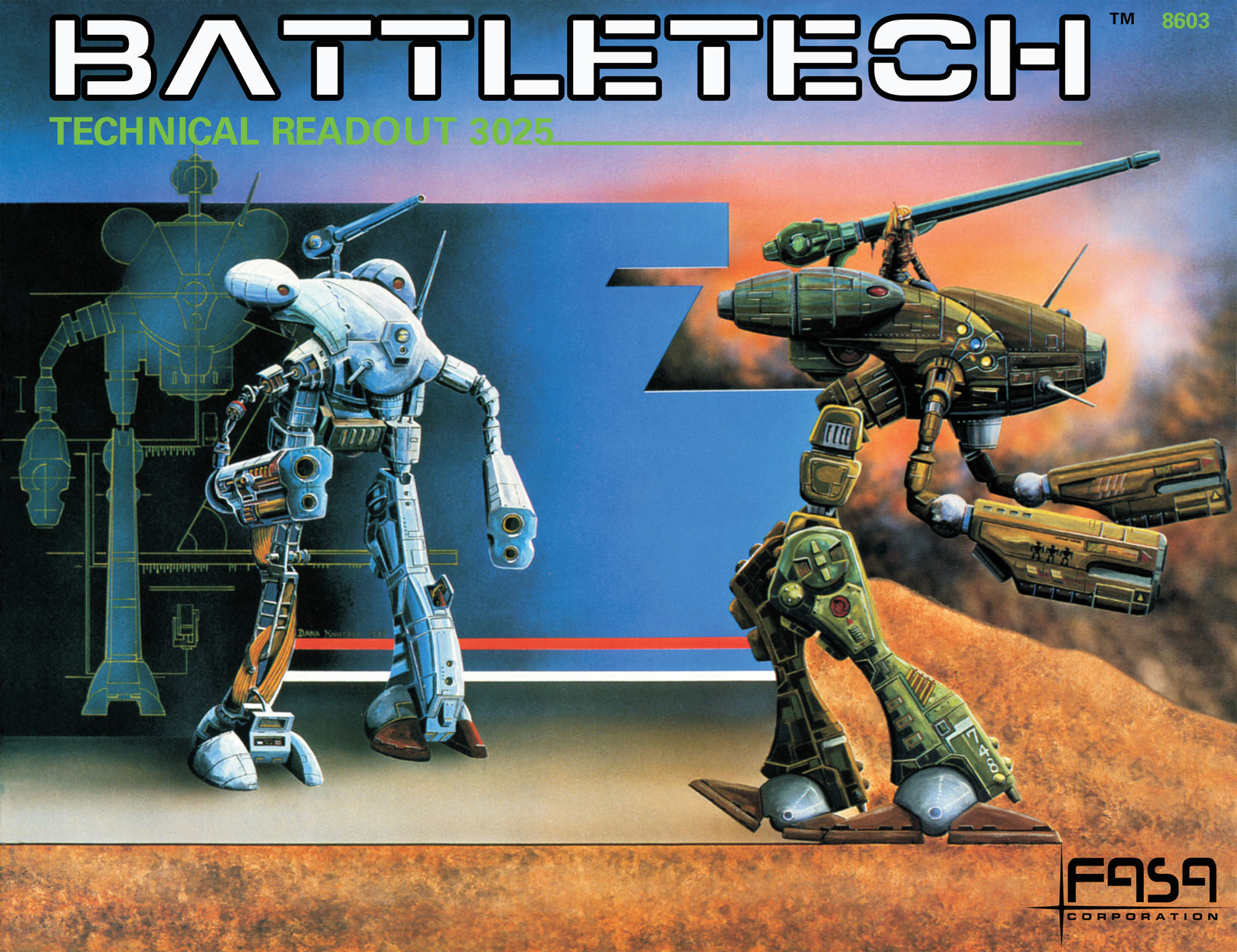
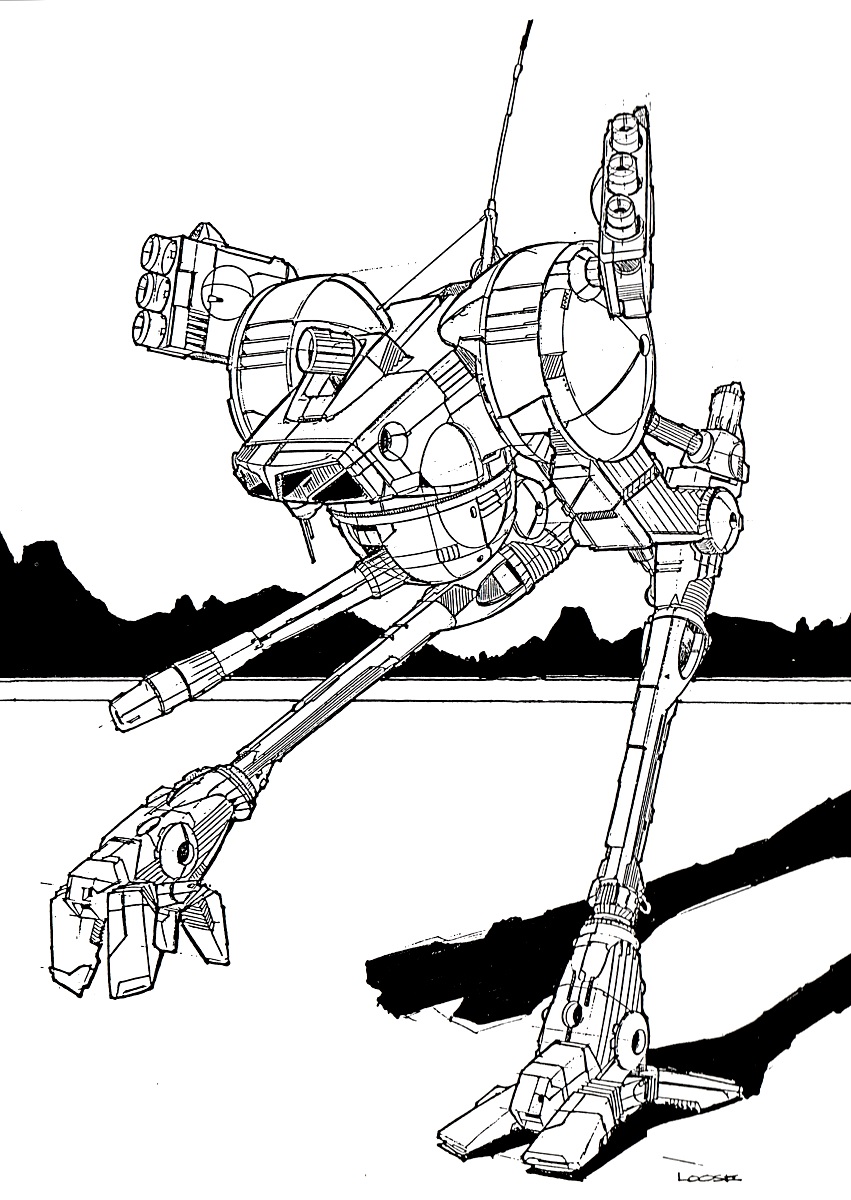
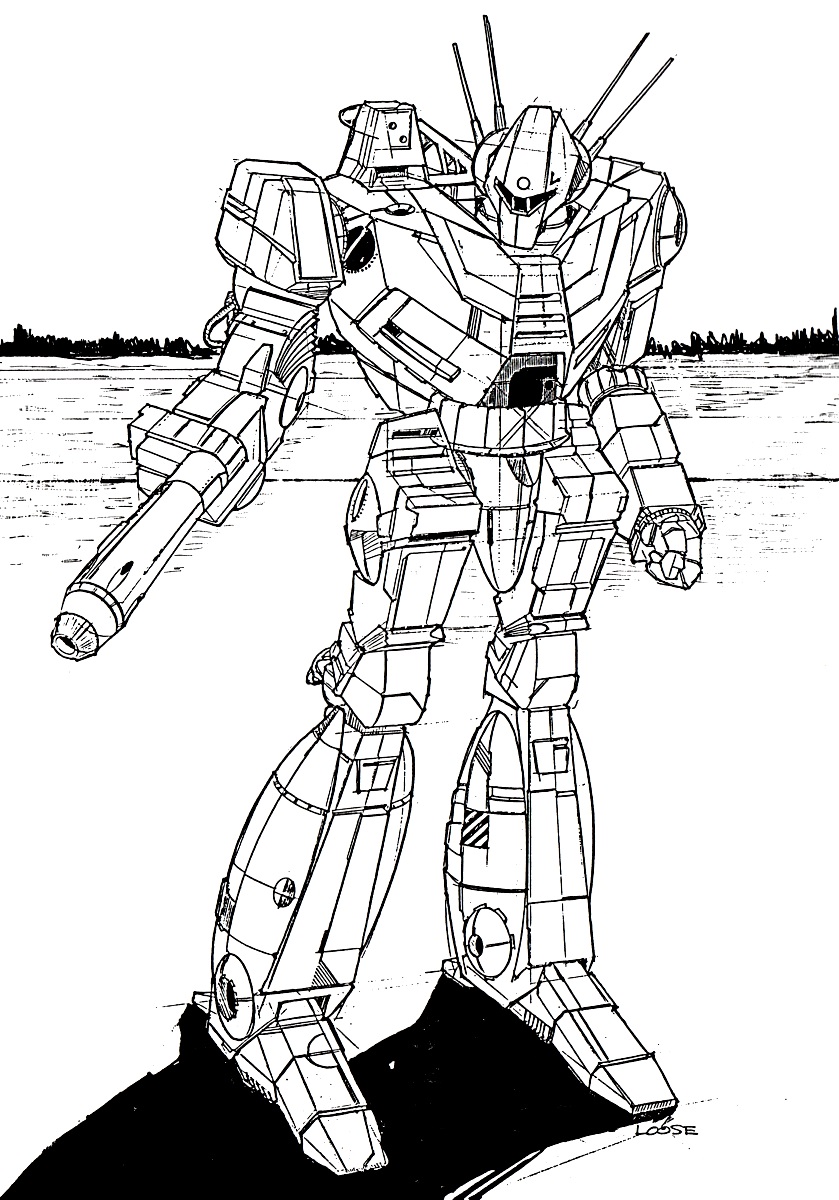
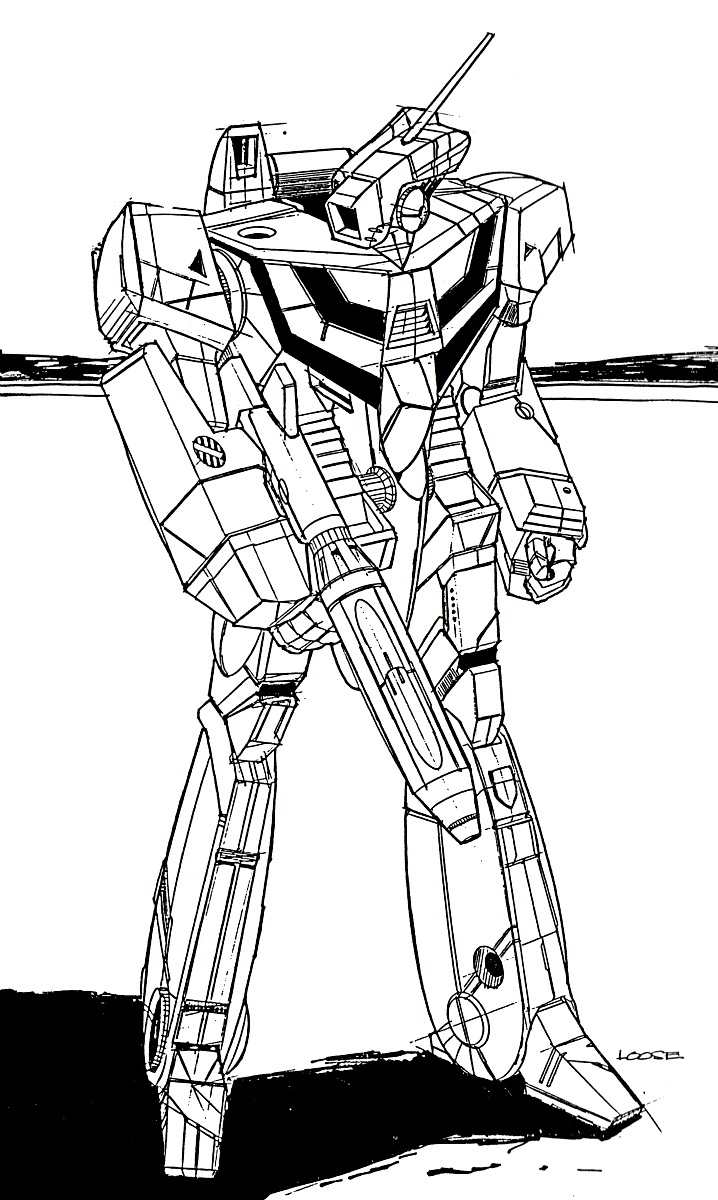
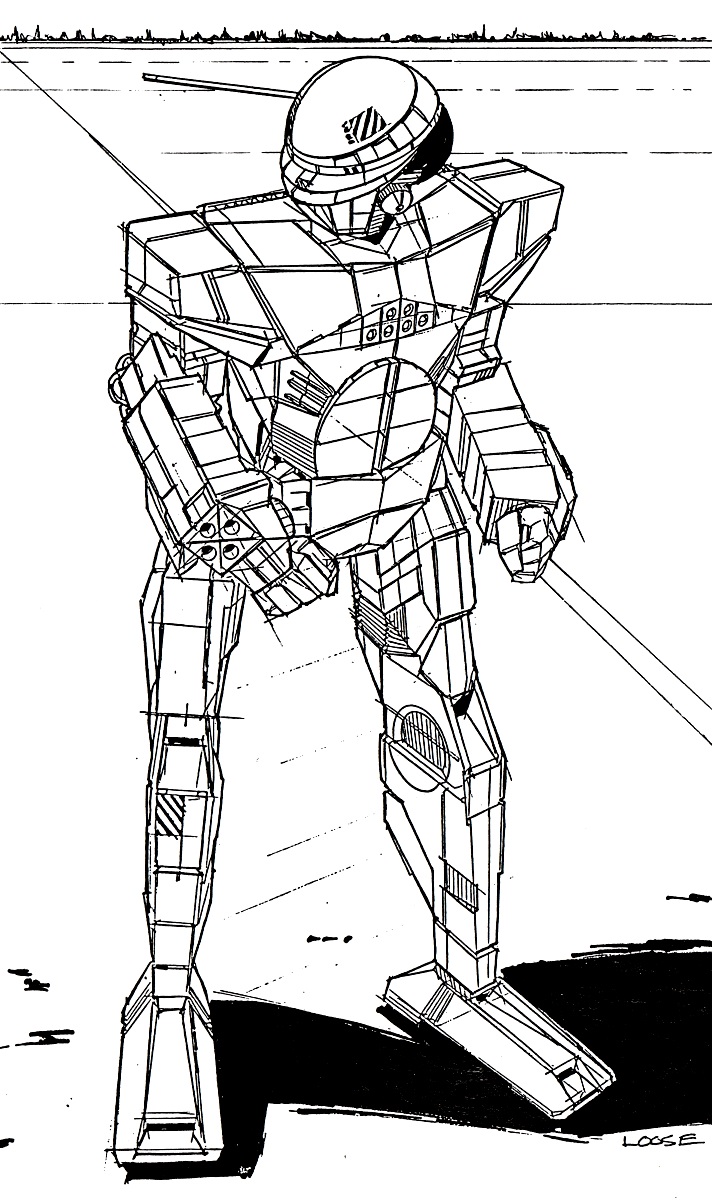
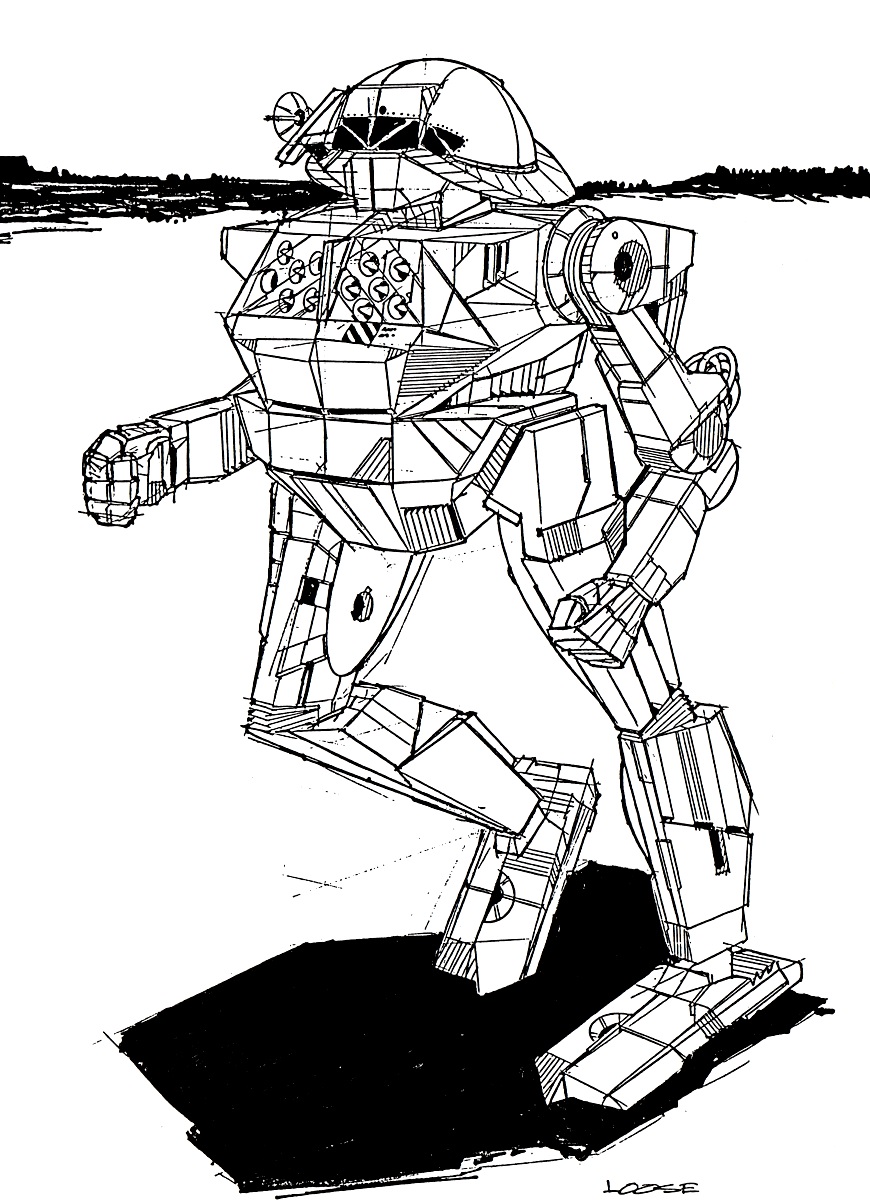
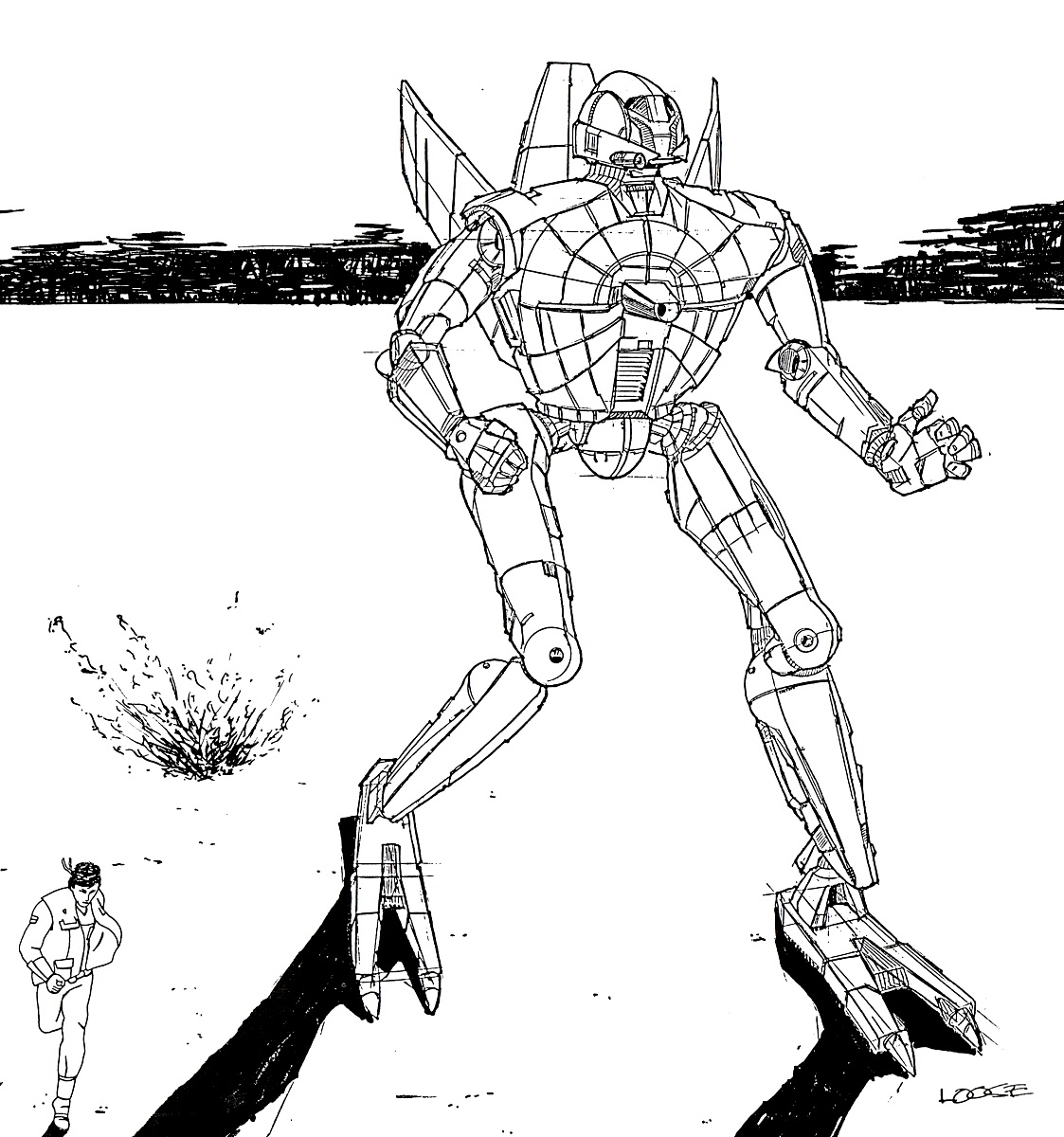
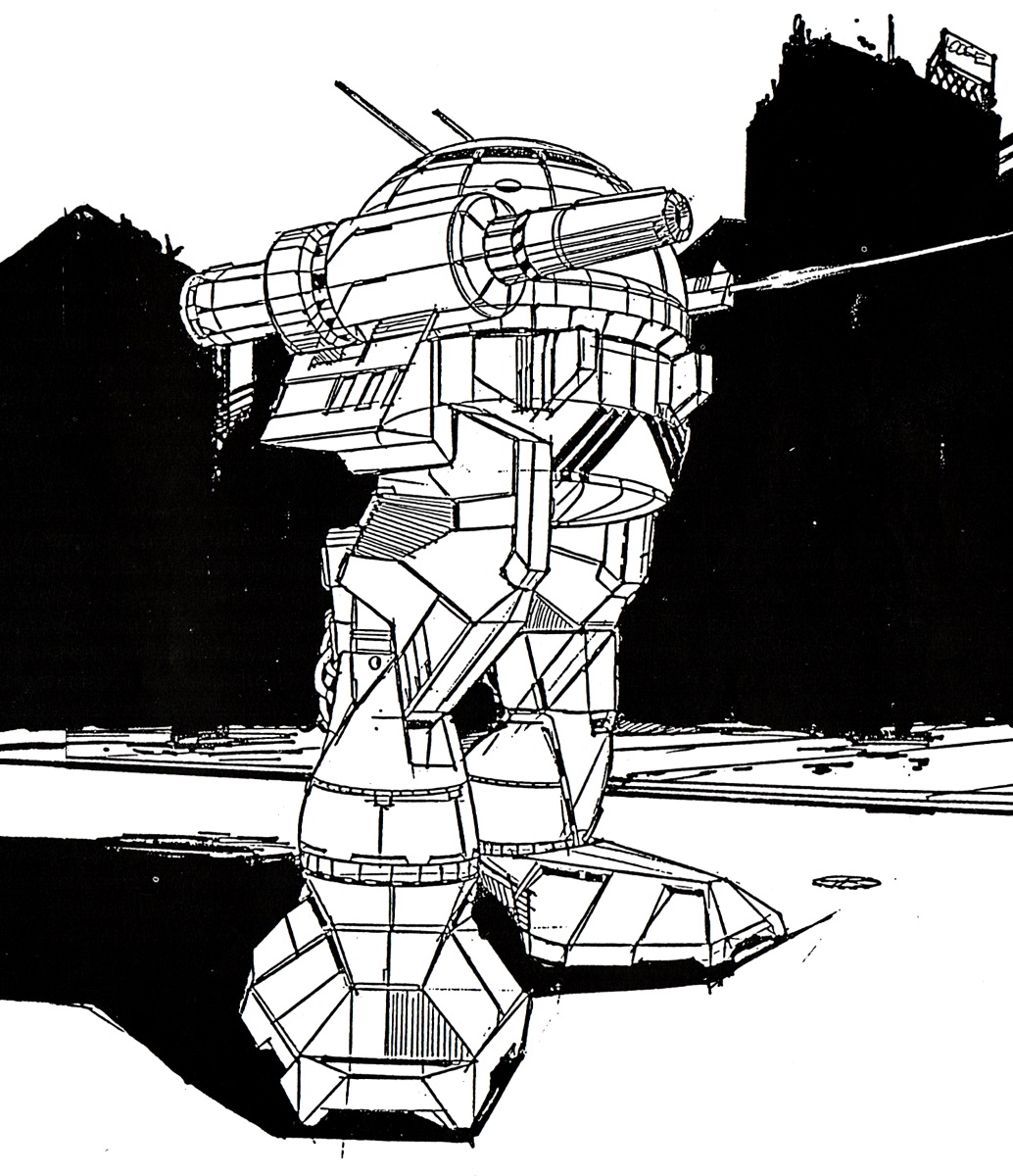
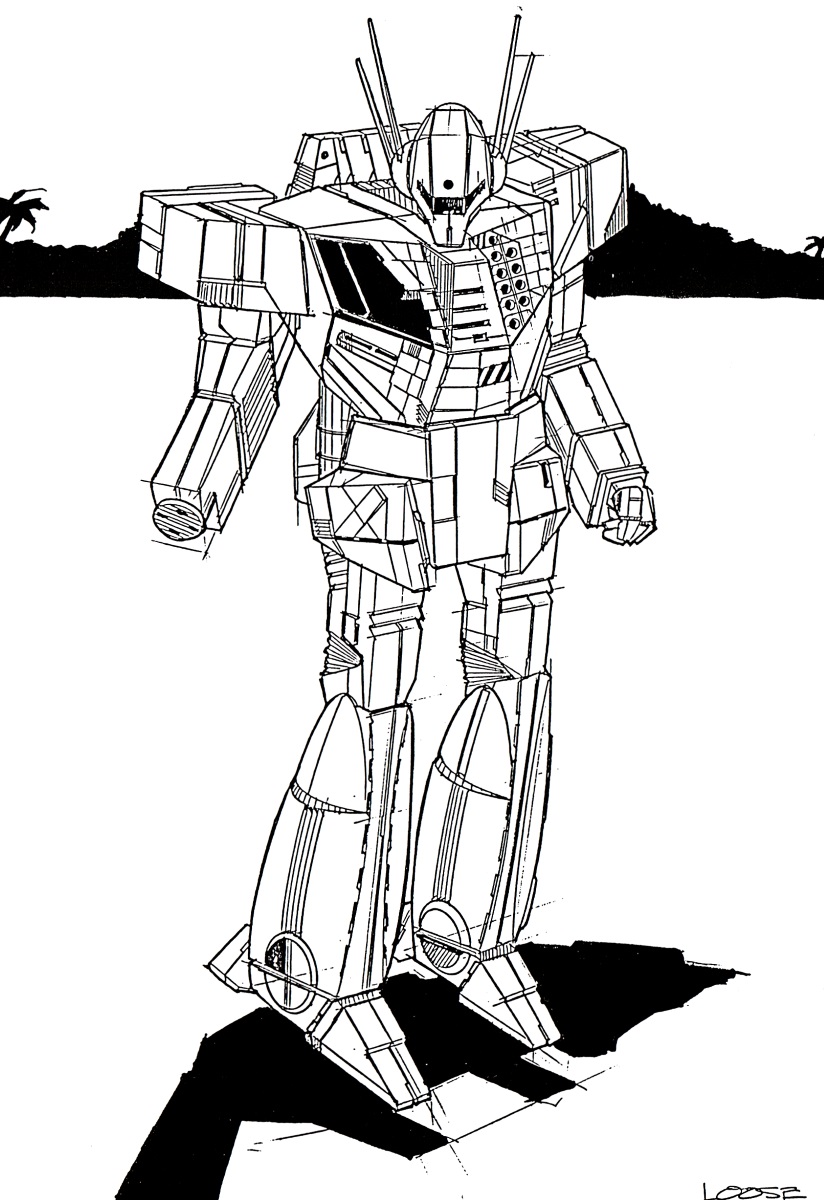
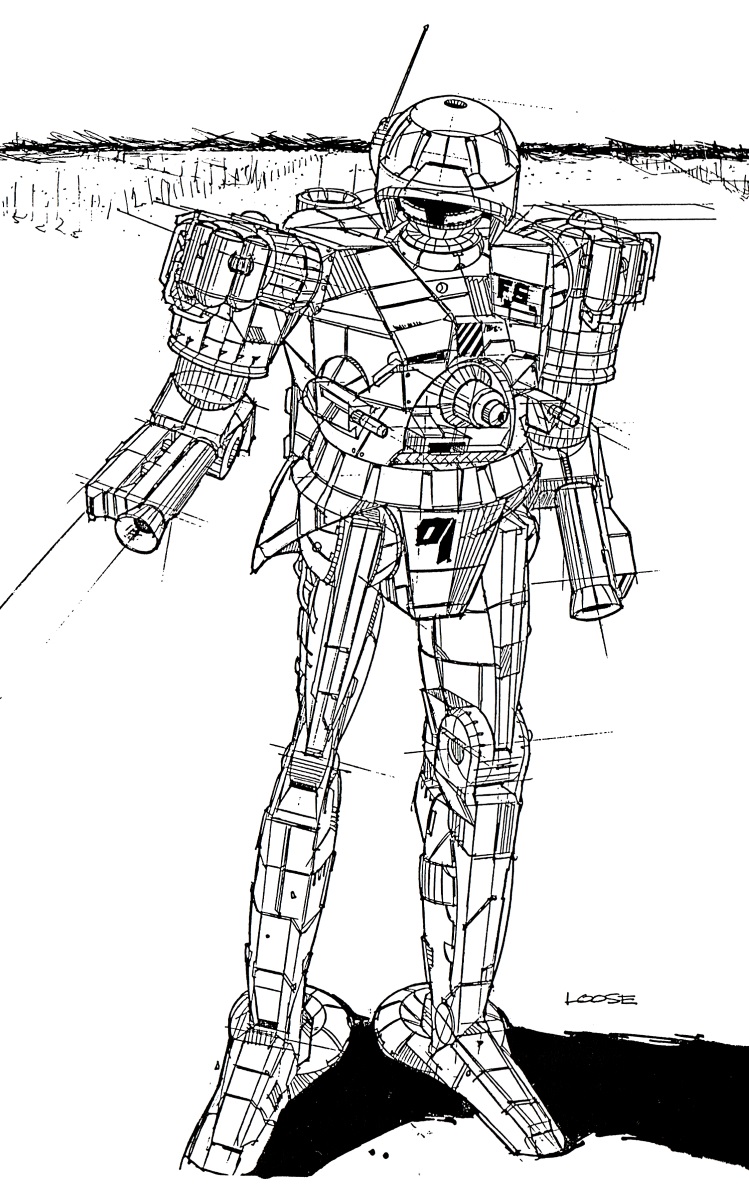
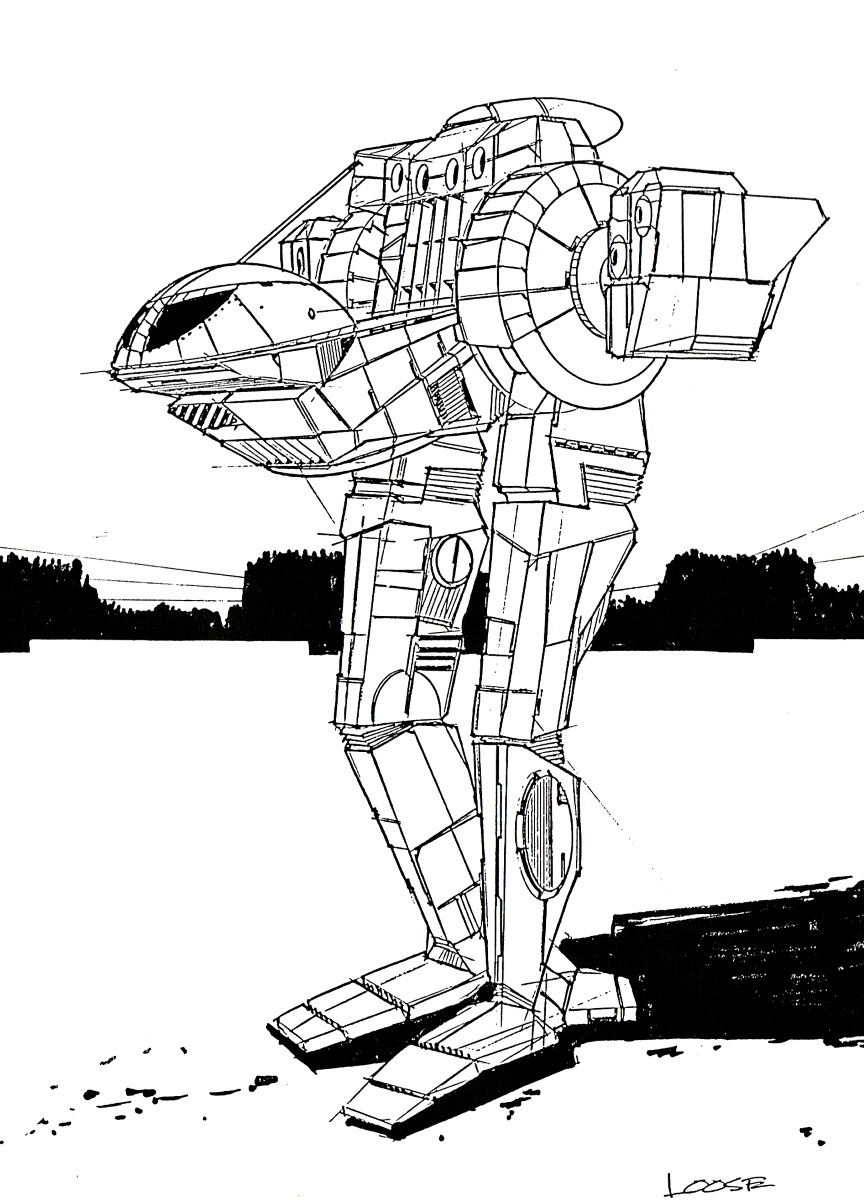
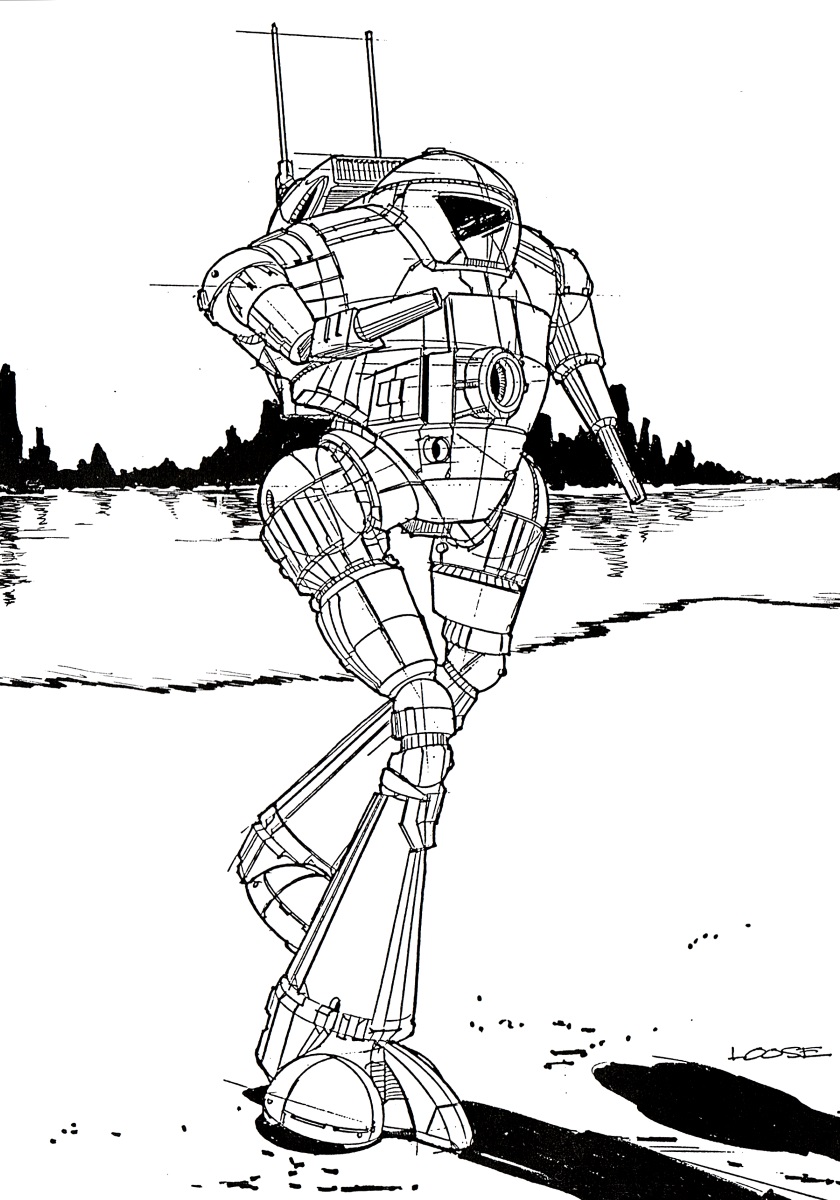
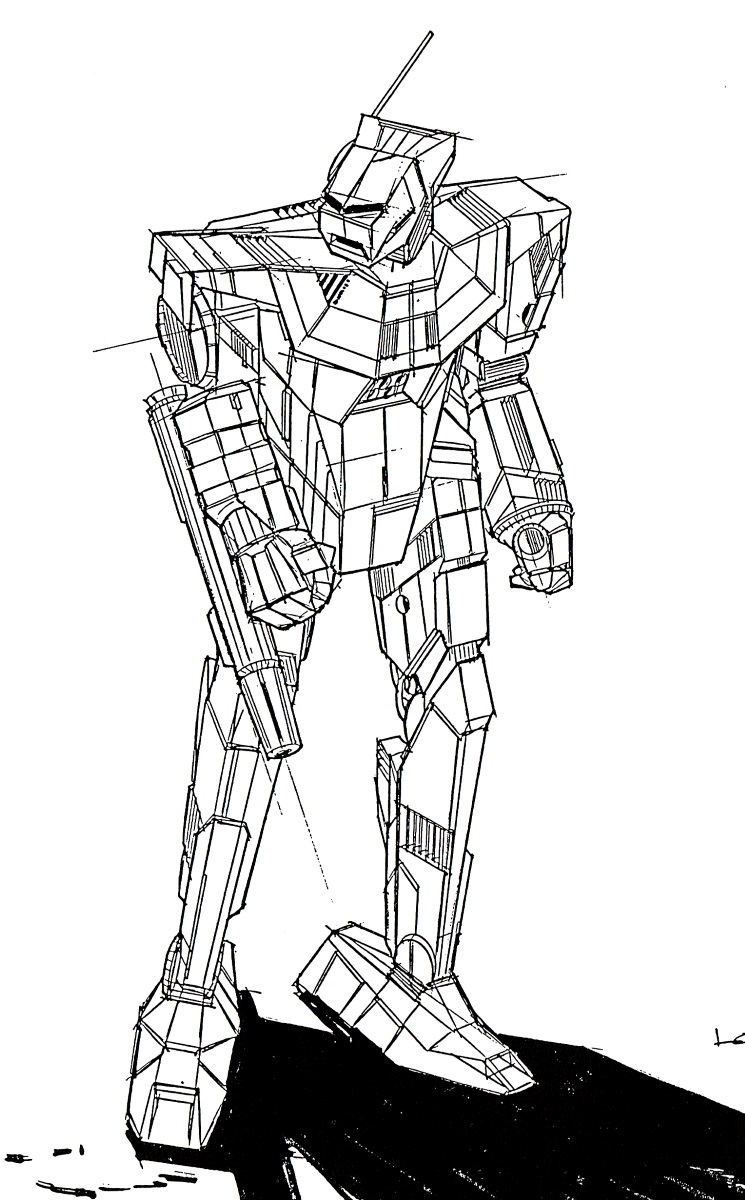
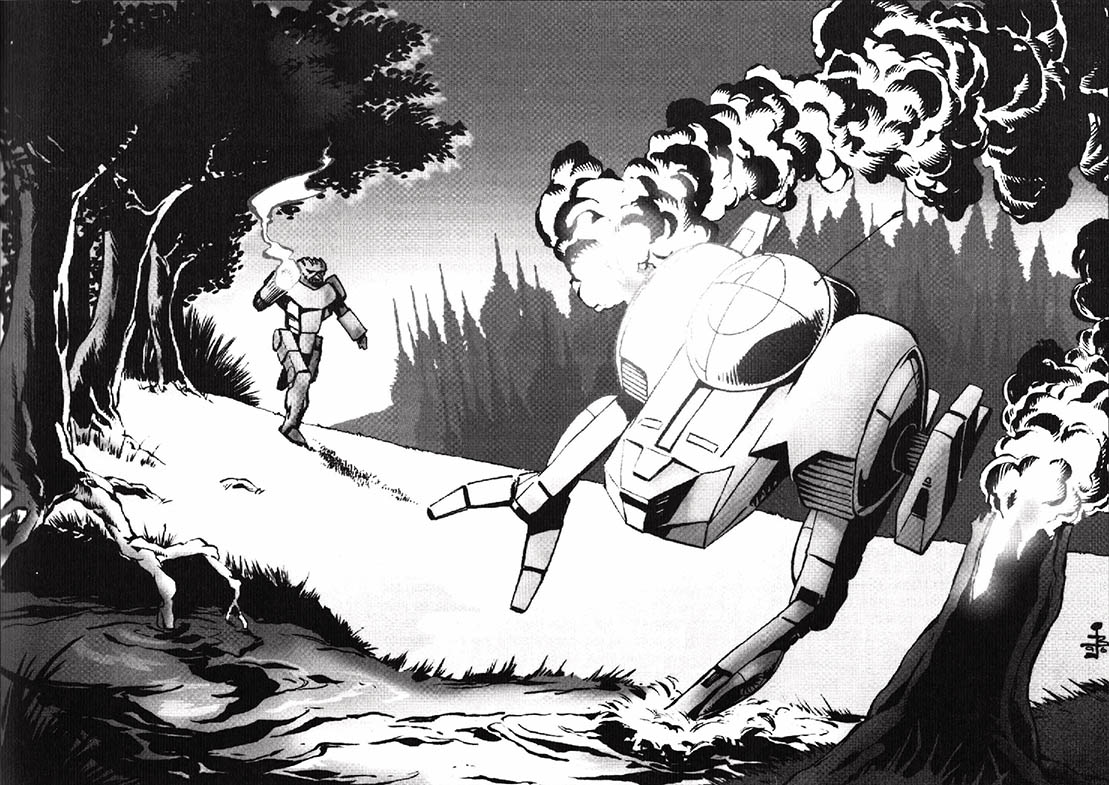
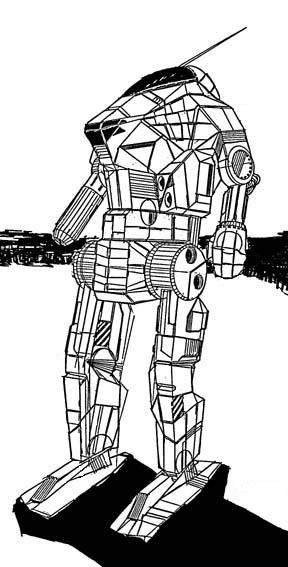
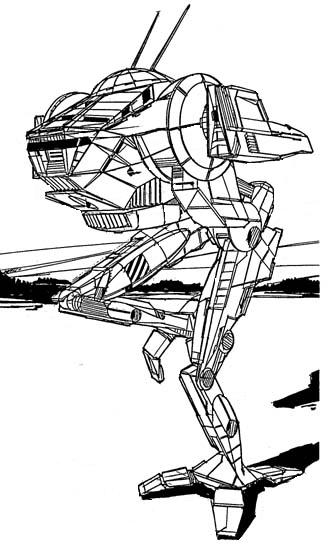
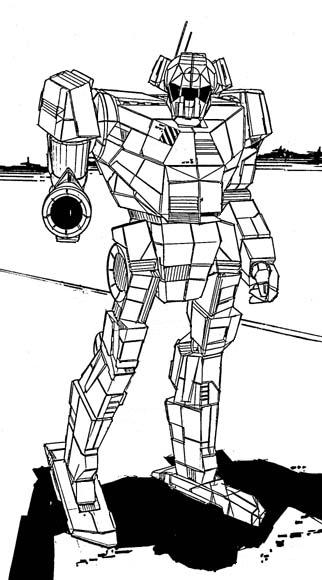
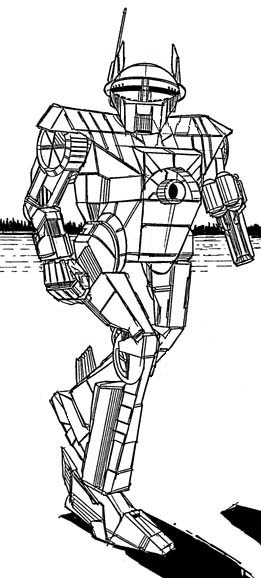
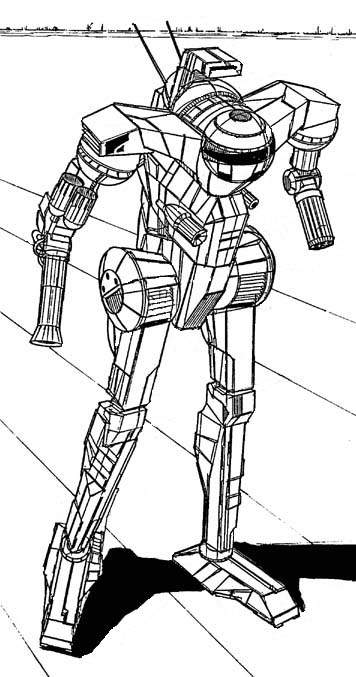
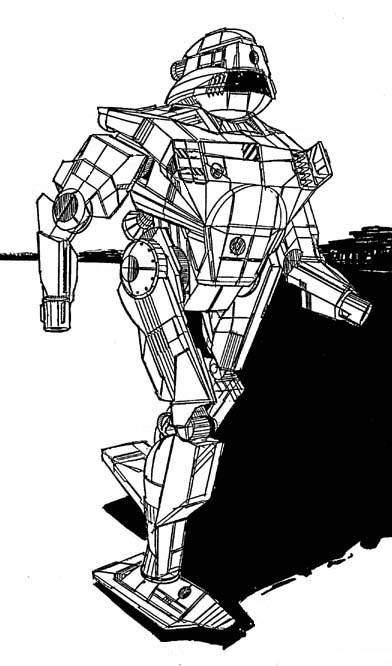
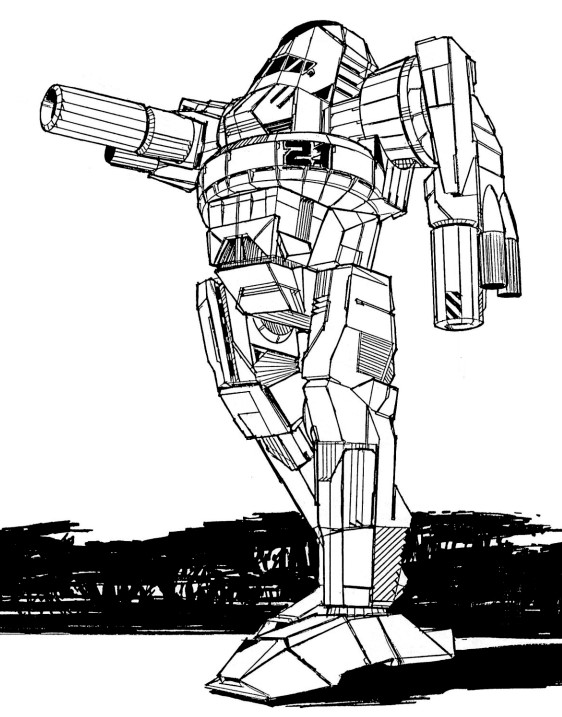
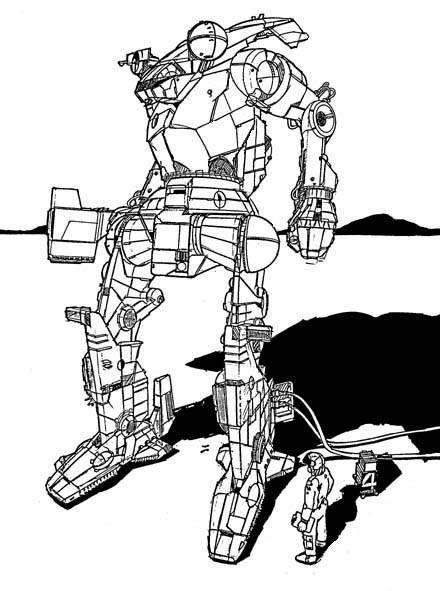
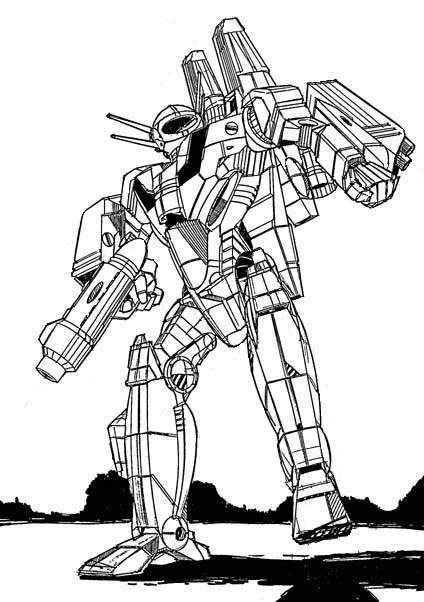
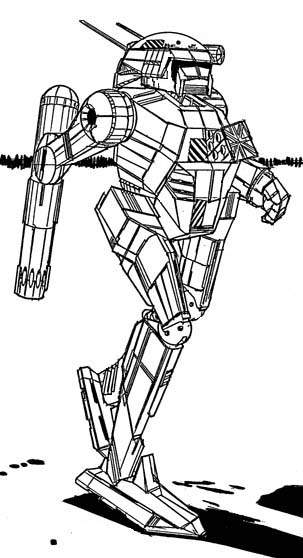
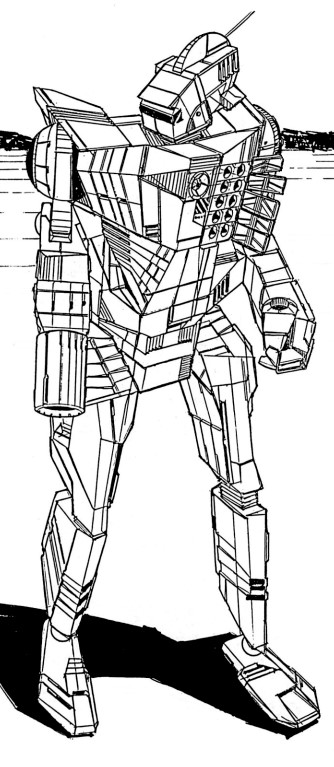
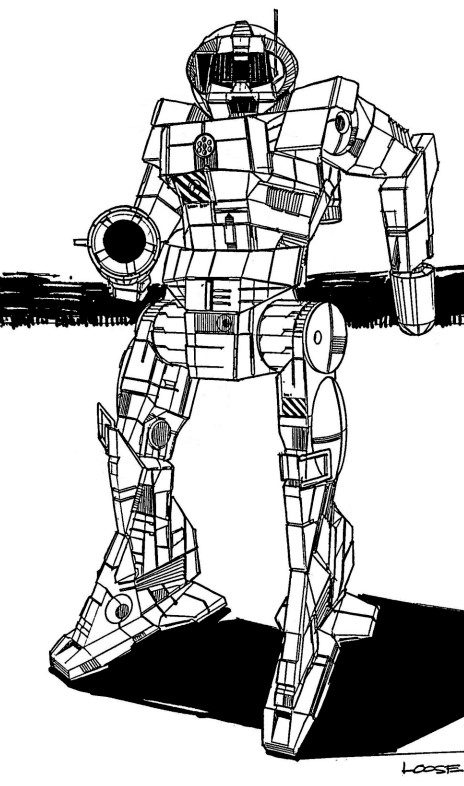
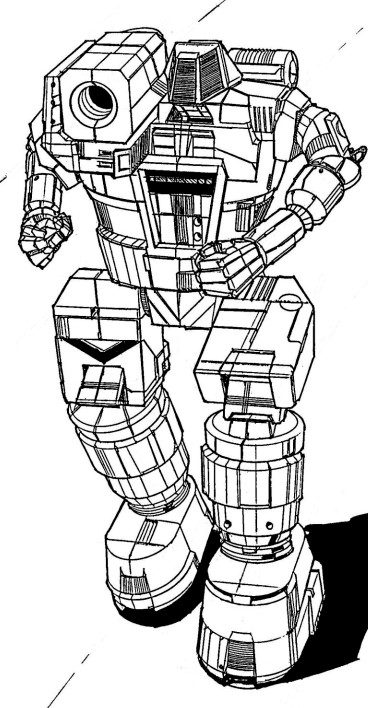
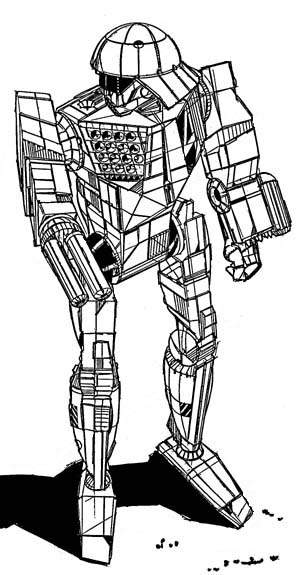
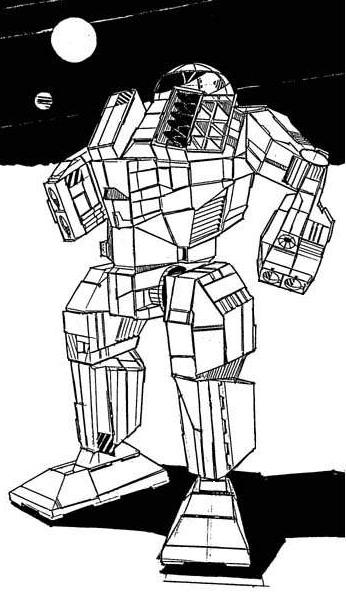
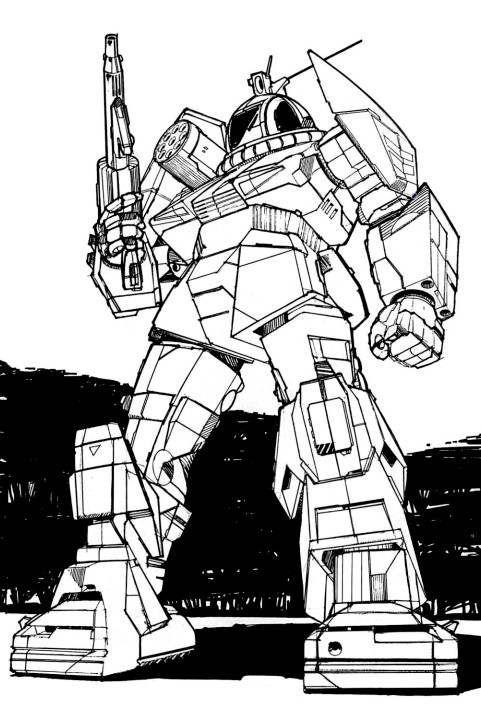
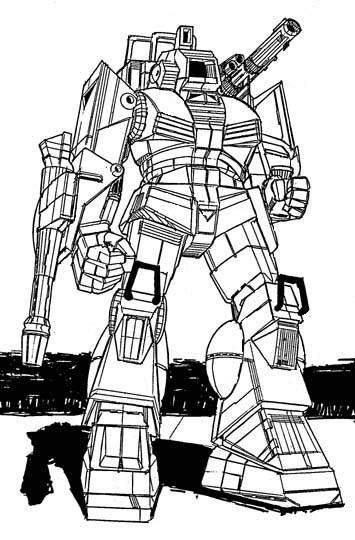
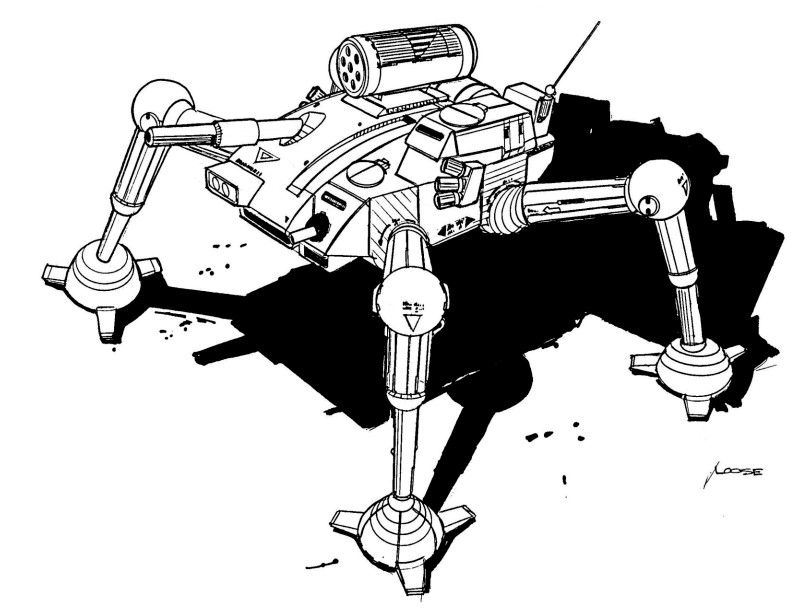
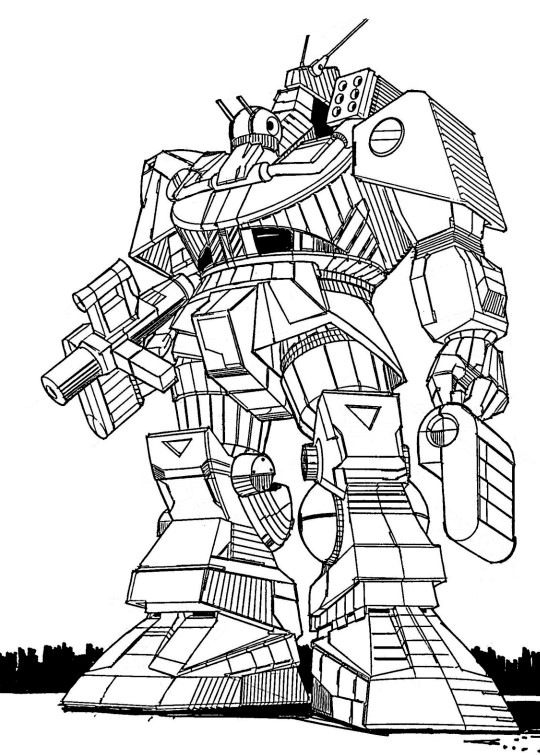
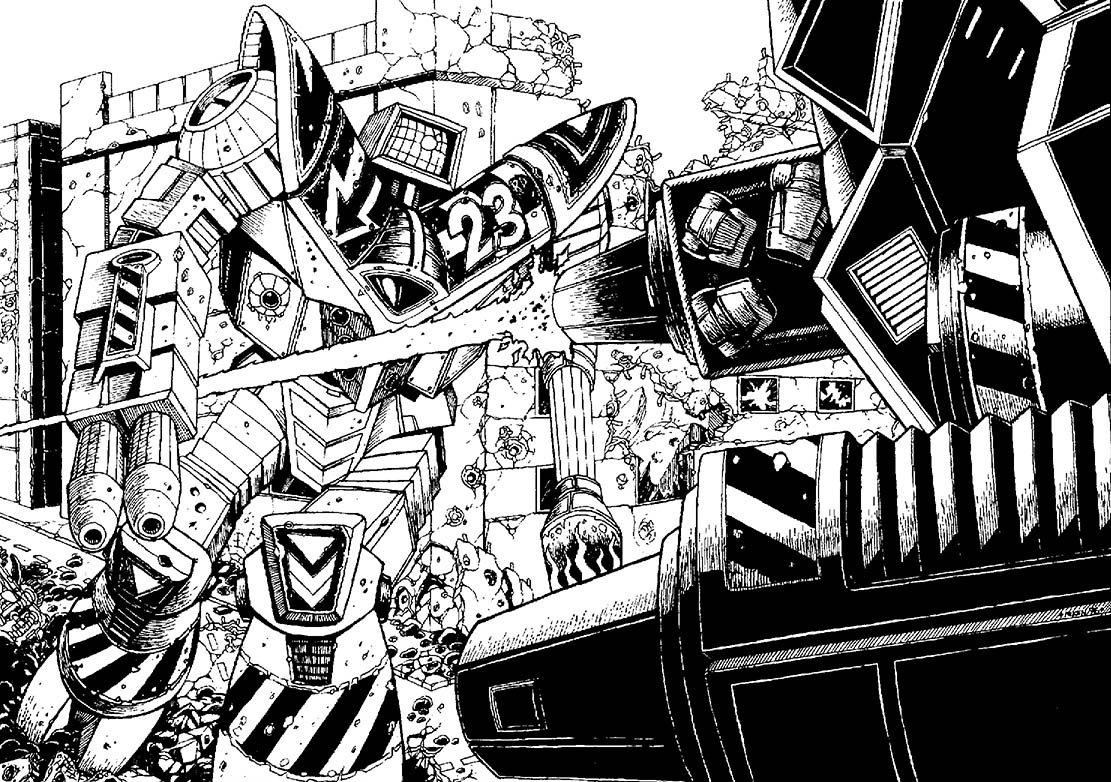
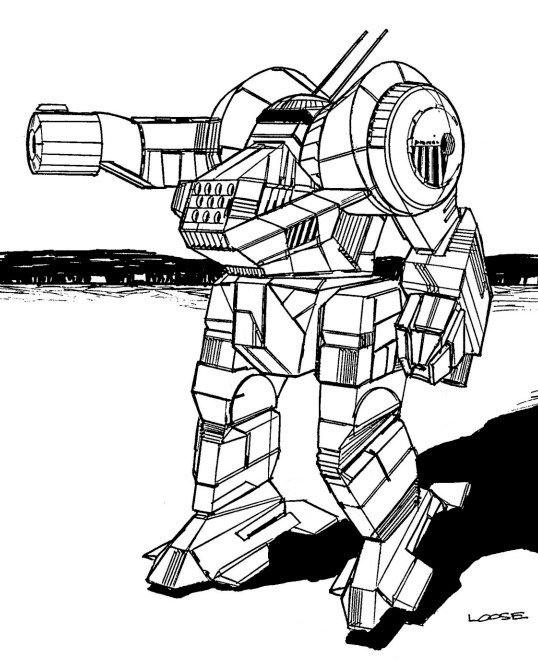
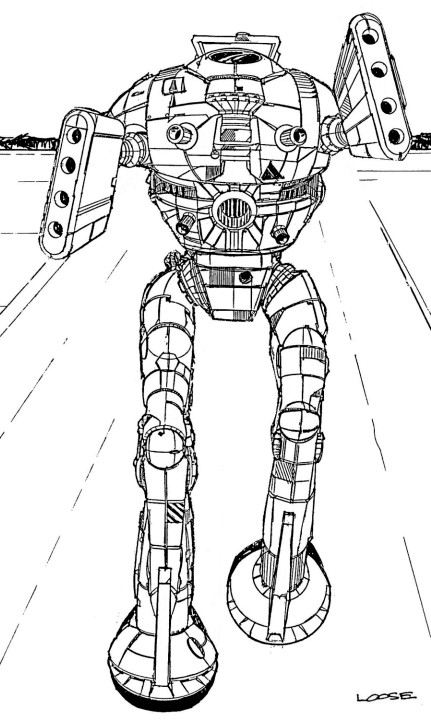
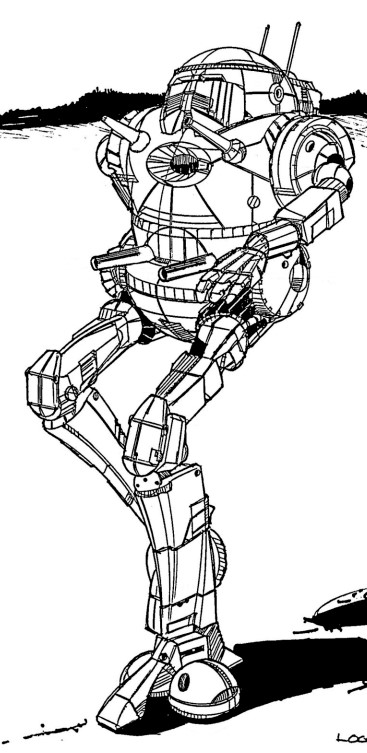
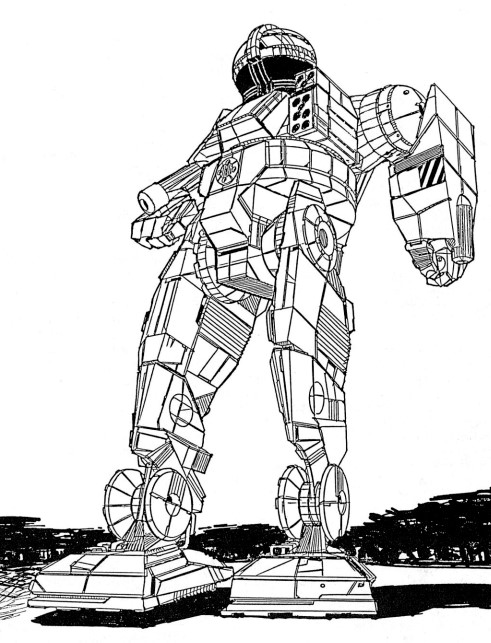
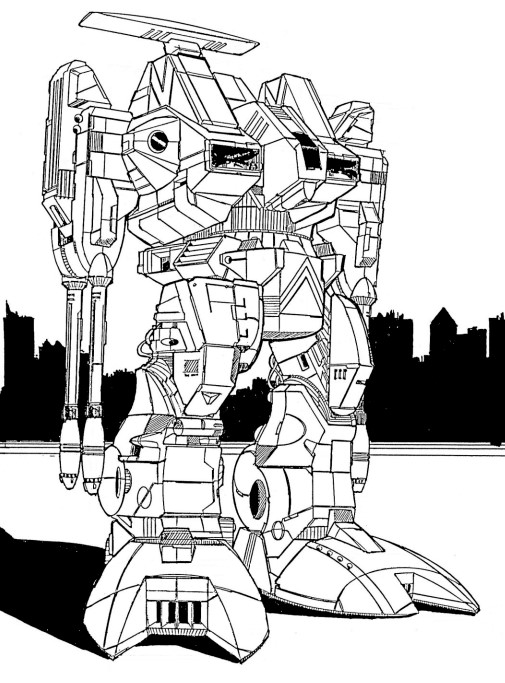
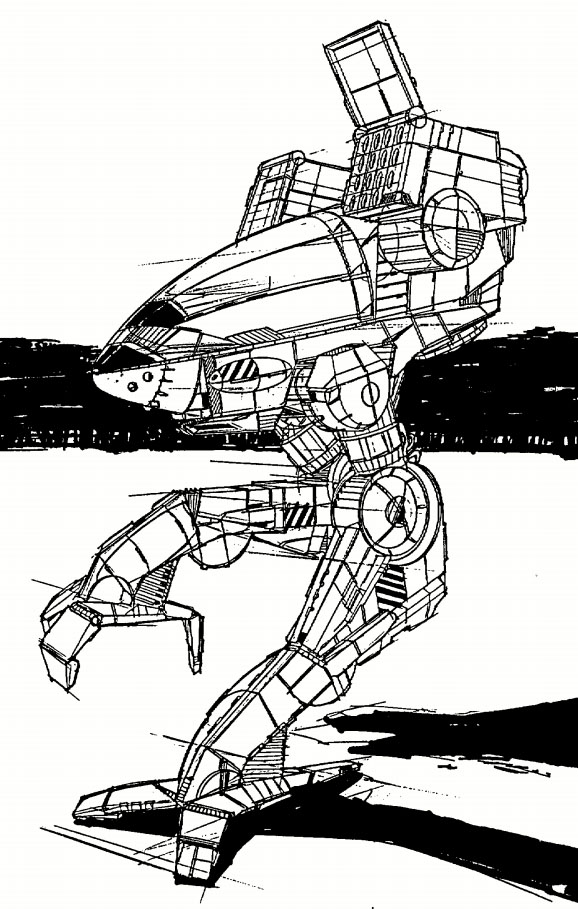
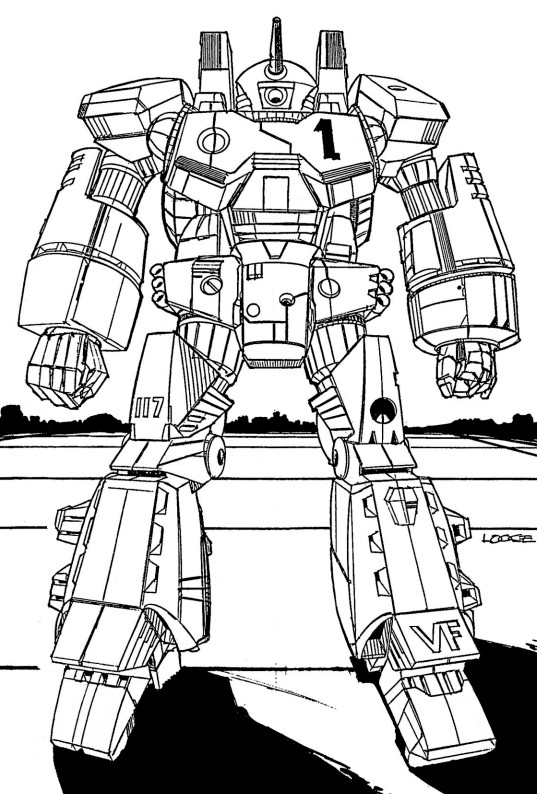
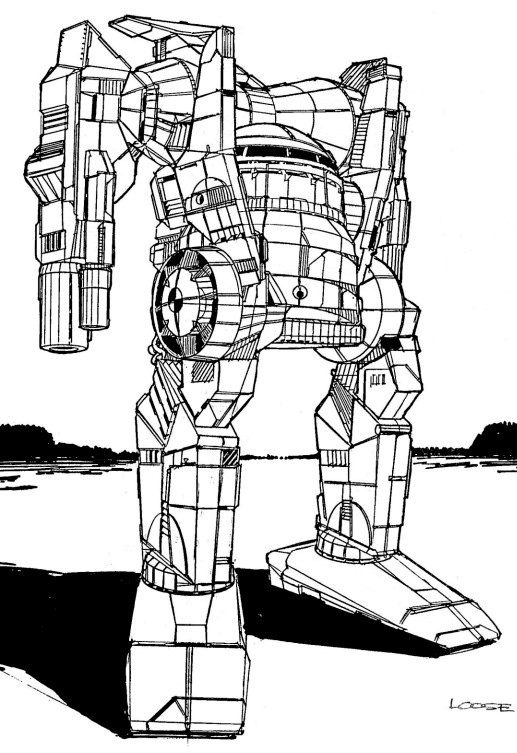
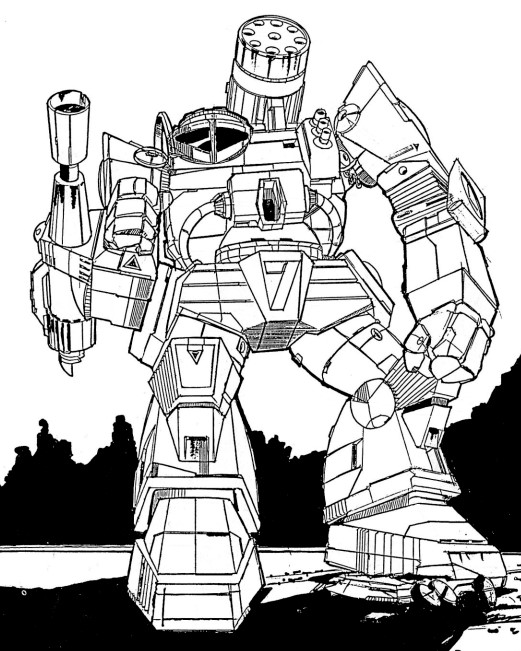
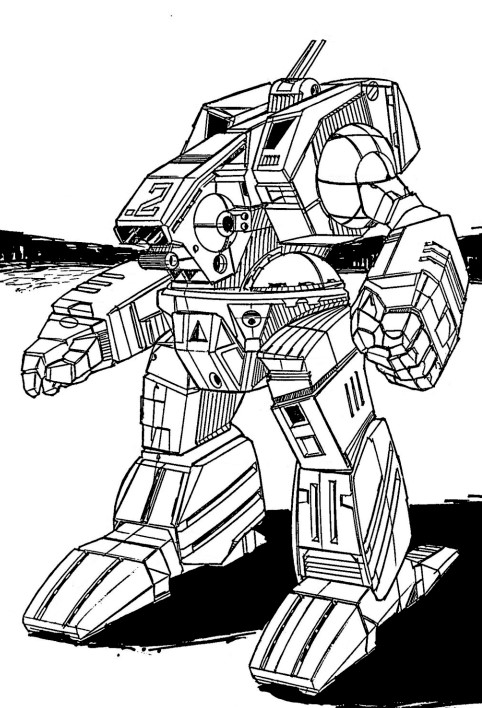
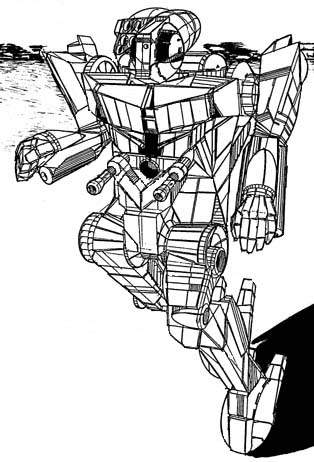
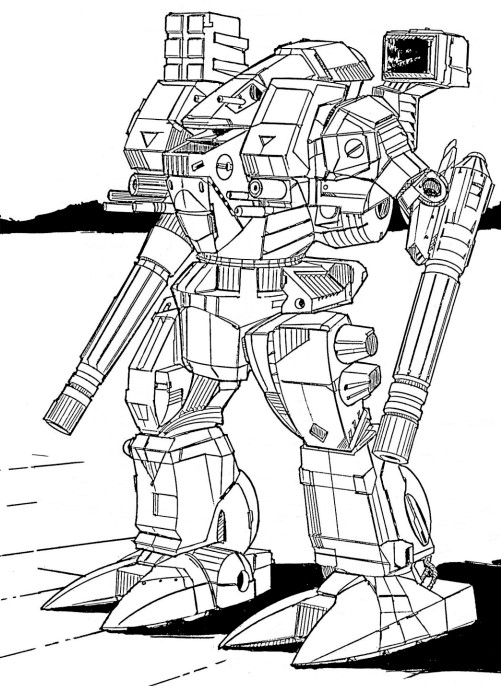
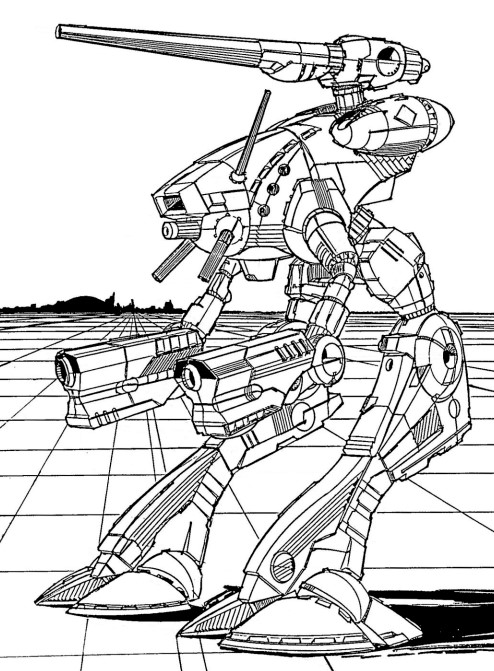
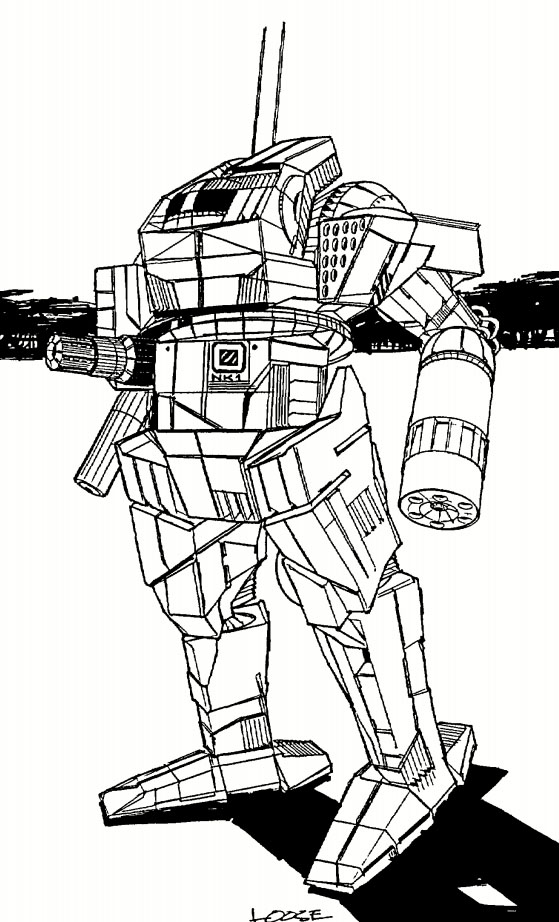
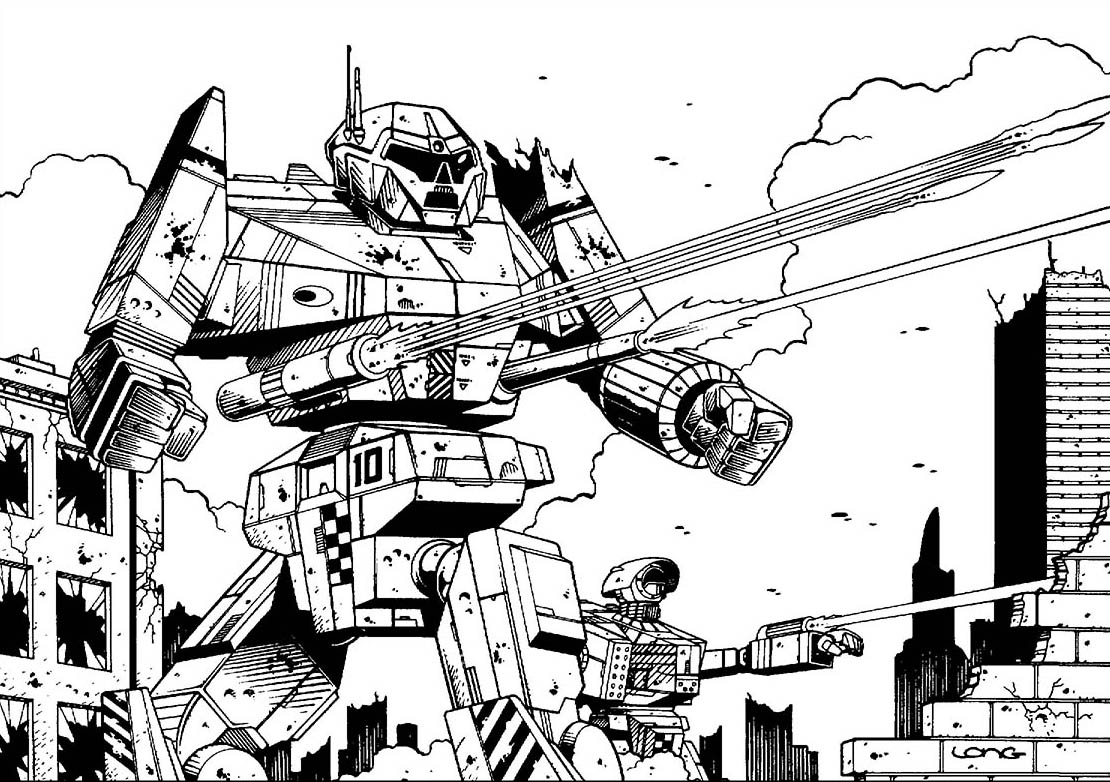
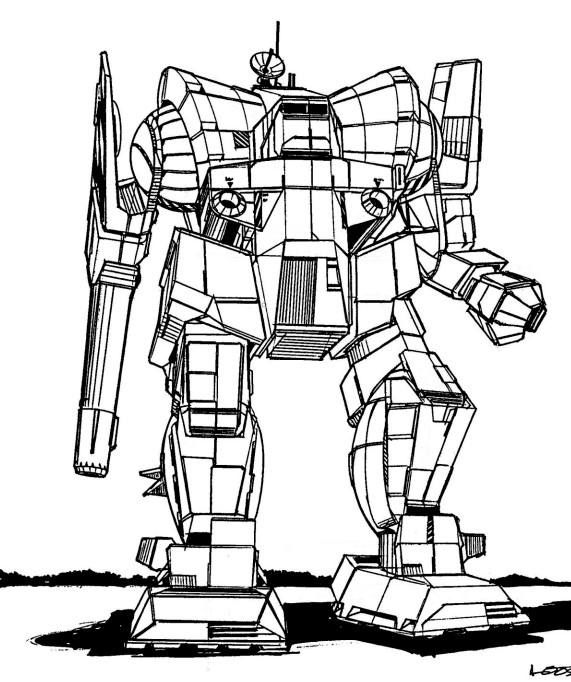
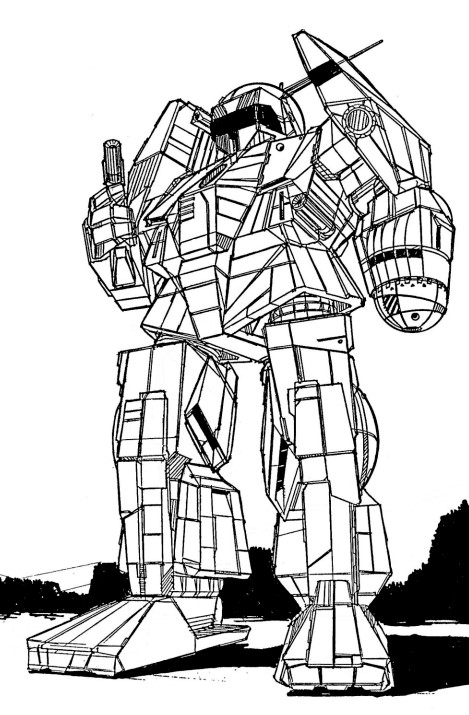
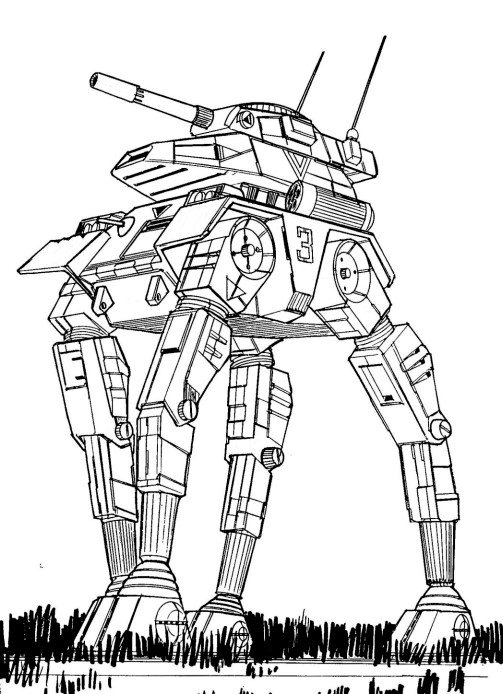
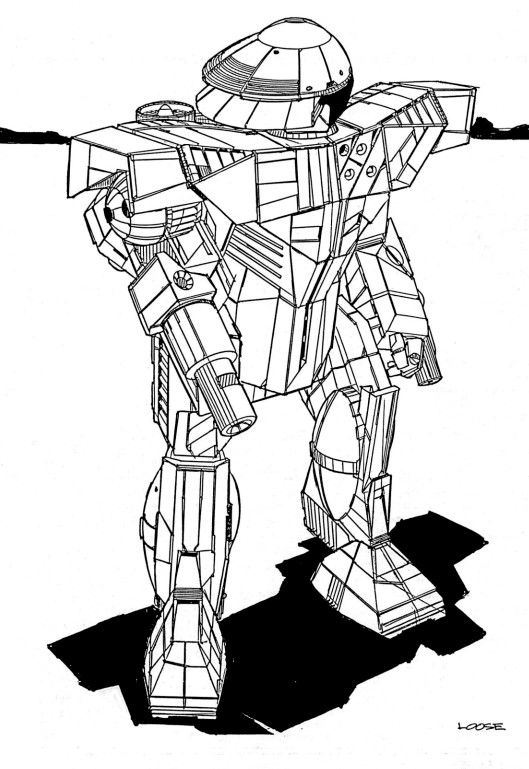
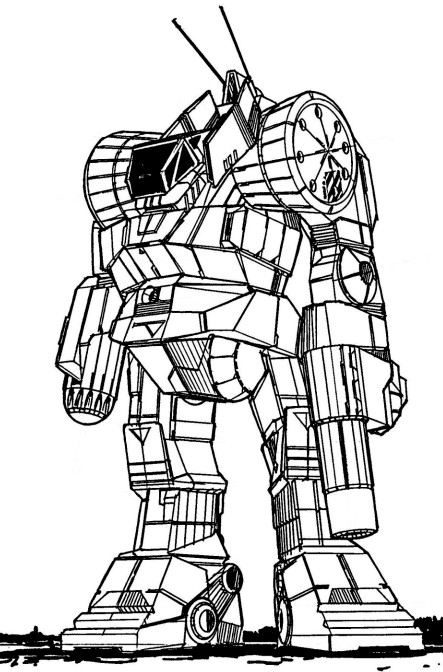
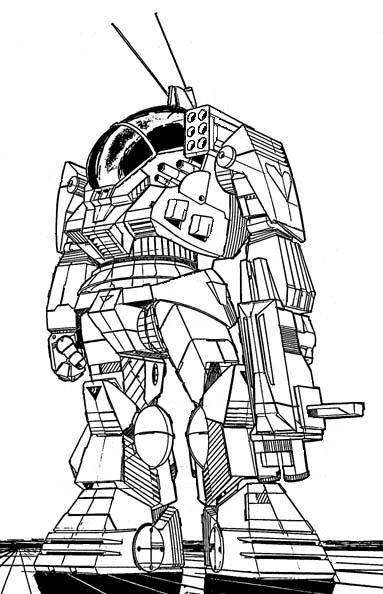
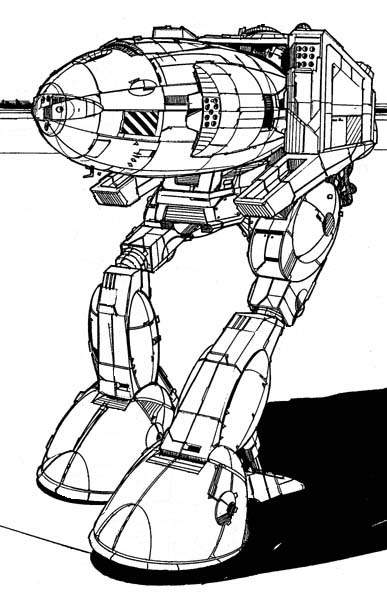
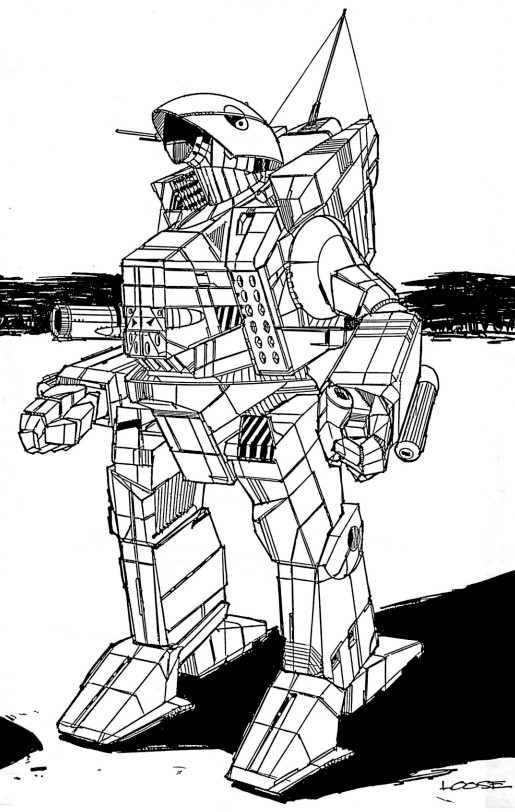
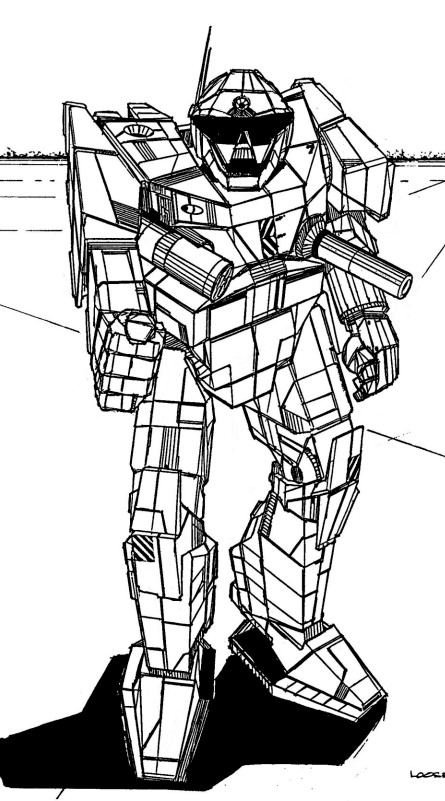
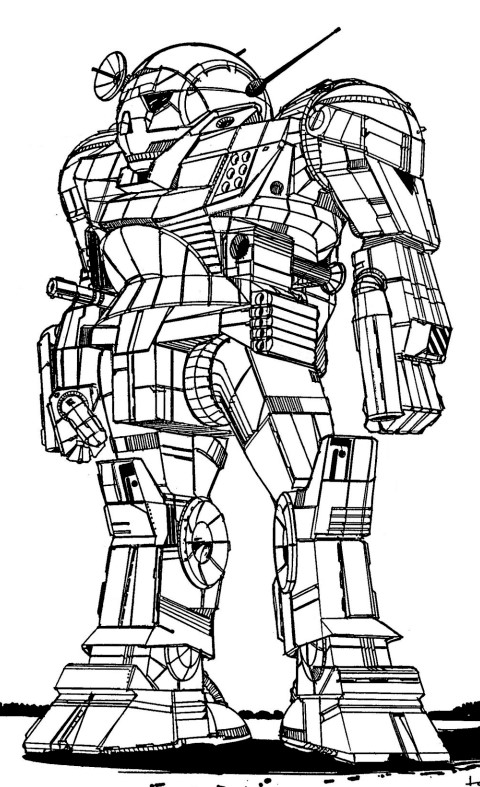
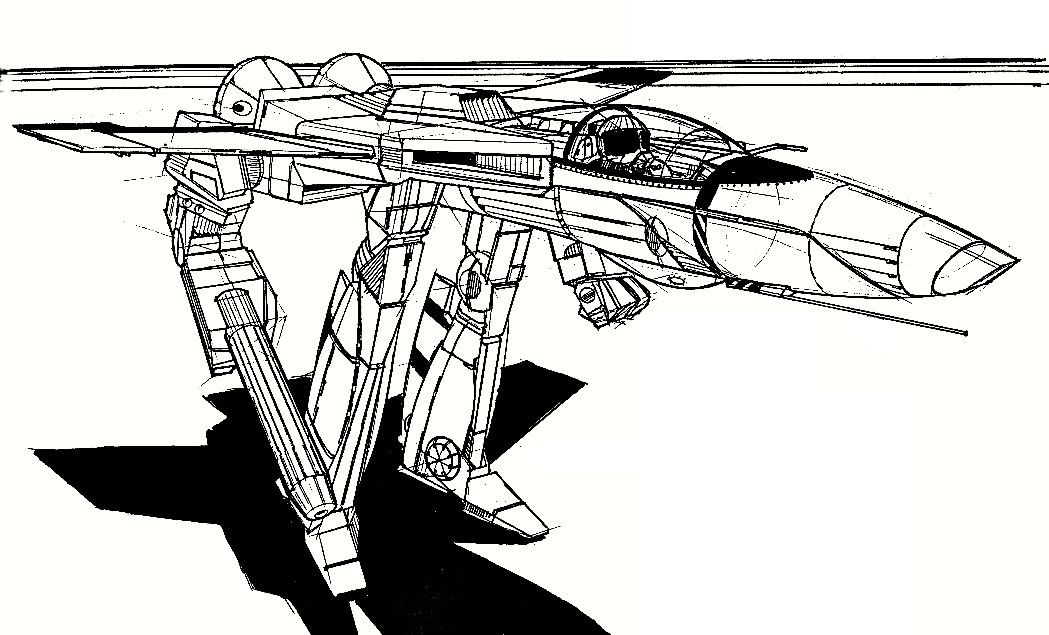
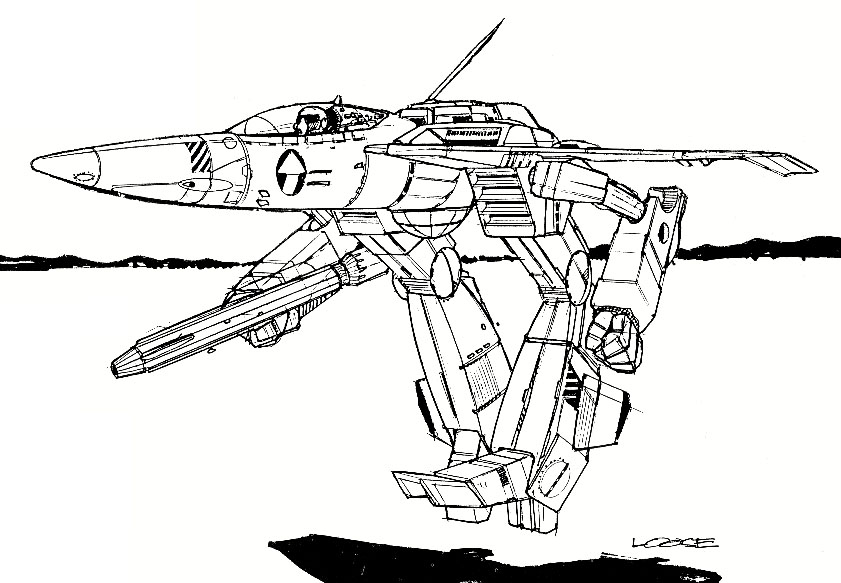
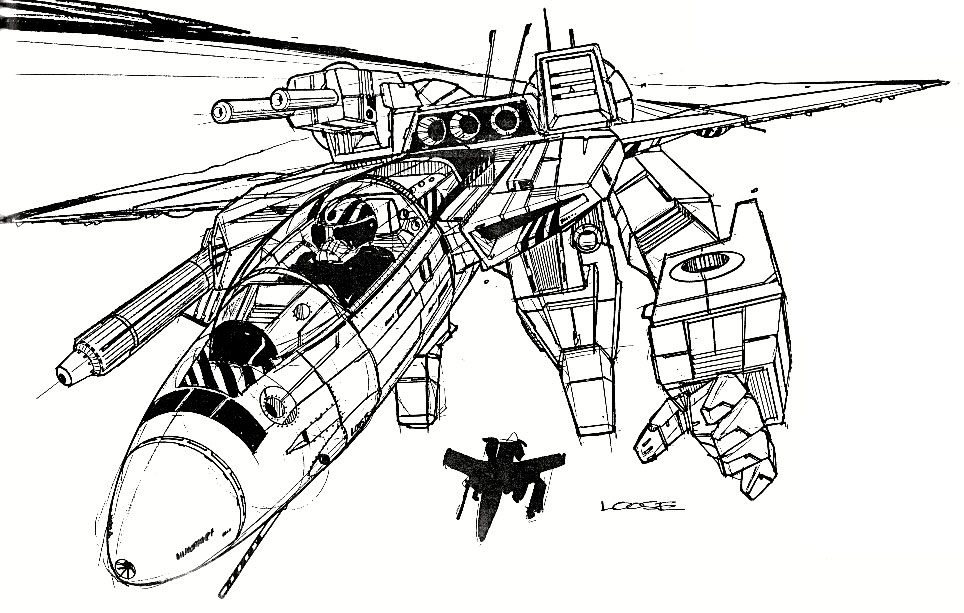
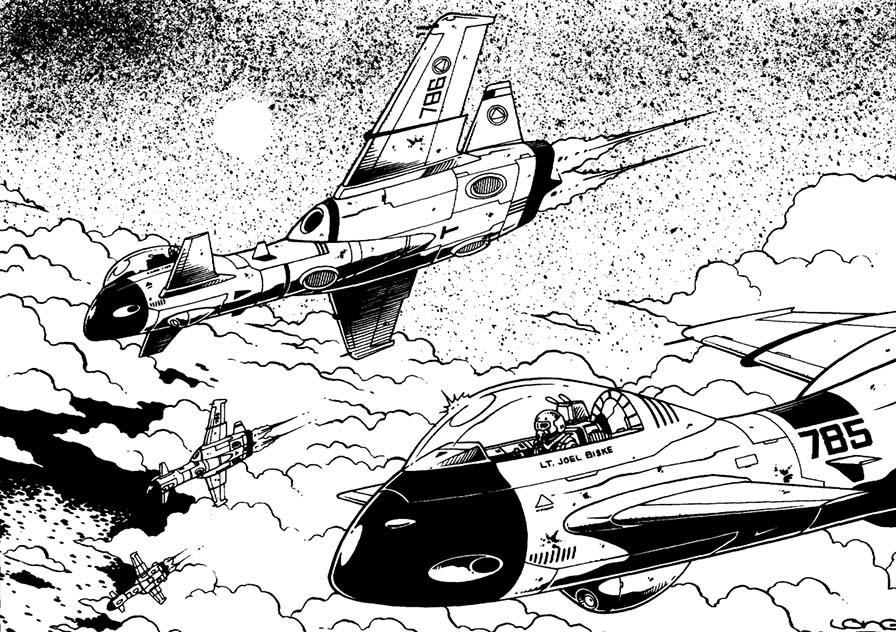
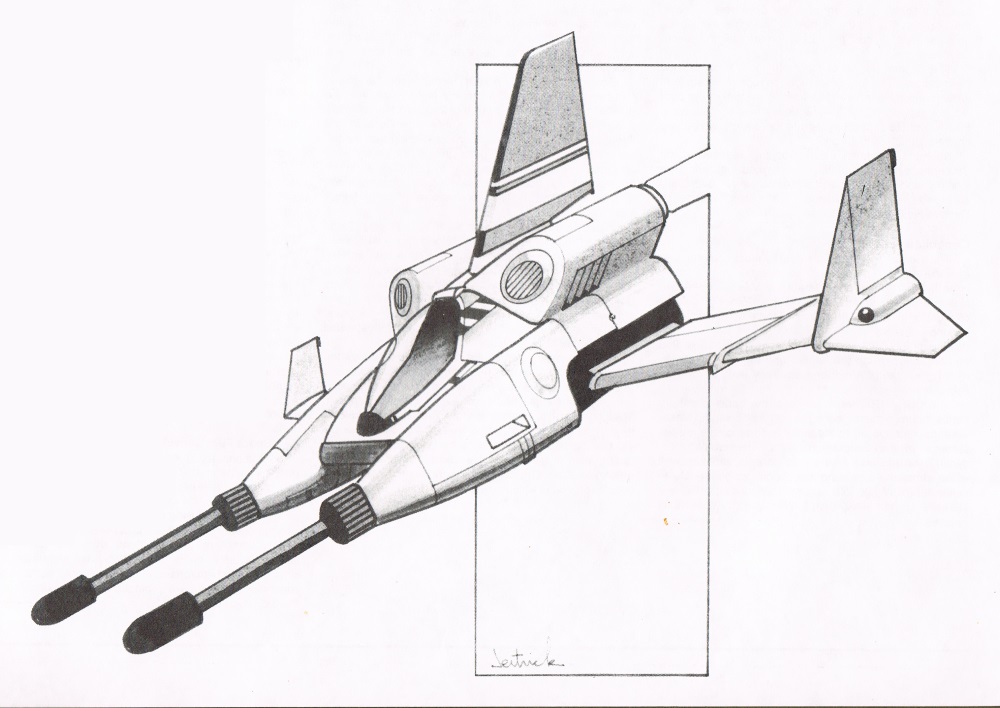
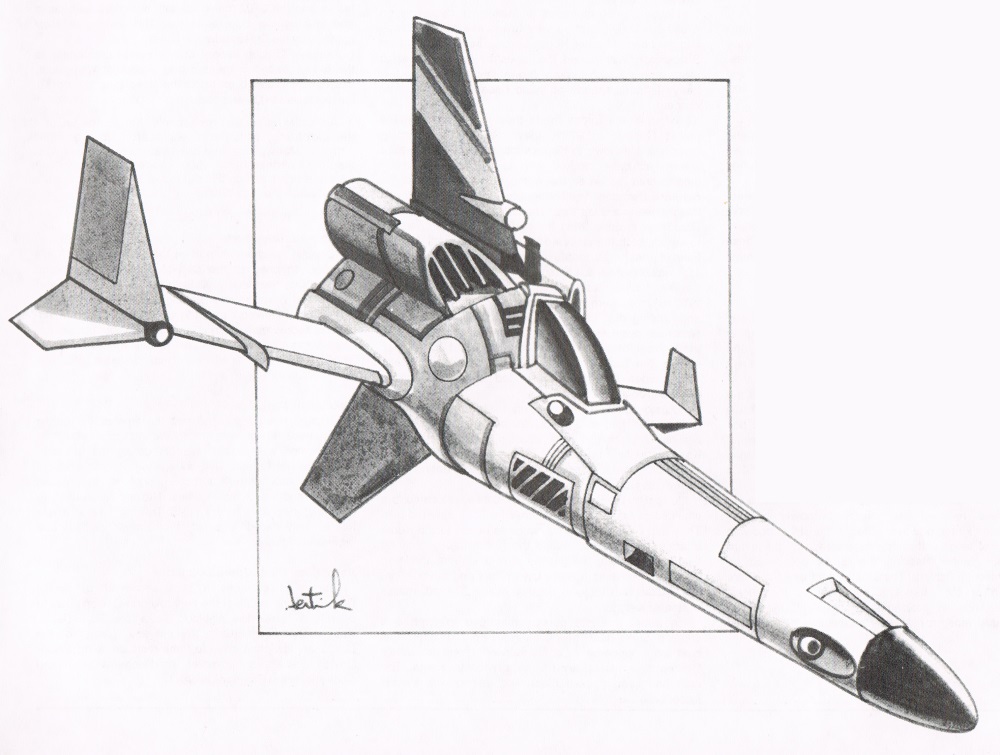
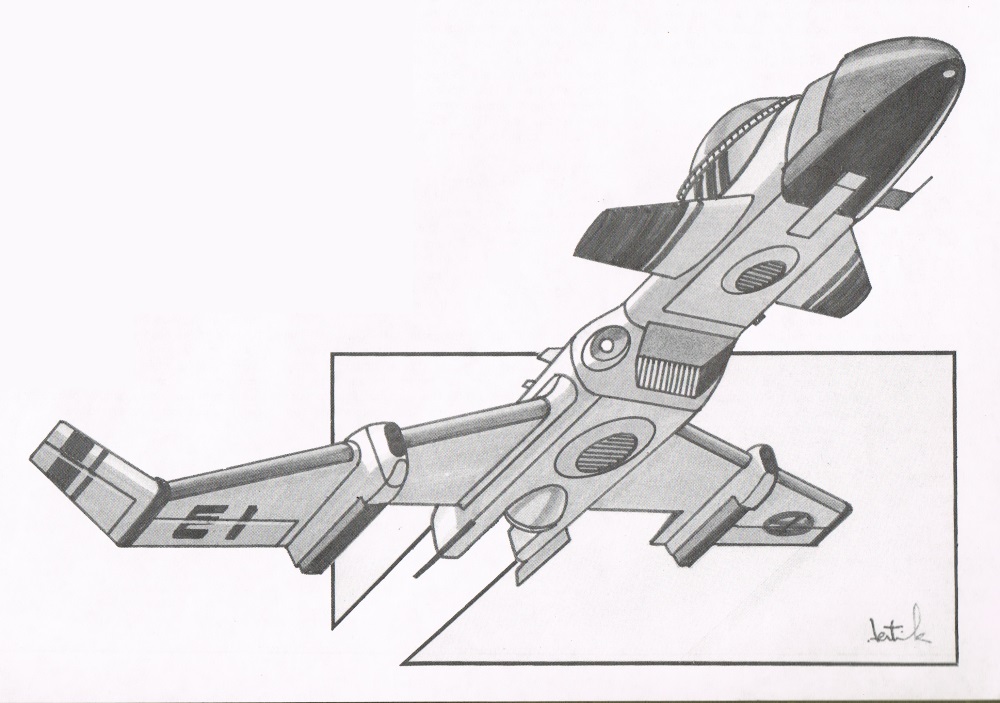
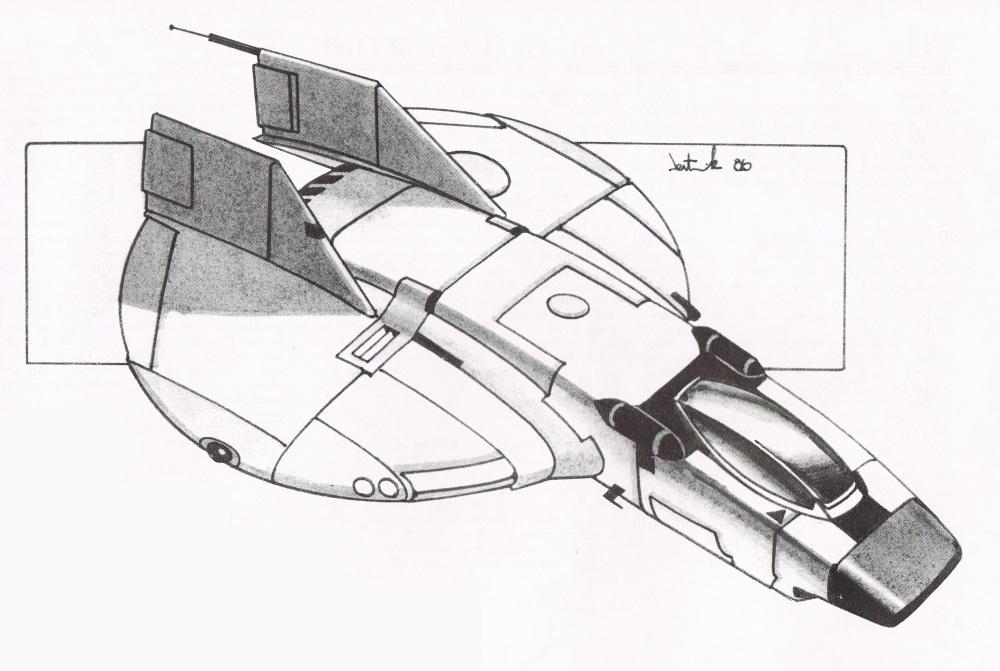
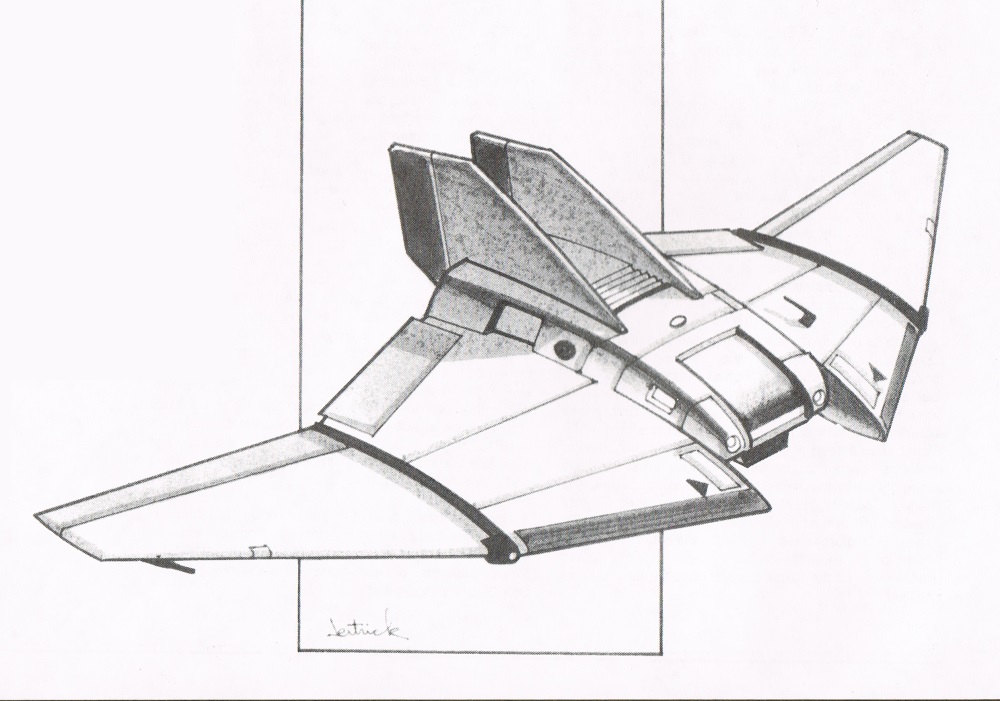
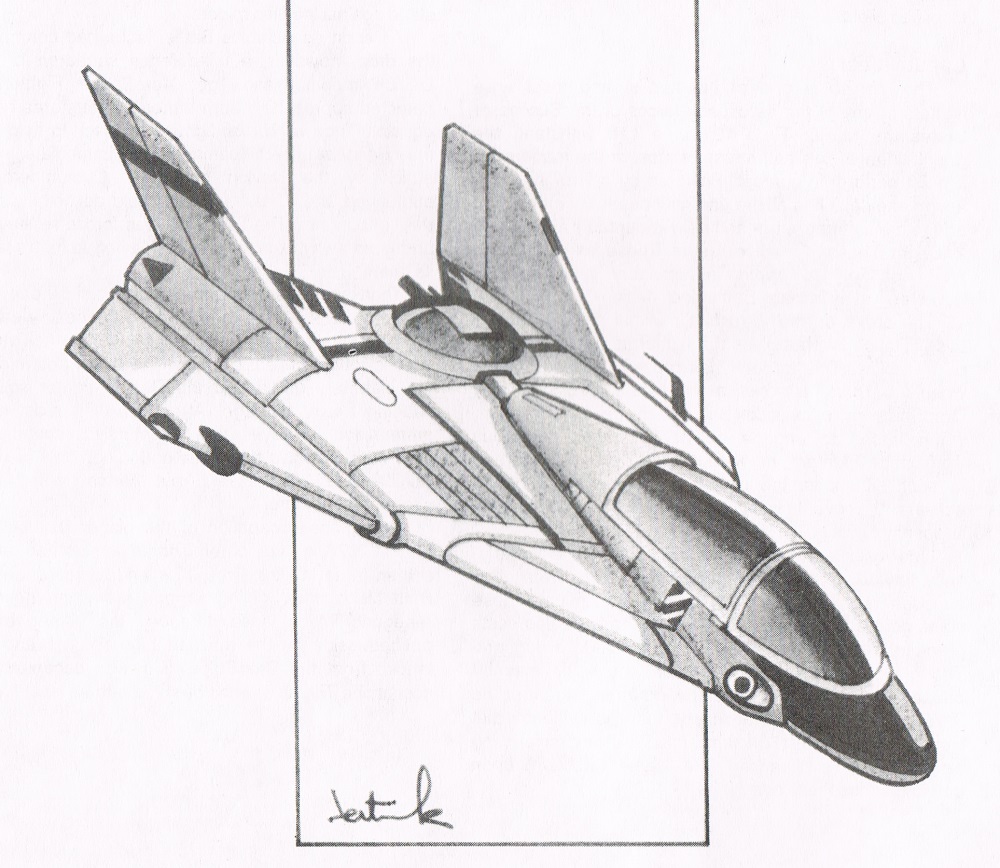
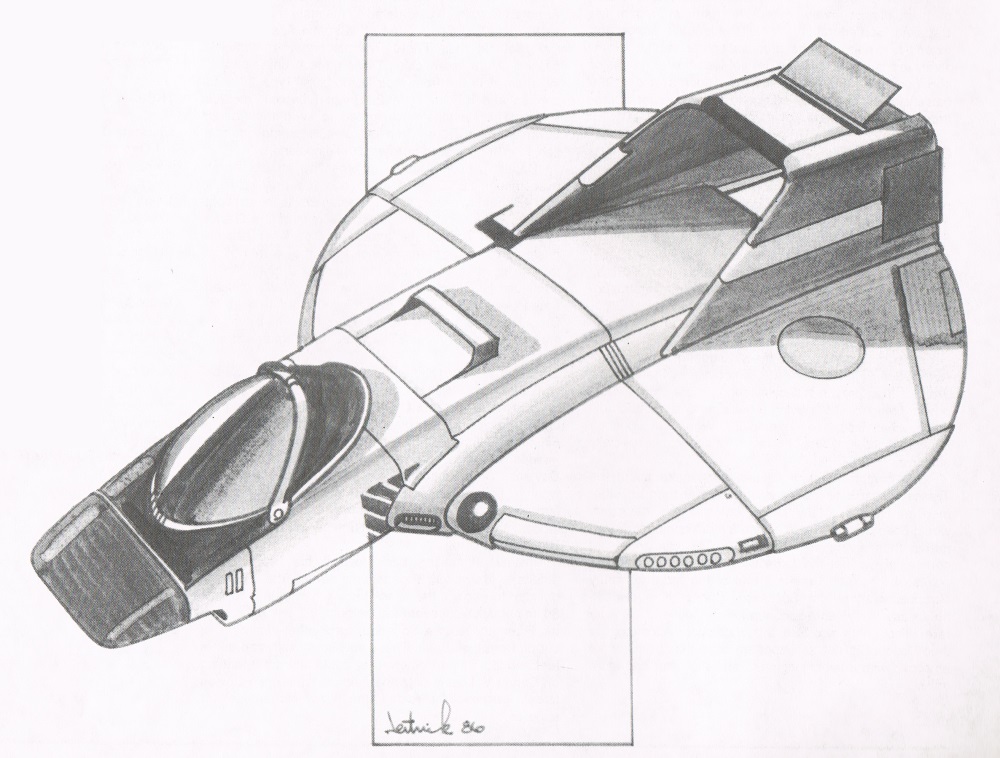
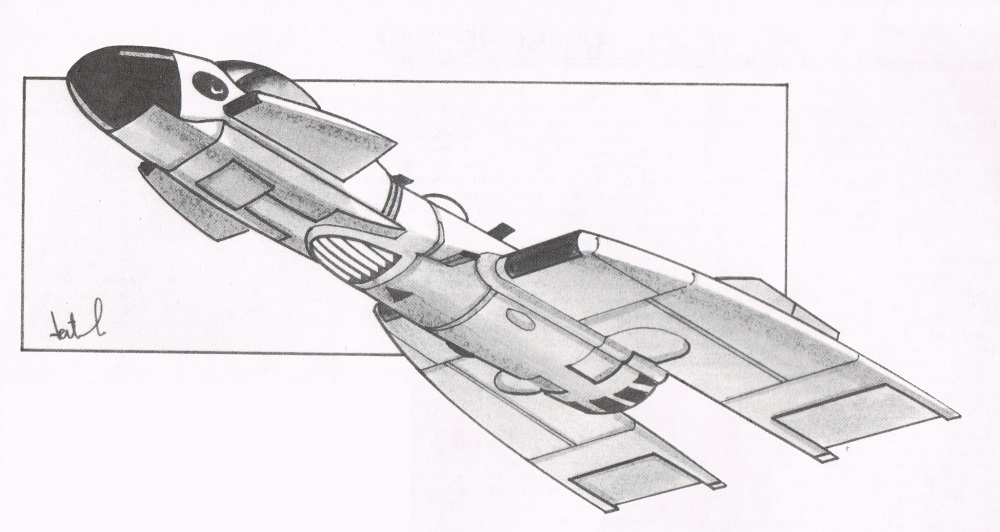
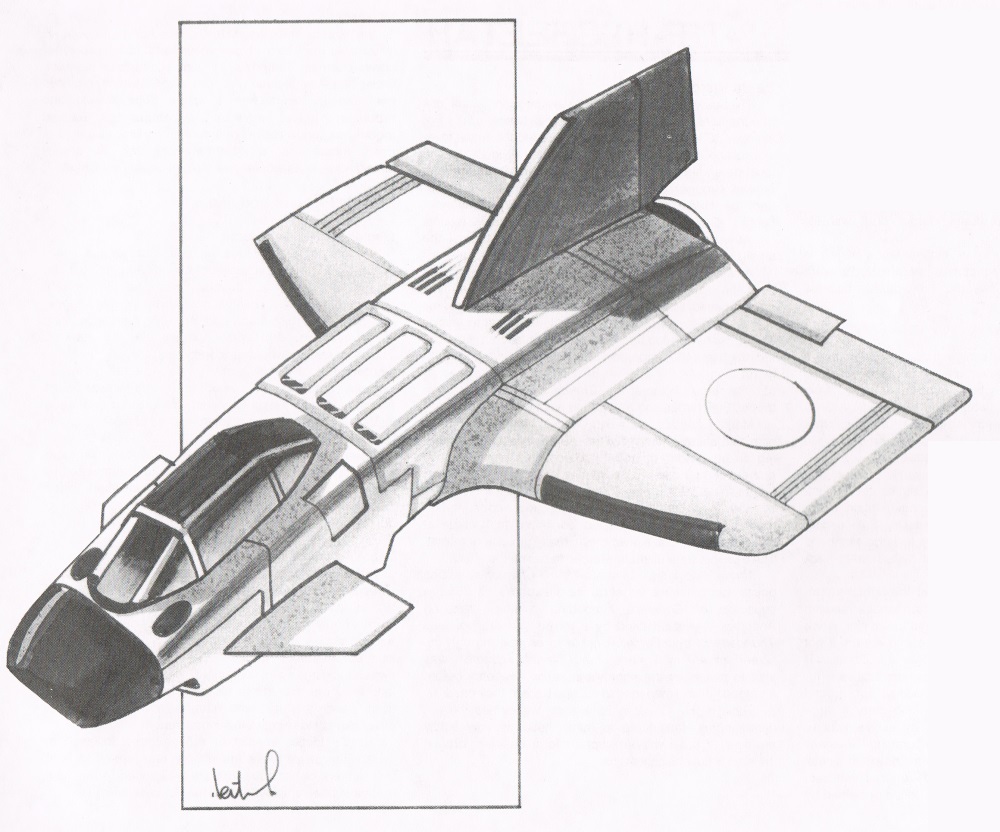
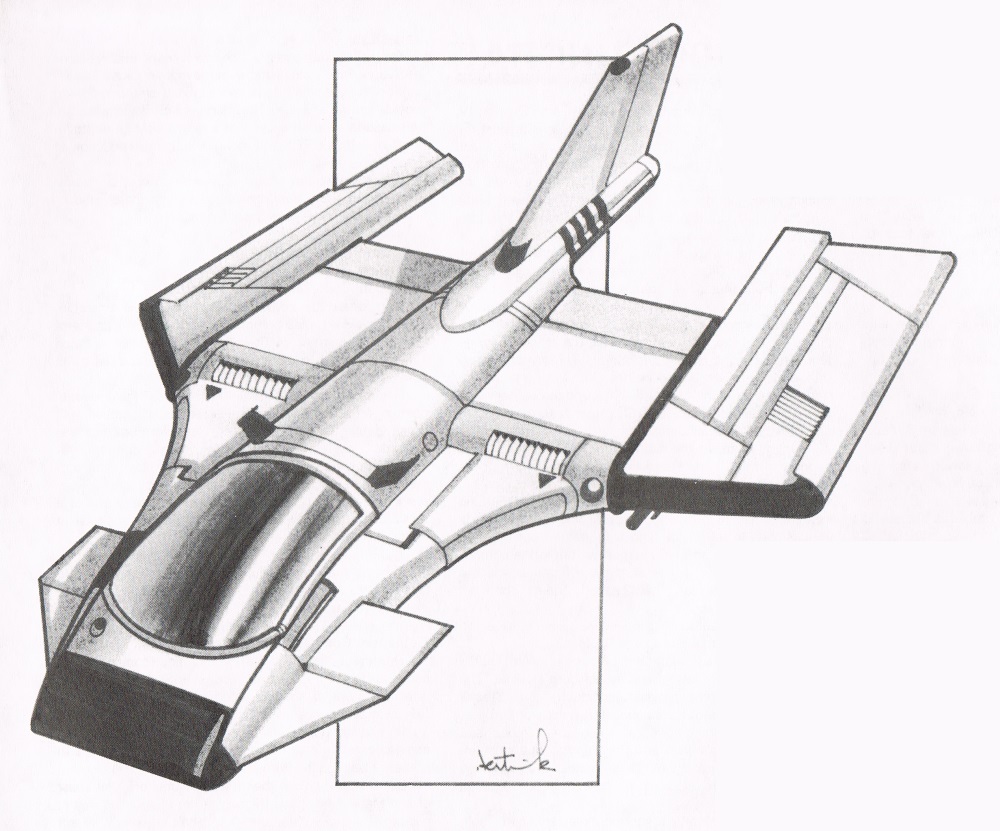
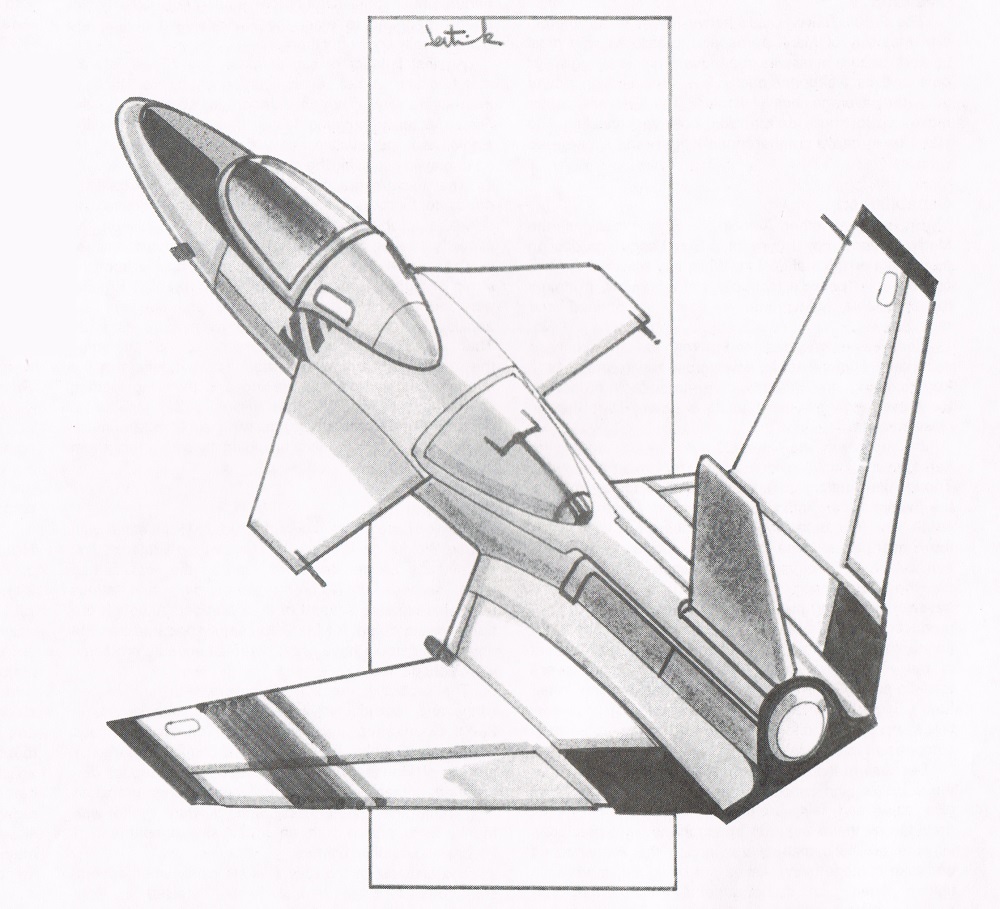
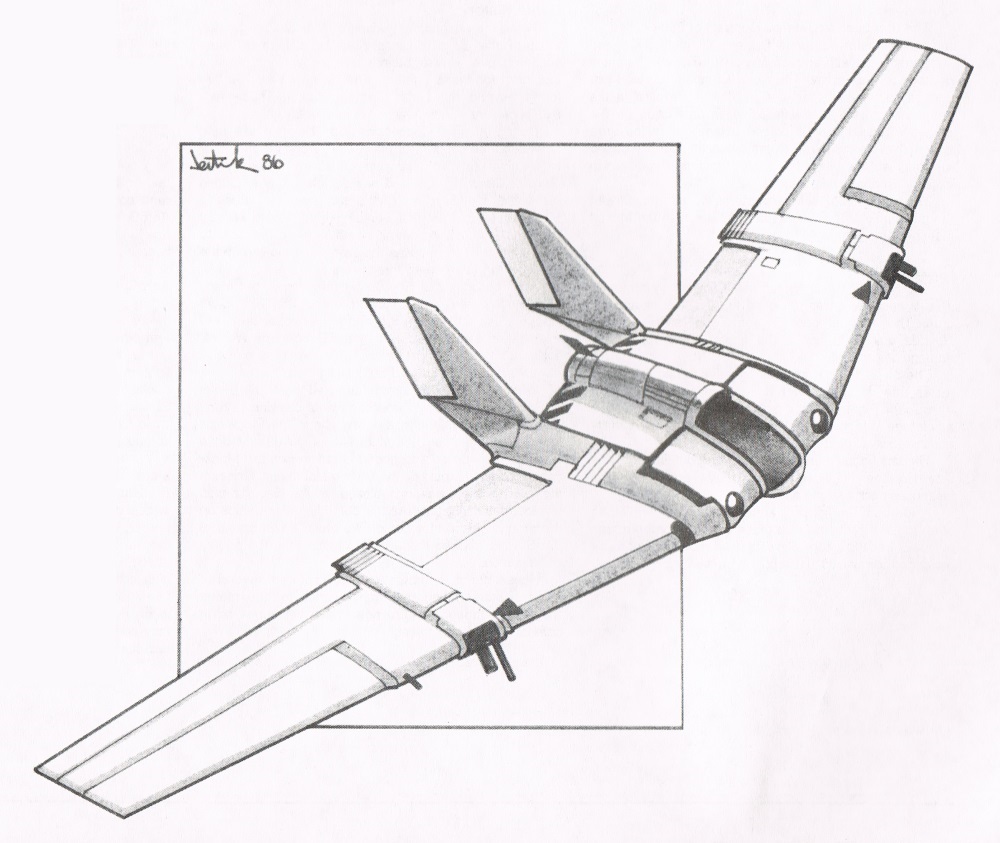
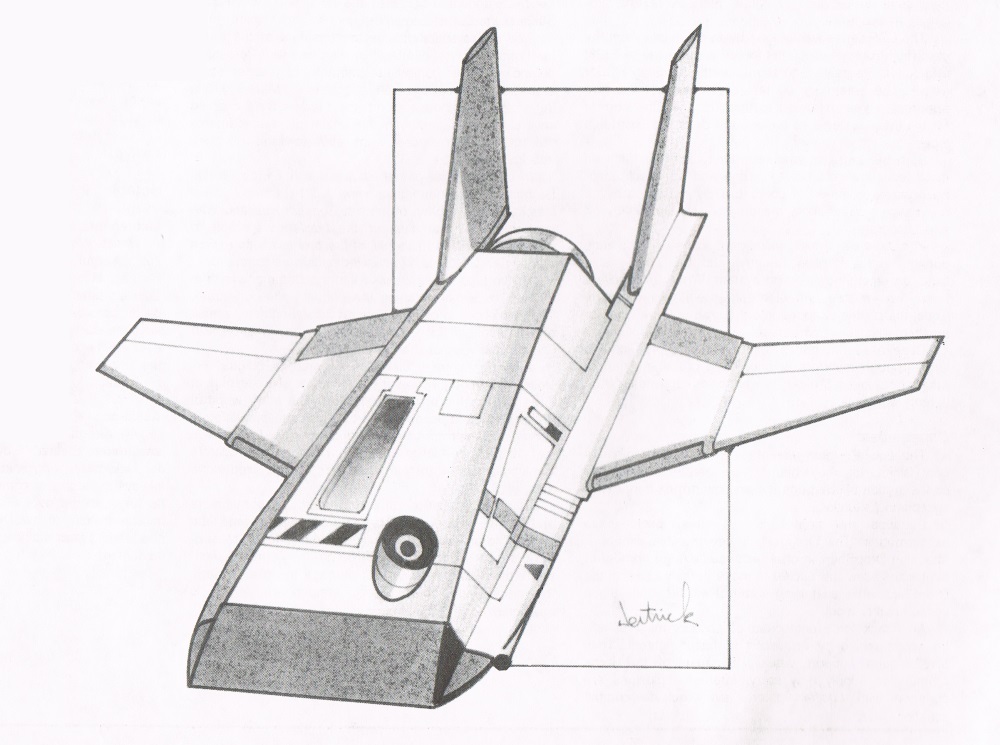
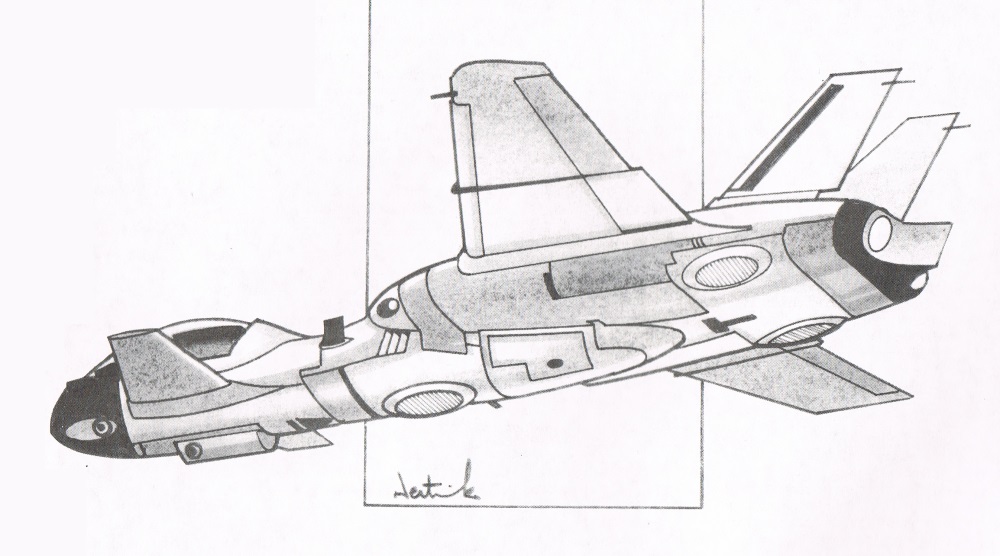
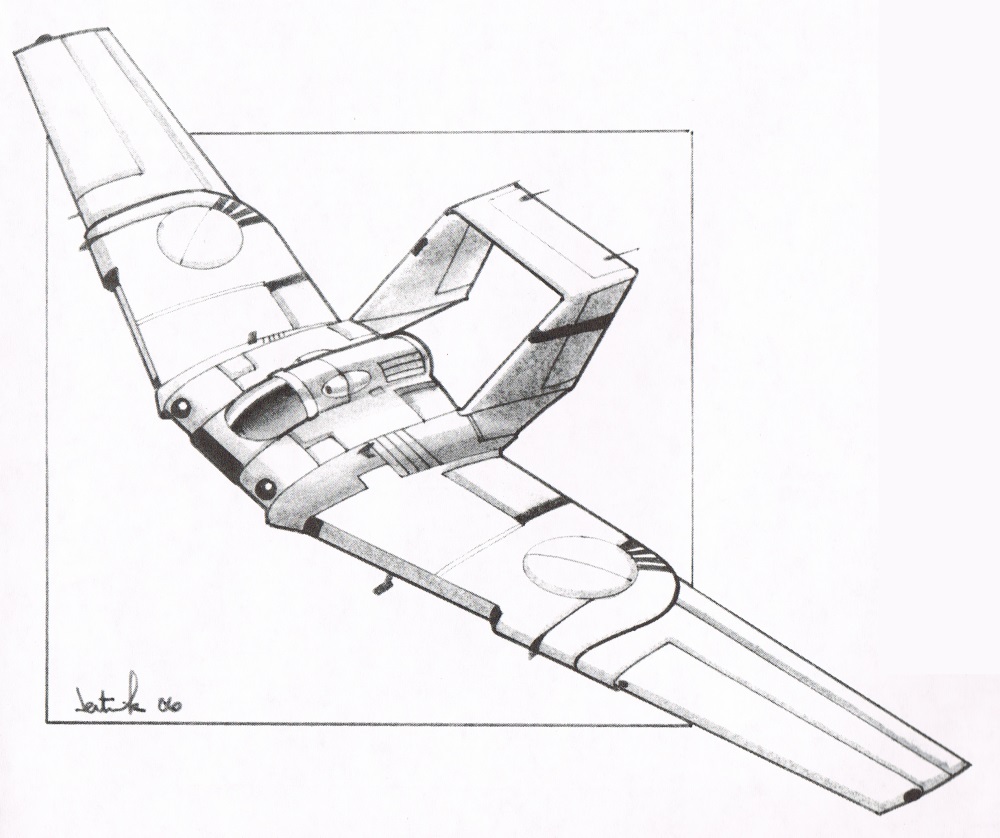
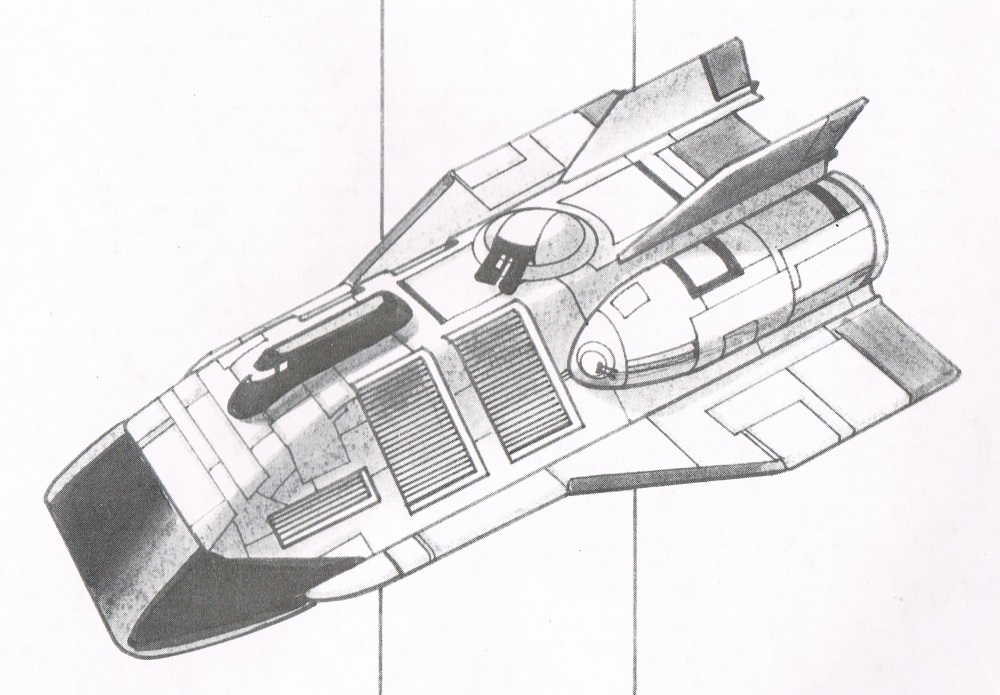
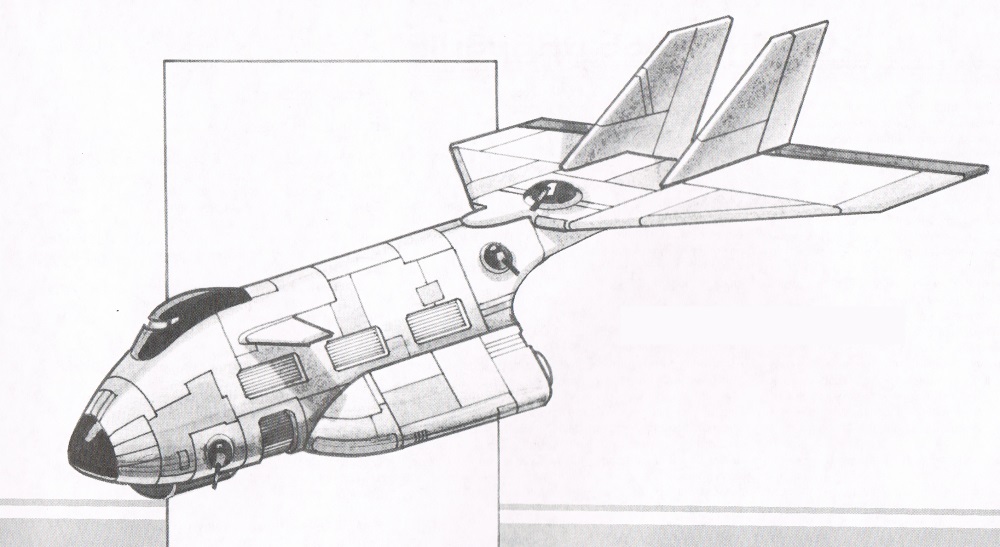
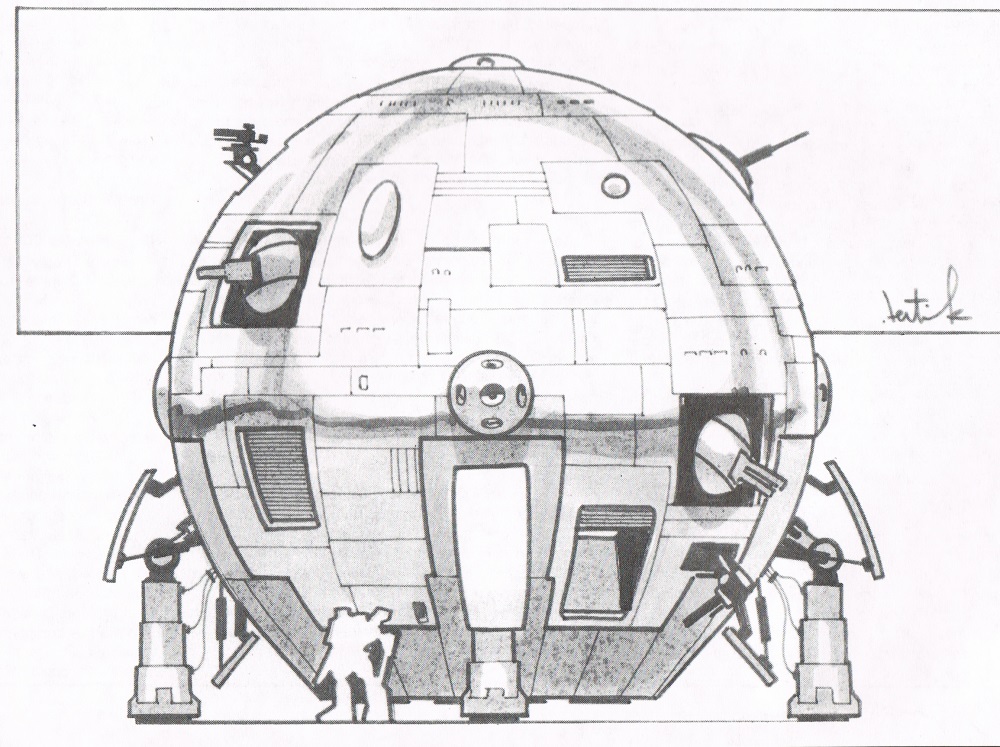
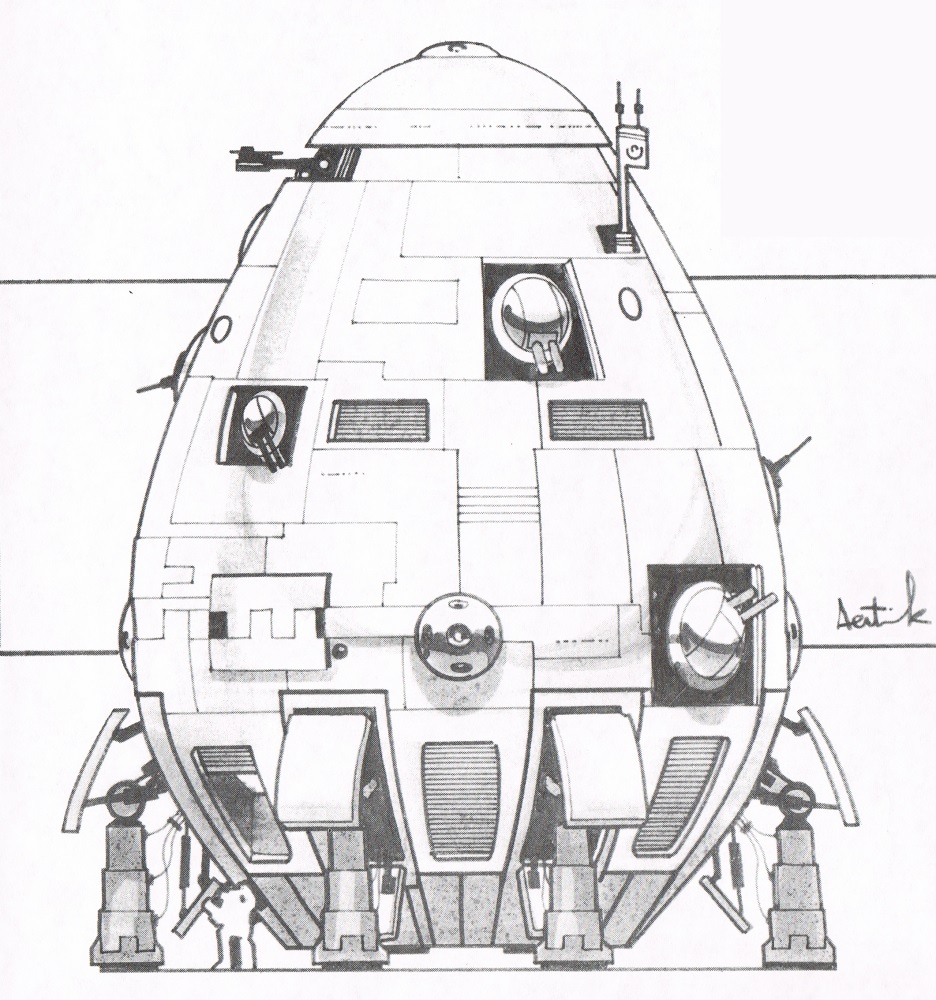
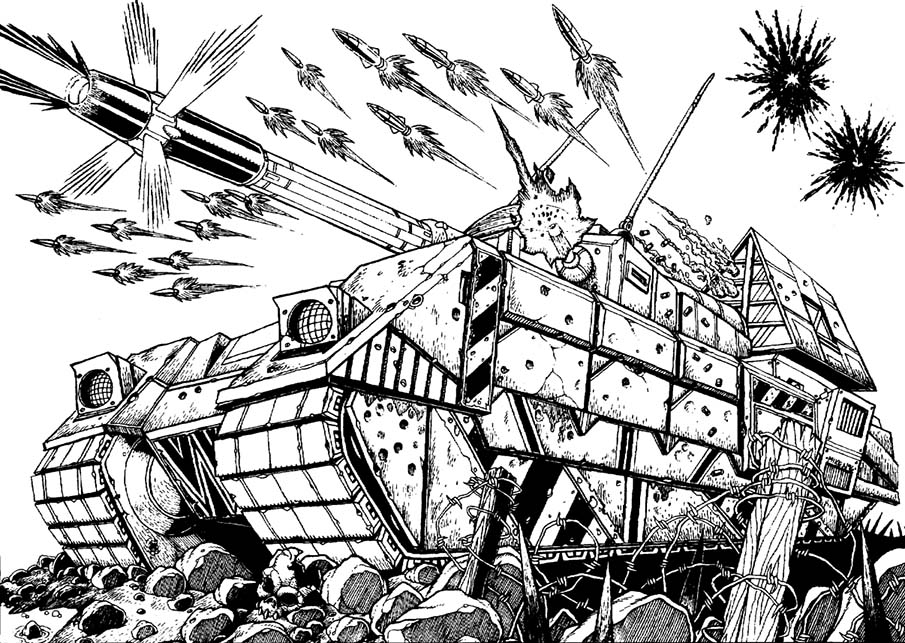
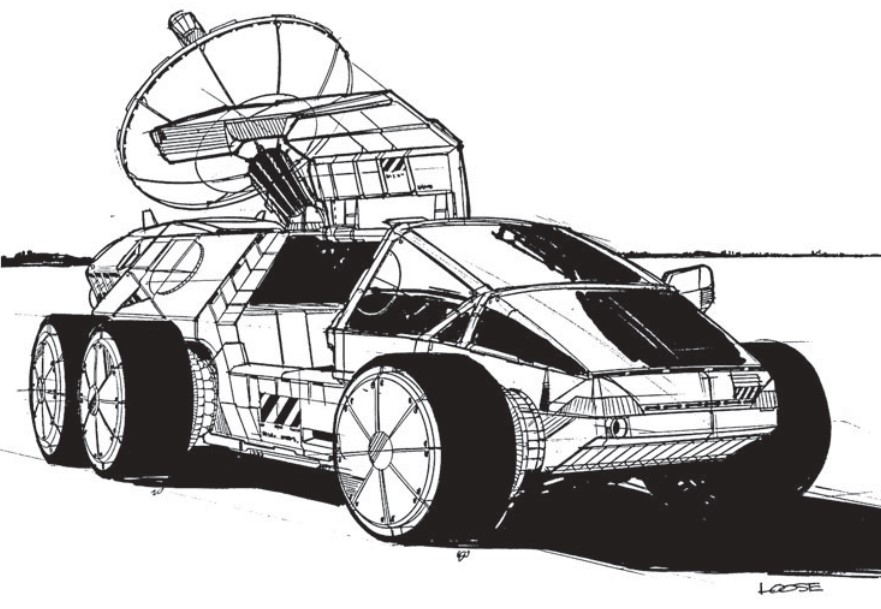
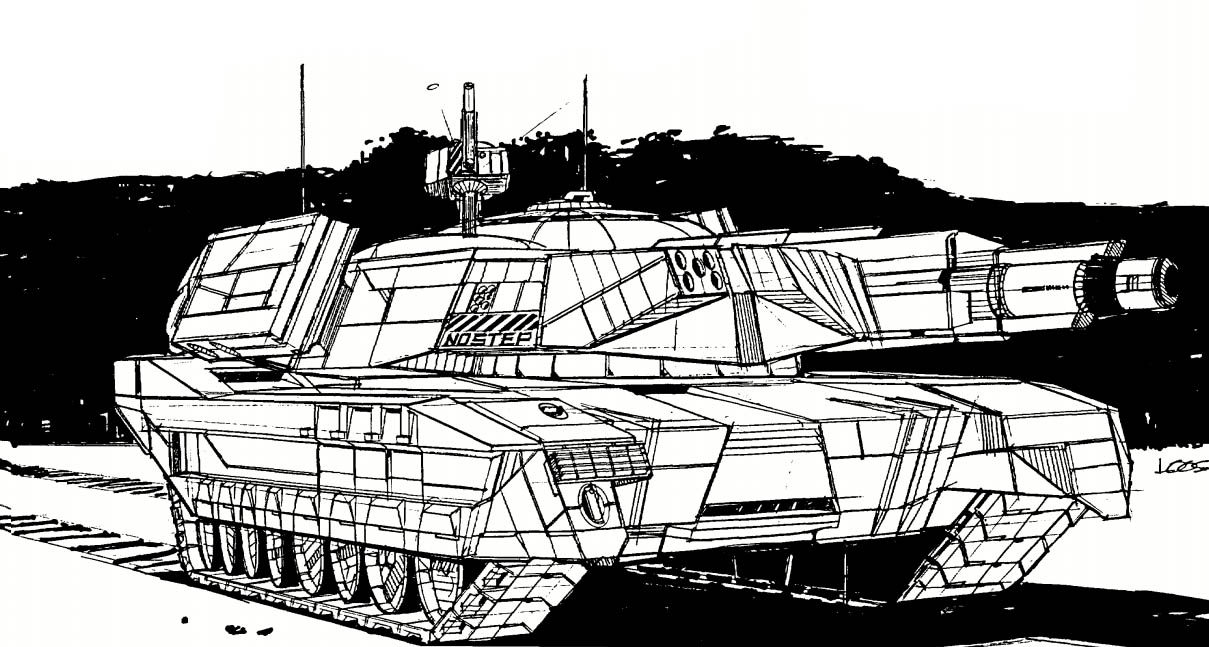
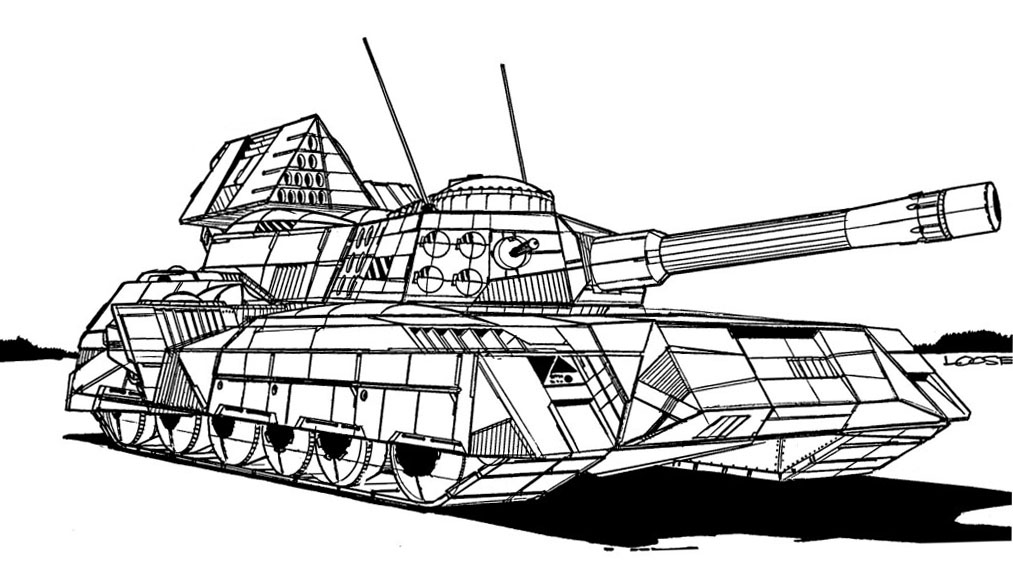
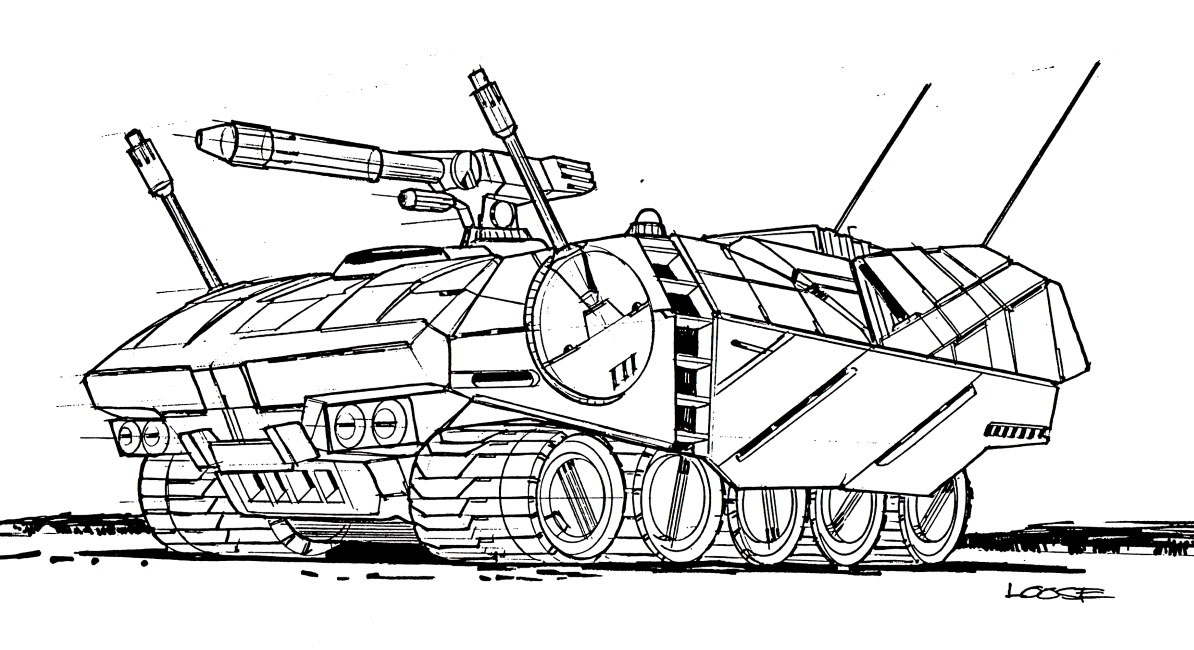
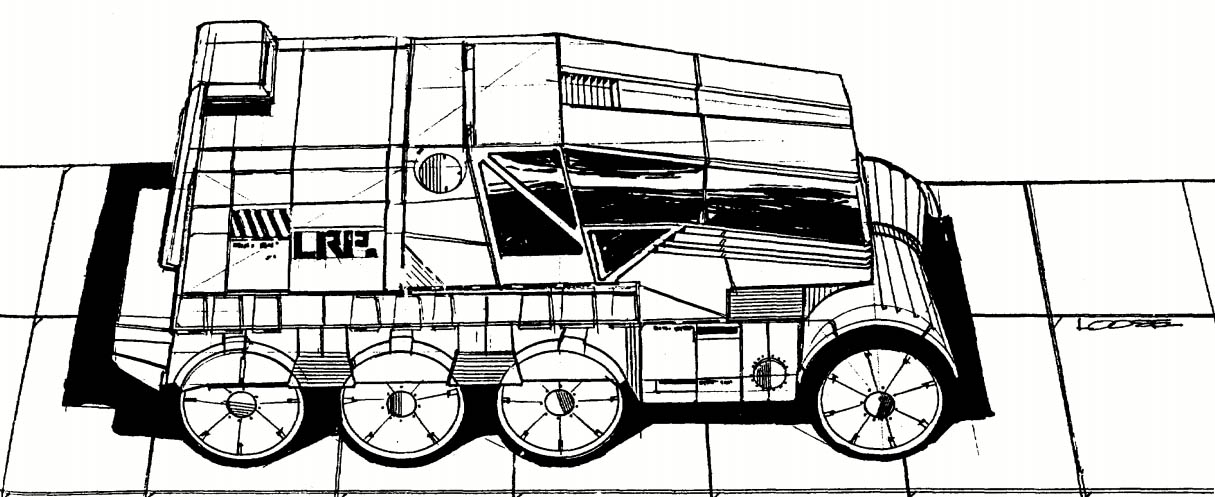
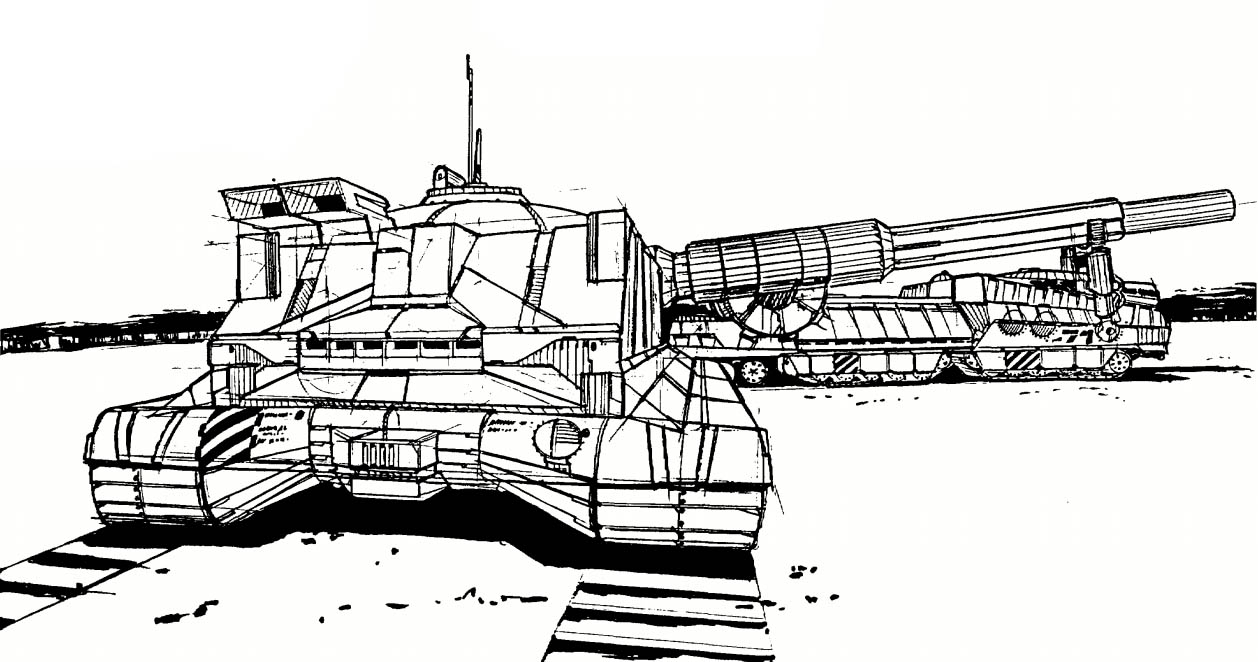
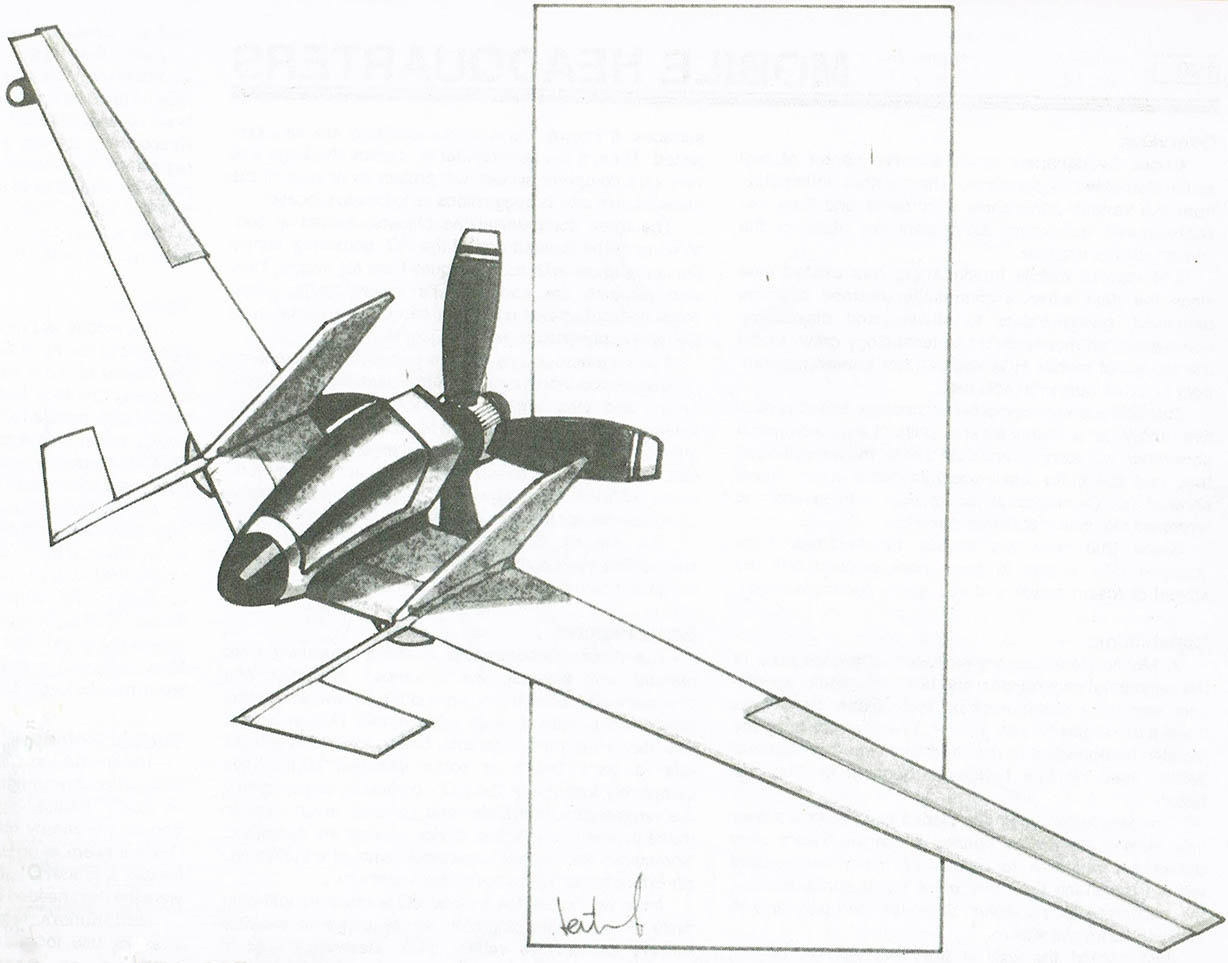
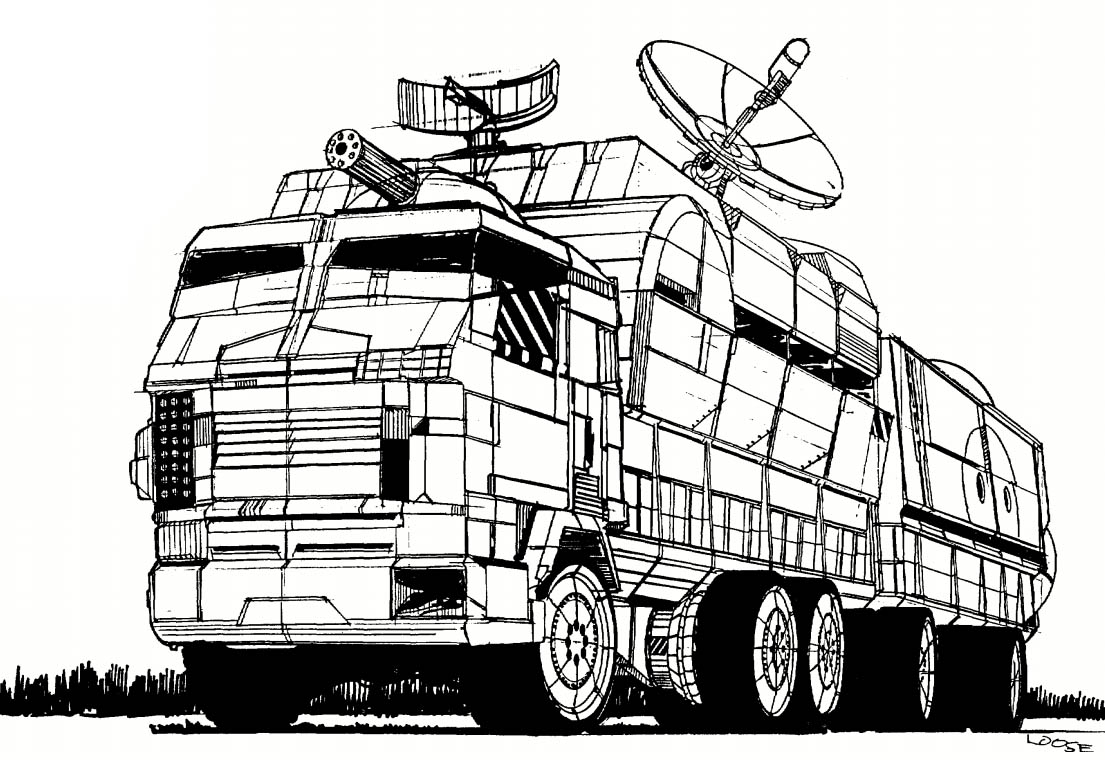
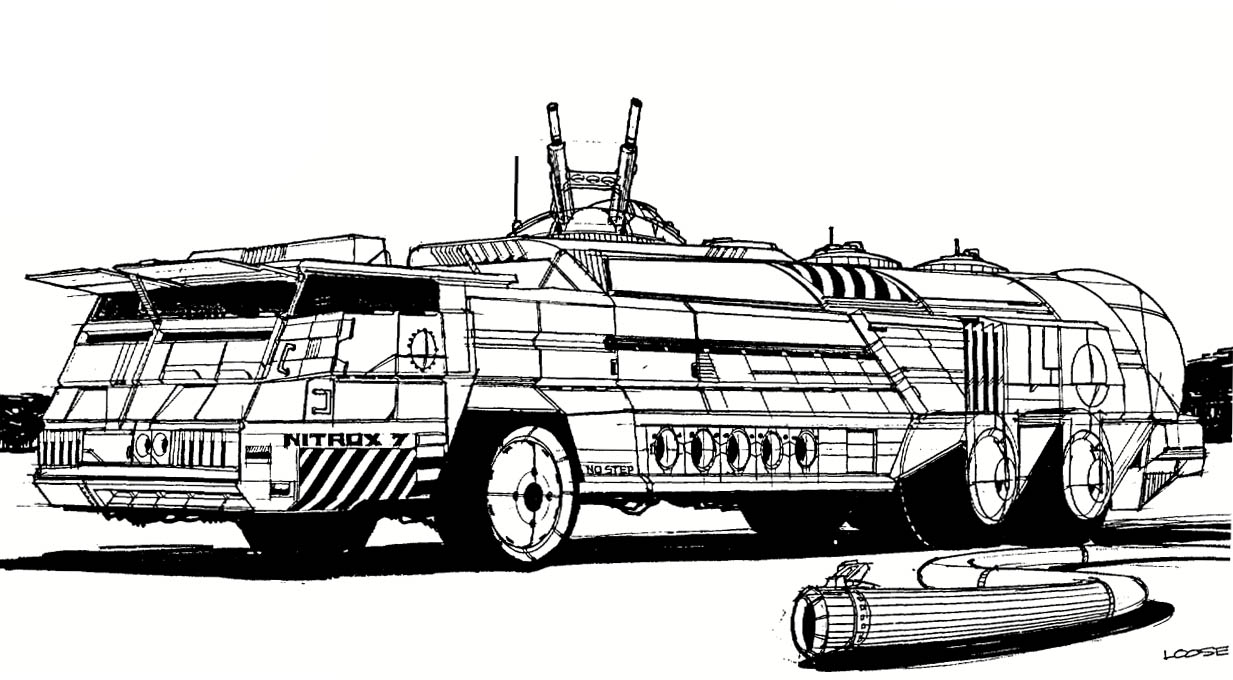
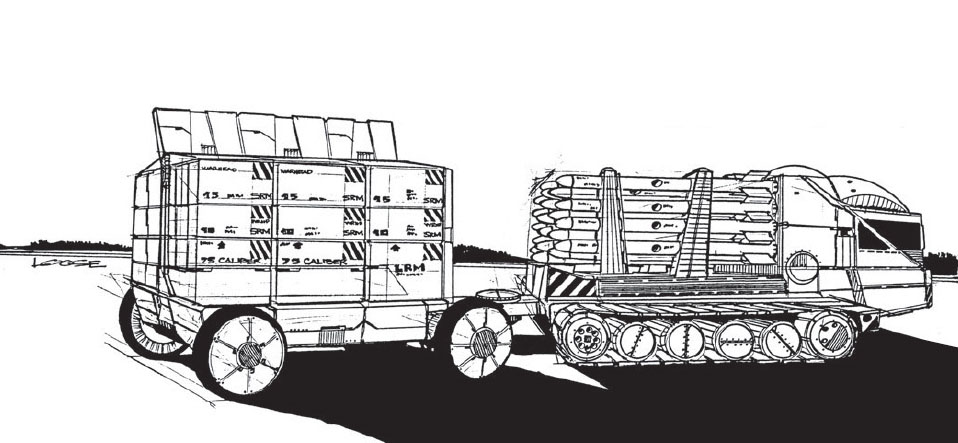
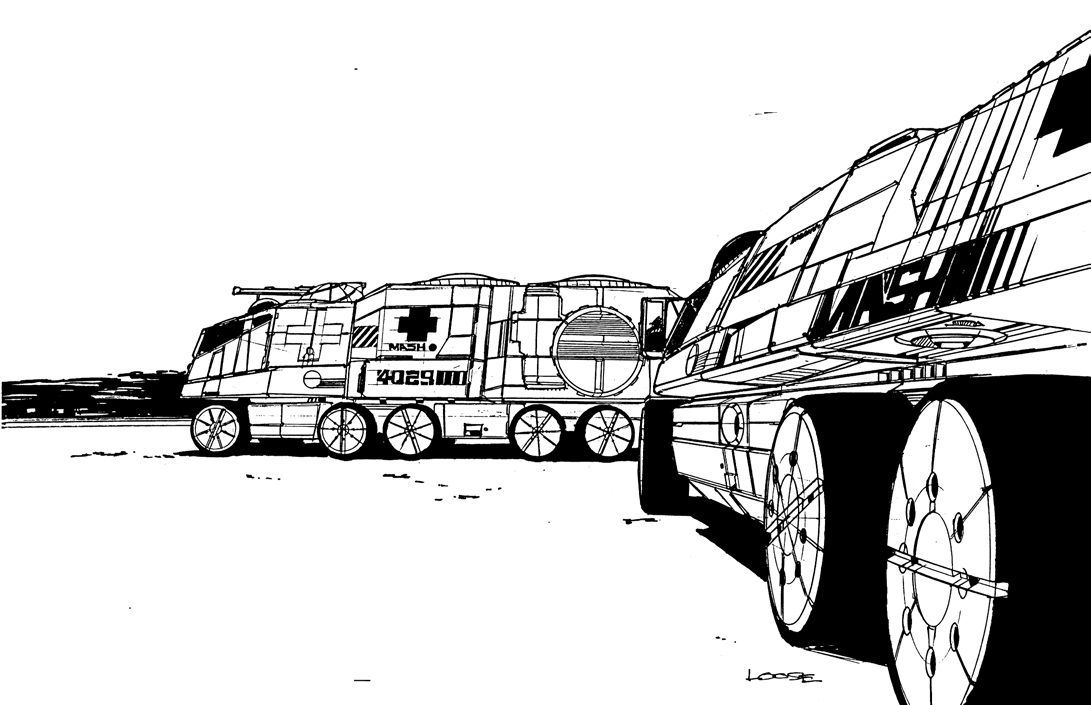
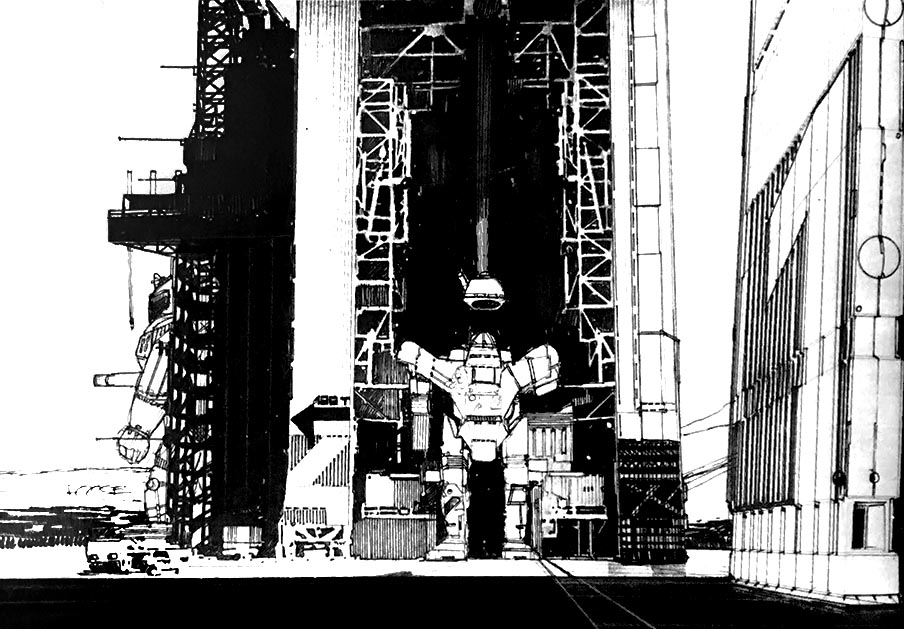
Leave a Reply